As part of the ECG festival in partnership with Orzu arts we are hosting Open Eurasia international art festival in London, UK. Dates 21-26 December, London. Venue details will be up here soon!
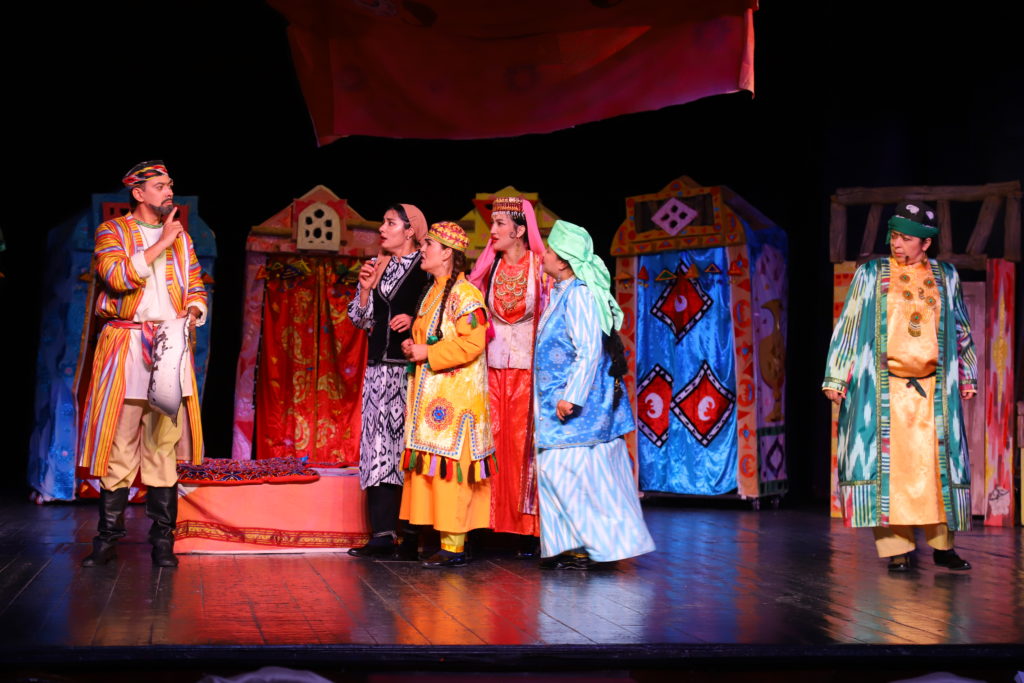
As part of the ECG festival in partnership with Orzu arts we are hosting Open Eurasia international art festival in London, UK. Dates 21-26 December, London. Venue details will be up here soon!

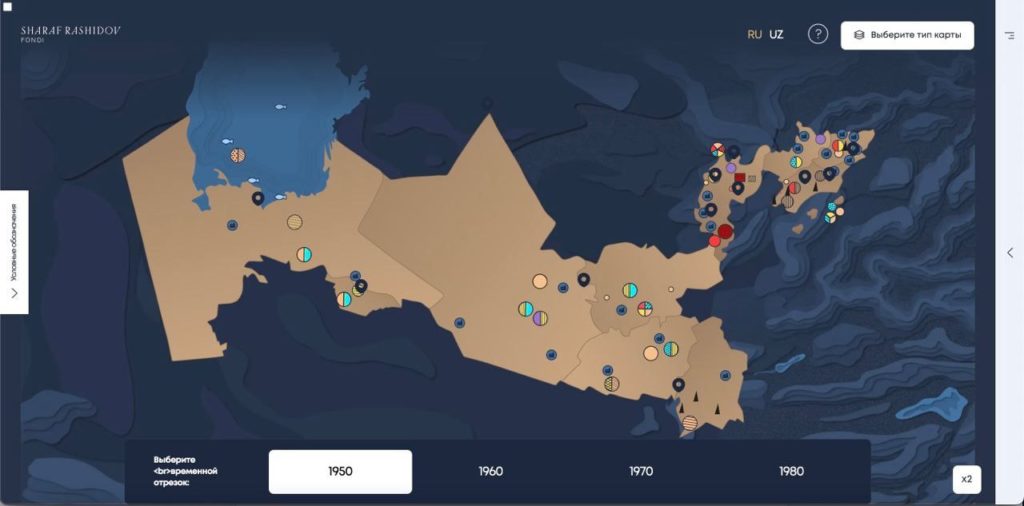
The Interactive Map as a visual documentary database of collective memory about Sharaf Rashidov and how it helps in the educational process.
November 6th, 2022 is the day of the 105th anniversary of the birth of an outstanding statesman, politician and diplomat, poet and writer, who led Uzbekistan in a difficult period, Sharaf Rashidovich Rashidov.
The period of his leadership is considered one of the best in the history of Uzbekistan. He was one of the highly educated intellectuals of the Soviet era, a man who could be called a sign of his time. The phenomenon of Sharaf Rashidov as a talented statesman has yet to be studied.
During his leadership, new industries were created, such as space, chemical, gas, uranium and electronics. The first microelectronics enterprises emerged. 70% of the world’s unique radio telescope RT-70 was built as a result. During this period, about 100 research institutes operated in Uzbekistan. Uzbekistan, under his leadership, has made a huge leap in the development of the economy, science, social sphere and culture. He was the initiator of the organization of the International Conference of Solidarity of Writers of Asia, Africa and Latin America. Sharaf Rashidov opened Uzbekistan to the world, its ancient history, rich spiritual treasures of great enlighteners and scientists, places of pilgrimage. Everything he had done was a solid foundation for an independent Uzbekistan.
In connection with the anniversary celebration, the Sharaf Rashidov Foundation initiated a number of projects, including the project “Interactive Map” – as a visual documentary database of the collective memory of Sharaf Rashidov and his activities, which was developed together with a Russian company “Creative Team”.
The Foundation’s goal was to show the work of Sharaf Rashidov as an outstanding statesman, politician and diplomat who led the country during the Soviet period from 1950 to 1983. Sharaf Rashidov was one of the highly educated and intelligent leaders of the Soviet era. Even today, it is difficult to imagine the scope and results of its activities – during this period 9 cities were created from scratch, 37 districts were originated, 3 regions (oblast) and 77 villages were granted the status of city. The Foundation has collected all data from the family’s public, private and personal archives to examine the real scope of its activities. This are a unique footage of film chronicles, photographs, interviews with eyewitnesses of the development of new lands. The project differs from the existing historical electronic databases in that it is an interactive form with historical information on a graphical basis. The platform is a kind of reference. It presents data on that era and activities of Sharaf Rashidov from the 1950s to the 1980s, and the map-scheme shows administrative boundaries – cities, regions, villages, and economy. The project is a good visual aid for studying the new history of Uzbekistan for the younger generation.
July 29, 2022 in Samarkand State University named after Sh. Rashidova the presentation of the Interactive Map was held. It was donated to the University for the further use in their educational process. In the future, the Fund plans to increase the functionality of the project and to provide the public access to it.
Author and Project Manager: Muminov Iskandar Talibovich, a chartered geographer, graduated from the Tashkent State University, specializing in Geography. Author and co-author of more than 45 scientific publications. He worked in the Research Institute of Space Instrumentation, National University of Uzbekistan.
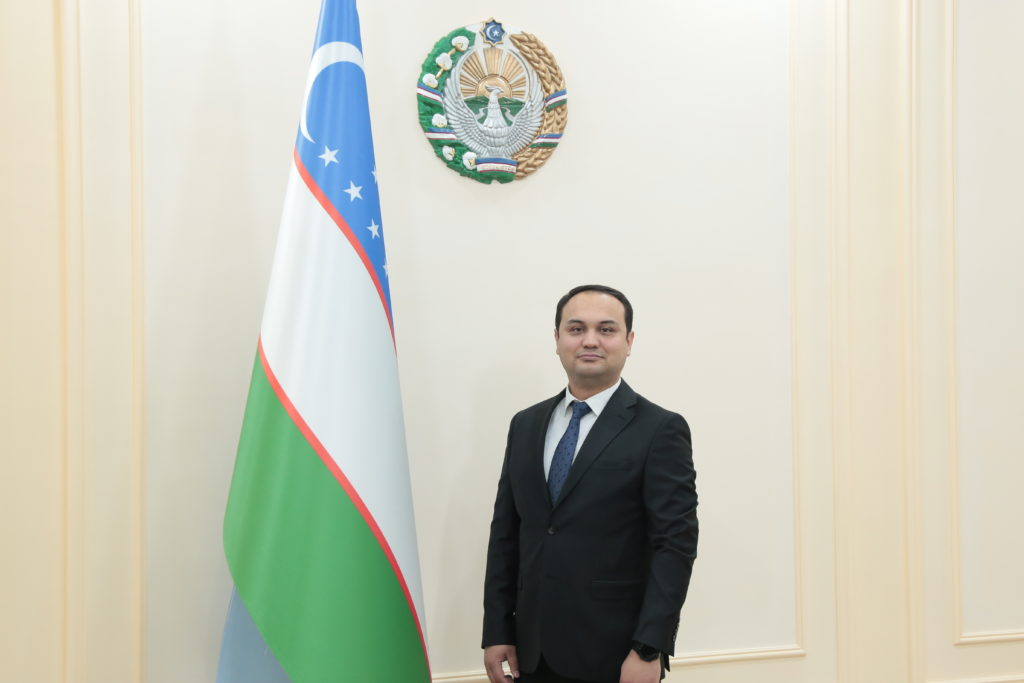
TUIT: Convergence of digital technologies in education
… In order to achieve progress, we must master digital knowledge and modern information technologies. It will allow us to traverse along the shortest route of progress. Since, at present the information technologies are deeply penetrating all spheres in the world … (Shavkat Mirziyoyev, Address by the President of the Republic of Uzbekistan Shavkat Mirziyoyev to the Oliy Majlis (January, 2020))
In the Age of the Race of Tech Giants, it is sometimes easy to lose the sight of the meaning of more and more modern technologies being developed. In the technical world, the directions are so closely intertwined that it is not uncommon for disputes between professionals to determine the primary source of technology development. In all this boundless whirlpool of knowledge, the goal of the educational institution is to distribute the boundaries clearly, develop a logical chain, a methodology for optimal explanation to the student, and at the same time introduce additions and updates to the curriculum in a timely manner, and also, taking into account the availability of new technologies, be able to integrate them into the educational process to improve the quality of education.
Tashkent University of Information Technologies named after Muhammad al-Khwarizmi (TUIT), founded in 1955, provides educational services both in the classical form of education and in the modern interpretation of the approach to learning. For its long history, TUIT is a university that sets standards and requirements in IT-education of the Republic of Uzbekistan, based on the rapid development of technology in the world community. Introducing world experience and interpreting it taking into account the strategic regional goals, TUIT pursues ambitious ideas in the near future to transform into a Central Asian scientific and educational IT-HUB.
Over the last decade of the 21st century, TUIT has brought up dozens of generations of highly qualified specialists, modernizing curricula and developing new directions that meet the requirements of the world standards of its time. Pursuing the goal of strategic territorial development of the Republic of Uzbekistan, the university made tremendous effort to fill the need for sufficient number of highly qualified IT-personnel in every corner of the country, opening branches in such cities as Nukus, Urgench, Samarkand, Karshi, Fergana and Nurafshan. Moreover, the Nurafshan branch is in the process of implementing a scientific and educational IT-cluster, which provides an opportunity to train highly qualified personnel, taking into account global trends in the IT-market.
Dominance of TUIT in the transition to the credit system (ECTS) is the result of special attention to the quality of education in the preparation of IT specialists and close interaction with foreign training systems. This approach opened up wide opportunities for cooperation both at the student level and in the faculty focus, which made it possible to unlock the potential of the university in the global educational and research community. Throughout the activities of the university, versatile cooperation with international organizations in various directions has been achieved, in particular, in 2019, a project with JICA worth more than one and a half million US dollars was successfully implemented and introduced into the educational process; in 2020, despite the economic crisis during the global COVID-19 pandemic, the university and the Samarkand branch, in cooperation with KOICA, developed an integrated SMART UNIVERSITY system worth more than 3 million US dollars; in 2021, in the Fergana branch, in cooperation with NIA, a project was launched to create an INTERNET ACCESS CENTER in the amount of more than 1 million US dollars; in 2022, a joint project with KOICA began to create a startup ecosystem in TUIT worth more than 5 million US dollars. For the first time in the history of the Republic of Uzbekistan, TUIT has become a grandholder of the SPACECOM project under the Erasmus+ EU program in the amount of about 1 million euros.
To meet the demand of society in the rapidly developing IT-sector of the Republic of Uzbekistan, TUIT makes maximum efforts to create new opportunities for both students and academic staff. In this regard, three new educational buildings, sports complex were put into operation within three years, and extensive work is underway to increase the total capacity of university dormitories.
The challenge of a new technological revolution requires higher education to provide quality education taking into account the global trend, which has led TUIT to pay special attention not only to maintain the existing good infrastructure and the availability of highly qualified personnel but also to cooperation in creating new educational programs, including the development of new educational content and scientific laboratories, such as Artificial Intelligence, Robotics, and Mechatronics, Data Science, Internet of Things, etc.
Today, one of the more productive forms of learning in the context of digital transformation is the use of distance learning technologies that allow scaling the learning process regardless of territorial affiliation or language differences. At TUIT, the academies of world leaders in the IT-industry, such as CISCO, ORACLE, and HUAWEI, are available to students and scientific applicants for the implementation of distance learning. Moreover, TUIT is one of the first universities in the Republic of Uzbekistan to develop a distance learning system for its students.
To increase the quality and quantity of innovative projects created among talented youth, TUIT has become an advanced University that has opened an incubation and acceleration center that creates favorable conditions for the emergence of effective small innovative projects that implement original scientific and technical ideas of students.
Quality education is primarily based on the study of the theoretical part and only then the application of the theoretical base in practice. TUIT has its own educational and methodological database, which is constantly updated in paper and electronic form. For the convenience of the student at the university, the opportunity is provided to study both in traditional form in libraries and via the INTERNET network using any electronic device, which allows the student to connect to the university’s electronic library from any place convenient for him. In addition, TUIT has organized information and resource centers that provide a wide range of free services for all university students.
Ensuring the future, Education provides an intangible value that will allow us to solve any problems in the current or future reality. World events that are rapidly developing at the interstate level today show how important it is to raise a generation that knows all the intricacies of its profession and is able to creatively approach the solution of issues where the IT sphere is a sphere that has become a link at all levels of development and interaction.
Tashkent University of Information Technologies named after Muhammad al-Khwarizmi has always pursued the goal of providing the Republic of Uzbekistan with the most advanced personnel in the field of ICT, and more recently, strategic plans have been scaled to the Central Asian region. The University, on the way to achieving its goals, always keeps the doors open for the modern generation and will become a close mentor who will lead his ward by the hand to the highest achievements for the benefit of the whole country and the whole world as a whole!
Rector of Tashkent University of Information Technologies named after Muhammad al-Khwarizmi:
Makhkamov Bakhtiyor Shukhratovich
Doctor of economic sciences, Professor

QUALITY ASSESSMENT OF PRESCHOOL EDUCATION IN RUSSIA
Disclaimer: this article is based on the author’s personal experience of 10 years working in the educational system of Russia and represents the personal opinion.
The question of assessing the quality of education itself is not new. However, in the period “before FES” (Federal Education Standart), almost all methods were aimed specifically at assessing the quality of education (or rather, the “level” of education) of educational programs recipients (students). Of course, in addition to academic performance, many other things were assessed within the legislative framework, but it was carried out in close correlation with the number and quality of educational achievements of the students.
THEORY OF SYSTEMS
Now the FES has made the orientation towards the achievements of preschool children meaningless (but maybe for schools it’s not so unequivocally). Therefore, we are no longer talking about assessing the quality of education as a product, but about assessing the quality of the functioning of the education system. In addition, the understanding of what the “system” is in general and the education system in particular also lies in the field of fundamental research and theoretical research. And, from the point of view of a preschool teacher-practice, the entire conceptual base (system theory) doesn’t refer to his daily work at all. The same can be said for most practice managers.
It’s obvious that the system is a plurality of elements in communication with each other, which forms a certain integrity, unity. It is also clear that the sum of the system elements is not equal to the system itself (as the parts of LEGO in the box are not a building), and that the state of the system depends on the state of each of its elements (if the car’s engine breaks, the entire car stops driving). In theory, everything is logical, and there are no problems. However, in practice, a systematic approach is being implemented with difficulty.
PROFESSION OF THE FUTURE
In the period “before FES”, the education system most closely resembled a certain production line aimed at creating such a product as a “successful specialist”. From the moment of admission to an educational institution (kindergarten or elementary school), the child’s path along this conveyor began. And periodic knowledge testing and other diagnostics replaced the industrial quality control procedure.
The FES changed everything. Firstly, it determined that the educational process is not a technological cycle, but the result of the relationship of its participants: children, their parents, teachers, social partners, experts, agents of the sphere, etc. So the educational process itself goes into a state of constant dynamics based on the development of the relationship of living beings. Secondly, the FES shifted its focus from the list of directly educational tasks to creating conditions for the deployment of the educational process. As a result, we get a classic definition of an ecosystem – a biological system consisting of a community of living organisms, their habitat, a system of connections that exchanges matter and energy between them. So maybe the manager of the educational organization should be more of an engineer for the restoration (and development) of ecosystems (one of the top required professions in the future), and not an administrator?
“LIEBIG’S BARREL”
Since it is possible to assume that the field of education is a kind of ecosystem, we can also conclude that it is also subject to the law of the limiting factor (Liebig’s law of minimum), which says that the factor that deviates most from the optimal value is most significant for the body. If it is easier to explain, then the ecosystem will collapse if it is too hot/cold/dry/wet/dark/sunny, etc. This law was formulated by the German chemist Justus von Liebig, and a figurative representation of this law is named after the scientist – the so-called “Liebig’s barrel”.
The essence is that when filling the barrel, water begins to overflow through the smallest board in the barrel, and the length of the remaining boards no longer matters. The role of the limiter can be taken by any factor (one or more), while this role can move from factor to factor, including in a circle. If one or more factors make a sharp qualitative jump, then the rest accept the position of the limiter. For example, if in kindergarten there are wonderful teachers with a salary quite average in the region, but the building and equipment are too old, then the environment will become the limiting factor. Let’s say this kindergarten won a grant, or maybe someone came to power who decided to re-equip preschool institutions, and in the kindergarten they made repairs and brought the most modern equipment. Teachers don’t know how and therefore are afraid to work with new equipment. Now the role of the limiter is played by the low (relative to the environment) level of competence of teachers (and, possibly, managers). When the teaching staff undergoes training and increases its qualification level, begins to use new means of implementing the educational program, the environment really “works,” but now highly qualified teachers don’t want to work for the “average” salary. There are, of course, many more such factors in the education system, but it seems that at the moment there is simply no clear description of this ecosystem and its internal ties.
TECHNOLOGY MIGRATION
One of the brightest global trends of the last ten years is the phenomenon of technology migration. For example, the transfer of the principles of biology to the technical sphere led to an attempt to create AI based on a neural network (repeat the concept of the brain in hardware). Technology is “migrating” from one area of human activity to another at an ever-increasing rate. This is mainly due to the fact that the development of global information networks has accelerated access to almost any data source. Now people, on average, once every 5-7 years (and this period is decreasing to every 3-5 years) change not only the place of work, but also the industry, and technologies often “migrate” together with their “carriers”. Therefore, a new formation of “successful specialists” appears – specialists who are trained and retrained all their lives. If our parents and previous generations grew up in the paradigm of accumulative specialty (the longer a person works in one industry, the more experience he has, the more valuable he is as a specialist), and our generation followed the path of adaptive specialty (gaining experience in the course of constantly changing activities and trying to understand which is now better), then the generation of millennials (Z-generation) no longer makes sense to consider from the standpoint of the specialist at all.
They have a different attitude to the choice of educational strategy, since they know for sure (or, in any case, feel) that they will have to retrain in their professional life and radically change the professional sphere at least three to four times. This is a generation of metamorphic specialists who don’t so much adapt to new conditions as change in accordance with the requirements of the profession. How is this related to kindergartens? First, metamorphism requires a free, flexible and thinking person with a rich imagination and the ability to analyze and synthesize. It is known that the “backbone” of the main mental processes is formed in preschool age. Secondly, the teacher is also a specialist. And the field of education is also permeable to “external” technologies. And metamorphic teachers are already showing themselves to be more successful in their work than their “mono-profile” colleagues.
by Taina Kaunis
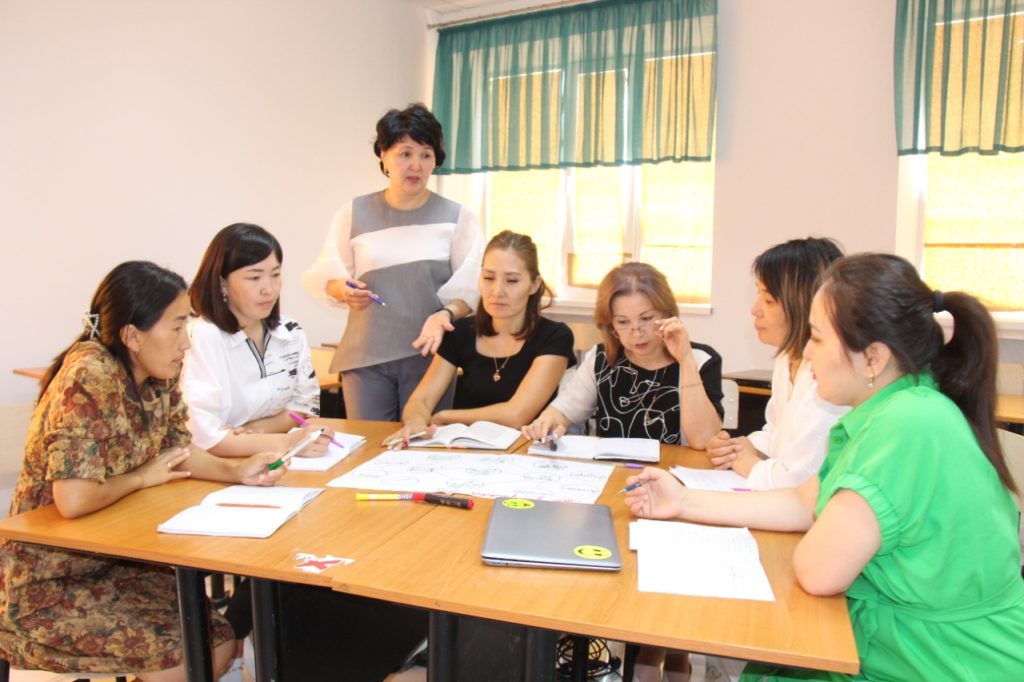
The qualification of the teaching community
The responsible work to strengthen the independence of Kazakhstan and to develop high spirituality and citizenship in the country is through education. The problem of organizing such a large-scale work is first of all closely related to the comprehensive retraining of teachers. The experience until today shows that the goal can be achieved only if the improvement of their qualifications is carried out in a controlled manner. Currently, all the necessary conditions are being created to improve the profession of the national intelligentsia, which will shape the new face of the society, and to awaken the sense of humanity.
Educating the young generation to spiritual morality, creating new educational content that contributes to the formation of their world-class, worldview, mastery of the basics of knowledge and skills is an urgent problem in the general education system.
Today, teachers are given the opportunity to selectively use new technologies and freely use the results of their own methodological creative research. Today, teachers contribute to the enrichment of educational content by turning advanced technology into an excellent experience.
Raising the qualification of the teaching community to such a level and improving their knowledge is directly related to the institute of professional development.
Systematic improvement of the professional skills of teachers, thus opening the way for comprehensive creative search, pointing the direction, creating conditions required the original entrepreneurial spirit of the institute team.
This process was the main goal of the work plan of the “Institute of Professional Development in Atyrau region” branch of “Orleu” BAU” JSC, which has left its 70-year history behind today.
The Systematic work organized by the institute is showing its results. The implementation of creative works aimed at satisfying the needs of life and human needs in the education system of our region and the best experience had a great impact on creating positive changes. Because the successes we are proud of in the field of general education are primarily due to the hard work of our teachers, who devoted all their energy and knowledge to the interests of the people and the education of the young generation. At the same time, the implementation of the planned work of the institute, which directly contributes to the dissemination of their experience and further their strengths.
In addition to the organization of various professional development courses, methodological consulting services and methodological support of teachers were not included in the agenda.
According to the order No. 56 of the Atyrau Regional Board of Education dated February 14, 2002, the Regional Institute for Improving the Education of Teachers in accordance with the needs of the times is called the Atyrau Regional Institute for Improving the Qualification and Retraining of Personnel. This period made the issue of support in the system of improving the qualifications of school teachers more central.
Of course, time does not stand still. News, changes in the years after the country’s independence, during the period when the country entered the world-class education system, the requirements for the employees of the industry, the system of actions to be performed and the system of actions were changed and renewed.
However, it is also true that regardless of the changes, the activity of the institute was a strong foundation in the methodical provision of the continuously developing general secondary education system. Learning from the past, and at the beginning of the new period, the search, education and qualification of teachers on the way to the country’s world-class status is the most important issue.
Adapting the educational work in educational organizations to a new content, clarifying the goal of education in the form of expected results, technologicalization, information, creating and improving the content of the scientific and methodological complex in accordance with the chosen direction and forming the innovative orientation of the team. If there are urgent issues, the work of the institute is directed towards these goals.
Guided by the changes and requirements in the system of education and training, joint and cooperative work with the teachers of the region is being systematically carried out according to the plan.
Today’s requirement is to improve the work of teachers in the field of professional innovation and methodical direction, to improve their qualifications in accordance with changes in life, to form a professional personality, to contribute to the improvement of the quality of work carried out outside the classroom, and to increase the activity of pedagogical social activities.
The methodical work of the institute is based on the achievements of science and pedagogical excellence and the state of improvement that is suitable for the specific time requirements of educational work. A system of interrelated actions and measures aimed at comprehensively improving the qualifications and professional skills of each teacher. The regularly implemented measures are aimed at developing the educational potential of regional teachers and increasing their qualifications, improving their scientific creativity.
In cooperation with the institute team, large-scale work will be carried out in the direction of increasing the level of competitiveness, forming professionals suitable for a changing society, analyzing and collecting information on domestic and foreign experience in the organization of educational methodological support in the system of professional development.
by professor Munbaev N.S. and director of the Atyrau Branch of JSC “Orleu” – Nurtleouva J.A

Implementing the European standard in foreign language teaching through cooperative and collaborative learning
The main purpose of learning a foreign language in higher education in the current conditions of development of higher education, is the development of communicative competence of students, as a result of which the future specialist should master communicative language competencies for the needs of their future practical activity. In particular, teaching English, which has become the language of world communicative interaction, is still characterized by the traditional principles of teaching reading, writing, speaking, listening, called in the methodology “communicative-oriented and person-oriented”.
It should be noted that there are theoretical and practical developments in the development of foreign-language communicative competence, which are in line with modern research of both European and domestic theorists and practitioners. The modern didactic concept is created by such approaches as programmed, problem-based learning, developmental learning (P. Galperin, L. Zankov, V. Davydov), cognitive psychology (J. Bruner), pedagogical technology, pedagogy of cooperation of the innovative teachers of the 80s. Currently, in the field of didactics of foreign language teaching, the attention of domestic scientists is directed to the problems of implementing the European standard in teaching a foreign language. And it requires new approaches to the professional activity of the teacher for successful interaction with the learner, in the conditions of new innovative strategies in foreign language teaching.
Innovative methods are primarily aimed at teaching students active ways of acquiring new knowledge, at mastering a higher level of social activity, and at stimulating students’ creative abilities. Thus, bringing learning closer to the practice of everyday life through the creation of such conditions when students cannot fail to learn, and they form not only skills, knowledge and abilities in the subject, but also an active life position. This is ideally the case.
It should be emphasised in particular that higher education institutions in the Kyrgyz Republic are studying according to the Bologna system. This means that foreign language teaching should also be based on the new principles of foreign language teaching, as is customary in European higher education institutions that are part of the same system.
In almost all EU countries foreign language teaching is based on standards that develop the basic principles of European competences (A Common European Framework of Reference for Languages Learning, Teaching, Assessment. Strasbourg, 1986. P. 94). Consequently, textbooks from various European publishers are oriented towards these standards. Using Oxford University Press and other world leading publishers’ teaching and learning packages, teachers widely use this system of teaching aimed at effective communicative skills development for children and adults. And, accordingly, the system of control and testing of communicative skills and competences is subordinated to these standards.
Each country works according to its own educational state standards of teaching, its own curricula, textbooks and has a varying degree of material and technical provision. Therefore, it is not correct to talk about the full implementation of European standards in teaching foreign languages in our general secondary schools and higher educational institutions, the common European competence in foreign language teaching. We can only speak about the possibilities of using some elements of these standards, because in general these competences have also been developed by domestic scientists and practitioners, but in a different terminology and on the basis of other approaches (see the history of development of didactics and foreign language teaching methodology in the Soviet time, post-Soviet time in the CIS countries; state standards in education).
As of today, the English language teaching methodology has accumulated quite an extensive variety of books and manuals dealing with different aspects of the theoretical aspects of teaching. At the same time, there is an acute shortage of practice-oriented textbooks and teaching materials that would provide effective assistance to the beginer teachers, particularly English teachers, in mastering the didactic foundations for teaching basic communication skills and the skills of writing, speaking, listening.
Also. Our country is entering a new paradigm of education (academic freedom, the credit-hour system, integrated courses, the system of teaching quality assessment and other innovative approaches, orientation towards practical mastery of communicative skills), which requires improving the educational system in accordance with the new realities of the economy and politics. This applies, above all, to the content and methods of training in higher education institutions. Perhaps a gradual reorientation to a new role of the teacher as a subject in the educational process, owning new innovative technologies and training strategies in the role of teacher-consultant, teacher-tutor, teacher-facilitator, teacher-moderator – will be an effective mechanism for transition to the new paradigm of education. That is, it is a question of re-training a teacher who would correspond to the new approaches of learning. The special peculiarity of which is the reproductive way of cognizing objective reality. It cannot be said that teachers do not use certain modern technologies in the process of teaching foreign languages. So, one of them to some extent finds its application (acquisition, generalization, systematization, transformation and application of knowledge of abilities, skills and competences) – RP-technology of pedagogical interaction, or otherwise, corporate culture of a teacher.
But, now European scholars argue that technologies are being replaced by learning strategies [see materials of the Council of Europe for Education], with the learning process itself being aligned in the following steps: 1. Analysis – analysis of the learning environment, learners and learning objectives. 2. Design – making a plan for developing pedagogical activities. 3. Development – designing the pedagogical activity. 4. Implementation – implementation of the strategy. Evaluation – evaluation of the performance of the learners and the effectiveness of the strategy. Consequently, the determining factor in the strategy is – to produce learning outcomes, i.e. to produce learning. (*Notice in our methodology, learning is – to provide, support, facilitate the acquisition of new knowledge (cumulative system).
The introduction of new learning strategies in which the student becomes the main active subject and who with the help of a teacher-moderator (tutor, etc.) has any set of actions, steps, plans for receiving, storing, accessing and using information (learning) is still going on fragmentarily (so far only in short-term language courses). This strategy has accordingly its own organisational chart, system of roles and incentives, technologies and methods, tools and new communication networks. The educational process itself is based on the Experiential Learning Model proposed by David A. Kolb and his colleagues at Case Western Reserve University in the professional activities of project organisations. Kolb’s (1984) cyclical model is based on the idea of “learning by doing”. Learning consists of repetitive “doing” and “thinking” phases, as one cannot learn anything effectively by simply studying theory or listening to lectures, but neither can learning where new actions are performed mindlessly, without analysis and debriefing. Specificity of the model: any of the 4 processes (experimentation, reflection, theorising, action) can start a cycle of learning.
Therefore, special ways of implementation are needed for such strategies.
Cooperative learning (achievement of intellectual autonomy of the student/learner and developed social competence) is an effective way of implementing a partnership learning strategy. The second most important strategy is collaborative learning (knowledge as consensus) based on the concepts of knowledge management. These strategies act as oppositions to the adopted domestic methodology, a trained result due to a highly structured learning situation (artificial).
The essence of modeling cooperative learning of English is to implement the following fundamental components of the Numbered Heads Together technique: the first component is positive interdependence. Every student who received his or her part of the task realised that the good result achieved was the result of the cooperative interaction between every member of the group. The second component of cooperative learning is structured individual responsibility. Explanation of each student’s own text. The third component is students encouraging each other’s success (helping, supporting, facilitating, approving). Emphasis is placed on the way the problem is solved. The fourth component of cooperative learning is teaching students the necessary social skills and how to use them. Successful cooperative efforts require the development of social skills such as leadership, trust building, and decision making. The fifth component is to ensure that students have time to engage in the group process (minimising time spent presenting topics).
Collaborative learning strategies are based on the following components: collaboration, individual responsibility for their own learning and that of their teammates, social constructivism, and a point of interaction that creates the opportunity for collaboration in a given course context. Didactic methods: Strategy for describing the flow of the process. In the first phase, students work on a process flow description strategy and learn how to do it properly. Then there is a stage of development of students’ collaborative work. Then the collaborative learning technique “Exploration” is involved. To begin with, the teacher explains to the students how to conduct research. The main aim of this technique is to impart the skills of collaboration, cooperation, mutual understanding and compromise, common ground, development of communication competences, speaking and listening.
Thus, the teacher does not present knowledge in a finished version, but it emerges as a result of the students and the teacher working together.
As a result, the teacher is an equal member of the educational process, unlike cooperative learning, where he or she plays a more significant role.
Abdrakhmanova Raisa Dzholdoshevna,
Professor of the Department of Linguistics of IUCA, PhD
abdrakhmanova_r@iuca.kg
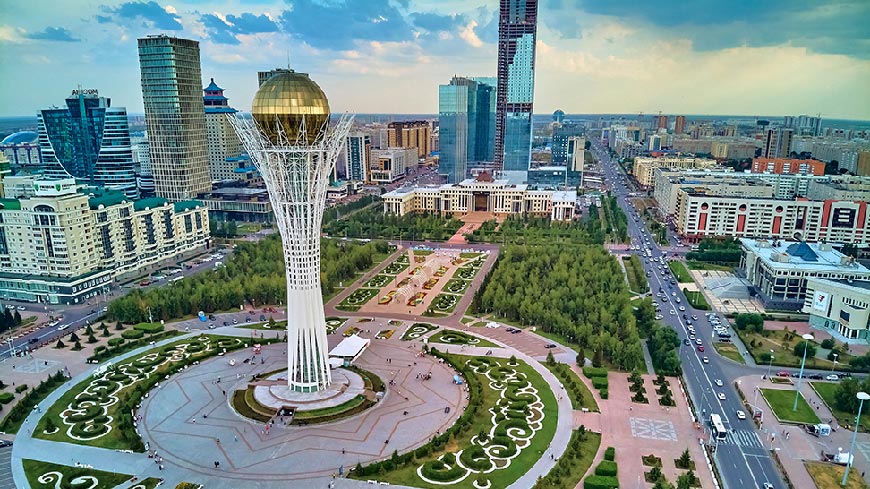
To change or not to change: time to decide
For decades, Central Asian countries were establishing their national systems of education. Their primary task was to transform from mostly Russian language-based programs, teachers, and materials to national language-based ones. The second type of reform was implemented to embrace the new views on education goals: schools didn’t have to give knowledge anymore, but provide students with tools for independent learning. The third task was to slide smoothly into the global digitalization trend and not lag behind forever.
However, there are a number of social trends that if not addressed can become real obstacles to the further development of Central Asian countries. In this article we will discuss the main three of them.
The steady growth of the child population together with the limited financing opportunities
One of the main trends shaping the status quo in education sphere in Central Asia is the continuing and consistent increase of the child population which leads to the pressure on the socially oriented spheres: primarily, healthcare and education.
According to World bank data, the share of population aged 0-14 in Kazakhstan and Uzbekistan makes up to 29%, in Kyrgyzstan – 33%, and in Tajikistan – 37%.
The rapid growth of “human capital”, however, is not accompanied by the relevant financing. Government expenditure on education per student in Kazakhstan is around 1,500 US dollars, in Kyrgyzstan – 366 US dollars, and in Uzbekistan – 476 US dollars while in OECD countries this indicator is 11,000 US dollars on average.
This results in a lack of schools, a shortage of quality teachers, and poor learning conditions. Each year around 500-800 thousand new students come to the schools that are not ready to accept so many of them. The situation is much worse in big cities, and especially, in capitals of the Central Asian countries where some schoolchildren have to study in classes of around 40 people. According to official data, while the average number of students per school in regions of Uzbekistan ranges from 400 to 700 people, there are 1,300 students per school in Tashkent. The same difference can be traced in Kyrgyzstan, Kazakhstan, and Tajikistan.
The poverty trap and emerging educational inequality
Most studies show that one of the main factors affecting children’s academic accomplishments is their socio-economic status. It not only means that there are gadgets or Internet at home, books or a separate room to prepare homework. It also defines the surroundings, social and cultural capital, and networking possibilities.
Apart from having a big share of households below the poverty line, Central Asian countries have another socio-economic peculiarity – a big share of labor migrants. According to World Bank and International Organization data, Kyrgyzstan and Tajikistan are among the top ten countries that receive the highest payments from abroad. Various sources point out that around 2 million Uzbekistan citizens work outside the country. In recent years, around 35 thousand Kazakhstan citizens migrate to South Korea in search of work, and 12 thousand of them stayed there illegally.
The results of the study in Uzbekistan in 2019 show that in almost a quarter of labor migrants’ families, both parents leave the family, and in each tenth family – it is the mother who goes abroad. Children of the labor migrants left behind have to cope with the learning process alone struggling from psychological and social deprivation caused by the lack of parents around. This doesn’t only affect academic success but also influences the perception of their own future prospects. After graduating from school many young people don’t apply to universities. It led to the situation that in 2019, for example, only 12% of Uzbekistan citizens at the age of 25-29 years obtained higher education.
At the same time, in the capital cities of the CA countries, a new class of wealthy people is emerging whose children usually go to private highly priced schools. The schools are usually more equipped, employ better teachers, and work with internationally recognized educational programs to launch their students right to Europe or the USA. The two worlds: those who struggle outside the country to provide for children, and those sending their children to London for English courses never intersect, though the latter are usually the decision-makers.
High level of conservative views in societies lead to the latent gender inequality
According to the World Values Survey map, Kazakhstan, Kyrgyzstan, Uzbekistan, and Tajikistan can be undoubtedly considered as countries with traditional values. This conclusion is based on the distribution of opinions on a range of issues including the perception of gender roles in the family, and society.
These results show that there is still a strong belief that women should have a secondary supporting role in front of men.
For example, 52% of respondents in Tajikistan and 54% in Kyrgyzstan believe that “A university education is more important for a boy than for a girl”. 50% of Kazakhs, 71% of Kyrgyz, and 87% of Tajiks agree that “When jobs are scarce, men should have more right to a job than women”. In addition, 50% of respondents in Kazakhstan and 75% of respondents in Tajikistan agree that “On the whole, men make better political leaders than women do”.
This widely spread perception influences the education process even in schools. On one hand, girls are usually expected to perform better, because of their obedience, and do perform better, according to PISA. On the other hand, they are more encouraged to engage in household chores from а very young age. A study in Kazakhstan showed that young men at the of 15-29 years spend around 70 minutes a day on household chores, while girls of the same age spend 278 minutes a day. The spare time boys spend on education, networking, and cultural leisure.
Involving young girls in an unpaid domestic labor is a peculiar educative element, because of the perception of them as primarily future wives and mothers. In Central Asia, they even may marry right after school. In Tajikistan, for example, 44% of all marriages are concluded with the brides of 15-19 years, in Kyrgyzstan – 20%, in Kazakhstan – 13,5%.
Conclusion
There are no easy solutions to the above-mentioned problems. However, it is crucial to take them into account when developing policies and strategic plans. Education is the only social elevator not only for individuals, but also for whole countries. Once not addressed properly problems of education will negatively affect all other areas. Thus, in our opinion, first and foremost, a priority to financing schools must be given. Secondly, policies to include and adapt children from poor families and families of labor migrants need to be developed. As for the gender issues, an information campaign on the significance of girls’ education and further high-quality employment needs to be conducted.
Kamila Kovyazina is a sociology and public policy researcher in Kazakhstan. Kamila has a 12 year experience of working in a number of think tanks to conduct sociology field study, as well as to prepare analytical papers. From April 2022 she is a part of PaperLab Research Center. Kamila holds an MA in Area studies of Eurasian National University and is a doctoral student in Nazarbayev University. Her research interests include gender issues, inequality, and secondary education.

Why Kazakhstan needs radical reform to modernize its education system and how it should be done
Since its foundation in 1991, KIMEP University has provided its students with a world-class, Western-style education, unparalleled leadership training, and exceptional professional development and orientation.
Many of the over 14,000 graduates have become prominent leaders and have made important contributions to Kazakhstan society. One of our esteemed alumni currently serves as Kazakhstan’s Prime Minister; another is the current Chairman of Agency for Strategic Planning and Reforms of the Republic of Kazakhstan; yet a third is one who became the Chairman of the National Bank of Kazakhstan in February this year.
KIMEP has some distinctive features that make it a unique university in Kazakhstan. All of its full-time faculty members are qualified (academically or professionally). KIMEP University has been granted accreditations from credible international accreditation agencies. All policies developed and implemented at KIMEP University are comparable to those in many Western academic institutions. Whether it concerns recruitment, promotion or termination, all decision- making is transparent. With 93% of its graduates hired within 6 months after graduation, KIMEP ranks first in terms of employability.
In the past few years, we have witnessed some progress in the field of higher education in Kazakhstan. In 2010 Kazakhstan signed the Bologna Declaration, which brings it more in line with Western-style, credit-based institutions and facilitating international mobility. In 2019, Kazakhstan universities adopted the European credit system (ECTS). The Bolashak scholarship program has enabled thousands of students to obtain foreign degrees and bring their skills home to Kazakhstan. However, much still needs to be done. Important reforms must be implemented if Kazakhstan wishes to achieve a revolutionary and rapid improvement of its education system.
The Kazakhstan higher education system must address four major deficiencies. Firstly, the Ministry of Science and Higher Education (MSHE) continues to control every aspect of academic institutions, a method of leadership that is inherited from the Soviet period. In the USA, the main mission of the Ministry of Education is to ensure a positive environment promoting competition between institutions, excellence and innovation. The role of the education ministries is that of a facilitator, allowing universities and academic institutions to compete and to excel.
Secondly, ministry management over universities currently relies on permanent control over everything using quantitative indicia, not qualitative. This idea of quantitative monitoring impedes the quality of education and kills innovation and competition between institutions. It obstructs initiative and creativity. In addition, such centralized power brings serious, harmful consequences such as nepotism, waste of resources, and lack of credibility. The organization and functioning of higher education institutions must be based on essential principles of management, which include transparency, arms-length dealing, credibility, and accountability.
Thirdly, much of the current faculty in Kazakhstan universities were educated under a system that is no longer relevant. Under the Soviet system, disciplines and fields of study were drastically different from the ones we teach at present. Consequently, many professors have earned degrees that are not relevant to what they are actually teaching. Especially when it comes to business, management, and education, most professors are not qualified to teach the subjects assigned to them. Thus, the student does not receive a modern education that will provide him the tools to fill positions of the current market place.
Lastly, there is no transparency or accountability in some educational institutions making corruption an endemic problem. This is a consequence of the centralized and authoritarian general functioning of the education system of Kazakhstan. According to the most recent Corruption Perceptions Index by Transparency International, Kazakhstan is ranked 102nd among 180 countries in public perception of transparency scoring only 37/100.
In order to address these deficiencies and achieve sustainable quality in education in Kazakhstan, the educational system must initiate important reform measures.
The Ministry of Science and Higher Education must act as a facilitator for universities to reach excellence through academic freedom. Education based upon competition implies critical thinking, analytical reasoning, ethics and social responsibility as well as transparency at all stages. Universities must compete with each other within a more horizontal organization of the education system, which will stimulate innovation.
Allowing academic freedom does not mean chaos, but a more horizontal way of functioning, based on consensus and procedural clarity. Universities should be allowed to organize entrance exams based on clearly identified needs. The freedom to do so is an essential part of academic freedom, fostering competition among institutions and leading to the innovations needed to adapt to the realities of a market economy. Assessment of a university’s or a program’s quality should consider the percentage of qualified faculty members, employability of students, international programs, return on investment for the students and institutional accreditation.
Secondly, university leadership must be trained in policy development, management, and transparent leadership and training. Currently, all the power lies with university presidents. The presidents decide everything, from curriculum and allocation of funding to decisions about staff and faculty. This authoritarian, centralized organization creates tremendous problems, which should be dealt with by providing autonomy within the structures of academic institutions. The current system breeds bureaucracy and corruption. To bring change, universities must empower faculty members and make them accountable. Every core decision must be the result of dedicated, transparent processes. Overall, a bottom-up organization within higher education institutions would bring more positive results than the current top-down monolithic organization of universities.
In addition, it is essential that all professors not holding relevant degrees to teach their assigned subjects must be retrained, earning a relevant degree from credible academic institutions within the next five years. MSHE should help facilitate this through scholarships and organizational support so that professors attend conferences and earn the necessary credits and qualifications required to fulfill their mission. Administrative staff should go through similar trainings in order to adapt university management to the new realities. Staff missions must be clearly defined to make people accountable for their actions. Overall, the education system of Kazakhstan should be able to produce expertise and confer the skills that are relevant to the society it is designed to serve.
Lastly, there is an urgent need for transparency, integrity, openness and honesty in all spheres. The over-centralization of the educational system’s organization is detrimental to competition and breeds corruption and irregularities. Precious resources are allocated based on ineffective criteria. It should not be forgotten that the main mission of any academic institution is to maximize and optimize the well-being of its students. Presidents and faculty members are here to serve students. That means a global cultural change with the help of MSHE, which should constantly evaluate and review student satisfaction and make relevant decisions based on that criterion.
To implement all these recommendations, it is of paramount importance that the ministry produce an ambitious strategic plan to change current practices and policies and enter a new paradigm. A specially dedicated committee that includes qualified faculty members from Western institutions with local faculty as well as administrators should draft this plan. The committee would develop detailed recommendations for the Ministry to follow in order to bring tangible progress to the education system. The committee would provide oversight to the introduction of these reforms that would result in Kazakhstan’s educational system fully entering the 21st century.
Chan Young Bang is founder and President of KIMEP University.
He received his PhD from the
University of Colorado and taught at UCLA, the University of San Francisco and Hanyang
University. In Kazakhstan, he served as economic adviser to the First President, Nursultan
Nazarbayev, and as the vice-chairman of the Expert Committee, which oversaw the introduction of market-oriented reforms and privatization. Dr. Bang has received numerous orders and citations from the Republic of Kazakhstan, including the “Dostyk” Order First Class, conferred by the President of Kazakhstan, Kassym-Jomart Tokayev, in 2022.
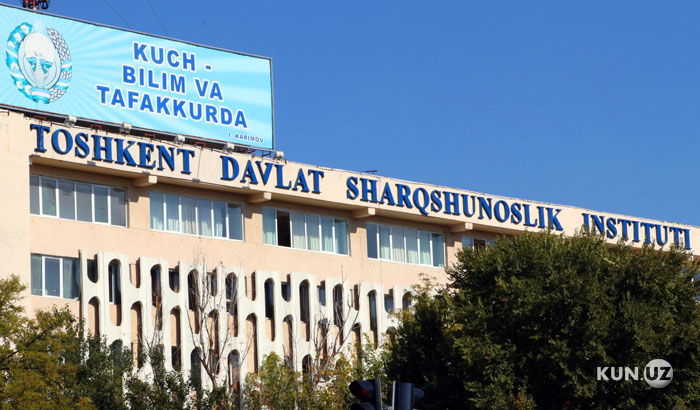
ORIENTAL STUDIES IN UZBEKISTAN: HISTORY AND MODERNITY
The contribution to the development of education and science must always be timely and relevant with the standards accepted in the world. These two directions are fundamental in the all-round development of the country. Over the years of independence Uzbekistan has made significant progress in this regard. However, the demands of the new time pose new challenges for us. The labour market has changed, now only those personnel who possess knowledge and competencies at the highest level are in demand. Yesterday’s approaches to gaining knowledge have already lost their relevance. In the 21st century, the emphasis is on innovation and technology.
Over the past few years, in the field of oriental studies in the CIS, there has been an active reassessment of many issues related to the problems of statehood, religious studies, international relations and common historical heritage. Today, aspects of interaction are on the agenda, which, taking into account the current state of affairs, have to meet the new realities. At this stage, studies reflecting the positions of countries in the system of relations between East and West become relevant. It is especially important to study the experience of Eastern countries.
Today, the East is a rather broad concept that includes the Far East, East Asia (Japan, China, Korea), Southeast Asia (Vietnam, Indonesia, Malaysia, etc.), a huge region of the Near and Middle East, as well as North Africa.
The relevance of Oriental studies in the 21st century lies in the connection with religious, cultural and philosophical traditions, in the direct understanding of completely different civilizations.
Oriental studies is one of the oldest branches of education in Uzbekistan. Tashkent State University of Oriental Studies is one of the largest oriental higher educational institutions in Asia and the post-Soviet countries. In November 1918, the Turkestan Oriental Institute was established in Tashkent. The opening of such an educational institution marked the beginning of the training of qualified specialists in various branches of Oriental science not only in Uzbekistan, but throughout Central Asia. This educational institution specialised in the study of oriental languages and literature, regional studies, ethnography, Islamic studies of Turkestan and its neighbouring states. At the same time, research work in the field of oriental studies was carried out at the institute. According to official data for the 1922-1923 academic year, 210 students studied at the Turkestan Oriental Institute.
Over the years, lectures on various branches of oriental studies were given at the Institute by such orientalists, historians, ethnographers and philologists as the prominent educator and teacher Saidrasul Saidazizov, the author of the textbook “Ustadi avval”; teacher and public figure, Arabist, Islamic scholar V. Kucherbaev; teachers of oriental languages Abdurakhman Saadi, Mirza Tagiev, Mirza Ibragim, Badal Kariev, as well as Russian orientalists M.S. Andreev, A.A. Semenov.
In 1944, the Oriental Faculty was established as part of the Central Asian State University (now the National University of Uzbekistan). Considering the demands of the time and the requirements of public education, the training of teachers, referents and translators of oriental languages became an important task.
For a more in-depth study by students of classical and modern literature of the peoples of the East in 1965, the Department of Literature of the Peoples of the Foreign East was created. In the 1980 and 1990s, oriental science in Uzbekistan was developed by outstanding oriental scientists, specialists in various branches of oriental studies – academician U. Karimov, academician B. Ahmedov, prof. A. Bulgakov, prof. M. Pikulin and many others. Uzbek scientists-orientalists introduced into scientific circulation and made public the monuments of ancient culture and the spiritual heritage of Uzbekistan and the countries of the East in general.
A new stage in the development of Uzbek oriental studies began after the declaration of independence of Uzbekistan. Taking into account the requirements of the day, in order to train and improve highly qualified orientalists, deepen and expand scientific research in the field of history and culture of the peoples of the East, as well as the development of international relations with foreign countries, on the initiative of the First President of the Republic of Uzbekistan I. Karimov, the Tashkent State Institute of Oriental Studies.
Today, much attention is paid to the development of oriental studies and the training of orientalists to expand bilateral and multilateral political, economic and cultural relations between Uzbekistan and the countries of the East.
Orientalists of Uzbekistan carry out their activities in the diplomatic service, about 50 of whom have worked and work now as the Ambassadors of Uzbekistan in the countries of East and West, USA, Great Britain, Germany, France, Japan, Turkey, Belgium, Italy, Israel, India, Pakistan, Saudi Arabia , Egypt, Kuwait, UAE, Singapore, China, Malaysia and other countries of the world.
The transformation of the Institute of Oriental Studies into a University imposes a great responsibility not only on the entire faculty, but also on young orientalists who will contribute to the development of modern statehood in Uzbekistan. Research is being carried out on the peculiarities of the development of the countries of the East, on cultural ties and the heritage of its peoples, information and analytical bulletins are being issued, scientific and educational literature are being published. Also, research is being conducted from a scientific point of view on development factors, modern socio-political and economic processes, Eastern culture and philosophy, ancient monuments and manuscripts of the countries of the East; systematic and detailed study of cultural, literary, historical and philosophical sources; complex studies of the features of the socio-political, economic and interethnic, intercultural relations of the eastern countries.
The university has begun a phased introduction of a credit-modular system of education. There was a lot of debate about its pros and cons, but if we want to integrate into the global educational community, then we need to implement it at an accelerated pace now. Taking into account the current situation in the labor market, new areas of training of orientalists are being developed. Together with a number of partners from foreign countries, the development and implementation of modern methods for assessing the level of graduates’ proficiency in Eastern and Western languages has begun.
The new foreign policy course of the leadership of Uzbekistan has created great opportunities for international cooperation in the development of oriental studies. It is obvious that without interaction with foreign partners it is impossible to achieve the desired result in the study of the countries of the East and the training of qualified orientalists. Strengthening international cooperation, it is planned to create a regional educational hub in the field of oriental studies. For now cooperation has been established with leading universities in the USA, Great Britain, Germany, the Netherlands, India, Iran, Turkey, Egypt, Japan, Korea, China, Russia and the CIS countries, where about 70 teachers are sent annually for advanced training and internships, as well as participation in scientific conferences and lectures.
To date, 30 foreign specialists from Japan, China, the Republic of Korea, Egypt, Indonesia, Turkey, and Iran have been attracted to work within the walls of the university on a permanent basis. In addition, short-term courses (online and offline) by foreign teachers are systematically organised.
Taking into account the above, the following conclusions can be drawn:
1. The requirements of the new time pose new challenges in the training of orientalists. The labour market has changed, now only those personnel who speak not only foreign languages, but also have comprehensive knowledge and competencies, are in demand. “Yesterday’s” approaches to gaining knowledge have already lost their relevance.
2. The major transformations carried out in the field of Oriental studies are primarily aimed at training highly qualified specialists, personnel of a new formation, as well as the comprehensive development of a favourable research environment for young scientists.
3. New realities in the international relations of Uzbekistan create great opportunities for cooperation with foreign universities in the development of oriental studies. Strengthening international cooperation with traditional oriental schools in Russia, it is planned to create a regional educational hub in the field of training specialists in the countries of the East.
Rikhsieva Gulchekhra Shavkatovna –
Rector of the Tashkent State University of Oriental Studies.
The Republic of Uzbekistan
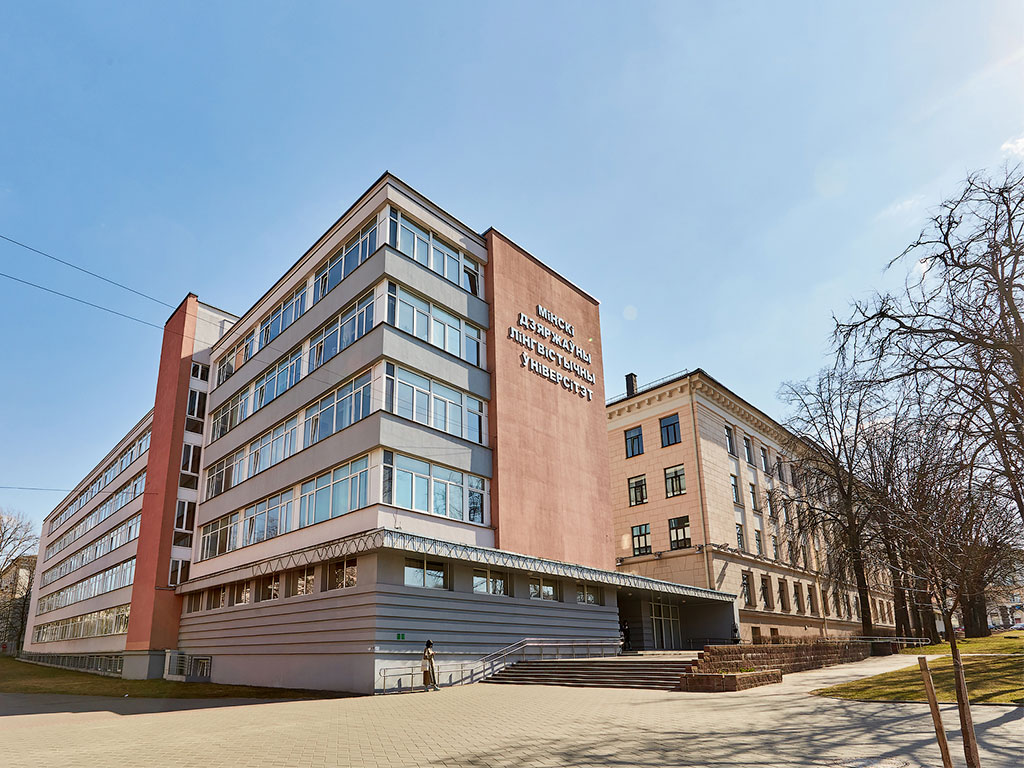
Education system in the Republic of Belarus
Higher educational institutions of the Mogilev region
Education is a strategic State asset. The Republic of Belarus belongs to the group of countries with a high level of Human Development Index. The adult population literacy rate in Belarus has never been low, reaching 99.7% today. Upon indications of children enrollment in primary and secondary schools, Belarus has reached the level of the most developed countries on the planet. In the last few years, the state has allocated at least 5% of GDP for the educational system, which is not inferior to the funding allocation for the education sector in developed European countries.
In total, there are more than 8 thousand establishments of mainstream, additional and professional education in the republic, in which about 3 million children, pupils, students are trained and educated by more than 400 thousand workers or every tenth employed in Belarus.
The education system of the Republic of Belarus provides education for students at the levels of mainstream, extended and professional education.
Mainstream education includes the levels of preschool, general secondary, career and technical, secondary specialised, higher and postgraduate education.
Extended education is subdivided into education for children along with youngsters and for adults.
The classification of education levels in the Republic of Belarus corresponds to the International Standard Classification for Education (ISCED 2011). Accordingly, the principle of “lifelong learning” is applied in real terms.
Belarus has a well-developed system of preschool education. Although it is not mandatory, most children attend preschool before starting school. General secondary education in Belarus starts at the age of 6 providing for two levels: general basic and general secondary education. The course of the basic education is designed for 9 year old pupils, whereas the secondary one – for 11 year old pupils. Having successfully completed basic school, young people have the opportunity to continue their education in colleges, lyceums and vocational schools, where they can simultaneously receive secondary education and vocational training. Those who wish can receive a general secondary education by continuing their studies at school. The certificate of general secondary or secondary professional education is the main document that gives the right to enter a higher educational establishment.
Higher education includes more than 50 establishments (universities, academies, institutes) along with private providers of education. Annually the higher education establishments intake more than 60 thousand people, from which graduate more than 80 thousand specialists. Preparation of experts is carried out in 15 educational profiles, comprising 382 specialties of higher education of the first level and 331 specialties of higher education of the second level.
Students of higher education in Belarus can learn full-time or part-time, and can obtain a distance learning.
Higher education students get knowledge in the Russian and the Belarusian languages. For foreign citizens, training can be organised in English.
In this article, the activities of the universities of the Mogilev region are proposed to consider. Higher education establishments are located in the east of Belarus including economic, legal, technical, agricultural occupations.
Belarusian State Agricultural Academy, Gorki city, Mogilev Region
Today the Belarusian State Agricultural Academy is the largest multidisciplinary higher educational establishment with the agro-industrial direction among the CIS countries and Europe.
During its history, BSAA has trained more than 100,000 high end professionals for the country’s agro-industrial complex and other sectors of the national economy.
Today the BSAA is called “a city within a city”. There are 16 educational buildings, 14 student dormitories, a library with a book collection of more than one million copies, and a dining room for 800 people located on the territory of the academic campus.
The academy also includes the educational and scientific centre called “Experimental fields of the BSAA”, a training ground, a cascade of ponds, and other facilities. There is also a recreational facility, namely a Palace of Culture built for students’ leisure, as well as a sports complex with a stadium and a swimming pool.
The Belarusian State Agricultural Academy established itself as a leading choice in the republic within the development of international relations and active cooperation with leading foreign universities.
The Academy was given the status of a leading university in preparing specialists in the field of agriculture in the country’s national education system.
Belarusian-Russian University, Mogilev region
The Belarusian-Russian University is the largest regional scientific and educational centre comprising a lyceum and an architectural and constructional college. It also includes an institute of advanced training and personnel development.
The multifaceted activity of the scientific and pedagogical collective body of the university is aimed at training highly qualified personnel in technical and economic specialities. The university provides training for higher education specialists in the field of machine engineering, IT technologies, industrial and civil engineering, economics and management. The training is provided for 23 specialties of the primary level, 7 specialties of the secondary level of higher education according to Belarusian educational programs; 9 branches of training for bachelors and 2 branches of training for masters according to Russian educational programs. University graduates are in high demand at the enterprises of mechanical engineering, machine tool industry, instrument engineering, power industry, transport, construction, telecommunications industry and information technologies in the Republic of Belarus and the Russian Federation.
Mogilev State University named after A. A. Kuleshov, Mogilev region
For many years the university had been developed as a pedagogical establishment for preparing secondary school curriculum teachers almost across all disciplines along with specialists for preschool children’s establishments. In 1998 the university started training for other sectors of the national economy.
Today there are three teaching and laboratory buildings, three educational and sports facilities, a stadium, a workout gym along with rehabilitation centre, an educational and biological facility “Lyubish”, four dormitories and two dining rooms on the territory of the university. Also, the university has a cafe called “Labyrinth”, several museums, instant printing lab, information technology lab, educational TV lab, and more than 100 classrooms.
Scientific research of the faculty members is carried out mainly in accordance with the republican programs, orders of the Ministry of Education and the National Academy of Sciences of the Republic of Belarus. The university makes research on the following topics:
“Continuous training system for teachers following the conditions of academic organisations”;
“The Earth’s magnetosphere”; “Thin film optics”; “Archaeological sites of Belarus”; “Past and present in literature”; “Problems of the processes of adaptation to environmental factors of the human body ”, and others.
Mogilev Institute of the Ministry of Internal Affairs of the Republic of Belarus, Mogilev
The Mogilev Institute of the Ministry of Internal Affairs was established in 1948 as a retraining school for sergeants of the corps of the Main Directorate of Security on Railway and Water Transport of the USSR Ministry of State Security. In 2018, it received the status of a higher educational institution. Currently, the institute is the oldest educational institution in the system of the Ministry of Internal Affairs.
Recruitment to the Mogilev Institute of the Ministry of Internal Affairs is carried out in the following specialties: Legal support of public security; Legal support of operational-search activity.
Graduates of the Institute are awarded the qualification “Lawyer” and the first officer’s special rank “Police Lieutenant”.
Belarusian State University of Food and Chemical Technologies, Mogilev
The Belarusian State University of Food and Chemical Technologies is the only higher educational institution in the Republic of Belarus that trains process engineers, mechanical engineers and economists for the food processing and chemical industries.
The university provides training of personnel of the highest scientific qualification through graduate school in 11 specialties. The university has a specialised Council for the defence of doctoral and master’s theses. MGUP is the leading university in the development of educational standards, curricula and programs, textbooks and teaching aids for food specialties.
For 40 years of activity, university teachers have trained more than 15 thousand specialists for the economy of Belarus and other states.
Machekin Sergey Nikolaevich,
Head of International Relations Department,
English teacher at the Department of Foreign Languages,
educational institution “Mogilev State University named after A. A. Kuleshov”.
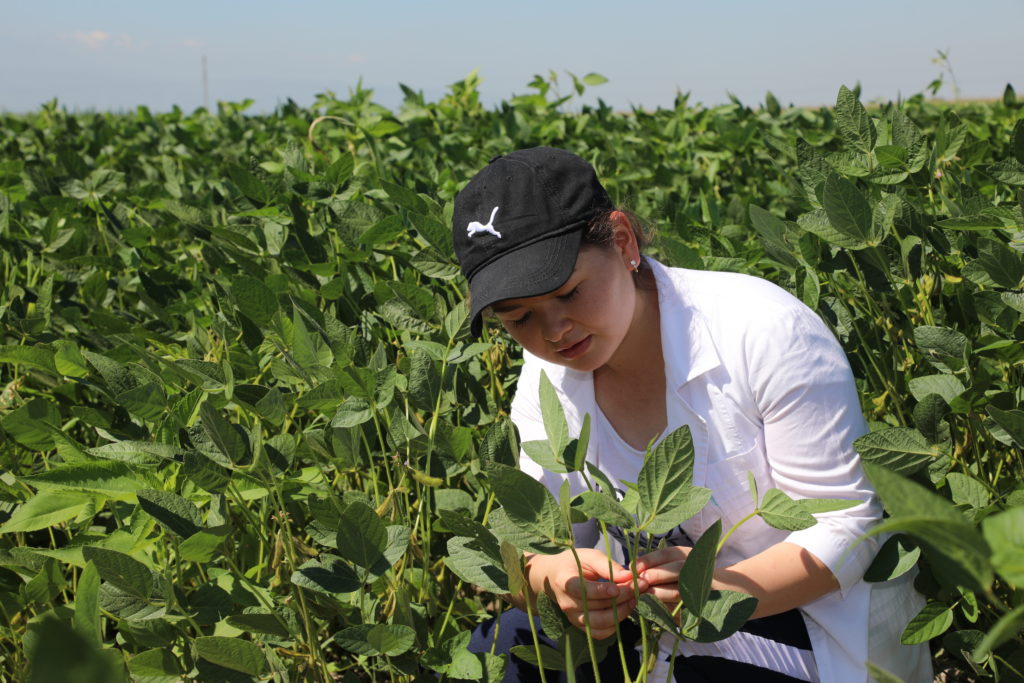
The Kazakh National Agrarian Research University as a research university, has achieved success and recognition at the national level and aims to be recognized by the international scientific and educational community.
The university cooperates with 137 leading universities and scientific centers of the world and is a member of 16 international associations and organizations for higher education and science, including GCHERA.
An international hub of knowledge has been created: academic mobility is developing, training in Kazakh, Russian and English has been introduced, international summer and winter schools are held in 14 directions.
By actively cooperating with prestigious universities from the USA, Europe, and the countries of the Pacific region, the university has formed 11 double degree programs.
In its innovative development, the university is guided by the experience of the Wageningen Research University (WUR, Netherlands), which is the number 1 university in the QS world ranking for agricultural specialties.
An institute for collaboration with the Wageningen University was opened at KazNARU. An agreement was signed with the University of Wageningen on the exclusive partnership on training specialists in the educational programs: “Veterinary food safety and technology” and “Plant science and technology”.
Any university, if it wants to be competitive in the labor market, must work ahead of the curve, create innovation centers and laboratories that allow for high-quality training of specialists, conduct scientific research and introduce their results into production.
KazNARU has created all the conditions for the training of competitive specialists. The International Agrotechnological Hub operates, which includes: 7 research institutes, 8 innovation centers, 49 research laboratories, 18 international research centers over the past 5 years, 6 research laboratories and 2 innovation centers are replenished.
A research laboratory for micro clonal reproduction has been opened, where up to 3 million samples will be obtained, including healthy seedlings resistant to bacterial burns and other diseases.
The Intensive Garden Research Center was established with Dutch Fruit Solutions, a Dutch company. The yield of fruit and berry crops is 4-5 times higher than that of local ones.
The reference research laboratory analyzes the quality of milk and dairy products, where rural entrepreneurs can receive a certificate of the quality of their products.
The Kazakh-Korean Research Center conducts trainings for managers and specialists involved in growing crops in greenhouses. A smart greenhouse is under construction. Investments were attracted from the fund of the Republic of Korea.
The Kazakh-Belarusian center of the university is equipped with modern agricultural equipment in the amount of 75 units, which makes it possible to carry out all agrotechnological processes for growing crops and caring for animals on time.
A demonstration site of innovative Valley-type sprinklers and other types of irrigation equipment is being created at the Kazakhstan-American Smart Water Center in cooperation with the American company Valmont Industries.
Together with the Austrian company “APC”, the project “Innovative scientific and educational center for animal husbandry with a pedigree dairy” Smart-farm “and others is being implemented.
This work at the university is put on a systematic basis, since only a developed infrastructure allows for high-quality training and retraining of specialists, conduct scientific research and introduce their results into production. The next step is the creation of a world-class research university.
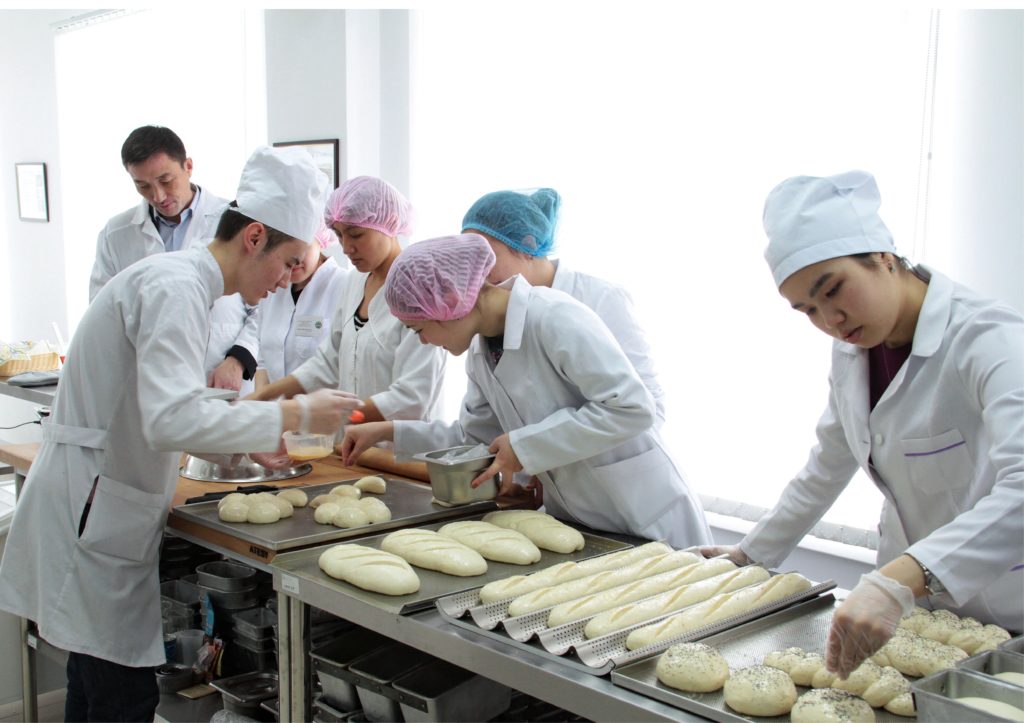
1. Legal Name – Kazakh National Agrarian Research University
2. Trade Name – KazNARU
3. Year of foundation – 1929
4. Number of students (foreign students) – 7525 (71 foreign students)
5. Number of teachers – 838
6. Number of faculties and their names –
1) Agrobiology
2) Bioresources and Technology
3) Veterinary Science
4) Water, land and forest resources
5) High school of «Business and Law»
6) IT – technology, automation and mechanization of agro-industrial complex
7. Language of education – Kazakh, Russian, English
8. business schools and other training/affiliates – Foundation Courses
9. Participation in international rankings – QS – Quacquarelli Simonds, Green Metric World University Rankings
10. Full name of the rector – Tlektes Yespolov
11. achievements of the University QS Ranking #551
12. Address, Contacts, email, website:
Web site https://www.kaznaru.edu.kz/?lang=en
Kazakh National Agrarian Research University
8 Abai avenue, Medeu district, Almaty, 050010, Republic of Kazakhstan
Rectors reception room: +7(727) 264 24 09, +7(727) 262 19 48
Admission committee: +7(727) 264 06 13, +7(727) 264 08 54
Chancery (Fax): +7(727) 262 11 08
e-mail: info@kaznau.kz
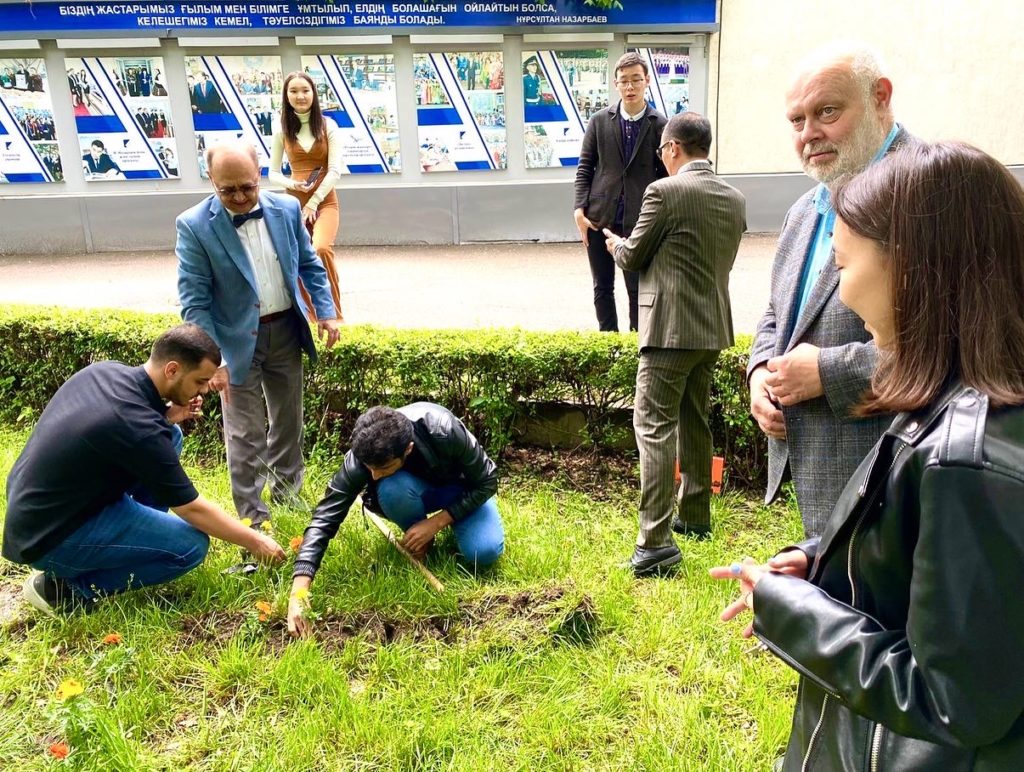
Mobilizing knowledge management for dealing with climate change and Sustainable Development Goals
The world’s communities face among many challenges related to climate change and rising economic and social problems, from unbearable hot weather in many parts of Europe and forest fires in many parts of Eurasia and Canada to damages to agricultural crops in many parts of Asia. In order to deal with those numerous problems around the world, policymakers need to use the right policy tools for making the most effective decisions utilizing the knowledge from best practices from around the world. The question is rising: do they have enough training in expertise for knowledge management in the increasingly complex world of the information revolution, rising tides of online communications in the avalanches of social media reports?
Indeed, the knowledge management skills increasingly become an important part of modern education especially of the education for sustainable development. Present-day policymakers and future leaders need to develop abilities and competencies for managing large bodies of information from managing large databases and huge amounts of information collected by researchers and research institutions to managing reports and social development data and social development and climate change data accumulated at various universities in many countries.
In the context of education, the term “knowledge management” refers to a specific body of educational and research tools related to a systematic multidisciplinary approach to creating, sharing, and utilizing and most importantly to managing knowledge and information related to sustainable development.
At the end, we all need to learn how to effectively use the rapidly growing body of knowledge, especially on innovations, new information and communication technology (ICTs), and organizational development and mobilization of resources for addressing the needs of many communities both in developed and developing countries.
Universities around the world accumulated significant knowledge and expertise about adaptation for and dealing with various challenges related to the climate change and many related environmental, social, and economic issues. Take the example of Kazakh National Agrarian Research University (KazNARU) – which is located in a large metropolitan area in Kazakhstan. Like many universities around the world, KazNARU conducted numerous studies and research projects related to the climate change, changing flora and fauna, and changing human habitat, including large project on the selection work of new drought and disease resistant plants for food production and urban landscaping. And there is large demand for these type of studies. Climate change is already changing the environment at the micro-geographical level in many countries. For example, temperatures in and around large metropolitan centers are getting higher, access to clean water is more difficult, the air is becoming more polluted. Thus, traditional bushes, trees, and flowers struggle to survive and grow in the “stone jungle” of modern urban centers. There is a need to select new types of plants capable of surviving in the conditions of modern cities or to engage in selection work for acclimatizing the existing types of plants for our new conditions. For instance, the modern landscaping design and urban planning increasingly involves vertical parks, gardens, clubs, and greenhouses, which needs new approaches to selecting plants, bushes and flowers.
In general, researchers around the world possess the vast treasures of knowledge and expertise and unfortunately many ground breaking studies still remain on the desks or bookshelves. It is time to work out an effective knowledge management mechanism in order to systematize existing studies and adapt them as much as possible for practical purposes and practical use.
Universities and educational organizations may play an important role in generating knowledge, developing scientific research, and in teaching knowledge management for sustainable development to help leaders of today and tomorrow to come up with the right answers and remedies and good practices for all communities.
About the author: Rafis Abazov, Ph.D., is a visiting professor at Kazakh National Agrarian University (KazNARU) and a director of the Institute for Green and Sustainable Development. He is the author of The Formation of Post-Soviet International Politics in Kazakhstan, Kyrgyzstan, and Uzbekistan (1999), The Culture and Customs of the Central Asian Republics (2007), The Stories of the Great Steppe (2013), and others.
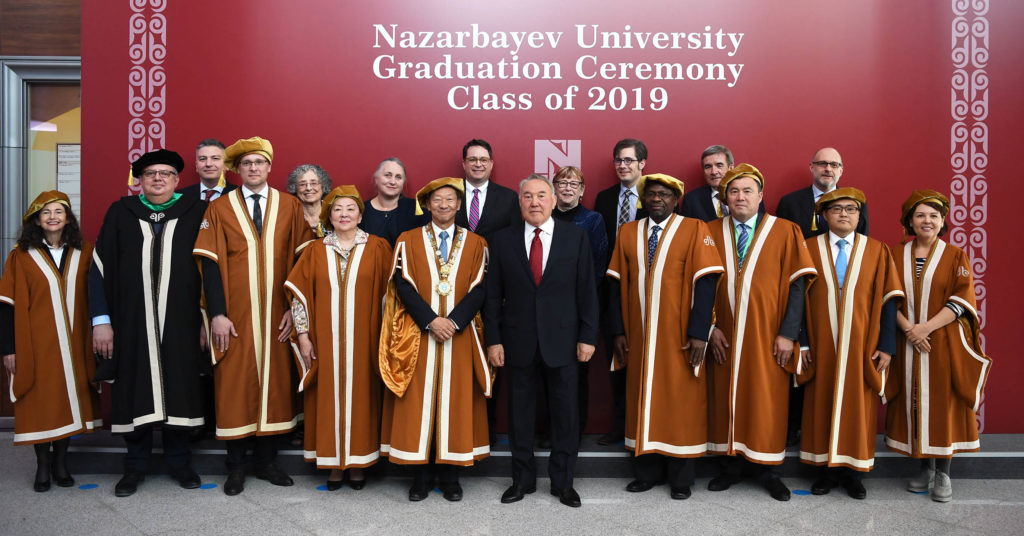
HOW DO UNIVERSITIES CREATE SOCIAL IMPACT?
THREE EXAMPLES FROM CENTRAL ASIA – THE HERITAGE ALLIANCE OF THE NEW SILK ROAD, CONSORTIUM OF GENDER SCHOLARS AND THE INTEGRITY PROJECT
The 2021 European University Association report “University Without Walls” reminds us that the role of universities is changing. Universities do not operate as single entities but increasingly are part of strong networks. The mission of universities is more multi-dimensional: the fundamental focus remains teaching and research, but, as the recent Times Higher Education Impact Ranking shows, universities are increasingly judged on their innovation and social impact, as well as on research and teaching.
Nazarbayev University (NU) is a clear example of these global changes. Established in Kazakhstan in 2010, its mission is to become a research-intensive university for Central Asia. NU collaborates with strategic partners: Duke University, National University of Singapore, Wisconsin University, University of Cambridge, Pennsylvania University, and University of Pittsburgh. With advice from these global universities, and with support from local university partners, NU creates impact at scientific, social, and economic levels. To illustrate, NU graduates are employed by competitive professional services firms such as: Google, Schlumberger, Microsoft and McKinsey. Our graduates have been accepted into full scholarship programs at Harvard, Oxford, MIT, Stanford, London School of Economics, University College London, Imperial College, Arizona, Cambridge and Illinois Urbana-Champaign, and many others.
Collaboration has always been the key to success in universities, just as it is in business, politics and diplomacy. To create sustainable social impact, NU and many other Central Asian universities are active in key networks, including the University Alliance of the Silk Road (UASR), a non-governmental and non-profit organization “aimed at openness and international cooperation in higher education”. UASR facilitates collaborative research, student exchange, cultural, technological and economic development through a coalition of 150 global universities from 38 countries.
UASR Executive Council members illustrate the breadth of interest in Central Asia: Xi’an Jiaotong University (China; Harbin Institute of Technology (China); Hong Kong Polytechnic University (China); National Research University “Moscow Power Engineering Institute” (Russia); Bauman Moscow State Technical University (Russia); Al-Farabi Kazakh National University (Kazakhstan); Nazarbayev University (Kazakhstan); University of New South Wales (Australia); Centrale Supelec (France); University of Liverpool (UK); Politecnico di Milano (Italy); Benha University (Egypt); Sabanci University (Turkey); Issanov Kyrgyz State University of Construction, Transport and Architecture (Kyrgyzstan); National University of Sciences and Technology (Pakistan); Technic University of Berlin (Germany); National University of Singapore (Singapore) and Pusan National University (South Korea).
Within this context, the University of Liverpool in the UK worked with Central Asian universities to establish the Heritage Alliance of the New Silk Road, known as HANSR, an informal sub-alliance of University Alliance of the Silk Road (UASR). HANSR is highly collaborative group of universities with a specific interest in the heritage of the Silk Road.
When you think of Central Asian heritage, no doubt many vivid images come to mind: architecture, music, cuisine, dance, literature, history, poetry, scholarship, philosophy and economic opportunities. HANSR provides researchers, scholars, students, bureaucrats, politicians and administrators a forum to debate significant heritage themes. HANSR Roundtables, student competitions, and workshops explore all aspects of heritage: including the costs and benefits of development, heritage tourism, and sustainability practices relevant to heritage.
After its 2017 launch by Liverpool University, last year’s HANSR Roundtable was hosted by Nazarbayev University. Top scholars presented their ideas, featuring Claudia Chang, Emerita Professor of Anthropology, Sweet Briar College, “The Why of Cultural Heritage: The DNA of Heritage in the Midst of Global Crisis”. Other prominent HANSR Roundtable presenters include Peter Hommel, Lecturer in Archeomaterials, University of Liverpool; “Hearth and Home: Promoting the Identification, Investigation and Protection of Prehistoric Settlement Landscapes in Southern Siberia”. Also prominent are researchers such as Gavin Slade, Associate Professor, Nazarbayev University, “In the Gulag’s Shadow: Places and Practices of Remembering and Forgetting Penal Trauma in Kazakhstan” and from the tourism perspective, Guillaume Tiberghien, Lecturer in Tourism Management/Marketing, University of Glasgow, “Kazakhstani Heritage and Politics of Authenticity in Tourism: Opportunities and Challenges” and Paula Dupuy, Associate Professor, Nazarbayev University, “Trans-Eurasian Exchanges: A Look from Inside Kazakhstan”. Urban development issues are explored in the work of researchers such as Lina Liu, Associate Professor, Law School, Xi’an Jiaotong University, “The Harmonization of Urban Development and Protection of Cultural Heritage from the Perspective of China”; and Nikolai Tsyrempilov, Associate Professor, Director of M.A. Program in Eurasian Studies, Nazarbayev University, “Visualizing Sacred Geography of Kazakhstan”; Binqing Zhai, Professor, Head, Department of Architecture and Director, Institute of Architecture, Xi ‘an Jiaotong University, Conservation of Han Chang’an Capital Heritage Site and the Impact to Local Indigenous Lives”; Andrey Filchenko, Professor, Nazarbayev University, “Contemporary Practices of Language Documentation as Cultural Heritage Preservation” with US scholars such as: Gil Stein, Director, Chicago Center for Cultural Heritage Preservation and Professor of Archaeology, Oriental Institute, University of Chicago, “Preserving Cultural Heritage Along the Silk Road: University of Chicago Projects in Central Asia and Afghanistan” and Jeffrey Altschul, Founder, Statistical Research, Inc. and Co-President, Coalition for Archaeological Synthesis, “Building a Future without losing the Past: The Challenge of Cultural Heritage Management”.
This year’s HANSR Roundtable is promising to be exceptionally international and innovative. From 8-11 November 2021, Politecnico Milan is hosting the 2021 HANSR Roundtable on the concept of Heritage Management: Musealization or Use, including the themes: After Discovery and Preservation: Musealization or Use? Heritage Management International Case Studies; Enjoyment of the Historical Heritage, The Vision of the Young Generation; and the Heritage Management Project.
As always, HANSR creates opportunities for students to submit videos on their heritage related research topics, in order to receive feedback from the world’s top scholars.
HANSR is just one of many illustrations of cross-university collaboration for social impact in Central Asia. Other examples include: The Consortium of Gender Scholars (GenCon), established by Assistant Professor Anna CohenMiller and Associate Professor Jenifer Lewis from Nazarbayev University. GenCon is a broad group of researchers, from STEM and non-STEM backgrounds, who explore gender related issues in their research, teaching and graduate supervision.
The final example of collaboration for social impact is the Integrity Project, with a focus on academic and professional integrity in university, high school and professional life. The goal is to encourage student- to-student debate on all aspects of integrity, via international, student-led integrity roundtables in Central Asia and beyond, an international student video competition for high school, undergraduate and graduate students, networking with the European Network for Academic Integrity and student research projects. The solution to integrity is not in the hands of professors, it is in the hands of students.
Not only in Central Asia, but all around the world, universities are working with students as key collaborators to create lasting social impact.
Dr. Loretta O’Donnell, Vice Provost Academic Affairs
Nazarbayev University, Kazakhstan

“Science and Industrial Policy Options for Resource Rich Eurasia’’
The Silk Road which historically signifies this region in particular has lent itself to defining and placing Eurasia and Central Asia as a place for mobility where goods passed through from the East to the West and vice-versa. However, Eurasia as a producer of ideas, peoples and goods often gets left out especially in the global, and particularly Western, imagination, propagating the idea of Eurasia as a thoroughfare. Silk Road has been a place for manufacturing and historically has contributed to scientific, artistic and cultural breakthroughs of global significance but has been left out of current discussion as a producer. This has an impact on our understanding of knowledge production and educational framework in the region.
This representation of being a passage (road) and leaving out the significance of being a producer has reinforced the (mis)understanding about Silk Road and led for it to be demarcated as a periphery. Particularly since the fracture of the Soviet Union into the 15 republics, the Eurasia region is increasingly portrayed as a disparate and remote region, and a region which needs to be reconstructed using new and ‘modern’ framework and principles arising from notions, for example, of Westphalian states. Constituents of Eurasia, be it Central Asia, China or Russia, or south stream regions of the Middle East, South and South East Asia are relegated as incapable players or threats in making. However, this Silk-Road region and its millennia old interconnectedness is where the future of this region lies as is finally being recognised by OBOR (BRI) and Eurasian Economic Union projects. It is important to remember that, Eurasia as a coherent geographical construct has existed since at least as early as the Mongol Empire in the 13th century and subsequently in the Timurid Empire which brought large swathes of Eurasia under control.
Such a flawed understanding is a product of decontextualised economic analysis and subsequent mis-matched political and security studies narratives. An economic understanding of production is limited, and limited largely to post-facto analysis of the production phenomenon and process. Economics alone does not have tools either to understand how production originates and how it is sustained. Production is more often rooted in need, not in demand! while the need is correlated to how the society is organised. This societal organisation generates value systems which in turn govern the need itself. If one only uses the prevalent neo-liberal economic frameworks, very construed understandings can emerge. If one turns the analysis around, some key questions can arise from this discourse and help clarify things, for example, let us consider the cure for cancer, for which it is easy estimate the level of demand; and despite this extensive demand and money thrown at it, the market driven systems have not been able provide even a basic cure and resilience against cancer. And similarly how come we are so far behind in alternative energy solutions despite the demand?
So how is this relevant to the case of Eurasia? Historically, Eurasia was the dynamo of curiosity led intellectual development, for e.g. Al-Khwarizmi’s discovery of Algorithm, and a wide array of physical and chemical principles, translated mineral wealth into global supply chains of then and now. It was the nurturing of science and ‘investment’ in human capital that has played the key role in creating resilience in Eurasia. This pattern has been repeated through myriad political orders of Khanates, Empires and even in the modern Soviet state periods.
A diagrammatic understanding of Science to Innovation process perhaps can help understand and explain the fabric of the resilience process in Eurasia; the basic principle is as follows:
∙ Science (similar to Culture and Music) (grasping principles of nature) →
∙ Engineering (systemising and controlling process, leading to application of science) →
∙ Technology and Innovation (making engineering useful for public good and/or commercial gain)
Thus the premise here is that those policy makers who achieved an understanding of investing in science and human capital as the key to sustainable economic growth were able to create progress at a global scale, despite the challenges of land-locked geographies, harsh climates, political upheaval and unstable globally linked finance, and indeed, low population densities.
So as stated earlier, in the past we have Eurasia at the centre of processes of development, integration and growth, so what does it have to offer now? For one, their natural wealth of vast materials and metals, needed to drive a new era of electronics, refrigeration and energy storage underpin all other areas of technology and thus global sustainable development, can aid in global development. This is particularly important when going beyond hydrocarbons and Silicon-based technologies which are prevalent today.
For Eurasia specifically, the following concerns are important to keep in mind in order to not compromise its millennia old intrinsic resilience capacity. In a post-Soviet, new liberal world order in which Eurasia re-industrialises, it should not fall for ‘easy-options’ often discussed by many developing countries which are industrialising now, rather Eurasia is re-industrialising – their starting point in terms of human capital and institutional capacity was/is very different. The countries of Central Asia, for example, need to pay close attention to not getting caught up in thinking that technology transfer is the final goal. On the contrary, it is the starting point for developing further technologies. Access to vast materials and metals base, which are needed to drive the new era of electronics, refrigeration and energy-storage which underpin all other areas of technology do not rest with IT, 3-D printing and consumer goods. Countries in Central Asia, especially, are home to natural resources of the kind that are essential in future technologies, from metals to hydrocarbons. New industrial and sub sectors of global relevance have potential to be induced in/from Eurasia through deployment of new scientific ideas. For example, the down-stream potential of the oil and gas industry, mining and agro resources are necessary for producing clean-tech and green technologies as well. Polymers and oxide semi-conductor devices like light emitting diodes, solar cells and transistors; cheap deposition of polymers by printing; improve devices by understanding fundamental laws of physics can all lead to spin-off technologies which can put Eurasia at the forefront of production and high-technology rather than compete with established players in developed fields. So resilience is not the endgame, it is a kind of insurance policy.
Central Asian countries like Uzbekistan Kazakhstan, Turkmenistan have oil and gas and as a result polymers and plastics on the one hand, while together with the Kyrgyz Republic and Tajikistan, they have vast reserves of Rare-Earth minerals. This can help them diversify their economies and lead the change rather than play catch up to developed countries. Some examples of these kinds of technologies are Spin Nematics (for the next generation of environmental, medical and industrial sensors for applications ranging from satellite communication to chemical industry heat process management and mining exploration); Computer Memories and Information Transport (e.g. components and fully integrated chips for quantum computation and memory storage); Multifunctional Composites (these can act as both batteries for energy storage and process sunlight for energy production), Magnetic Refrigeration (for example, manipulation of quantum spins can produce refrigeration that no longer requires cumbersome compressors or use of environmentally damaging gases such as CFCs (chlorofluorocarbons) and HCFCs (hydro-chlorofluorocarbons) like R-12 or R-22. Such technologies have the potential to power our computers, keep our food fresh); and HighTemperature Superconductivity (for dissipation-less transmission of electricity and production of magnets for Maglev High Speed trains as well as plasma confinement reactors for energy production).
Conclusion
Oxford dictionary defines Resilience as ‘the capacity to recover quickly from difficulties and with toughness’. Historically, Eurasia has not only been resilient but rather been the epicentre of change, transformation and production. Whether it was the Silk Road, or home to the most ancient and great civilisations in the world, Eurasia has been at the centre of all things new. The natural connectedness of the Eurasian region allowed for a sharing of resources and led to some of the world’s best science. Home to a plethora of materials and metals, renewable and non-renewable sources of energy, the countries of Eurasia have benefitted from each other through interactions in knowledge production along with exchanges of goods and peoples which has been at the heart of progress through time and space. Even in Soviet times Central Asian countries remained connected with flexible borders, if any, and shared infrastructure which favoured interaction. It is only since the end of the Cold War that we have seen Eurasia, especially countries in Central Asia, question and struggle with their place in the world. Rather than play catch-up to the world’s leading economies, countries in the region should look to development paradigms which are Eurasian in character and are generated from within. International organisations and think tanks bring with them Euro-centric concepts of development, economic and otherwise, and fail to take into account the knowledge and technologies that exist within Eurasia.
Dr Siddharth S Saxena
Bibliography
Kalra, P. and Saxena, S.S. (2015). ‘Asiatic Roots and the Rootedness of the Eurasian Project’, in ‘The Eurasian project and Europe: Regional Discontinuities and Geopolitics’, ed. Lane, D. and V. Samokhvalov, Palgrave Macmillan.
Kalra, P. and Saxena, S.S. (2007). ‘Shanghai Cooperation Organisation and Prospects of Development in the Eurasia Region,’ P Kalra and S.S. Saxena, Turkish Policy Quarterly (TPQ)
Oxford Dictionary, Resilience, https://en.oxforddictionaries.com/definition/resilience
Saxena, S.S. (2017). ‘Uzbek and Turkmen Pavilions at Expo 2017 in Kazakhstan: Pave way for ‘New Energy’ Revolution for a Global Impact’, available at https://centralasia.group.cam.ac.uk/news/Expo2017
(This article is adapted from the COMPASS Project Proceedings)
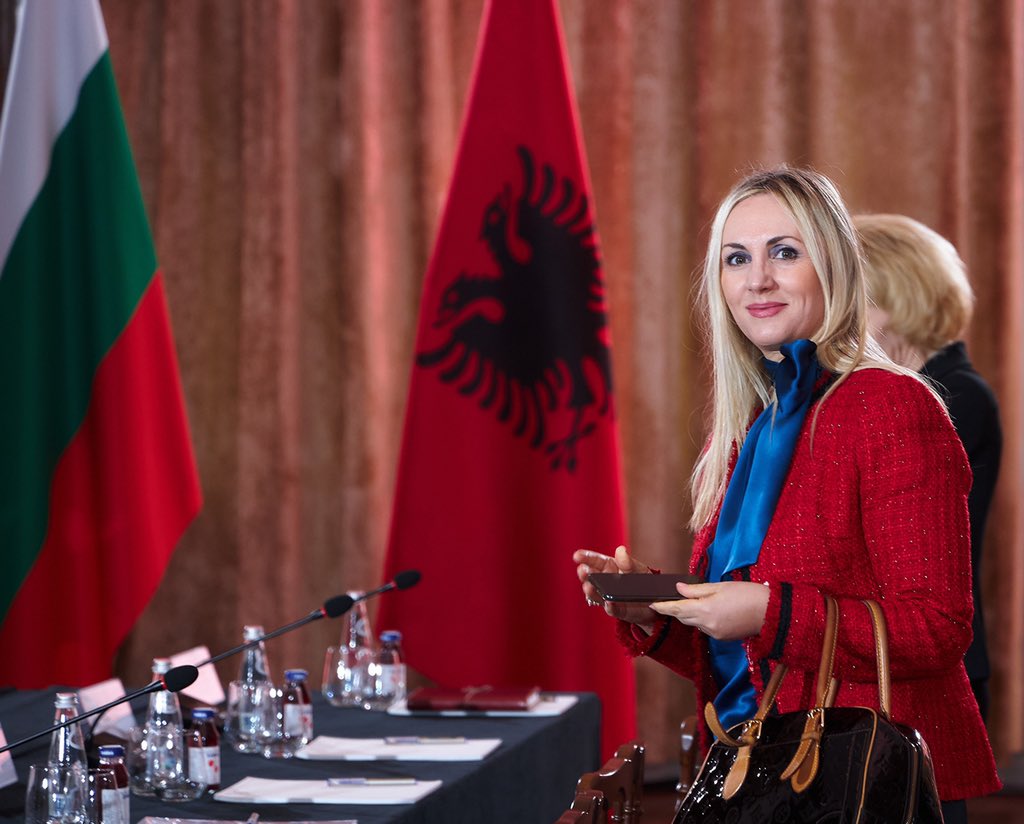
Tirana : European Capital of Youth 2022 aims to empower the future of education in Albania.
Even as far back as 2017 UNICEF were celebrating the successes of a developing Albanian education system. “What is of importance for the country to celebrate is that not only Albanian children do better in academic achievement, but that the Albanian schools are preparing citizens who have values and commitment. PISA results show that Albanian children’s sense of community belonging and wellbeing is very high, ranking third after Spain and Austria among all participating countries. Bold reforms and innovative initiatives such as the ones on Schools as Community Centers are already providing their fruits.”
“This is a strong indicator that Albanian schools are on the right track to provide a solid education to all children, regardless of their economic backgrounds. Education is a fundamental human right. It is critical for long-term economic growth and crucial for the achievement of all the United Nations Sustainable Development Goals 4, on inclusive quality education.” said Dr. Ezio Gianni Murzi, UNICEF Representative in Albania. “We are proud today that many of the bold reforms of the Ministry of Education and Youth which UNICEF and partners have supported in curriculum development, improving preschool quality, teacher training and qualification are working”- said Dr. Ezio Gianni Murzi, UNICEF Representative in Albania.
A lot has happened to affect education since 2017 but whereas the pandemic caused challenges and long term headaches for traditional education systems, it also allowed developing systems, such as Albania to embrace new technology and speed up the reforms that were already planned – indeed online learning platforms were being introduced from 2018 and the best teachers in Albania were putting many of their lessons online – to date over 17000 are available and the systems that Albania developed have been successfully exported to other countries within the Balkan peninsula.
The Albanian Ministry of Education and Youth are also at the forefront of the development of Higher education and University reform. As with all countries, the need for internationally recognised Universities is a priority for the development of skills, quality assurance and research. As a result, qualifications of common standards tend to become competitive because of the European vision that Albania has.
Emerging from the global pandemic and returning to the classroom has challenges. In some countries student apathy has become an issue which is being tackled by financial incentives and active marketing campaigns. Albania has taken a slightly different approach – through student empowerment and by embracing the European capital of Youth initiative.
The European Youth Capital is awarded by the European Youth Forum, which aims to empower young people, boost their participation and strengthen European identity.
To find out more about Albania’s role as host of European Capital of Youth 2022, and how to inspire the next generation of leaders while retaining a strong cultural heritage, we interviewed H.E.Donika Hoxha – Ambassador of the Republic of Albania to the republic of Bulgaria and the Republic of Moldova.
Dr Donika Hoxha has been the Ambassador of the Republic of Albania to the Republic of Bulgaria since October 2018 and the Ambassador to the Republic of Moldova since October 2019, although she began her professional career in 1998 at the Ministry of Culture, Youth and Sport of the Republic of Albania.
What motivates you to represent your country abroad and what is the message you want to spread through your work?
Being a diplomat and representing your own country is not merely a profession. You have to love your country, what it has been at different times in its history, and begin your duty by knowing what best serves its interests and then seek to achieve an outcome as close to those requirements as possible. For this, you need to invest time, energy and effort in your own professional development.
One of the aims of the European Capital of Youth is to empower the next generation – how do you do that?
The most important qualities of a good leader have always been strategic and critical thinking, innovation and action. As we move farther into 2022, after being faced with the biggest challenge of the century, the COVID pandemic, I believe that the best leaders continue to be those who inspire, motivate and empower their team. I would like to quote Steve Jobs “Management is about persuading people to do things they do not want to do, while leadership is about inspiring people to do things they never thought they could.”
To be an effective leader you’ll also need to be a good listener and communicator. Among the skills we need to improve are transparency and good communication, to ensure that everyone has the right information no matter where they work and to get motivated to be engaged. Accountability is yet another important matter which factors into success. Leaders must hold themselves accountable to do the necessary work to fulfil their promises.
A good leader needs to have the resilience to push himself/herself over, through, around, and sometimes under obstacles. True motivation only appears by overcoming difficulties.
How do new leaders rise and how we could support and develop new leaders among the young generation?
Most leaders throughout history have emerged out of the needs of the situation, arising from the dynamics and processes that unfold within and among a group of individuals as they endeavour to achieve a collective goal. As different situations call for different configurations of knowledge, skills, and abilities, the group turns to the members who mostly display drive, self-confidence, knowledge of the situation, honesty, and integrity. It is not difficult to spot them as they are able to exert considerable influence and provide direction while driven by a vision embraced by the entire group.
Talented up-and-coming new leaders among the young generation need challenging assignments that stretch them to new heights. We need to believe in them, encourage and support their aspirations. We need to produce more leaders rather than more followers, which is fundamental to long term success. To do that we need to support leadership development initiatives among the youngest generation, empowering them to make decisions that support the goals and vision of the community.
Is that why Tirana becoming the European Youth Capital is so important?
We need to create the conditions for our young people not to flee our countries and develop their talents. This would give long-term competitive advantages to our countries, especially considering our current situation of brain drain. Leaders exist at all levels. We have to identify the ones who can step in and fill critical roles when necessary. This should be our mission. As I said above, we must be held accountable for developing other leaders
What can be done in order young people to be involved and engaged in Cultural Heritage, to safeguard and use these values?
There is a risk that certain elements of intangible cultural heritage could die out or disappear without help, but how can we safeguard and manage a heritage that is constantly changing and part of ‘living culture’ without freezing or trivialising it? Safeguarding them is about the transferring of knowledge, skills and meaning. Hence, first and foremost, a good knowledge by the young generation of the values of culture as a symbol of the identity of a country is significantly needed. Unfortunately, there is still a quite distant relationship between the young generation and art history and education and one of the main challenges in safeguarding intangible heritage is the loss of interest and enthusiasm to practise by the young generation.
We need to cultivate young people’s interest and nurture their curiosity. More efforts and concrete actions are needed to integrate local knowledge in formal education curricula. However, that is not enough if they are not encouraged to go out and experience..
When transmitted from generation to generation, intangible heritage is continuously created and recreated. It is exactly recreation that we have to encourage. A substantial engagement of young professionals in spreading the importance of active participation of local communities to protect and safeguard the cultural activities needs to be encouraged. On the other hand, governments, international organisations and NGOs have an important role in supporting projects and initiatives to this end and of course, Tirana being the European Youth Capital 2022 will assist this!
Many thanks
Notes
Add in a program of events for European Youth Capital 2022
Intersperse with photos of cultural activity, and sights
Photo of Dr Dr Donika Hoxha at beginning
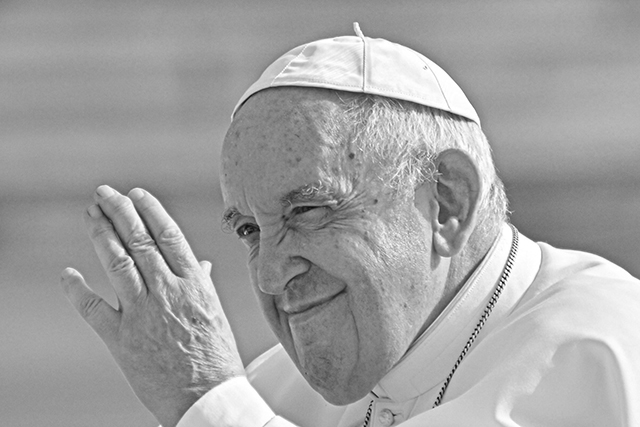
The religious world in all its diversity is waiting for the central event of the year – the VII Congress of Leaders of World and Traditional Religions in Nur-Sultan – the capital of Kazakhstan.
What kind of religious leaders will we see at this convention? Pope Francis I is on his first visit to this country. In the modern history of Kazakhstan, this is only the second visit of the Head of the Roman Catholic Church.
At the dawn of the third millennium in 2001, the Republic was visited by the Supreme Pontiff John Paul II. As the contemporaries of that event note, it was then that the idea of creating a general meeting of all faiths and establishing a dialogue between them was born, at the moment when the Supreme Pontiff spoke with Muslim youth about the Unity of God. In the new century, he said, there should be no conflicts between peoples, and that we should unite and forgive each other.
The new arrival of the Pope in Kazakhstan in the difficult circumstances of the times of global upheavals, as well as in the context of meetings with other leaders of world religions, promises to draw public attention to the moral principles of the ongoing processes for a short time.
Moreover, for the first time in the Central Asian region, a Holy Mass will be held for tens of thousands of Catholic believers, including pilgrims who will arrive in the capital of Kazakhstan.
In addition to the Pope, the congress is expected to be visited by the Supreme Imam of Al-Azhar Sheikh Ahmed Al-Tayeb, Patriarch Theophilus III of Jerusalem, Mufti Ravil Gaynutdin, Head of the Spiritual Administration of Muslims of the Russian Federation, and other heads of religious denominations and international organizations.
The high level of the guests of this congress more than corresponds to its theme «Studying and assessing the role that religious leaders are called upon to play in the spiritual and social development of mankind in the period after the coronavirus pandemic».
It is already known that as a result of the Congress, a Declaration will be adopted with important provisions regarding the active involvement of the leaders of world and traditional religions in the process of achieving long-term stability and peace.
31 YEARS YOUNG UZBEKISTAN: SUSTAINABLE PROGRESS FOR FURTHER PROSPERITY
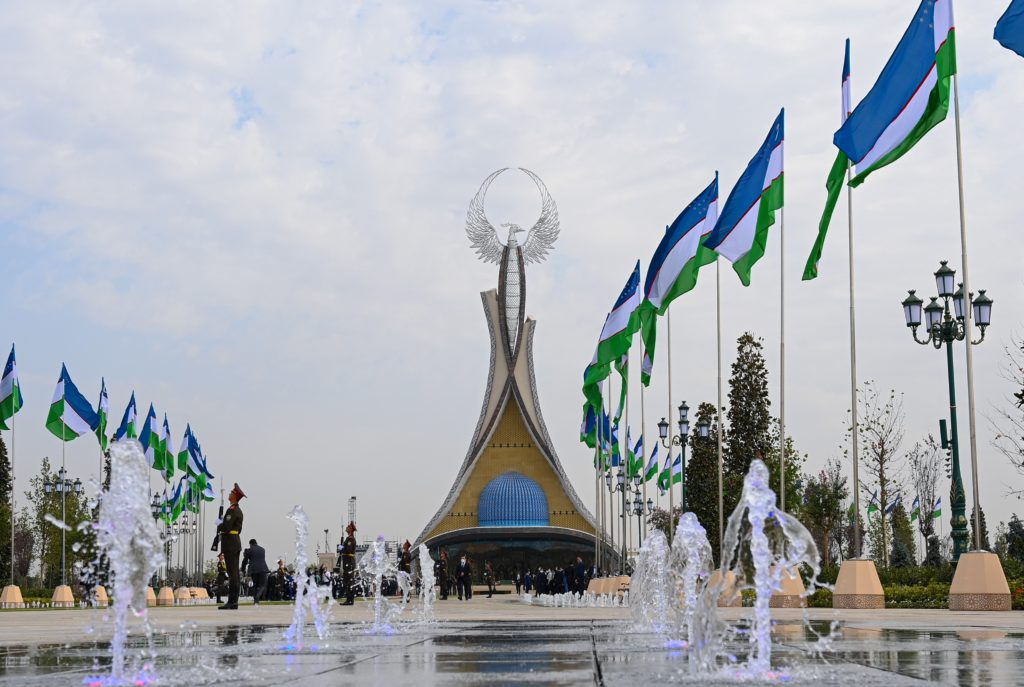
On september 1, 2022 Uzbekistan celebrated the 31st Anniversary of its Independence. From the very beginning the nation has set an ambitious goal – to become a developed, sustainable, democratic state. In a relatively short period, profound structural and institutional transformations were carried out that laid the foundations of a multi-structured economy and principles of secular, democratic governance.
Launched in 2017, the unprecedented large-scale reform program of the newly elected modernist President Shavkat Mirziyoyev has created a new milestone in the nation’s development. New strategic priorities have been established in the spheres of public administration, the rule of law and human rights, economic liberalisation, social policy and foreign relations. A long-time inward-looking country has become more open and active.
As a result, in just five years Uzbekistan has achieved a lot. For example, Uzbekistan was elected to the UN Human Rights Council, adopted a National Human Rights Strategy, a Gender Equality Strategy and ratified the UN Convention on the Rights of Persons with Disabilities. Forced labour and child labour were completely eradicated in the country, ending an international boycott of Uzbekistan’s cotton and textiles.
The foreign exchange market was liberalised. For the first time, Uzbek banks and enterprises received international ratings and entered the world financial markets, and international bonds in national currency were also issued on world markets. The country was admitted as a beneficiary in EU’s GSP+ and the UK’s Enhanced GSP Scheme. Foreign trade turnover increased by 70% – to more than $42 bln in 2021. Exports rose 40%, while imports doubled.
Open, pragmatic and humanistic foreign policy resulted in the creation of a completely new atmosphere of constructive cooperation and good-neighbourliness in Central Asia, and expanding relations with the world. A visa-free regime was introduced to the citizens of 90 foreign countries and people from around the same number of states can now use a simplified visa procedure. In this way, the country has become the most open state in the region.
Broad public support for President Mirziyoyev’s reformist course ensured his re-election in 2021 and adoption of the Development Strategy for New Uzbekistan on an even deeper and wider modernisation of the country. Ambitious goals were set for 2030, such as increasing GDP per capita by 60%, joining the ranks of upper middle-income states, and pouring $120 billion into the economy, including $70 billion in FDI.
A focus on human rights and dignity, a vibrant civil society, a welfare state, sustainable, environmentally friendly and inclusive development have been put at the heart of the transformation. To consolidate these important values a major round of constitutional reform was initiated.
Our citizens have taken an active and direct part in shaping the new Constitution and have been active in a nationwide discussion. Tens of thousands of proposals from people were considered by a Constitutional Commission, formed from MPs, senators, representatives of civil society and other sectors. The President has also proposed several initiatives for inclusion into the constitution, including abolition of the death penalty, establishment of so-called Miranda rights and Habeas Corpus principles.
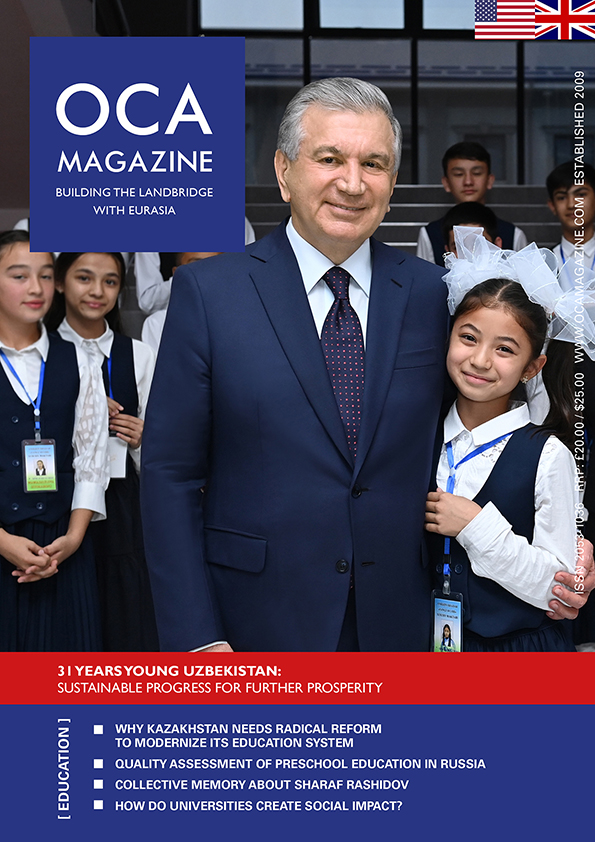
Human capital development, as the cornerstone of any modernization and innovation-based economic success, has become a strategic priority in Uzbekistan where more than 60% of its 35 million strong population are under the age of 30.
The country is actively implementing a system of lifelong education and seeking to build a knowledge economy, which includes the restructuring of the education system, advanced training of personnel, integration of education with science and business.
Enrolment of children in preschool education has more than doubled since 2017, exceeding 1.8 million people (67.2% of the age group). The number of preschool educational organizations has increased five-fold – up to almost 28,000. By 2030, enrolment in the sector will increase from 67.2% to 80.8%.
In public education the main focus is on improving the qualifications of teachers, introducing innovative technologies in scientific and technical education through a network of so-called Presidential Schools operating under the British Curriculum. Specialized schools with in-depth study of ICT and the hard sciences have been established, and a fully inclusive education system is being introduced in schools.
Over the past five years, 55 new universities have been created in the country bringing the total to 162. Along with branches of 30 foreign universities, enrolment in higher education is projected to reach 50% by 2030 (compared with 9% in 2016, 28% in 2021). The number of students studying abroad through the “Hope of the Nation” Foundation is growing fast. The transition to a “digital university” model has begun, and a new system of vocational education has been implemented. Through introducing standards of excellence and international educational programs, Uzbekistan strives to become a regional hub of higher education.
Retrospectively, Uzbekistan is celebrating its 31st anniversary of independence with a solid record of achievement. The country has secured the status as a significant regional power, and its comprehensive reforms, which have become irreversible and enjoy public and international support, are the driver for further development.
Even though Uzbekistan seldom generates front-page news in the UK, over the past three decades a solid base for comprehensive bilateral cooperation has been developed. Importantly, the foundations for this were laid even earlier, over 600 years ago when Amir Timur, commonly known as Tamerlane, ruler of the vast Timurid Empire, and King Henry IV of England were exchanging correspondence, both seeking friendly relations and expanded trade links.
In the modern era, bilateral relations received a “second wind” from Uzbekistan’s reform programme. The UK’s Global Britain strategy has added to the momentum. As a result, new possibilities for cooperation have been opened up and the pace of change has grown ever more intense. For example, Uzbekistan became the first Central Asian state to sign with the post-Brexit UK a bilateral political and cooperation deal – a Partnership and Cooperation Agreement. Last year, Uzbekistan also gained trade beneficiary status in the UK’s GSP Enhanced Framework, becoming the first country to qualify for that after Brexit.
The desire to develop trade and economic ties, reflected in the correspondence between Amir Timur and Henry IV, is today complemented by a broad range of other topics: from political dialogue and addressing global challenges, to the green economy, education, and culture. It is a close friendship which is valued enormously in Uzbekistan that looks forward to further broadening and strengthening its partnership and friendship with the UK.
Said Rustamov
At present, representatives of 130 ethnic groups and 18 religious denominations live in Kazakhstan, among them – Muslims, Orthodox, Catholics, Protestants, Jews, Buddhists. Throughout the country, many mosques and temples are operating and being built, which are actively visited by believers.
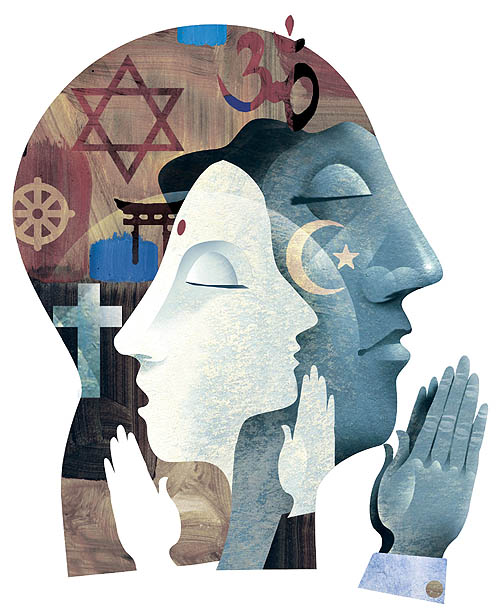
Religious freedoms in the Republic of Kazakhstan are guaranteed by Article 14 of the country’s Constitution, which prohibits any discrimination based on religion, and Article 19 guarantees that everyone «has the right to determine and indicate or not indicate their national, party and religious affiliation».
By the way, according to Gallup1 research, the level of religiosity of the population of Kazakhstan is the lowest in the region of Central Asia – 43%. Nevertheless, individual representatives of the international and human rights communities (the State Department, the ODIHR2, etc.) repeatedly voiced unfounded criticism of the state of religious freedoms in the republic.
However, according to the latest USCIRF3 reports, there is notable progress towards establishing religious freedom in Kazakhstan. Thus, the document notes that in the region of Eastern Europe and Central Asia, according to these indicators, Kazakhstan is in 4th place among 14 countries (Russia – 13, Uzbekistan – 12, Kyrgyzstan – 11).
September 14-15 this year Nur-Sultan will host one of the most significant international events of the year – the Congress of World and Traditional Religions, during which the visit of the head of the Catholic Church and the state of the Vatican – the Pope, as well as 130 delegations from 60 countries of the world is expected. We can openly say that this platform is unique, which brings together the first clerics of the world, ex-heads of state, representatives of international and public organizations and world media.
The planned event of world significance, where Kazakhstan acts as a state committed to the ideas of tolerance, openness, mutual respect and trust between the authorities and religious associations of the country, testifies to the high confidence on the part of the leaders of international confessions and the recognition of the Republic of Kazakhstan as a crossroads of many world religions.
June 28-30 this year in Washington (USA) at the 2nd Summit on Religious Freedom, the speech of the head of the «Union of Evangelical Christians of Kazakhstan» Y. Shumaev took place, which debunked the existing negative myths regarding the religious environment in the Republic of Kazakhstan.
In his speech, the religious leader noted the openness to dialogue, as well as the trusting attitude on the part of state structures to the believing environment, which is reflected in the wide opportunities for followers of all confessions and religions to meet their spiritual needs.
As an example, he shared the positive experience of the participation of the «Union of Christians of the Evangelical Faith of Kazakhstan» in joint charitable activities with the authorities to provide assistance to socially vulnerable segments of the population. Since 2021, the organization has allocated funding in the amount of more than 10 million tenge for the humanitarian direction.
In response to the questions asked by the American audience, Yuri Shumaev stated with full confidence that there were no facts of persecution of Protestants in Kazakhstan. He also explained that the measures taken by the Kazakhstani power structures to ensure public security apply to all citizens, regardless of religion, nationality and gender.
After listening to the report of the Kazakh religious figure, USCIRF representatives emphasized the importance of his theses and supported the initiatives of the Union in building a dialogue between the state and the religious community.
In general, the ongoing events contribute to the formation of an objective opinion of the international human rights environment about the positive interfaith situation in the Republic of Kazakhstan and the preservation of interethnic harmony in the religious environment.
[1] American Institute of Public Opinion.
2 Bureau for Democratic Institutions and Human Rights.
3 US Commission on International Religious Freedom.
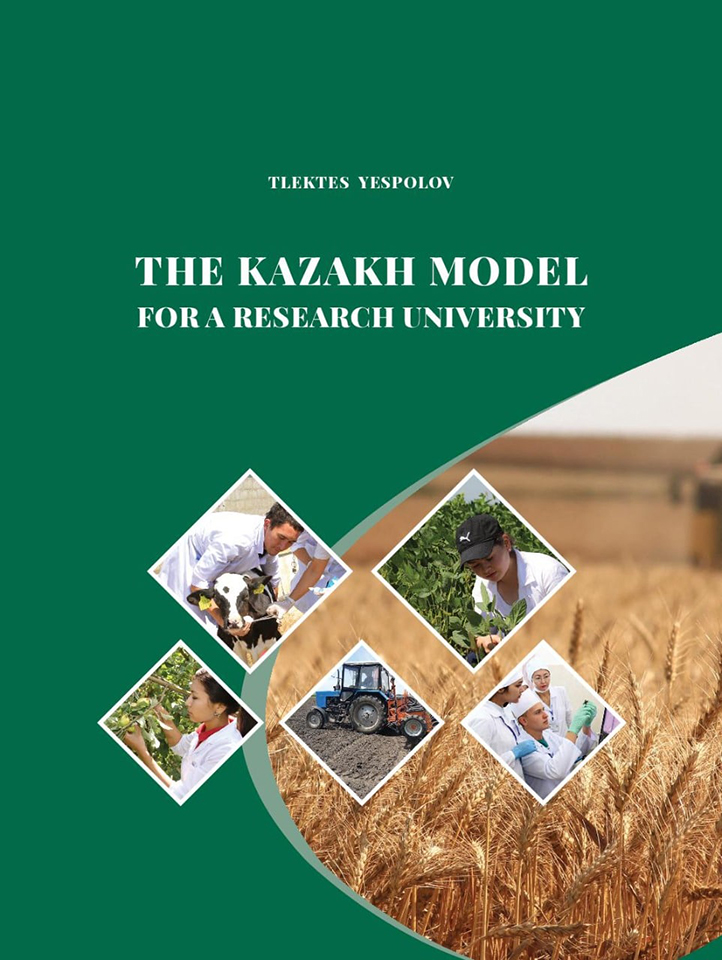
New Book Seeks to Help Fight Against Coming World Hunger…and Help Solve Other Critical Issues
Together with the editors of Hertfordshire Press (Great Britain), the rector of KazNARU, Tlektes Yespolov, has published a new book, “The Kazakh Model for a research University”, dedicated to the research of the university. This invaluable experience can help the universities of the world become an effective platform for solving the challenges of our time, such as, for example, the unexpected threat of world hunger.
At present, when in countries with a heightened risk of a decline in agricultural production, as well as imports and exports of key products for food production, the impact on a sharp increase in the prices of alternative agricultural products, we must consider the development of the agricultural sector.
In this book Mr. Yespolov publishes the university’s 90 years of research related to the development of agricultural activities, crop sources and crop sustainability. The university has successfully participated in joint projects with USDA, NASA and Michigan National University.
A particularly valuable outstanding feature of the book “Kazakh Model of a Research University” was the chapter, which is a step-by-step guide to transforming an educational organization into a national research institute. The results of the work are shown in a worldwide international research project. The English language, in which the book was published, is accessible and interesting not only for the CIS countries, but also for the rest of the world.
“Kazakhstan Model of a Research University” has received positive feedback from professional reviewers such as Thomas Celluchi, Ph.D., MBA, CEO of Bravatek Solutions Inc., White House Commercialization Adviser. Representatives of foreign universities were also highly appreciated. An international expert, international project manager of Wageningen University, Eva Wietsma, noted: “KazNARU develops new knowledge and advanced strategies, uses models and learning technologies based on modern international practices.”
The book was published in the UK with the official presentation of the book taking place on June 15 in Almaty at the KazNARU University, with further launches in November at UK universities. It will also feature in London as part of the eleventh Open Eurasian Literary Festival & Book Forum (November 25-28, 2022) by the Eurasian Creative Guild (London), which will form a discussion platform that will bring together academics from all over the world.
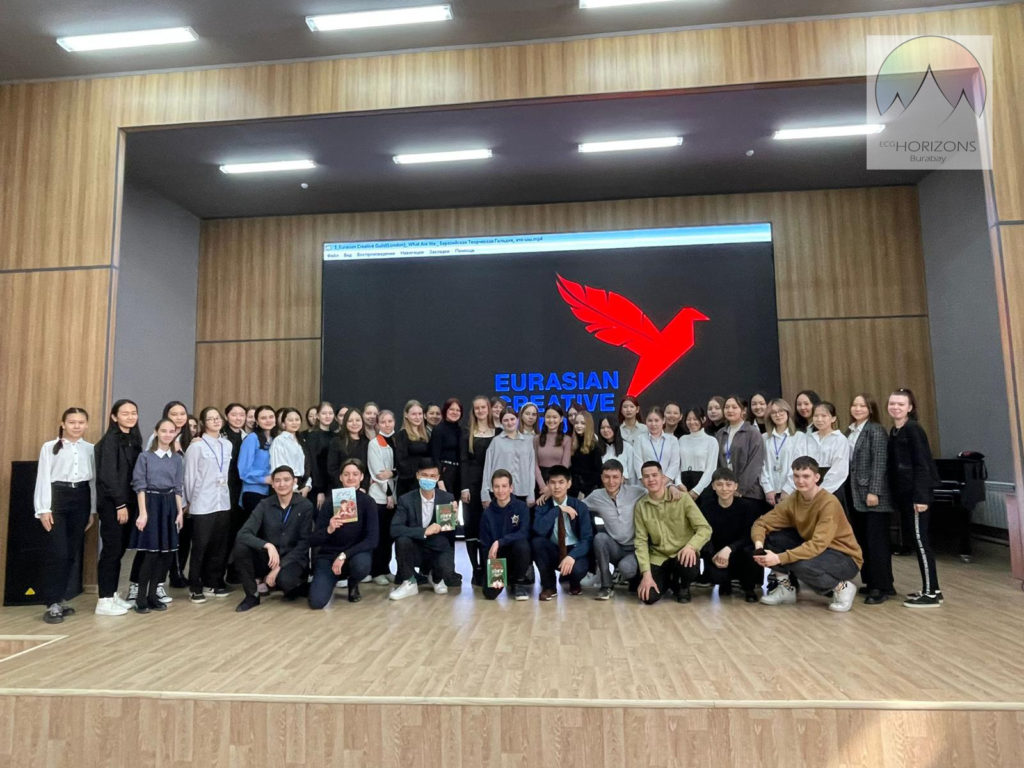
A Master Comic Visits Schuchinsk
For the first time, school children and students of the Burabay district had the opportunity to take part in master classes on the creation of comic books from Daniel Akhmed – the young author of British publishing house, Hertfordshire Press.
Daniel, the young author of “The Final” graphic novel, made his first visit to Kazakhstan, where he visited both Nur-Sultan, Almaty, and Burabay. The purpose of the visit was to hold a series of art presentations for the youth of the city. The program was organizsd by the creative residence of ECG HORIZONS BURABAY (Shchuchinsk) with the support of the non-profit public organization Eurasian Creative Guild (London).
During the five days Daniel held seven presentations. More than 200 young people, from 11 to 25 years old (as well as their teachers and mentors) learned the basics of creating comics, thanks to the support of the Guild Ambassador in the Burabay district, Yussuf Krykbessov.
“We were very lucky that Daniel came to us in Schuchinsk. I was moved to the core that our children are striving to learn English, they tried to talk to Daniel! We are finally joining European models of creative activity, this is a very significant event” – Mr. Krykbessov emphasised.
The first presentation started on the hospitable venue of the Higher College of Technology, where future programmers and designers learnt the art of creating comics. During the meeting, the audience received not only techniques and tricks that Daniel had experienced first-hand, but also discussed with Taina Kaunis, executive director of ECG (London), the relevance of comic books for programmers.
The director of the school Mr. Kuanyshbek Shayakhmetov expressed gratitude to the Guild team. “We are grateful to our guests for lighting up a spark of desire in the souls of the guys to create, study, learn and create something new in their lives,” he said.
Daniel continued the cycle of meetings with a presentation at the Arman School of Art, where the youngest students delved deeper into the technical details of the rendering of characters and pages. “Daniel held a master class on creating comics, which made the kids very interested. It should be noted that Daniel is only 13 years old, and he already has personal creative publications on this topic,” – the school director Mrs. Aigul Turguzhina shared. No less actively and exciting, Daniel held a master class for students of Gymnasium No. 1. Curious students did not plan on stopping him any time soon, asking question after question.
Students of the school “IQanat Burabay” also discussed the creation of comics. The audience gathered in the cinema hall, where a theatrr rehearsal had just ended, so a creative atmosphere surrounded the event from the very beginning of the meeting. And the boldest of the meeting participants even asked Daniel for autographs, so he gladly signed copies of his book for them.
Daniel talked intensively with translation students of the Higher Pedagogical College: the students not only enthusiastically participated in the conversation, but also supported the idea of volunteer assistance to the international festival “Voices of Friends: Poetry & Art,” which will soon take place in Shchuchinsk at the initiative of the ECG (London). “Surprisingly, even I, a person twice as old as Daniel, found a lot of new and interesting things for myself in the master class,” – Nelly Filippova, a hotel designer, shared.
Of course, participants benefited not only from the performance of Daniel himself but also the projects in which talented young people can participate. The founder and head of the Hertfordshire Press publishing house, vice-chairman of ECG (London) – Marat Akhmedzhanov – was also present and noted that “Often teachers and parents find the comic to be something frivolous and sometimes harmful.
But let’s turn to statistics. In 2020, the entire US comic book industry (all periodicals, graphic novels and digital editions of all publishers, genres and channels, as well as merch) – brought a record $1.28 billion, that is, approximately 800 billion tenge (according to the DTF portal). Not so bad to make more than a billion dollars, right? At the same time, Comics beat published statistics on sales of graphic novels and manga in the United States for 2021. Judging by it, the popularity of the genre is at an unprecedented height, and sales are growing at a huge pace. For 2021, sales grew by almost 70%, and the total number of comic books/graphic novels sold for the year is more than in 2018 and 2019 combined. Since 2003, growth has been an impressive 558%. The industry is probably going through a new golden age. The manga has even better numbers – the genre generated 280% more profits than last year (according to Shazoo).
The heads of the ECG HORIZONS BURABAY and ECG (London) residence plan to make such creative “business trips” of foreign cultural and art workers regular, allowing residents of the Akmola region to become acquainted with modern trends in creative industries and realize their creative potential.

The Independent Eurasian Film Festival Celebrates its Fourth Anniversary
On May 19-25 in the heart of London (Romford) the IV ECG Film Festival, together with the Romford Film Festival, was held including the presentation of more than 10 Eurasian countries.
The festival was organised by the British non-profit organization, the Eurasian Creative Guild (London), with the support and participation of the British film festival – Romford Film Festival and Premiere Cinemas. For the fourth year in a row, the Eurasian Film Festival has traditionally gathered the attention of many talented directors, actors, producers, screenwriters and animators from all over the world. Over 500 entries from 30 countries were evaluated by and international jury.
2022 Jury Members:
Spencer Hawken: director, founder of Romford Film Festival (UK)
Bradley Barton: director, film critic (UK)
Michael Sagatis: researcher, composer and cinematographer (Wales)
Tim Wilson; director animator and theatre designer (UK)
Sergei Timchenko: director. editor and operator (Ukraine)
Nuno Martini: cinematographer, editor, screenwriter, producer from Lisbon
(Portugal)
Taalaibek Kulmendeev: Producer, director, screenwriter. Co-Chairman of the Confederation of Unions of Cinematographers of the CIS and Baltic States. (Kyrgyzstan)
Mansur Sarsembaev: screenwriter, director, winner of the “Altyn Kalam” award for “Best Screenplay and Dramaturgy of the Year”, winner of the third “ECG Film Festival” in the nomination “Best Screenplay” (Kazakhstan).
Maksud Sarsembaev: screenwriter, director, winner of the third “ECG Film Festival” in the nomination “Best Screenplay” (Kazakhstan)
Peter Blunden: British film critic, member of the jury at the Romford Film Festival and the Romford Horror Festival (UK).
Oksana Zhukova: TV journalist, TV presenter, head of the “ArtMedia” production center.
The official Opening of the festival took place on May 19. On the first day, the finalist films in the “Short Film” category were presented to the audience. Among them were such films as ELECTROOKO – “Tomorrow” by the Uzbek journalist, producer and public figure, Nikita Makarenko; the debut short film “Steps” by AUCA graduate from Kyrgyzstan, Zhanaiym Ashimova; a film by a Ukrainian director, Natalia Pasenetskaya, “Honorable Lviv Lady” and the film of a well-known director from Azerbaijan “The Last One” Fariz Ahmadov.
“Good sentiment, nice camerawork. And even though by some cultures this may be daring, its a nice innocent piece”, commented director and film critic Spencer Hawken on the Ukrainian film.
At 8 p.m, the solemn Opening Ceremony of the festival took place, where the vice-chairman of the Eurasian Creative Guild, Mark (Marat) Akhmedjanov, and a member of the board of curators of the Eurasian Creative Guild, John Farndon, Mayor of the London district of Havering (Havering Borough) – John Mylod and the founder of the Romford Film Festival, Spencer Hawken all took to the stage to welcome participants. It served as a starting point for the British public to immerse themselves in the world of Eurasian cinema. A new international film festival of the guild in Kazakhstan was also announced – Burabay International Short Film Festival, which will be held in June 2023.
Prior to the opening ceremony, all guests were invited to the premiere of a feature film by an Iranian director and musician in London, “World, Northern Hemisphere”, Hossein Tehrani.
“This is a forceful film about growing up in Iran as the embattled main character is constantly clashing with his overbearing mother about how to classify the discovery of human remains found”, noted Welsh director and film critic, Michael Sagatis.
The second culminating day of the shows took place on May 21st. Among the films of the finalists the following works were presented:
Music video – “His saving Grace” directed by Alexey Pavelko from Russia
Mobile Video – Eli Nazik, Mehmet Tigli (Turkey)
Animated film – Lullaby created by the director and founder of the animation studio “Dala Animation” in Kazakhstan, Dilshat Rakhmatullin.
Short film
On the Silk Road – an aspiring director from Uzbekistan, Sherzod Nazarov
Nunik – director, screenwriter and winner of several international festivals with 20 years of experience in the field of cinema from Armenia, Elena Arshakyan
“Coincidence” – director and screenwriter from Almaty, Kazakhstan, Egor Lymarev
“Catherine II. The Fall of the Great” – the youngest director from Russia, Andrey Archakov
Documentary film
“Saykbai and the Beatles” – Honored Artist and Cultural Figure of Kyrgyzstan, Tynai Ibragimov
“Stray Children” – director from Russia, Anna Dranitsyna
“The Dream of Kaplan” – Devrim Taban, Tahir Un (Turkey)
“Share the Sky” – musician and director of documentary and feature films from Uzbekistan, Aliaskar Fatkhullin
ZHANYRTUU (Renewal) – Victoria Arkhangelskaya (Kyrgyzstan)
Also, on May 21, a guest film from Russia “Blockade Diary” by Russian director, screenwriter and producer ,Andrei Zaitsev, was shown, which caused heated discussions among the audience. A film about February 1942, with severe frosts and a terrible famine, it follows a young woman, Olga, who has just buried her husband and is sure that soon she too will die of starvation. She simply wants to see her father one last time and say goodbye to him.
As part of the online program of the film festival, a master class by Irina Egorova “Let me introduce you to yourself!” was held. Irina Egorova is an actress, writer, chief director of the Komedian Theatre in Moscow, with 20 years of acting teaching experience. Irina shared her experience and skills on how to learn to see, hear, perceive each other, and direct speech in such a way as to be understood.
The final day of the festival, May 25, became the most memorable among the festival days. Two feature films from Russia and Tajikistan closed the premiere program of finalist films. “Tygyn Darhan” by the famous director and screenwriter from Russia, Nikita Arzhakov and the film “Water Boy” by Faizullo Faiz (Tajikistan).
“A beautiful film, requiring some effort to watch but so thoroughly rewarding. There is no levity here: this is about a bellicose and determined history but it is a story worth telling and it is a stunning piece of cinema”, commented film critic from England, Professor Tim Wilson.
The main event of the day was the Closing Ceremony of the IV Eurasian Film Festival, where the best Eurasian films of 2022 were announced.
The guests of honour of the Ceremony were the Ambassador of the Republic of Kyrgyzstan to the UK, Ulan Zhusupov and adviser Batyr Kadyrkulov. Advisor of Embassy of Kazakhstan, Arsen Omarov, Second Secretary of the Embassy of the Russian Federation, Konstantin Yushmanov and Second Secretary of the Embassy of the Republic of Tajikistan in the UK, Bakhtiyor Mukhamedzhanov.
The winners were selected by both an audience vote and the evaluations of the jury members. The winners of the IV Eurasian ECG Film Festival are:
Grand Prix: Best Eurasian feature film – Tygyn Darhan (Sakha-Yakutia/Russia); Nikita Arzhakov
Best Eurasian Short Film – On the Silk Road (Uzbekistan); Sherzod Nazarov
Best Eurasian Documentary Film – Sayakbai and the Beatles (Kyrgyzstan); Tyni Ibragimov
Best Eurasian screenplay – Bifurcation point (Kazakhstan); Natalia Makhno
Additional awards were given to:
Audience Award
Audience Choice Award – Honorable Lviv Lady (Ukraine); Natalia Pasenetskaya
Audience Choice Award – Water Boy (Tajikistan); Faizullo Faiz
Audience Choice Award – ZHANYRTUU (Renewal) (Kyrgyzstan); Victoria
Arkhangelskaya
Audience Choice Award – Lullaby (Kazakhstan); Dilshat Rakhmatullin.
Festival diplomas:
Certificate of Acknowledgment / Music Video- His saving Grace; Alexey Pavelko (Russia)
Certificate of Acknowledgment / Mobile Video – Eli Nazik; Mehmet Tigli (Turkey)
Honorary diplomas from the Festival Jury:
Honorary Mention Award – Nunik (Armenia), Elena Arshakyan
Honorary Mention Award – The Dream of Kaplan” (Turkey), Devrim Taban, Tahir Un
Honorary Mention Award – “Share the Sky” (Uzbekistan), Aliaskar Fatkhullin
Honorary Mention Award – BLACK FOREST MYSTERY (Great Britain), Jaroslaw Gogolin
Best Young Director – Catherine II. The Fall of the Great (Russia), Andrey Archakov
The 5th Eurasian Film Festival (London) opened entries for the 2023 season. Applications can be made through the FilmFreeway platform.
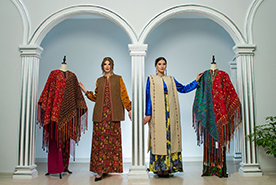
A Turkmen Tour of Fashion
Simplicity without combinations
Turkmen dress is simple and of the same type. Tunics worn next to the skin, wide trousers, gowns, fur coats, turbans, and takhi or tyubeteyki formed the basis of the wardrobes of both men and women.
National Clothing – Male Costume
If we take the men’s national costume of any Central Asian nation, we see that headdress is given special attention. In Turkmenistan the telpek, a lambskin hat, is a sign of masculinity.
The telpek is special: in summer it protects from heat, in winter from cold, and in bad weather from rain. Although there are drawbacks too: it is quite bulky and inconvenient for everyday life, especially when particular agricultural or other work had to be performed. However, this is provided for. If necessary, the telpek can be taken off and hung on a nail or twig: beneath the telpekmen a small skullcap with Turkmen type embroidery of national ornaments is also worn. This avoids a bare head, which is considered indecent. Otherwise the telpek always adorns a man’s head. Removing the telpek from someone’s head in public is considered to be the worst of insults, which is often washed away in blood.
National Clothing – Robes and Skirts
Turkmen women’s clothing, especially of those who live in the southern regions of the country, attracts a lot of public attention with its embroidered headband (chirpy), decorated robes (kurt), dresses (koynek), loose robes (chavyt, maldoi don, and sarytahta don).
In general, Turkmen women’s clothing retains its simplicity of form and balance. The cut, successfully discovered and adapted to the life and climate, has not changed for centuries. Women’s clothing is mostly made of silk and cotton fabrics. In the making of traditional dresses (koynek), cloaks and wraps (kurt, chyrpy), a silk cloth (keteni) in red, green, and purple is used. For the tailoring of women’s loose coats (chavyt, maldoi don, sarytahta don) fabrics such as sarytahta, gyrmyzydonlyk, maldoi, cheppetou are used.
The clothing of rich people is decorated with embroidery. There were various methods of embroidery, – keshte, Simplicity without combinations
Turkmen dress is simple and of the same type. Tunics worn next to the skin, wide trousers, gowns, fur coats, turbans, and takhi or tyubeteyki formed the basis of the wardrobes of both men and women.
National Clothing – Male Costume
If we take the men’s national costume of any Central Asian nation, we see that headdress is given special attention. In Turkmenistan the telpek, a lambskin hat, is a sign of masculinity.
The telpek was special: in summer it protected from heat, in winter from cold, and in bad weather from rain. Although there were drawbacks too: quite bulky and inconvenient for everyday life, especially when particular agricultural or other work had to be performed. However, this was provided for. If necessary, the telpek could be taken off and hung on a nail or twig: beneath the telpekmen wore a small skullcap with Turkmen type embroidery of national ornaments. This avoided a bare head, which was considered indecent. Otherwise the telpek always adorned a man’s head. Removing the telpek from someone’s head in public was considered to be the worst of insults, which was often washed away in blood.
To conclude this brief excursion into the past, I would like to note that the telpek is a unique and beautiful aspect of a hat, which still is worn by the vast majority of older and some middle-aged people.
National Clothing – Robes and Skirts
Turkmen women’s clothing, especially of those who live in the southern regions of the country, attracts a lot of public attention with its embroidered headband (chirpy), decorated robes (kurt), dresses (koynek), loose robes (chavyt, maldoi don, and sarytahta don).
In general, Turkmen women’s clothing retains its simplicity of form and balance. The cut, successfully discovered and adapted to the life and climate, has not changed for centuries. Women’s clothing was mostly made of silk and cotton fabrics. In the making of traditional dresses (koynek), cloaks and wraps (kurt, chyrpy), a silk cloth (keteni) in red, green, and purple was used. For the tailoring of women’s loose coats (chavyt, maldoi don, sarytahta don) fabrics such as sarytahta, gyrmyzydonlyk, maldoi, cheppetou were used.
The clothing of rich people is decorated with embroidery. There are various methods of embroidery, – keshte, haym, kok, chigmet, ilme, kokdzheme, oram((two-sided looped and lower seams, satin stitch)) – ornamentation, which demonstrate the rich artistry and imagination of the seamstresses.
Natural dyes were used in the past. Red, in different shades (from dark red to brown, from bright red to magenta), was obtained from vegetable dyes, extracted from the stem and roots of the madder plant, grown in Turkmenistan, or imported from Iran. The blue dye nil (from the Arabic word for blue), was also imported from Iran, and was widely used among the population for dyeing wool and silk. For yellow dye, seamstresses used the shrubby plant sary chop, native to the mountains.
Women’s headrobes (chyrpy) were intended to be worn on special festival occasions. In the southern region there were chyrpy in three colours: white, yellow and green. They draw attention to form of construction, strictness of colour, great skill in execution, delicate taste and amazing bonding of decor with colour, texture, fabric and cut. The peculiarity of ornamentation in each gown is outstanding. They are executed in variable patterns of stylized forms. Vegetable ornaments, stylized images of animals, and household goods were used on some of the items. Still, the favourite motifs were flowers: lotus flowers, tulips, often enclosed in a circle or a diamond, which were used as a starting point for building compositions, right across the entire surface of the chyrpy.
The kurt (gizil kurt, yashyl kurt) is a type of gown-robe. They are decorated with embroidery, but to a lesser extent than chyrpy. The most common symbolic T-shaped ornament was used on the sides and bottoms of these gowns.
A variety of gown-robes (chovdurok) is worn by women living in northern areas of the country, and are called purendzhe or bash atgych. These days, such gowns are almost impossible to see in everyday use. Such clothes were made of red cloth or brocade fabric. The most common pattern is ghoul bossano, which has a vegetable origin, freely deployed on the entire surface of the gown.
For the draped headdress (byoreck), women from the Teke tribe use a head scarf (gynach). It is made of narrow strips of red, sometimes green keteni, and had a triangular shape. Two edges of the scarf are decorated with a broad woven ornamental band, adorned with long, wide tassels. Skilful use of ornamentation with white, black, and yellow flowers, in combination with the background, gives the shawl elegance and completeness.
National Turkmen costume is inconceivable without jewellery, which was once used as amulets, providing protection from diseases and sterility. If you look closely, you can see images of animals and insects in the jewellery, which once linked people with the elements of nature. Three to four year old girls wear bracelets, and clothes with pearl buttons and beads. The amount of decoration increases with age.
One of the interesting things is the small silver dome (kupby) that is worn on the head. Silver plates, ending with a fringe of hangers, are scattered from the edges of the dome throughout the skullcap. This hat, with a plume of feathers at the top, recalls a small helmet. Maiden’s (tahya) and women’s(byoreck) headdresses are finished with set of plates, pendants, pins, and amulets covering the temples, and guarding the neck, chest and shoulders. The Turkmen folk song goes: “When the geese … rise into the sky, then all the air is filled with their voices, when the girls go to fetch water, then all the air is filled with the ringing of jewelry.”
The amount and type of jewelry that a woman wore depended largely on her economic situation. On solemn occasions, a woman from a wealthy family would put on from six to eight kilogram’s of jewelry.
The ornaments are mostly silver, with inlays of natural stones: carnelian, which brings peace, joy and abundance according to ancient beliefs; turquoise, which improves vision; corals, giving richness and abundance of all fruits. The surfaces were covered with geometric and floral engraved patterns. Different tribes have different ornamental elements, but all Turkmen ornaments possess proportionality, conciseness, and massiveness.
Girl in Red
A girl in red is the dream of every Turkmen bachelor. Brides wore red dresses in the old days: a dress of red silk, on top of it a coat made of red cloth, below were red trousers. In addition, the groom at a wedding wore a red shirt, and children were also dressed in red.
Where does the love of red come from? Traditionally, red symbolised the life-giving forces of nature; it ascribed magical properties to protect people, to help them in life. The wearing of such clothes was considered the prerogative of children and youths, because of the belief in the beneficial effects of red. Colour in Turkmen clothing does not differ widely: it is dominated by red-brown tones, and the presence of blue, green, yellow, pink, blue and violet, black and white is optional. The palette of colours, going from red to white, and the fading of color, marks mankind’s life from birth to death. Young people wear bright clothes, in ageing the color becomes lighter, pastel: green – the color for girls, yellow – for older women and mothers, white – only for old women. This colour gradation is strictly observed in female headdresses and capes. After marriage or the marriage of a child, clothing colour changes to white for mothers. Some groups of Turkmens wear yellow clothing on the second day after the wedding. Later, yellow scarves are worn for 2-3 days, and then are worn only at mourning ceremonies.
Decorating Clothes
Turkmens decorate clothing very modestly: narrow geometric patterns of dots, dashes and double scrolls were sewn on the collar, and along the edges of clothing slits. The bases of slits are reinforced, especially with dense, bright satin, called gurtykin or pugtama.
The bottom of the trousers are also decorated with embroidery, but mainly for young people.
Turkmens sew amulets on outerwear when they leave their homes. Women usually sew a big red or green triangle (dogadzhik or doga), which means “protector from evil” on the back of men’s coats (chekmen). Women sew dogas not only on the back, but also on the sleeves and shoulders, and often embroidered them with their geometric or floral patterns. Against the modest background of the decoration of everyday clothing, the embroidered festival clothing of women was eye-catching, striking, with a variety of subjects portrayed and a wealth of fabric. Some groups of Turkmen women wear bibs on top of a simple dress(koynek), embroidered with colourful threads and oval silver plates (albasami), sewn in a series of 45-50 pieces, like scales covering the front of their dresses. Festive outerwear is brightly decorated: the neck and cuts are trimmed with silver circles (chapraz), and at the bottom of the chabyta, that prevents anyone from seeing the flowers in a narrow vase – a figure called “lunar vessel” (mie kunduk). The kurt is embroidered with branches, flowers and broken, wavy lines with trefoil and buds, and the head is covered with chyrpyor purendzhek, displaying red, blooming tulips on top. Such naturalistic motifs are most likely inherited from pre-Islamic times.
Wedding Dress and a Crown made of Dough
A special, luxurious dress is the right of the Turkmen bride: sewn from red germezi keteni, the wedding gown (chekmen), is embroidered on the shoulders, arms, and back with amulets, next to embroidered pheasants, goats, camels, horsemen and women with widespread arms in long dresses and rays around their heads. The most amazing part of the bridal costume is the khasab (or hasava), tall (up to 30 cm or more), with the headdress growing wider towards the top, sort of an echo of the ancient ceremonial headdress associated with the cult of the goddess of fertility. The frame is made of several layers of fabric glued together with thick dough. The upper part is made of stacked rings of grass bundles. Some groups of Turkmens sculpt the khasab completely out of grass bundles or straw. All this construction is then wrapped in red silk, and black or dark blue velveteen or velvet strips were sewn on top of it, which are later decorated with silver and golden squares and circles, gold, cornelian set in silver, and pendants, hanging low on the forehead. Long silver chains with plates in the form of female figurines are attached at the temples. Some khasab tops are adorned with pointed objects, recalling crowns or tiaras. They throw a red silk veil or purendzhek, embroidered with branches, leaves and flowers on top of such a massive crown. Not every family can afford a khasab, decorated with pure gold and silver, so it is often simply borrowed from rich neighbours.
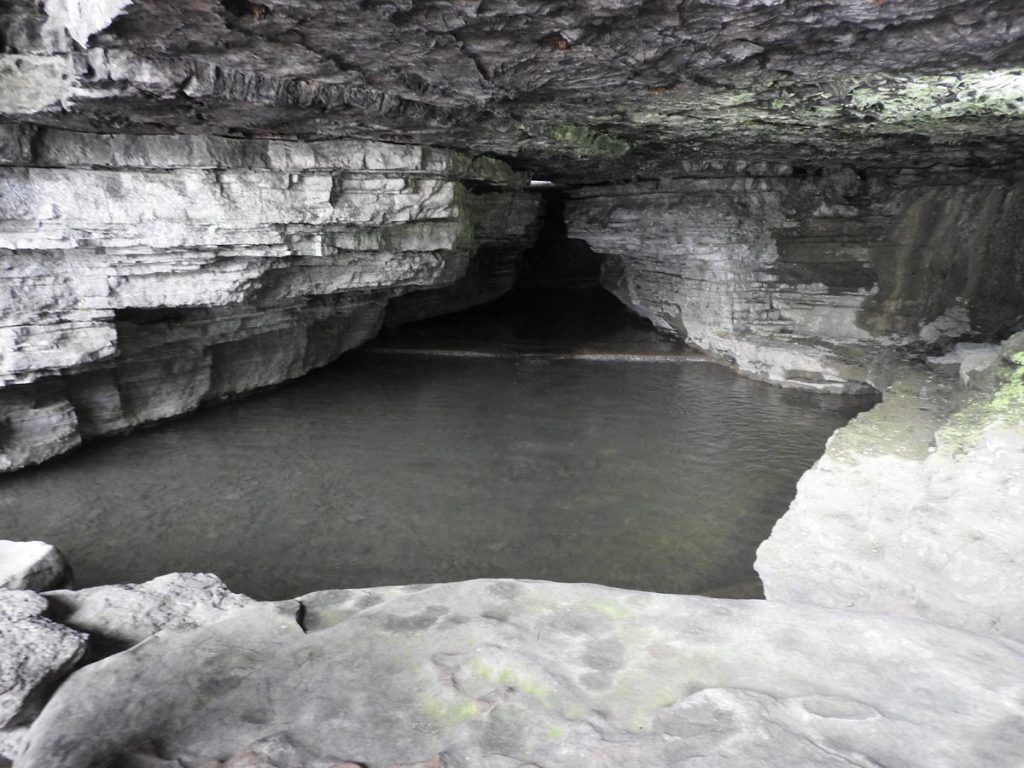
The Mysterious Cave Spring
Discovering the cultural heritage of Kazakhstan
Zhylagan-ata is located in the Turkestan region, it is included in the map of sacred Kazakhstan and is among the most valuable monuments of the country’s natural heritage. The legend of this place is characterised by the places of a special child. But no one knows the secret of the cave waterfall, however because of the legend many people believe in the healing power of the place.
According to legend, there was an old man named Gurzikhan. He was rich, but he and his wife had no children. At the time when Islam came to the Kazakh land, Gurzikhan converted to Islam, became a Muslim, and he and his wife went to the ridges of Mount Karatau to ask God for a child. Accepting the will of God, Shash-Ana’s mother gave birth to a child, but the child was born wrapped in a wineskin (a wineskin made of whole goat skin). Then Kydyr Ata gave Gurzikhan a vision. In this dream, he said: your wife should revile him for a while, but the child will not talk, will not laugh and will not cry. When his time comes, he will be born on his own and will leave his wineskin.
But some time passed, and the child was in no hurry. One day, when the mother got tired of wearing it, coming closer to the river (the river is located near the village of Igilik, not far from the cave of Zhylagan Ata), she angrily said: “Oh, my God, why do I have such torments, in my old age, to carry this burden in myself!”. As soon as she said that, the boy jumped out off the wineskin and ran away. His parents ran after him, hoping to catch up with him, but the boy did not stop. He was running playfully along the road, but his parents were tired. Suddenly they were thirsty, they stopped, and the boy found hit the ground with a cane, after which a well appeared there. The well is called a Taskudyk (Stone Well). Currently, “taskuduk” is found along the way to the cave of Zhylagan-ata and is considered sacred. When the parents came to the well, the boy playing with a stone, for some reason, continued to ignore them. They could not catch up with their son, the son climbed high up the mountain, and suddenly said: “40 days were tolerated before my birth, there is only one day left, if you had suffered one more day, everything would have been great, sorry!” He hid in a cave, and disappeared before their eyes.
Now this big cave consists of three large holes. The first hole appeared when the parents looked back at their son with hope, the second hole appeared when the Soviet government wanted to explore this place to solve the mystery. But they did not succeed. The third time they set off an explosion again, but the cave was covered with snakes.
Now the land of “Zhylagan Ata” is known for its sacred water flowing from this mountain cave, but water flows only when reading the Koran, and not just like that. When a waterfall suddenly collapses, those who come to this place do not know, sometimes even one or two days will pass, sometimes weeks of waiting for water. This taiga waterfall is popularly called “The Crying Old Man”, that is, Zhylagan ata. No matter how many domestic and foreign scientists have tried to test it with their instruments, their instruments refused to work. No one can still say with certainty why the water flows only at certain times. In front of this cave there is a stone resembling a human figure. They say that from time to time water comes out of the stone.
Many people remember that during the years of independence, many historical and cultural monuments and objects were reconstructed within the framework of the state program “Cultural Heritage” in order to change the spiritual orientation of the people. That is why sacred objects will forever remain in the hearts of people. If the generation is wise, there will be no shortage of the great steppe.
by Ainur Kumarkhanova
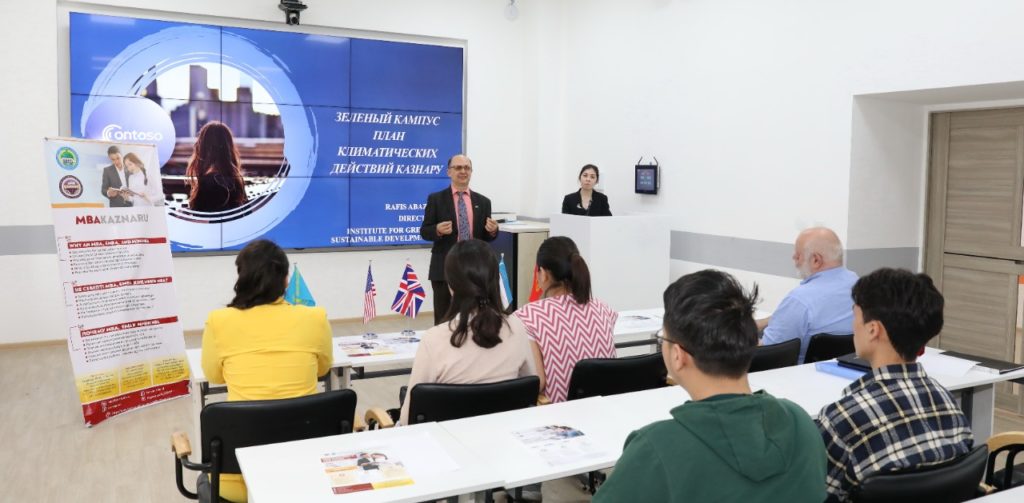
Greening Cities Through Green Campuses
Over the past few years, the themes of sustainable development and the challenges related to climate change are rapidly moving from the pages of academic journals and academic conferences to the front pages of popular newspapers, TV talk shows, and social media. Even everyday discussions of ordinary citizens often go around the topics of climate abnormalities and the impact of weather changes on everyday planning and lifestyle.
Indeed, we all have concerns about many issues that have emerged from climate change. How to react to unusual heat in our cities? How to react to the increasingly high level of air pollution in our districts? How to react to the disappearance of green parks and trees around our counties?
Of course, our politicians, government officials, city councils, and members of parliament work on addressing those problems at macro development levels, as they make important decisions, introduce laws, and regulate businesses and economic activities. Diplomats are busy crafting inter-government treaties and agreements, which are designed to improve international cooperation in dealing with pollution and climate change at state, regional and global levels.
However, there is still a place for ordinary citizens and especially for creative youth to contribute to solving global sustainability challenges at local levels. As the ancient Central Asian proverb says: “if every person will plant even one flower, the whole world will become a garden!”
For example, universities and university campuses have huge potential, especially if they are located within the cities. Universities and university campuses have huge technological potential to become central in identifying innovative technological development and technological ways to make our cities smarter. They also have the intellectual potential for social innovations and for mobilising activists at the community level on a small scale but in a smart way. Importantly, they can create, plan and implement concrete projects both inside and outside university campuses. Over the past few years, the concept of a Green Campus increasingly become popular among students and faculty members.
Take the example of Kazakh National Agrarian Research University (KazNARU) – which is located in one of the central districts of Almaty city in Kazakhstan. The entire university community – teachers, administrators, and students – have begun working together on the development of the concept of a ‘Green Campus’ by regularly brainstorming smart ideas for greening the campus and adopting smart technologies and innovations to make their campus even greener and smarter. The discussion of concepts of a Green Campus have allowed students and faculty members to analyse what should be done and to develop a systematic approach for planning and doing, even more, both today and in the future. Students and faculty members of KazNARU – like their colleagues and classmates from other universities in Kazakhstan and many other countries in Europe – have started from small projects. For example, they have increased the use of electric bicycles and scooters inside and outside of their campus. They plant and replant trees and flowers inside and outside of the campus making both the campus and city even greener. In addition, students promote recycling ideas like switching from traditional plastic bottles to the usage of recyclable and multiuser bottles. Many students are also involved in various innovative initiatives, like eco-trons, eco-startups, and eco-innovations. There is also a proposal that students’ assignments should focus on practical sustainable development solutions, instead of writing on vague topics just for getting grades. The laboratories and experimental plots of the university make their contributions by working on the selection of new plants, bushes, and trees, which are better adapted for vertical city gardening, absorbing CO2, and for climate change.
The opportunities for implementation of the Green Campus concept are limitless. Practically every Central Asian republic and many countries in Europe have hundreds of thousands of students who can make not only intellectual but also practical contributions to greening their cities by developing, designing, and implementing their very own smart green and innovative ideas for their campuses and their cities and ultimately contributing to addressing global climate change challenges.
By Rafis Abazov
Rafis Abazov, Ph.D., is a visiting professor at Kazakh National Agrarian University (KazNARU) and a director of the Institute for Green and Sustainable Development. He is the author of The Formation of Post-Soviet International Politics in Kazakhstan, Kyrgyzstan, and Uzbekistan (1999), The Culture and Customs of the Central Asian Republics (2007), The Stories of the Great Steppe (2013), and some others
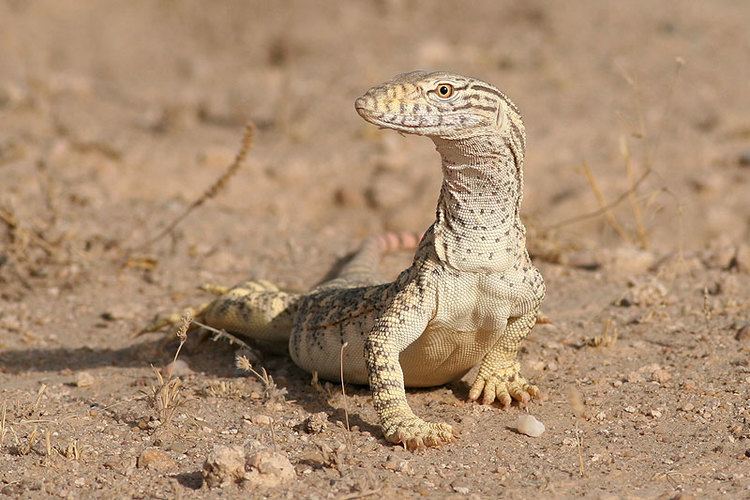
Introducing the Desert Monitor
The desert monitor is a large lizard, reminiscent of a dragon, and commanding instinctive respect from anyone who sees it. It is common throughout the Central Asian steppe, can weigh up to 3 kg and grow up to one and a half metres long.
Desert monitors can also be found in North Africa and Southeast Asia. It mainly inhabits sandy deserts and is very well adapted to harsh environments.
The desert monitor’s primary color is brownish with circumferential stripes, which allows it to blend easily into the desert landscape. It can also change colour to match its surroundings, and is diurnal.
Each year, females over the age of four lay up to 20 eggs in their burrows. Hatchlings crawl up to the surface, where they are left to fend completely for themselves – not all of them surviving this process. The average lifespan of a desert monitor is around 10 years.
There are many myths pertaining to this unique lizard. For instance, it is said that it can break a dog’s leg with its tail, and bite off a human finger with its sharp teeth.
The Uzbek name for the desert monitor is “echkemar”, which means “creature which sucks goats’ milk”. It is probably associated with yet another myth that this lizard creeps into barns at night, wraps its tail around goats’ legs, and drinks their milk.
The English name of the monitor lizard is representative of its lifestyle. Roaming regularly through colonies of rodents, it eats not only unwary inhabitants, but any living creature within its grasp: birds, smaller lizards, snakes, insects and sometimes hares, hedgehogs and turtles.
Despite being a terror to all small desert inhabitants, young desert monitors may themselves become a larger predator’s lunch; birds of prey and foxes being their enemy. When feeling threatened, the lizard hisses, expands its body by inhaling, and strikes out with its tail, lashing it from side to side. Its numerous small teeth are well suited to holding its prey. Males often use their teeth to fight off potential rivals during the mating season. However, desert monitors prefer to retreat when they encounter humans.
These lizards can remain in hibernation for as long as one and a half years. In cooler weather, they are not as fast as they are under the hot summer sun, when they can demonstrate unexpected agility and sprint short distances at amazing speed. Desert monitors can easily climb small trees and enter various burrows, enlarging them if necessary.
In the 20th Century, desert monitor leather came into fashion, and they were killed in tens of thousands. This led to a sharp drop in their numbers in the wild, and in some areas they became extinct. The situation was worsened by the encroachment of cultivation into their habitats. Nowadays the desert monitor species are included in the Red Book of the International Union of Conservation of Nature (IUCN) and national Red Books of countries where this animal is still found. Intrepid naturalists may see this unusual lizard in Tashkent Zoo or on an adventurous trip to Central Asian deserts.
Alexander Esipov
Helen Bykova
Photos by Alexander Esipov
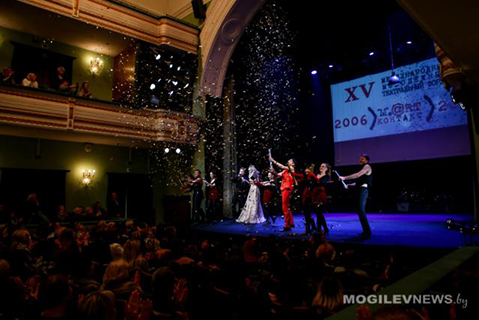
M@RCH CONTACT INTERNATIONAL FORUM
The International Youth Theatre Forum “M@rch.Contact” dates back to 2006. The city of Mogilev of the Republic of Belarus plays host each year. To date, the Forum is one of the most anticipated cultural events in Belarus in the theatrical arena. In its fifteen-year history, the Forum has gathered participants from more than twenty countries. On its stage it has shown at least two hundred performances, which have been watched by over forty thousand spectators. Theatre troupes from Belarus, Russia, Ukraine, Poland, Lithuania, Latvia, Israel and many others have taken part in the festival.
The opening of the theatre forum takes place on the stage of the Mogilev Regional Drama Theatre, the oldest theatre in the region, founded in 1888. It is noteworthy that during the First World War (1914-1918), the Russian Emperor Nicholas II was in Mogilev. Since there were few cultural institutions in the city, he regularly visited the city theatre, and the place he usually had occupied has since been called the “Imperial”. By the resolution of the Council of Ministers of the Republic of Belarus in 2008, the building of the city theatre was included in the State List of Historical and Cultural Values of the Republic of Belarus.
The infrastructure of “M@rch.Contact” is quite extensive and diverse. During the theatre week, in addition to the main venue, guests are invited to the Mogilev Regional Puppet Theatre, the Mogilev Concert Hall, the Regional Centre for Creativity, as well as improvised open-air scenes on pedestrian streets of the city.
At the theatre festival, performances on the topic of mass culture and the global Internet, personality formation, love and relationships in the family, relations between parents and children and much more are offered to the audiences. The program of the forum is extensive and grows every year so that every participant can find a performance to their taste. To the attention of foreign guests of the city and the country, national Belarusian productions with local flavour and entourage are presented, fascinating with their depth and understandable simplicity even to the most sophisticated viewer.
Within the framework of the youth forum, master classes are held for actors, directors and other employees and students of the theatre sphere, along with discussions held in the format of creative meetings to exchange opinions and discuss productions.
The founders of the forum are the Ministry of Culture of the Republic of Belarus, the Mogilev Regional Executive Committee and the Mogilev Regional Drama Theatre. In 2022, eleven creative teams from Belarus, Russia, Moldova, and Armenia took part in the forum. The theatre forum, which combines the best of traditional theatre productions and innovative live communication with the audience, allows you to plunge yourself into the atmosphere of creativity and stage magic, meet new people, as well as become acquainted with a new country and its distinctive culture.
By Irina Yegorova
A ‘Stan’ No More? – Should Kazakhstan Change its Name?
In recent months, in a bid to rebrand and distance itself from its often turbulent neighbours, the perennial question of whether Kazakhstan should change its name has raised its head once more. First mooted by Nursultan Nazarbayev back in February 2014, the former president argued that the ending ‘Stan’ led many people to lump Kazakhstan in not only with the other nations of Central Asia but also with hotspots such as Pakistan and Afghanistan. In the words of the Director of the Kazakhstan Risk Assessment Group and member of the presidium of the Kazakhstan Council on International Relations, Dosym Satpayev, ‘in the outside world there has long been the stereotype of Central Asia as the region of the five ‘Stans,’ although in general political terms Kazakhstan and its neighbours still greatly differ from one another.’ So, how much should be read into a name, and what are the potential benefits and drawbacks of a change?
To begin with, it should be noted that there are a plethora of examples of countries which are known by one name internally and another externally. A prime example of this is Georgia, which locals call ‘Sakartvelo,’ derived from the Georgian region of Kartli, which was also known as Iberia in Byzantine and Classical sources. Though there are multiple theories as to why foreign designations for Georgia came to be, it is widely held that the Russian name ‘Gruzya’ and the Western name came from the Persian moniker for the area, ‘Gurğān,’ meaning ‘land of the wolves.’ Staying with this region, the external name for the breakaway Republic of Artsakh is even more convoluted, with the name ‘Nagorno-Karabakh,’ meaning ‘Black Mountain Garden,’ coming from an amalgam of three languages: Turkish, Persian, and Russian.
A country choosing to change its name is not without precedent, and happens more frequently than one might initially think, and for a variety of reasons. Recent examples would be Macedonia becoming North Macedonia, and the Czech Republic rebranding as Czechia. In the case of North Macedonia, this change was made to end a long-standing dispute with Greece which had been a source of instability in the Western Balkans and effectively stymied Macedonia’s attempts to join NATO and the European Union, but with Czechia, the change came to pass for more aesthetic reasons.
When Czechoslovakia broke apart in 1993, the Czech part of the name was slated to serve as the name of the new Czech state, but many felt that ‘Česko’ sounded harsh and was too reminiscent of ‘Československo.’ Statesman and playwright Václav Havel stated that ‘slugs crawl on me a little whenever I read or hear the word ‘Česko,’ whilst the explorer Miroslav Zikmund associated it with Hitler’s Nuremberg rallies. According to Petr Pavlínek, a member of the Civic Initiative Czechia which was launched in 1997 and campaigned for a change in the country’s name: ‘People were concerned that the name Bohemia (which translates as Čechy) was increasingly used for the entire country even though Bohemia only covers the western half of Czechia. Bohemia does not include Moravia or Silesia. [Now] both Czechia and the Czech Republic are correct. Countries usually have two official names: a formal name and a short name. Short names are much more practical than formal names. Eventually, many Czechs will realise that Czechia makes a lot of sense in a similar way that Austria, Slovakia, Croatia, Indonesia, Australia and other short country names do. It’s only a matter of getting used to it.’
Other factors to consider include the cost of a change, and whether the new name will take root. An example of the latter would be Kyrgyzstan, which may officially be called the ‘Kyrgyz Republic,’ but few people refer to it as such. In terms of the cost, meanwhile, in 2018 one of the world’s last remaining absolute monarchs, His Royal Highness, King Mswati III told a crowd gathered at a small sports stadium that Swaziland was no more, and henceforth the ‘country will be officially known as the Kingdom of eSwatini,’ meaning ‘Home of the Swazi people.’ According to the intellectual property lawyer, Darren Olivier, although ‘there’s intrinsic value in that identity and what it means for the people, at the same time there’s a cost – a physical cost in changing the identity.’ Olivier estimated it would set the country back $6 million to change its name, a figure which is ‘not insignificant’ for a minnow nation.
Of course, budgetary issues are not such a pressing concern for natural resource rich Kazakhstan. However, whilst arguing in favour of a change, Dosym Satpayev stated that ‘from which sources the state will take the resources for rebranding is not known,’ before concluding that the burden would be considerable and would likely come from the National Fund and tapping into taxpayers.
Kazakhstan is no stranger to name changes, or change in general. In 2021, the government long-mooted announced plans to switch from Cyrillic to the Latin alphabet, and this on top of an earlier transition from Arabic to Latin, and then to Cyrillic. Between 1991 and 2005, three oblasts, twelve cities, 53 districts, and 957 smaller settlements were renamed, Alma-Ata becoming Almaty, Guriyev becoming Atyrau, etc., though in many cases this was done to replace Soviet-era names with Kazakh names. More recently, following eleven years of lobbying, in 2019, the capital, Astana, formerly known as Akmolinsk, and then as Tselinograd, was rebranded Nur-Sultan in honour of former president Nazarbayev, though given his fall from grace following the uprising in January, this should perhaps serve as a cautionary tale.
Unsurprisingly, talk of a change of name has met with a hostile reception in Russia, with the tabloid Komsomolskaya Pravda opining that: ‘It is exactly with this sort of talk that many interethnic conflicts began in the post-Soviet lands. When Moldavia became Moldova, when Tajikistan became Tojikiston, when Chechnya became Ichkeria and Yugoslavia became a cluster of warring microstates.’ Putting this revanchist imperialism to one side, however, aside from the obvious rebranding and distancing the country from its arguably less stable neighbours, what are the arguments for a change, and what alternatives are on the table?
The option favoured by MP and Member of the Committee on Foreign Affairs, Defence and Security, Aidos Sarym, and leader of the ‘constructive opposition’ party, Ak Zhol, Azat Peruashev, is ‘Kazakh Republic.’ This name would ‘restore historic justice and boost unity and amity among all ethnicities,’ argues Peruashev. Another possible moniker is ‘Kazakhia,’ which would chime with the former president’s praise for the name ‘Mongolia.’ This option may not fare well with nationalists, however, as it would bear distinct similarities to names in Russian, such as Rossiya (Russia) and Turtsiya (Turkey).
Former president Nazarbayev’s suggestion was ‘Kazakh Yeli,’ which means ‘country of the Kazakhs,’ whereas Kazakhstan means ‘land of the Kazakhs.’ As ethnic Kazakhs account for 63.1% of the population, ethnic Russians 23.7%, and a veritable smorgasbord including Ukrainians, Uyghurs, Germans and Koreans in a land which was home to some of the largest Soviet-era gulags, there is an argument that Kazakh Yeli would be more inclusive. Kazakhstan is predominantly Muslim, but also has a sizeable Orthodox Christian community, and a change to Kazakh Yeli may be welcomed by citizens who are not ethnically Kazakh as a path to forming a national identity they can embrace. Despite the spectacular downfall of Nazarbayev, therefore, there may be a case for not throwing the baby out with the bathwater.
By Stephen M. Bland
130th anniversary of the outstanding Azerbaijani dramatist, Huseyn Javid
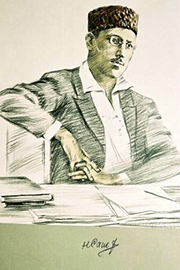
“Damn all life, all the Universe,
if all the glorious world wars,
bloody battles won’t generate love in the end,
universal love”
Huseyn Javid,
Extract from the play “Amir Timur”
Biography
The outstanding poet and playwright, Huseyn Javid, was born in 1882 in the ancient Azerbaijani city of Nakhichevan. His father was a theologian, but was also known as an expert on eastern poetry and music. After graduating from a mollakhana, an elementary school, where Javid learnt to read and write, he entered four-grade school, Mektebi-terbiye, which was founded by Mohammed Tagi Sidgi, one of famous educators at the end of the 19th Century. After leaving school, Javid wanted to continue his education, but acute eye illness compelled him to go to Tabriz for treatment, where his elder brother was living. In 1905, Javid went to Turkey where for a year he prepared himself for preliminary courses of the famous Turkish poet and philosopher, Rzy Tevfik, and then entered the literary department of Istanbul University. Although a first-year student, he also attended second year lectures. He experienced material difficulties in Turkey, pointing out in one of his letters: “I manage to live for weeks on only bread and cheese”. In letters the young student sharply criticized the regime of Sultan Abdulhamid who “fiercely smothers political freedom, and freedom of speech, thought and conscience. The word “independence” is strictly forbidden here”. In 1909, Javid returned home and began to teach Azerbaijani language and literature at schools in Tiflis (Tbilisi), Gandja, and Nakhichevan. His poems, and then his plays were published in the press at that time.
In 1918, the Azerbaijan Democratic Republic declared independence, the first such independent republic in the Muslim East. The process of national revival had begun and Javid moved to Baku. His works were published in big print runs during this period, and he was named the “Shakespeare of the Turkic World”.
In 1920, the Azerbaijan Democratic Republic was conquered by the Red Army. Javid took the liquidation of independence hard and, though his works continued to be staged and he himself was included in the structure of the Union of Writers of Azerbaijan, on principal he did not write works to propagandize Soviet power. He would be blamed for it later.
On 4th June 1937, Javid was arrested. The file of the criminal case shows that the investigation lasted almost two years, but he could not be forced to slander himself or any of his friends and acquaintances. Despite being very ill, thrown into a rough cell, and exhausted by interrogations lasting many days, he stuck to his convictions. In June 1939, a special meeting, a “troika” (a group of three people) considered his case for 25 minutes and accepted the final charge: “Huseyn Javid is accused of being a member of a counter-revolutionary, nationalist organization in Baku. In essence, Huseyn Javid did not admit his guilt under interrogation”. Javid was sentenced to a labour camp in Siberia for eight years. Javid died in Magadan on 5th December 1941, before the end of his sentence. In March 1956, the criminal case against Javid was reviewed, and, in the absence of any evidence of a crime, he was rehabilitated.
Poetic Creativity
Javid’s first poem was printed in the Baku magazine “Fiyuzat” in 1906, and the first collection of his poems, “The Past Days”, was published in 1913. A new collection, “Spring Dew”, was published in 1917. Besides lyrical verses, young Javid also wrote social poems. His demands for social reform drew the attention of the imperial police, who became interested in his political orientation in 1914.
Javid become famous as a poet-humanist with his works, where motifs of philosophical lyrics, questions of humanism, and philanthropy were reflected. However, the awful events at the beginning of the 20th Century, the start of the First World War convinced Javid of the need to overcome abstract-political conclusions and representations, and, by writing dramatic works, to show people the roots of all the evil. Javid started to write play-poems, and dramatic poems, the sources of which go back to Mohammed Fizuli’s poems and William Shakespeare’s tragedies.
Dramaturgy
Javid’s dramas played a huge role in the formation of Azerbaijani literature of the 20th Century, especially its romantic direction. Javid’s first play, “Sheyda”, was written in 1913. The play showed that in Javid’s dramatical art the main “romantic theme” is one of love and passion, before which there are no barriers.
His play, “Sheikh Sanan”, was published in 1914. This was a romantic tragedy directed against racial and religious struggles, singing about people and love. The hero of the play, Sheikh Sanan, was on the boundary of two epochs, in search of spiritual and moral values which he could not find in habitual society, so he was torn into other worlds, trying to find love and hope.
Publication of the play “Iblis” (literally, Satan) in 1918 was like a bolt from the blue. The aggravated historical cataclysms of his time allowed the author to see clearly in these events originally tragic embodiments of Satanism. Heroes of this type had been created in European dramatic art before Javid’s time: Milton, Mephistopheles, and Goethe’s Satan, Byron’s Lucifer, Lermontov’s Demon. But Javid’s play was not about the casting of a Mephistophelean type of hero. Javid brought the Satan closer to life, forcing him to participate in what was unattractive in it. In the image of the Satan he pursues the aim of finding an original cause of the defects, having plunged people into their troubles: world war, hatred of one another, ruin, death, and grief. Everything is the result of the revelry of demonic forces unleashed by the malicious will of rulers. Javid’s Satan shows in what conditions crimes are born, how people themselves become demons and how these demons start to walk over the world, bearing their plans for war, cataclysms, and terror.
In addition to historical plays: “Prince”, “Siyavush”, “Topal Teymur” (“Amir Timur”) and philosophical plays: “Mother”, “Khayyam”, “Maral”, “Prophet”, “Iblis’s Revenge”, from 1910 to 1926, Javid wrote nine plays, six of which are about the pre-revolutionary period. According to his daughter, Turan Khanum, the manuscripts of the plays “Attila”, “Chingiz”, “Inspiration of a Demon”, “Shahla”, “Telli Saz”, and the scenario “Keroglu” disappeared during the arrests and searches of 1937. After the rehabilitation of her father she asked the security service to find and return these works. But it seemed that all the works had been burnt.
Scenic Life of Javid’s Works
His plays, “Iblis”, “Sheikh Sanan”, “Sheyda”, “Afet”, and “Topal Tejmur” were staged in his lifetime. The longest running plays were “Iblis” (till 1925) and “Sheikh Sanan” (till 1930). The works were a great success, and played a big role in the formation of Azerbaijani drama theatre. The huge influence of Javid’s works was also recognized by the inspectors who conducted his criminal case. It was not by chance, that in his criminal case it was recorded that: “As a skilled playwright, he influenced the youth. He has created his own “school”, in opposition to the Soviet school”.
Despite the popularity in Central Asia during the 1920s and 1930s, Javid’s works were forbidden after he had been repressed, and his plays were staged again only after his rehabilitation. His last, completed, large work, “Khayyam”, was staged for the first time in 1970.
Life after Death
A house-museum in Baku and, later, a house-museum in Nakhichevan were created for the playwright’s 100th anniversary. In 1982, thanks to the efforts of the head of Azerbaijan, Heydar Aliyev, Javid’s grave was found in a cemetery of the repressed in Siberia. His coffin was transported home and reburied in Nakhichevan. Javid’s drama, “Amir Timur”, was shown on Azerbaijani television in 1983.
Since independence, Javid’s works have often been republished in Azerbaijani and other languages, a “Theatre of Poetry of Huseyn Javid” was organized, and streets, parks, schools, and cinemas were named after him. A monument to Javid was erected in Baku in 1993.
In 1996, a mausoleum, in the style of medieval mausoleums of Azerbaijan, was built over the poet’s grave in Nakhichevan. Visitors to Nakhichevan, whether they are tourists or businessmen, should visit the tomb of the man rightly called “Shakespeare of the Turkic World” in his lifetime.
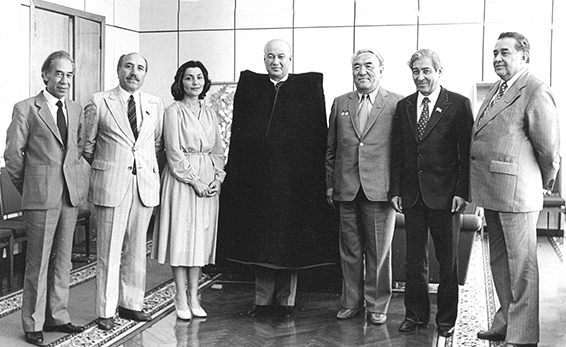
Sharaf Rashidov – Man and Politician
Celebrating the 105th anniversary of his birth
In the autumn of 2022 the 105th anniversary of the birth of Sharaf Rashidovich Rashidov will be celebrated. A famous statesman of Uzbekistan and the Soviet Union, he made a huge personal contribution to the economic and social development of Uzbekistan between 1959-83 when he was leader of the ruling Communist Party of the Republic.
October 31, 2022 will mark the 39th anniversary of Rashidov’s death. The past years have been full of events, including those related to the memory of this man. Initially, the government passed a major resolution to perpetuate his name, but soon after a campaign sought to discredit him posthumously. In the 1980s, a wave of publications continued for several years in the central media, in which Rashidov was essentially declared the organiser and inspirer of all kinds of negative phenomena in Uzbekistan. The decree on perpetuating Rashidov’s memory was revoked. His ashes were reburied from the city centre to the Chigatay city cemetery.
Nevertheless, Uzbekistan has maintained a deep respect for Rashidov’s memory throughout these years. People never believed the slanderous publications and far-fetched accusations against him. In 2017, the country widely celebrated the 100th anniversary of Rashidov. During the celebrations in Jizzakh, President Mirziyoyev opened a monument to him in his homeland. The district of Jizzakh was renamed the Sharaf Rashidov district.
In 1991 I was given a unique opportunity to obtain access, to the “holy of holies” – the previously closed documents of the Party Archives of Uzbekistan. The documents of Rashidov’s personal file, his extensive personal correspondence, and other archival documents as well as meetings and conversations with dozens of associates and my personal observations helped to dismiss the accusations against him in the media in the 1980s.
In the course of my work with documents and reflections, I began to form an image of a rare and multi-faceted and talented prodigy. He was a real Uzbek intellectual, encyclopaedically educated, who had an infused desire to do good for others. Rashidov sharply suppressed attempts to distort reporting, embezzlement, deception of the state, and demanded that those who allowed this be brought to justice. He did not tolerate lies, deceit, and parade.
One of the main sources of information about Rashidov as a man and a politician is his personal correspondence. His rich epistolary archive makes a powerful impression. Rashidov’s correspondence reveals the generosity of his soul and the kindness of his heart, as well as the love and great respect that he enjoyed not only in Uzbekistan but also beyond its borders.
Rashidov sincerely loved people, reaching out to them, and they reciprocated in return. As First Secretary of the Central Committee, he spent a lot of time on business trips. He was constantly in the midst of people. He finds warm words for everyone he talks to. After a conversation with him, people would leave feeling elated and inspired. His respectful and sincere attitude, coupled with deep attention to the person he was talking to, easily won people over. Rashidov impressed many people with his talent for communication, kindness, caring, and ability to hold a captivating and exciting conversation with his interlocutors. They admired his profound knowledge of ancient and modern history and modern literature.
Studying the letters, memoirs of comrades-in-arms and other documents, one concludes: in Moscow, in the Politburo, in ministries and departments, in the union republics, Rashidov’s human and business potential, his intelligence, friendliness and internationalism were very highly valued. Uzbekistan under his leadership was a winner in the All-Union socialist competition from year to year. All this aroused respect in Moscow.
There is no doubt that Rashidov’s role in the rapid development of Uzbekistan’s productive forces in the 1960s-1980s was significant, and perhaps even decisive. He understood that the republic had a high population growth rate. In 1959, there were 8.5 million people, while in 1983 there were 17.0 million. In less than 24 years the population had doubled. He saw that it was necessary to create new jobs, and improve the conditions and quality of life of people. He helped develop and irrigate new lands, build new roads, cities, and develop new sectors of the economy.
As a result, in the 1960s-80s the agrarian republic was transformed into an agrarian-industrial republic. More than 2 million hectares of new lands were watered and developed, hundreds of industrial enterprises were built in all regions. Among them are the famous giants of non-ferrous metallurgy and gold mining, such as the Almalyk and Navoi Mining and Metallurgical Combines. Thousands of kilometres of new roads and railroads, dozens of cities and towns appeared on the map of the republic.
Hi work couldn’t have been carried out without his team. Rashidov’s talent as an outstanding organiser, deep insight, and knowledge of people and their psychology, allowed him to select and place people around him who could work selflessly. These were creative, ambitious, enterprising people, excellent organisers and specialists. They worked confidently, constantly felt the business support, attention, and respect of Rashidov. When necessary, the leader of the Republic came to their aid, appealed to the Centre and the Union ministries to solve the most difficult issues.
Fate and history had wished Sharaf Rashidov to be “in the right place at the right time”. After heading Uzbekistan for almost a quarter of a century under the conditions of a centralised union state, limitation of rights and possibilities of the republics, thanks to the rarest gift of man and politician Sharaf Rashidov managed to achieve the maximum possible for its social and economic development. A powerful scientific, industrial and social infrastructure was created, as well as an atmosphere of friendship and co-operation among millions of people of different nationalities.
Sharaf Rashidov has remained in the hearts and memory of millions of people. The following lines of the great poet Alisher Navoi are fully applicable to him, a faithful son of the Uzbek people:
Since the best of men must pass through Death’s portal,
Happy is he who makes his name immortal.
Information about the author:
Rizaev Saidakbar Rizaevich – Doctor of Historical Sciences, Director of Scientific-Technical Enterprise “ITM-TASHABBUS” Ltd.
E-mail: rizaev41@mail.ru
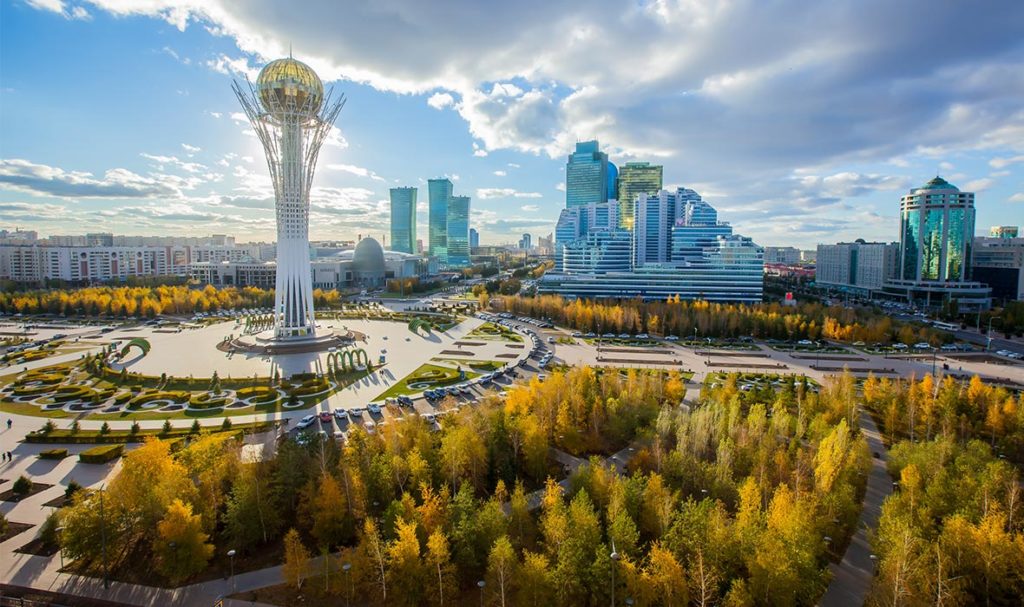
‘You call your luxury yacht “Titanic,” and it sinks soon after that.’
Does the issue sound relevant to you? Can the name really determine the future? We won’t dig into the roots of the question, but if it makes sense to you, then let’s continue with this point: name is destiny. That’s why it’s so important for every nation to have a name which fits it, and why the Republic of Kazakhstan needs this change so badly.
The renaming and rebranding of the country is not just an attempt to distract attention from some political and economic issues. It’s an endeavour to find a new path for the whole state. Historically, Kazakhstan is a very diverse land uniting three zhuzs (union of tribes), and over a hundred tribes and different groups in north, south, east and west. The territory of Kazakhstan is extremely fragmented, and at the beginning of the summer 2022 three more new provinces were added to the map.
Due to public disagreements, in recent times, political, economic, social and other issues have become more complex. This means that the main idea Kazakh officials should keep in their minds – and to a large part they do – is how to build a holistic state with a common ideal. In this case, the question of the name appears to be more complicated than it might initially seem. The current name, ‘Kazakhstan’ (‘Qazaqstan’ – literally, the ‘land of the Kazakhs’) has some inherent contradictions. On the one hand, it’s the name of a territory but not the state, and therefore doesn’t contain any idea of the nation. ‘Stan’ is most likely derived from Slavic language groups, and usually means a limited inhabited area, which doesn’t represent the traditional nomadic mentality and lifestyle of ethnic Kazakhs. The Proto-Indo-European root ‘sta’ means to ‘stand.’ In Russian, ‘stan’ means ‘settlement’ or ‘semi-permanent camp,’ and in other Slavic languages it means ‘apartment.’ Experts in Kazakhstan have also asserted that this name doesn’t work well for the external brand of the country. This is why it makes no sense to use any “territorial” name, such as the ‘Great Qazaq Steppe’ (though it’s perhaps a very interesting name in terms of marketing, it could only be an informal one). So, in 2014, Nursultan Nazarbayev (the president at that time) proposed the new name ‘Qazaq Eli,’ literally ‘the State of the Kazakhs.’
Of Course, some patriotic native Kazakhs supported that idea, and the name itself sounds good, but unlike ‘Kazakhstan,’ it doesn’t take into consideration the multinational composition of the country. Not all ethnic groups are ready to declare themselves ‘Kazakhs’ or agree that Kazakhs are the only ones leading the nation. Within the Kazakh ethnic group there is no consensus either, because there are at least three zhuzs (families) – elder, middle and younger – divided into tribes, so the question about power remains open.
At the beginning of the 20 century, an attempt to give the country the name of a nation was made – it sounded like ‘Alash-Orda’ (meaning ‘people’s republic,’) but it didn’t work. The term ‘Republic’ isn’t particularly useful, and the idea of changing ‘Kazakhstan’ to ‘Qazaq Republic’ didn’t get a huge amount of support. Now, the current president of Kazakhstan, K.-Z. Tokayev has noted that a united nation is important more than ever, and this is not only about the union of people who actually live in Kazakhstan but also about kandas (literally, ‘one blooded persons’) aka oralman (ancient Kazakh tribes representatives born and raised in other countries). More than a million oralman have already come to Kazakhstan and tried to find their place in the community.
Perhaps the best concept, therefore, is a name which reflects not only the mono-structural but also the multi-structural organisation of the state, as is the case with the ‘United Kingdom’,’ the ‘United States of America’,’ or the ‘United Arab Emirates,’ for example. These names give some sense of identity to each national group without losing the main territorial idea of a holistic country. Such names are also very effective name in terms of the international brand, showing democracy and the power of the state, and its modern way of life.
If ‘United,’ though, the next question is ‘United’ what? It could be the ‘United Qazaq Republic,’ but as we have already seen, the term ‘Republic’ doesn’t sit well with historical notions of Kazakh identity based on tribal rules of power. The name ‘United Qazaq Steppe’ is more striking and catches one’s attention with its uniqueness. This name might be a good marketing trick in terms of tourism, but it would be the same thing as ‘Qazaq-stan’ – the name of a territory, but not a nation. A highly authentic name could be the ‘United Qazaq Zhuz.’ Unfortunately, however, this might be a bit narrow to describe the wide variety of peoples that live in the territory of modern Kazakhstan.
So, perhaps the ‘Birikken Qazaq Eli’ (‘United Qazaq State’) or Birikken Qazaq Dostastiq (‘United Qazaq Commonwealth’) are the best options. They both sound powerful, reflect the key identity and give some autonomy to different districts whilst still keeping the whole together. Such a name doesn’t contain a strong territorial tag, but describes a community of lands united by the idea of a common state. Of course, this is only a suggestion, and an analysis of economic or other risks was not the aim of this article, which was simply to attempt to find a new way of understanding the complicated path of the nation in its quest for identity and sustainability.
By Taina Kaunis and Marat Akhmedjanov
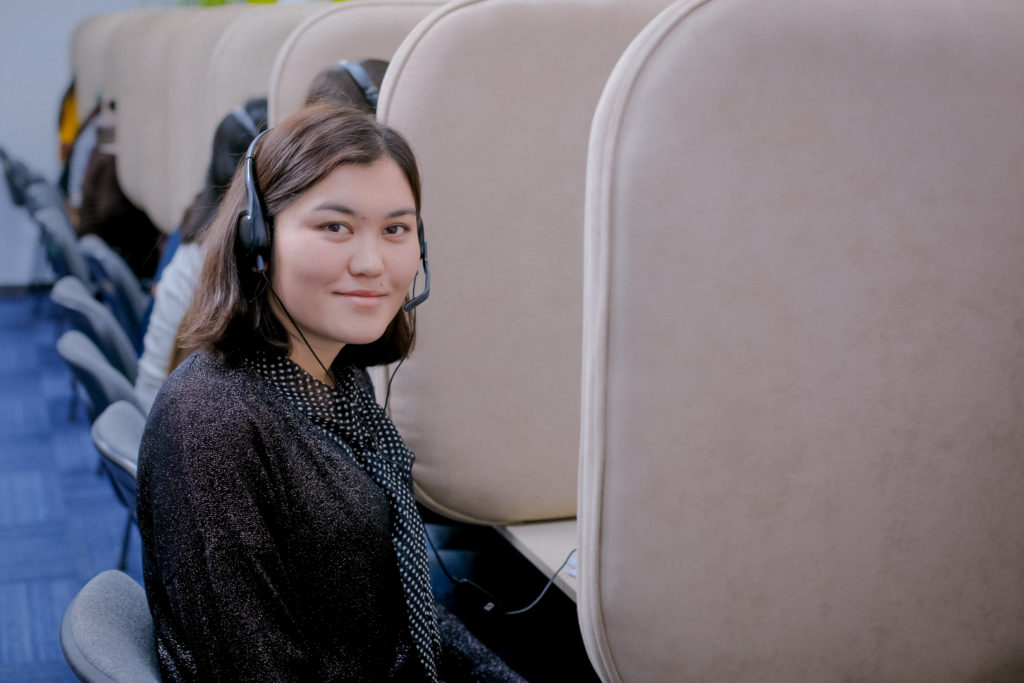
Iran on the Horizon: Future Prospects for Central Asian Rapprochement
In recent years, China has propelled itself to the position of Central Asia’s leading external partner – in the process, investing previously unthinkable sums of money in the region and expanding its political and economic influence. However, Iran, whilst currently unable to compete with China in Central Asia on almost all fronts, has repositioned itself towards fostering engagement with the former Soviet “Stans”. Tehran, combining its sizeable religious and ethnic affinity with many parts of the region and its access to vital seaports and security priorities in Afghanistan, has leveraged a more-than cordial level of rapport with the countries of Central Asia. To this end, Iran has implemented a new “Look East” policy to engage Central Asian countries on a selective, bilateral basis, which contrasts with China’s hegemonic approach of pumping billions into Central Asia, viewing the region as a vital ingredient to its global infrastructure and soft power agenda.
The Central Asia Barometer (CAB) Survey is a biannual large-scale research project which measures social, economic, and political atmospheres in Central Asian nations by conducting interviews with 1,000-2,000 respondents in each country from 2017 (Wave 1) to 2021 (Wave 10). Data collected by CAB shows that Iran is seemingly perceived as unknown – unproven, untested, and unfamiliar. However, Iran could see itself considered as a possible supplementary partner on the horizon, offering a different set of opportunities and challenges for Central Asia.
Iran is a nation that possesses deep historical ties to large parts of Central Asia, given the cultural and linguistic legacy which sprawling Persian empires left upon the region. Even today, Uzbek cities such as Samarkand and Bukhara boast large Persian-speaking populations, while Tajikistan remains a majority ethnically and linguistically Persian nation. However, only recently has Central Asia become a policy priority for Tehran, which now sees this region as a potential “bridge” between Iran and the East. The “Look East” policy constitutes a key aspect of Iran’s approach to international relations, and it has sprung engagement with nations within the region on an individual, bilateral basis – in particular, Kazakhstan, Uzbekistan, and Kyrgyzstan.
1. Public sentiment toward Iran Remains Low and Uncertain
Surprisingly, many in Kazakhstan, Uzbekistan, and Kyrgyzstan remain ambivalent in their sentiments towards Iran. Despite a large Persian legacy in sections of Central Asia and recent efforts by Tehran to establish a stronger presence within the region, Iran is just simply not on the radar for many.
When asked their opinion on Iran, around one quarter and above of all respondents from Kazakhstan, Uzbekistan, and Kyrgyzstan replied with the answer “Don’t Know” over several different waves of the Central Asia Barometer study.
In addition, the number of those who report a very unfavorable opinion of Iran has steadily risen from 2017 onward. Perhaps residents of these nations are hesitant to accept another large external partner within the region, given the influence which China and Russia already wield. It is conceivable that Central Asian policymakers would consider the possible implications that the Iranian exportation of the Islamic revolution could have upon their own populations, given that Central Asian nations have fought to establish themselves as independent states both politically and culturally in the wake of the Soviet Union.
2. Iran as a Potential Future Supplemental External Partner
Kazakhstan is a nation that is linked to Iran through its joint participation in international conflict resolution, with the former often serving as the host for Iranian nuclear negotiations. Trade has also increased between these two nations as well, with the introduction of the East Caspian Rail Corridor in 2014 providing a faster and cheaper route for moving goods (and potentially passengers) along a route meaningfully linking Iran and Kazakhstan.
Despite Uzbekistan’s previous reluctance to develop a relationship with Iran, bilateral relations between these nations have flourished. Potential transit corridors have been discussed amid Uzbekistan-Iranian trade having increased exponentially, namely in agricultural production. Both nations collaborated during the Afghan peace process; an issue of especially high priority for Iran, which had set its sights on an enhanced role in regional security. By working with Uzbekistan, a major power within the region, Iran has inserted itself into a position where it is perhaps overperforming when you consider the catastrophic challenges Tehran faces domestically – perhaps foreshadowing a future mandate to grapple with such large-scale issues on a grander scale in the future.
Kyrgyzstan was the sole nation in the region to successfully sign a 10-year cooperation deal with Iran in 2016 and was the first to acquire dock space in Iran’s Gulf of Oman Chabahar port in 2007. Such access to the sea is especially important for the land-locked Central Asian nations, who are vying for such trade routes and facilities. India also helped secure access to Chabahar for Turkmenistan, opening a gateway for trade to the region through Turkmenistan as well. It appears that Iran and India are directly addressing this practical need, bolstering relations and further opportunities for collaboration as well.
Despite negative sentiments surrounding Iran held by residents of these countries, there are many who have planted themselves firmly in the middle – unaware of this nation and its priorities at all. Iran remains unproven and unknown, but its priorities for the region – in particular, security and access to water – are highly salient for the growth of individual Central Asian nations. Will Iran’s repositioning towards Central Asia allow Tehran to contribute to a new multipolar environment to challenge China’s economic hegemony within the region? While Iran is unlikely to become a direct rival of China in the short term, Tehran’s “Look East” policy could provide a new set of opportunities for Central Asia.
Looking forward, Iran must continue to engage the nations of Central Asia on a bilateral basis, determining the most mutually beneficial avenues for meaningful rapprochement. Tehran should also look to sell its economic vision for the region through enhanced collaboration with regional economic integration projects. Iran has received preliminary approval to become a full member of the Russian-Sino-led Shanghai Cooperation Organization and under the chairmanship of Russia, the Eurasian Economic Union penned a major preferential trade deal with the Middle Eastern country. Continuing along this path and in the process raising its profile beyond an unknown and alien actor in the eyes of ordinary citizens in Central Asia would present both Iran and Central Asia with a unique position.
Elizabeth Woods
Elizabeth Woods is a research fellow at Central Asia Barometer and an anthropology graduate student at the University of Tübingen. Her research focuses on Kazakh return migrants and questions of identity, belonging, and homeland. You can find her on
Thomas Baker
Thomas Baker is a research fellow at Central Asia Barometer. After completing his master’s degree at King’s College London’s Russia Institute, he now works as an OSINT country risk researcher for the Former Soviet Union region at S&P Global. By
2 Years Protecting the Business Environment
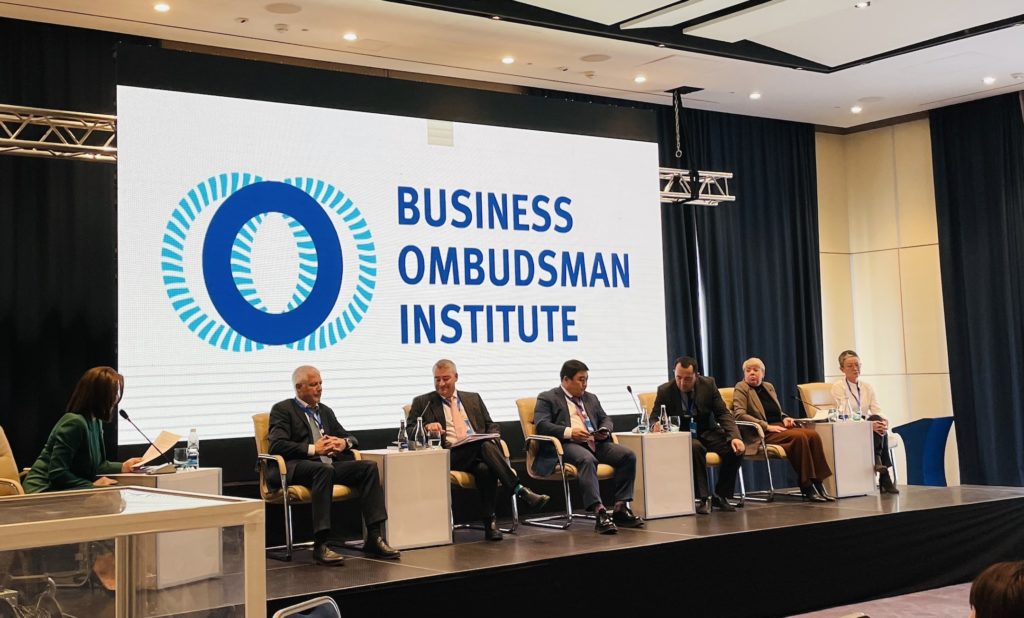
It is now nearly three years since I resigned as a UK diplomat and subsequently took up the challenge of becoming the first Business Ombudsman of the Kyrgyz Republic, a project funded by the European Bank for Reconstruction and Development and a partnership with the government and business. While not as conventional as going on to my next diplomatic Head of Mission role, I hoped that the creation of an organisation that could help protect the private sector from the state might contribute to the positive development of the economy and country. I was under no illusion that the challenge would be easy.
Looking back, just over 2 years have passed since opening the Business Ombudsman Institute (BOI) at the end of February 2020 to establishing ourselves as trusted partners with business and government. But the headline figures, having helped save businesses over $24 Million and a case success rate of over 50%, give hope that it will be possible to deliver the mandate as the authorised person to “protect the rights, freedoms and legitimate interests of business entities”.
There are different models of Business Ombudsmen around the region and World. That the government of the Kyrgyz Republic chose to establish an independent Business Ombudsman and not one either reporting to government or being a civil servant is perhaps reflective of the unique openness of this country in the wider region. But in keeping with other Ombudsmen, my role is to provide a free, pre-court, alternative dispute reconciliation service that can help business overcome areas of disagreement with state bodies.
My mandate is three-fold. Private business can complain to me that the state (national, local, regional government, Ministries or Agencies, State Owned enterprises or state servants) have in their actions (or inactions) infringed their legitimate rights. Secondly, I should help to increase “transparency” in state bodies and lastly I am able to recommend changes to existing laws or even suggest new laws where my work determines that there are gaps or inconsistencies that hamper business. Successive Prime Ministers have also asked me to contribute to the drive to improve the business and investment climate.
Even by the standards of post-independence Kyrgyzstan, the past two years have been a period of tumultuous challenge. The pandemic hit businesses and the economy hard with lockdowns, supply chain and border disruptions and inflation. October 2020 saw unrest that led to a change in leadership and since then there have been Presidential, parliamentary and local elections and associated government changes and legislative reform. This has impacted the ability to communicate our existence and mandate, especially in the regions. Nonetheless, in this time over 200 businesses have formally registered complaints with me. Others have sought our expert advice and support to help overcome their difficulties.
Part of the challenge for my colleagues and I has been to establish and maintain good working relations with government and state bodies. As my powers are limited to recommendations it has been essential to secure political support to encourage state bodies to implement the Response Acts that I issue if I find a business has had its rights infringed. Successive Presidents, Prime Ministers have confirmed this and my team and I work very closely with the Ministry of Economy, the General Prosecutor’s Office and the State Tax Service. And of course, our partners amongst the Business Associations who also work tirelessly to protect their business members. But a challenge remains to get some state bodies to engage or, at times, to implement recommendations.
Increasingly, government Ministries consult my colleagues and I on proposed changes to legislation that affects business or the economy. I am fortunate to have an expert team that provides high quality advice from a legal and international best practice perspective, and uses the experience we gain from the consideration of complaints and our other work. In total I have sent government over 200 proposals and recommendations, including 34 Response Acts where I have found a complainant’s rights infringed and recommending how to rectify this and avoid them being repeated. Oher recommendations have been aimed at reducing inconsistencies and improve the prevailing business climate. Many of these recommendations have made it through to the updated legislation.
From this wider work, we have identified several key systemic problems holding back the private sector in the Kyrgyz Republic. These include a worrying lack of consistency in state policy and frequent changes in legislation, a tendency for state bodies to make decisions in favour of the state even if improper (and even illegal at times), a lack of transparency, accountability and an apparent increase in pressure from law enforcement bodies.
Assessing where the BOI has got to halfway through my five-year term as Business Ombudsman, I see similarities with my school reports of many years ago: some notable achievements, but much more still to be done! But, given the ongoing geopolitical, economic, and other challenges affecting Kyrgyzstan my colleagues and I must redouble our efforts to protect the entrepreneurs and help bring about the reform in state bodies working practices, and the necessary improvements in the business and investment climate, that will provide the sustainable economic growth that Kyrgyzstan needs and deserves.
I spent thirty years as a British diplomat and was especially proud to have been Ambassador to Tajikistan and then Kyrgyzstan. But I have never been more proud to lead a team of such dedicated, determined and professional colleagues trying to make a difference in such an important field. There will be many more challenges ahead to deliver a lasting impact, but I remain confident that my mandate is achievable, the challenges can be overcome and that we can make a real difference in this fascinating country that has become home for me.
Robin Ord-Smith
Reference:
The Business Ombudsman is an authorized person to protect the rights, freedoms and legitimate interests of entrepreneurs and business entities, who operates on the basis of Decree No. 647 of the Government of the Kyrgyz Republic dated December 31, 2018.
The Business Ombudsman accepts complaints by post, email, in person or online.
For more information, please visit the BOI website www.boi.kg
HOW BRITAIN BECAME THE JURISDICTION OF CHOICE FOR DIRTY MONEY
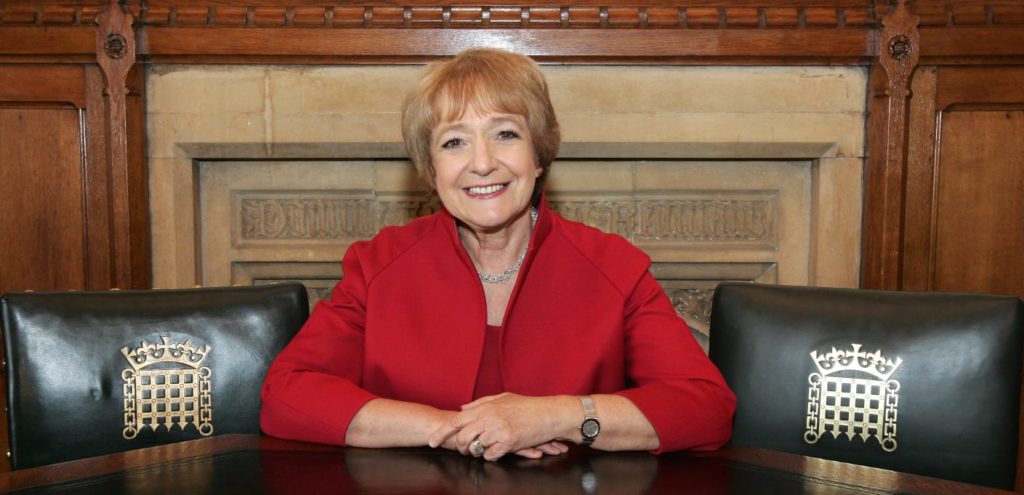
AN INTERVIEW WITH DAME MARGARET HODGE
A long-serving politician for the British Labour Party and holder of many ministerial positions during her distinguished career, on February 3rd Dame Margaret Hodge caused a stir in the House of Commons by calling on the government to sanction Kazakh oligarchs. Whilst positive changes to the hierarchy appear to be afoot, in her speech Dame Margaret highlighted how the UK is seen as the ‘jurisdiction of choice for dirty money,’ leaving numerous figures connected to the old elite, including Timur Kulibayev, Dariga and Dinara Nazarbayeva and Kairat Sharipbayev ‘laughing all the way to the bank.’ OCA Magazine decided to find out more…
OCA Magazine: Obviously, Ukraine is at the forefront of everyone’s thoughts at the moment – in terms of sanctions, do you think the British government is doing enough?
Margaret Hodge: No, I think we should go further, and I’ve given a number of lists to the foreign office of people I think should be sanctioned. Another problem is that we’ve frozen the assets of some of these people, not seized them. I think that’s a challenge for the government, to seize assets which are often being stolen from the populations, whether you’re talking about Kazakhstan, Azerbaijan or Russia. To the extent that sanctions can have an impact in the medium term – and I think we’ve got to be much tougher on cutting our oil and gas supplies from Russia – this has got to be much more vigorously pursued if it’s to be at all effective in curtailing the worst excesses of what Putin is trying to do.
OCA: You may not be aware, but you’re now famous in Central Asia because of the statement about Kazakh oligarchs you delivered to the House of Commons. Looking at Kazakhstan in the wake of events there in January, given that the UK is among the top five countries in terms of investment, and approximately 500 British companies operate there, what impact do you think sanctioning Kazakh individuals would have on this?
MH: Obviously, it was those events that led to people talking to me about the activities of the kleptocrats, the ruling elite in Kazakhstan; it was in the wake of the response of the ruling elite and the bringing in of Russian troops to overpower the demonstrators that my attention was drawn to what was happening there. My speciality is the campaign against dirty money. If we’re serious about trying to exert our influence to clamp down on kleptocracies and to prevent Britain becoming a hub for dirty money, there may need to be an adjustment to where we invest. It goes to the financial services sector here in the UK and it will go to investment in Kazakhstan. We have to make sure there’s an ethical dimension to how we invest around the world, and I think if anything has come out of this dreadful Ukraine crisis it’s an understanding that there are ethical and moral dimensions to how we operate, both nationally and internationally, that must impact on where we invest, who we make friends with, and who we allow to trade in the UK. I think there’s going to be a cultural shift as a result of this crisis. It’s sad because it will create more a divided world, but on the other hand, where our investment can support democratic movements and the fight against kleptocracy, we should do that.
OCA: According to a KPMG report, 162 people control around 55% of Kazakhstan’s total wealth, and now some of Kazakhstan’s infamous elite live in London, whilst others own properties here. Transparency International identified £600 million worth belonging to those with links to the Kazakh elite. What can be done to combat this?
MH: I think this is an area where Britain has allowed itself to become the jurisdiction of choice for dirty money. It doesn’t have to be like this. There are actions on four fronts we could take in the UK. First, we need to look at regulation. Since the time of Margaret Thatcher, both Labour and Conservative governments have deregulated the financial services sector too much, so we need to look at our regulatory framework and there are various things that need to be done. So, for example, when people set up a company here but put forward a letter box name for the beneficial owner, we have to reform Companies House so we can check the information and know who the beneficial owner is. We also need to give Companies House the power to interrogate the data and raise red flags. A new register of ownership where properties are owned by foreign entities is another example we’ve got to look at. We’ve also got to look at those who enable financial crime, the accountants, lawyers, advisors, the banks, all of whom collude, and in the worst cases, facilitate and enable financial crime. We have to hold those enablers to account.
We also need greater transparency throughout the system. One example in the recent sanctions would be that there’s no transparency about who owns trusts. So, Alisher Usmanov has been able to hide assets he holds in the UK in trusts. Sunlight is the best disinfectant, so that needs to be built into the system. We need tougher enforcement, because even where the agencies exist, they’re either starved of resources or there isn’t the political will for them to pursue dirty money in the way they should. The other thing is we’ve got to hold all of this to account for the public through parliament, and there’s got to be much better systems of accountability. If we start doing these things, Britain will become a less attractive place in which to try and launder your illicit, ill-gotten gains. So, there has to be a root and branch reform to start turning the tank around.
OCA: Why did it take so long for the government to proceed with the Economic Crime Bill, and does it go far enough?
MH: This was promised by David Cameron in 2015-16, and my reading of it is that because of the impact Brexit has had on our GDP and the economy the government ran away from tackling the financial services sector, which facilitates a lot of this dirty money. I think they were worried about challenging the financial service sector when they knew the economy was going to be hit by Brexit. I also think there’s a very close relationship with too many of the political class and those in the financial services sector, and you see that throughout the system from political donations to public appointments. Does the legislation go far enough? No, it’s badly drafted, and it only deals with the tip of the iceberg. To take Usmanov as an example again as just passed his assets to his daughters, it doesn’t cover family members or trusts, and it talks about freezing not seizing. This is why the forthcoming Economic Crime Bill will be our opportunity to see whether the government is serious about stamping out dirty money.
OCA: What can you tell our readers about the Tier-1 Investor or so-called ‘Golden Visa’ scheme which allowed figures such as Madiyar Ablyazov a path to British citizenship?
MH: That was brought in by the Labour government and the idea was to attract investment into the UK, but I thought it was ill thought through and really badly implemented as neither the Home Office, who were granting these golden visas, nor the banks that were taking the money checked on the individuals and where the money was coming from. Both thought the other was doing it, so nobody did. At its height, 60% of the visas granted were given to either Russians or Chinese. So it became a brilliant route for criminals and kleptocrats to bring their stolen wealth into the legitimate system. There’s a long-promised report analysing who was let in; it’s sitting somewhere in a government office and needs to be published. At that point, they could pick it up through sanctions, but we’re still waiting.
OCA: Is there anything else you’d like to add about how we can stop Kazakh kleptocrats ‘laughing all the way to the bank’ in the UK? For example, we have Unexplained Wealth Orders [UWOs], but the agencies tasked with implementing them are patently underfunded.
MH: They’re not just underfunded, they haven’t got the expertise. One important thing we did in the Economic Crime Bill is cap the amount people who challenged UWOs could claim from the government if the case was lost. I think we need to fund these agencies properly and staff them with the best people, either pay them enough or bring in private expertise to support them. UWOs have only been used four times, two of which have failed, and this was heralded as the big answer to the campaign against dirty money. We need a comprehensive approach to stop what’s happened from Kazakhstan and elsewhere, and it’s not just the former USSR. You can see from the Panama papers how dirty money floats around from regimes all over the world. If we get it right internationally for Russia and Ukraine, we’ll get it right for many, many other places too.
By Stephen M. Bland
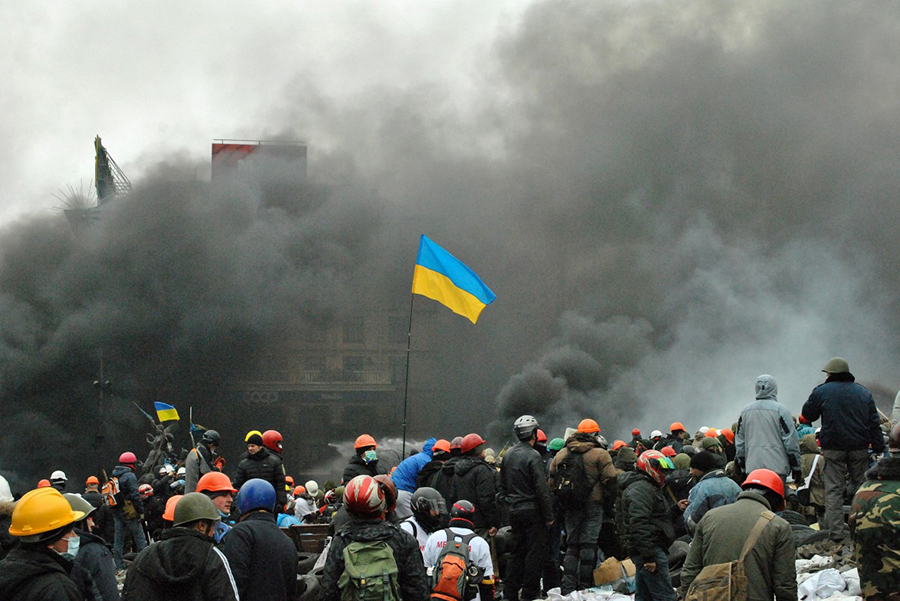
Central Asian Economies Face Difficult Times in 2022
The full-scale military invasion of Ukraine by the Russian armed forces and the subsequent series of unprecedented sanctions adopted by Western countries against Russia have led to significant economic consequences not only for the culpable but also for the whole world, especially the former Soviet republics.
Among these consequences, it is necessary to distinguish between both negative and positive and short-term and long-term impacts. Moreover, the effect does not much depend on whether the country is a member of the Eurasian Economic Union (Kazakhstan and Kyrgyzstan) or not (Uzbekistan, Tajikistan, and Turkmenistan). In almost all of these countries, Russia is the leading trading partner and one of the prominent investors. At the end of 2021, the trade turnover with Russia was around 20-30% in Kazakhstan, Kyrgyzstan, Tajikistan, and Uzbekistan. Therefore, the state of the Russian ruble could not but affect the national currencies of these countries.
Table 1. External trade turnover of central Asian countries by the end of 2021
| Kazakhstan | Kyrgyzstan | Tajikistan | Uzbekistan | |||||
| bn USD | % | bn USD | % | bn USD | % | bn USD | % | |
| Total Turnover | 101.5 | 7.2 | 6.4 | 42.1 | ||||
| with Russia | 24.2 | 24% | 2.3 | 32% | 1.4 | 21% | 7.5 | 18% |
| with China | 18.2 | 18% | 1.5 | 21% | 0.8 | 13% | 7.5 | 18% |
| with Kazakhstan | – | – | 1.1 | 15% | 1.2 | 18% | 3.9 | 9% |
| with Turkey | 4.1 | 4% | 0.7 | 10% | 0.4 | 6% | 3.4 | 8% |
Among the short-term implications, it is necessary to highlight the impact on the Central Asian states’ financial and banking spheres. Although significant, far less strong sanctions were adopted against Russia back in 2014 and had already affected the ruble exchange rate – it fell by almost half against the US dollar, which forced the Central Bank of Russia to significantly raise its interest rate, which, in turn, severely limited the access of businesses and citizens to bank loans. As a result, economic growth slowed down considerably, which led to a long stagnation of the Russian economy and caused, along the chain, similar problems in Central Asian countries. For instance, the Kazakh national currency was also in free fall while inflation rose sharply.
This time, immediately after the adoption of the first packages of sanctions, the Russian ruble immediately collapsed, falling from 80 to 120 against the US dollar. But in a short time, the Central Bank managed to stabilize the ruble exchange rate by raising the interest rate to 20% (a bit later, this rate was reduced to 17%) and through restrictions on the conversion and export of foreign currency from the country. The return of the ruble exchange rate to its pre-war status was also facilitated by a radical reduction in imports to Russia due to its disconnection from SWIFT and measures to restrict Western exports to Russia. However, despite the stabilization of Russia’s financial and banking sector, commercial credit has again become unaffordable for businesses and citizens. As a result, GDP is expected to drop by 8.5% this year.
The short-term depreciation of the ruble led to a sharp drop in exchange rates of the national currencies in Central Asia, too, for example, in Kazakhstan – by 22%, Kyrgyzstan – by 24%, Tajikistan – by 15%, and Uzbekistan – by 7%. Likewise, following the stabilization of the Russian ruble, these national currencies restored somewhat, but not completely.
The exchange rates of the central Asian countries were affected by the fact that these economies are dependent on remittances from labour migrants. Since Russia introduced significant commissions and restrictions on the purchase and export of US dollars, labour migrants have had no choice but to transfer their incomes to their homeland in Russian rubles, which has led to an oversupply of this currency in the local currency markets of these countries.
There is, and will continue to be, longer-term implications caused by the expected recession in Russia. This recession will negatively impact the incomes of labour migrants and the state of Central Asian countries’ foreign trade. For example, in Uzbekistan, remittances from labour migrants reached $7.6 billion in 2021, mainly from Russia, constituting 11.6% of the country’s GDP. In Kyrgyzstan and Tajikistan, this share is even higher – 27.8% and 30.1%, respectively. But now, the World Bank forecasts a decrease in income from migrants this year in Kyrgyzstan – by 33%, Tajikistan – by 22%, and Uzbekistan – by 21%.
A significant proportion of migrants from the region have been employed in Russia’s massive and, until recently, rapidly developing construction sector. Now that mortgages are becoming too expensive for Russians, production decline in this sector is expected. This means a reduction in both the income of migrants and the demand for labour in this sector. That will entail the outflow of a significant part of migrants back to their homeland, which, in turn, may lead to an increase in social tensions in the countries of the region, especially in Tajikistan, Uzbekistan, and Kyrgyzstan.
As for foreign trade, there are two essential aspects to keep in mind. First, the fact that a significant share of foreign trade in Central Asia, especially with Europe and Asia, was carried out along the trade and logistics routes passing through the territory of the Russian Federation, primarily through seaports in the Baltic States, the Black Sea, and the Far East. Now that sanctions have been imposed on Russia on the use of European seaports and its sea vessels, the question arises as to how the countries of Central Asia will trade with Europe and Asia. For them, the routes connecting them with China and Iran remain the only ones available for the moment.
In this regard, Uzbekistan has already intensified negotiations and reached agreements with Pakistan and Afghanistan on opening a rail-road and track trade routes that would allow for cargo transportation between Central Asia and the southern seaports of Pakistan, Karachi, and Bin Qasim. As a result of these negotiations, the first cargo from India was sent and received by Uzbekistan in March this year. However, the development of this trade route will take a long time before it becomes a full-fledged alternative to the northern ones that have developed over the past century and a half.
In the same context, we should view the revived negotiations between Uzbekistan, Kyrgyzstan, and China on constructing a railway route through the territory of these three countries. Again, this route will not begin to operate soon. Finally, in view of the territory of Russia having turned into a logistical impasse, even China was forced to promote the project of a bypass combined railway and sea route through the territory of Kazakhstan, Azerbaijan, then Romania and other European countries, crossing the Caspian and Black Seas, with a total length of 11 thousand km. On April 13, the first cargo from China was sent along this route.
Another aspect of the impact of the war and sanctions on trade activities of the Central Asian states has to do with the region’s bilateral trade with Russia. In March, Russia imposed a ban on grain exports from the country, followed by a similar decision by Kazakhstan, which itself had previously imported Russian wheat, but in turn, provided 90% of the needs of its southern neighbours. As a result, Uzbekistan, Kyrgyzstan, and Tajikistan now face the threat of a shortage of flour for domestic consumption.
Besides, it is no longer clear how both sides will settle payments with each other, given that settlements in dollars will be inaccessible for the Russian side. The parties will have to conduct settlements in rubles and local currency, which will complicate the process technically and in terms of pricing.
In addition to the negative consequences for the economies of the Central Asian countries, there are also some emerging opportunities for them, especially in terms of increasing exports to Russia of certain types of products, primarily agricultural ones. However, there are no signals that these new opportunities are being realised. And it is not yet clear whether the growth of exports from the Central Asian countries to the Russian Federation will be able to thoroughly neutralise the impact of sanctions.
Alisher Ilkhamov
Central Asia Due Diligence
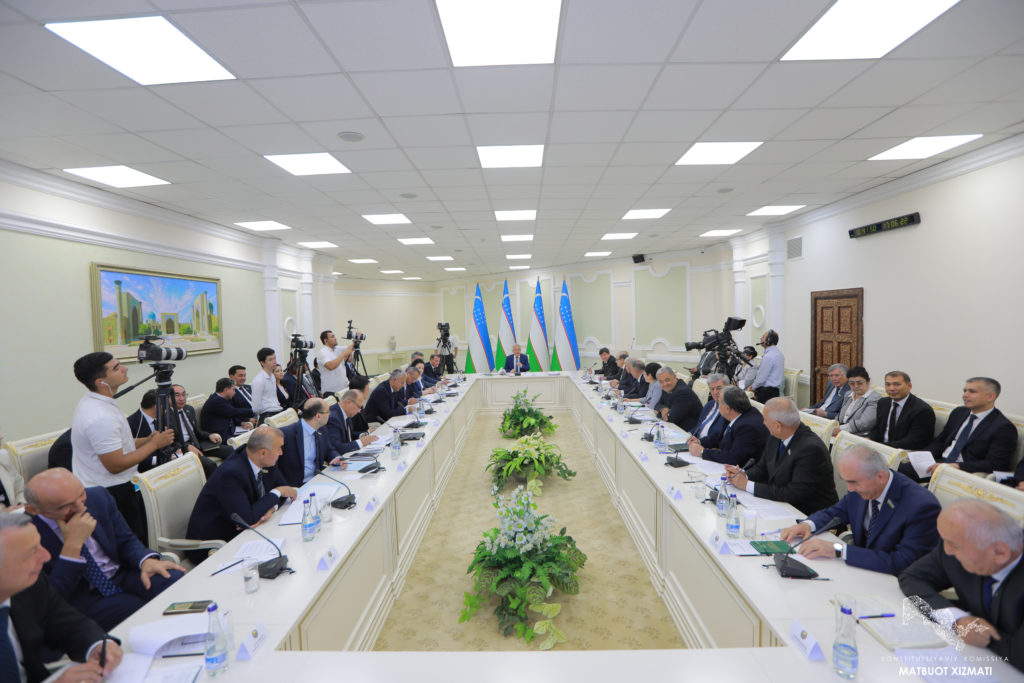
NEW UZBEKISTAN SEEKS CONSTITUTIONAL REFORMS
On May 20, 2022 the Constitutional Commission was established to develop proposals for constitutional amendments as part of a “New Uzbekistan” image refit.
This Constitutional Commission is comprised of deputies and senators from all regions, representatives from various social strata, civil society institutions, leading lawyers, political scientists, and other experts (47 people in total).
Uzbekistan has a long history of implementing constitutional reforms. 32 amendments and additions to 21 articles of the Constitution were made 7 times as part of the implementation of the tasks of the Action Strategy in five priority areas between 2017–2021.
They concerned, in particular, the activities of the parliament, government and the President, strengthening the independence and development of the judiciary, the system of checks and balances between the branches of government, the democratisation of the electoral system and the Mahalla.
During the presidential elections of Uzbekistan in October 2021 an important proposal was put forward to transform Uzbekistan’s democracy – the implementation of constitutional reform.
The first proposal to consider constitutional amendments and additions was made by voters during a meeting with UzLiDeP presidential candidate Shavkat Mirziyoyev in the Karakalpakstan district of Bozatau. The priority directions of constitutional reforms were outlined in President Shavkat Mirziyoyev’s fundamental book, “New Uzbekistan Development Strategy,” raising democratic reforms to a fundamentally different level.
Several areas of constitutional reform were identified as priorities: (1) the change of the paradigm “state – society – person” to a new one: “person – society – state”; (2) the provision of human interests in the process of economic reforms; (3) constitutional consolidation of the role and status of civil society institutions with the principle “Society is the initiator of reforms”; (4) the definition of the constitutional foundations for the development of the institution of the family and traditional human values; (5) a state youth policy with comprehensive support for youth; (6) reforming the principle that “New Uzbekistan is a social state” with a just society; (7) improving human rights including preventing child labor and protecting those with disabilities or from the older generation; (8) new environmental provisions linked to global climate change; and (9) the development of kindergartens, schools, higher education and science, which are interrelated components of the basis of the “Third Renaissance”.
As such, the Uzbek Parliament determined that the Constitutional Commission should be responsible for developing suitable proposals and draft laws and engaging experts to interpret statistical data and documents from among various state bodies and organisations. The commission will also monitor violations of the new constitutional rights and engage the relevant departments.
The Constitutional Commission is expect to follow a number of important principles including those of transparency and accountability. In performing this role the Press Service of the Constitutional Commission will provide in simple and understandable language the needs, priorities and main directions of constitutional reforms. Additionally, collegiality will be practiced – all members of the Constitutional Commission have a single vote and equal decision-making rights. Finally, the President’s idea that “the people are the creators of the law” is to be implemented through widespread participation of civil society institutions, academic, research, and analytical centres in the Constitutional Commission’s activities.
To date the Commission has received more than 45 thousand proposals from citizens, organizations, educational and academic societies. The most important issues raised regard: human rights issues; activity of high state bodies (government, parliament, judiciary); local authority; ecological issues; social welfare; civil society institutions (mass media, public control); gender issues; international relations; cultural heritage.
President Mirziyoyev at the meeting with the members of the Commission on June 20 proposed the adoption of amendments through a referendum to take into account the opinion of the population and its initiatives as much as possible. The President also emphasised the priority of reflecting in new Constitution additional guarantees for ensuring interests, freedoms and dignity of people as well as securing the principles of a social state – the idea of “Uzbekistan is a social state”.
In conclusion, the constitutional reforms will undoubtedly serve to implement the tasks of further improving the well-being of the population and the prosperity of the country, strengthening its economic power and competitiveness in the world.
Prof. Akmal Saidov,
Chairman of the Commission
for Constitutional Reforms in Uzbekistan,
First Deputy Speaker of the Legislative Chamber of
the Oliy Majlis (Parliament) of Uzbekistan,
Director of the National Centre of the Republic of Uzbekistan
for Human Rights
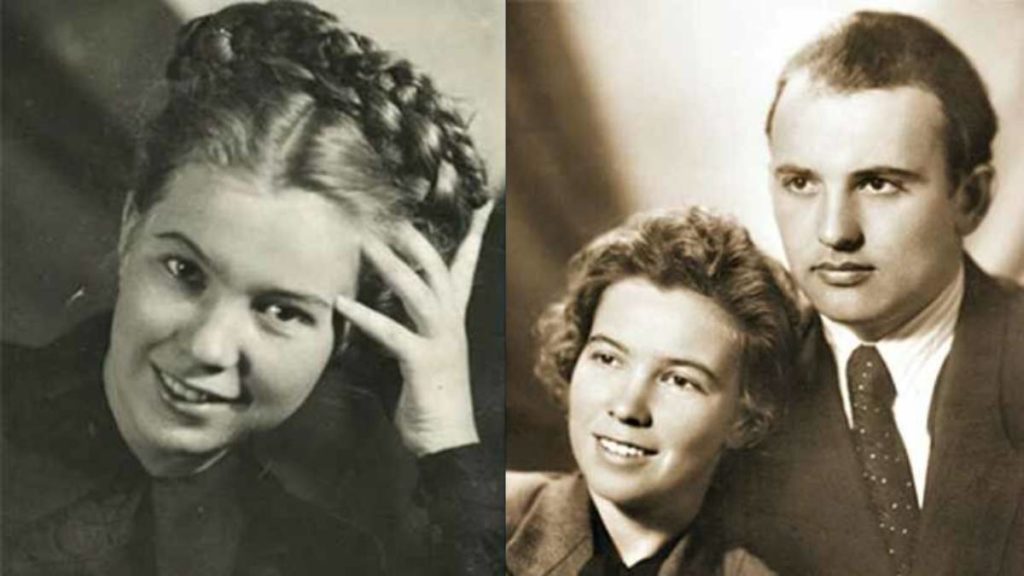
Raisa Gorbacheva – Remembering the First Lady of the USSR
By Stephen M. Bland
This year marks the 90th anniversary of the birth of Raisa Gorbacheva. The wife of Mikhail Gorbachev, Raisa was a brilliant sociologist in her own right, and as the first visible First Lady of the Soviet Union, became a sensation in the West, where her candour, forcefulness and glamorous appearance made her an important asset in her husband’s efforts to win over hearts and minds abroad. At home, however, where there was no tradition of a ‘First Lady’ and the wives of top officials were rarely seen and never heard, she was the subject of much criticism, both personal and because of her husband’s attempts to reform the USSR.
Born in the village of Rubtsovsk in western Siberia, Raisa’s father was a railway worker from Ukraine, whilst her mother was a peasant. Illiterate until her 20s, her father had been executed in a gulag. Despite these humble beginnings, however, she was an outstanding student and graduated from secondary school with a gold medal, affording her entry to study philosophy at Moscow State University, where she caught the eye of a young Mikhail Gorbachev. With his attempts to woo her rebuffed, Gorbachev would have to persevere for two years before they were married in 1953. Their only child, Irina, was born four years later, by which time Raisa had followed her husband to his home region of Stavropol, where she taught at the Agricultural Institute whilst defending her thesis on The Development of New Features in the Life of the Peasantry in Collective Farms.
When the couple returned to the capital in 1978, Raisa taught at the Moscow State University for seven years whilst her husband continued his ascent into the halls of power, before stepping down to become an unpaid member of his staff in 1985. Unlike the wives of previous Soviet leaders, such as Brezhnev’s wife, Victoria, who stayed at home and made jam, and Andropov’s second wife, Tatiana, whom no one knew existed until she appeared at his state funeral in 1984, Raisa was not one to eschew the limelight. She found the petty politics and gossip of the tea-drinking circles of Kremlin wives stiflingly dull, preferring to accompany her husband when he travelled, both within the Soviet Union and abroad.
Mikhail and Raisa were a partnership, and although it wasn’t officially acknowledged, she served as one of his closest advisors, an arrangement previously unheard of within the Soviet Union. As Mikhail wrote of his wife in his memoirs, ‘We were bound first by our marriage, but also by our common views of life… We both preached the principle of equality.’ These sentiments were echoed by Raisa in her own memoir, I Hope, and in interviews where she stated she was ‘very lucky with Mikhail. We are really friends, or, if you prefer, we have great complicity.’
A darling of the press in the West for providing a splash of colour amidst the grey suits, Raisa was photographed visiting hospitals, schools and children’s homes, and taking tea with the wives of other world leaders. Her long-running spat with Nancy Reagan – whom she often outshone – also served as an amusing sideshow. After visiting the White House, she famously commented that ‘humanly speaking, a human being would like to live in a regular house. This is like a museum.’ Her shopping trips to London, Paris and New York were the stuff of legend, as was her vast and dazzling wardrobe.
Unsurprisingly, such a public persona didn’t always play as well to the public back at home, where despite the sexual revolution 70 years earlier, the conservative politics of a rigid patriarchy reigned supreme. Raisa was often portrayed as egotistical and ostentatious for such faux pas as visiting the victims of the Armenian earthquake of 1987 draped in fox furs. A celebrity in her own right, often subject to, in her own words, ‘invention, myths and even slander,’ in the same year she appeared on the cover of Pravda, a place where women were hardly ever featured. There was also an element of jealousy to the dislike of her, as her chauffeur-driven car and lavish designer wardrobe were obviously not available to ordinary Soviet citizens.
Over time, however, Raisa found her niche at home in promoting the welfare of sick children and women’s issues. She began to change minds though such acts as ensuring the victims of the Chernobyl disaster were taken care of, sponsoring a major paediatric hospital, and donating US$100,000 to the blood cancer charity, the International Association of Haematologists of the World for Children.
On the final day of the coup attempt by hardliners in 1991, Raisa suffered a stroke which left her left arm paralysed. According to her husband, she never fully recovered. After stepping out of the spotlight, she died of leukaemia on September 20th 1999 in the Munster University Hospital at the age of 67. Shortly before her passing, Raisa said that ‘I had to get sick with such a fatal illness and die to make people understand me.’ Upon learning of her death, U.S. President Clinton said that ‘The example she set, through her help for child victims of leukaemia and through her own courageous struggle against this terrible disease, was an inspiration to people everywhere.’ Raisa was interred in the Novodevichy Cemetery in Moscow, with thousands coming to say their farewells. In 2006, her family founded the Raisa Gorbacheva Foundation, which raises money to support those with childhood cancer.
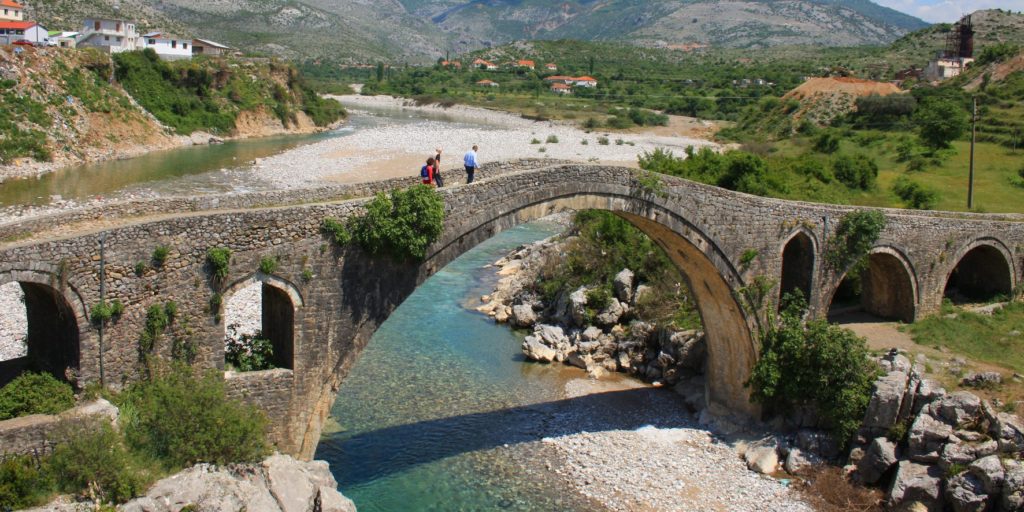
Tirana: European Capital of Youth 2022 aims to empower the future of Albania.
The European Youth Capital is awarded by the European Youth Forum, which aims to empower young people, boost their participation and strengthen European identity.
To find out more about Albania’s role as host of European Capital 2022, and how to inspire the next generation of leaders while retaining a strong cultural heritage, we interviewed H.E. Donika Hoxha – Ambassador of the Republic of Albania to the Republic of Bulgaria and the Republic of Moldova.
Dr. Donika Hoxha has been the Ambassador of the Republic of Albania to the Republic of Bulgaria since October 2018 and the Ambassador to the Republic of Moldova since October 2019, although she began her professional career in 1998 at the Ministry of Culture, Youth and Sport of the Republic of Albania.
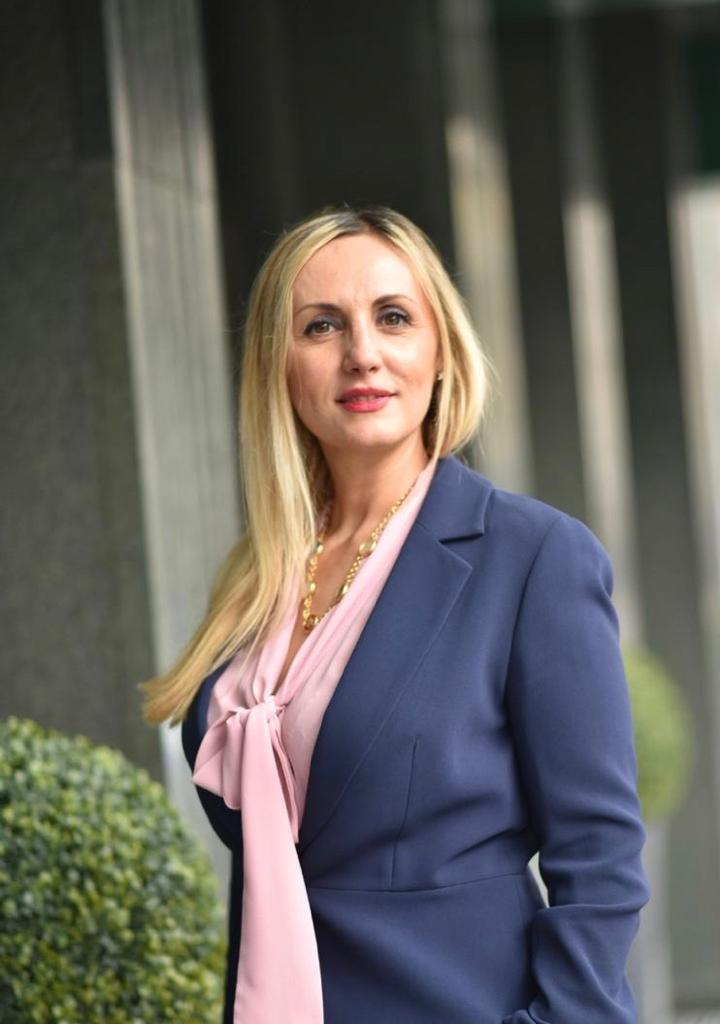
Being a diplomat and representing your own country is not merely a profession. You have to love your country, what it has been at different times in its history, and begin your duty by knowing what best serves its interests and then seek to achieve an outcome as close to those requirements as possible. For this, you need to invest time, energy and effort in your own professional development.
The most important qualities of a good leader have always been strategic and critical thinking, innovation and action. As we move farther into 2022, after being faced with the biggest challenge of the century, the COVID pandemic, I believe that the best leaders continue to be those who inspire, motivate and empower their team. I would like to quote Steve Jobs “Management is about persuading people to do things they do not want to do, while leadership is about inspiring people to do things they never thought they could.”
To be an effective leader you’ll also need to be a good listener and communicator. Among the skills we need to improve are transparency and good communication, to ensure that everyone has the right information no matter where they work and to get motivated to be engaged. Accountability is yet another important matter which factors into success. Leaders must hold themselves accountable to do the necessary work to fulfil their promises.
A good leader needs to have the resilience to push himself/herself over, through, around, and sometimes under obstacles. True motivation only appears by overcoming difficulties.
To go back to Tirana as European Youth Capital 2022, I can say that it has become already not only a space for the young boys and girls of Tirana, but a space for all the boys and girls of the region. Tirana has become an open house offering opportunities to all who present an innovative idea, encouraging new initiatives. We are dedicating a whole year to communicating, encouraging, financing and dedicating youth projects like never before in the last 31 years, with the final goal to nurture and create new leaders for the future of our country.
Most leaders throughout history have emerged out of the needs of the situation, arising from the dynamics and processes that unfold within and among a group of individuals as they endeavor to achieve a collective goal. As different situations call for different configurations of knowledge, skills, and abilities, the group turns to the members who mostly display drive, self-confidence, knowledge of the situation, honesty, and integrity. It is not difficult to spot them as they are able to exert considerable influence and provide direction while driven by a vision embraced by the entire group.
Talented up-and-coming new leaders among the young generation need challenging assignments that stretch them to new heights. We need to believe in them, encourage and support their aspirations. We need to produce more leaders rather than more followers, which is fundamental to long term success. To do that we need to support leadership development initiatives among the youngest generation, empowering them to make decisions that support the goals and vision of the community, encouraging them to change and make changes. I would like to quote the Mayor of Tirana, Erion Veliaj saying: “if you can change yourself, you can change a class; if you change a class, you can change a school; if you change a school, you can change a city; if you change a city, you can change a country, and if you change a country, you can build change in a region like the Balkans, and if you change a region, you can change Europe and the world. This is our appeal. This is our challenge”.
We need to create the conditions for our young people not to flee our countries and develop their talents. This would give long-term competitive advantages to our countries, especially considering our current situation of brain drain. Leaders exist at all levels. We have to identify the ones who can step in and fill critical roles when necessary. This should be our mission. As I said above, we must be held accountable for developing other leaders.
We need to cultivate young people’s interest and nurture their curiosity. More efforts and concrete actions are needed to integrate local knowledge in formal education curricula. However, that is not enough if the they are not encouraged to go out and experience.
And the programme of Tirana as European Youth Capital for 2022 is completely focused on youth and their assets and untapped potential to shine. The 8 programs of Tirana as European Youth Capital for 2022 are:
In terms of art, I would single out iconography. In Albania, it is well known especially in Berat and Korҫa, where are located the National Iconographic Museum “Onufri” and the National Museum of Mediaeval Art. Many of Onufri’s icons, dating back to the end of the European Renaissance, have managed to survive. You can also find Onufri’s works in the National Historical Museum of Tirana, specifically in the pavilion dedicated to post-Byzantine iconography.
The Albanian wealth of traditions is the principal motivation for travel to the country, with more and more tourists seeking to find out about this hidden gem in the Mediterranean, its culture and to experience its peculiarity of performing arts, handcrafts, rituals and cuisines. In the basket of Albanian intangible heritage stands proud Albanian folk iso-polyphony. Otherworldly, complex and trance-inducing sounds manifested by the power of the human voice, carrying the emotional weight of centuries of pride, poverty and oppression; polyphonic vocal music is a living tradition in Albania and in 2005 was proclaimed a Masterpiece of Oral and Intangible Heritage of Humanity by UNESCO. This centuries-old traditional folk performance, somewhere between singing and recitation, between lament and celebration, joins multiple voices into a unique synthesis and has spanned time and space to inspire anyone from 18th century poet Lord Byron to contemporary Albanian author Ismail Kadare, among many others.
Thus, safeguarding intangible cultural heritage, is a valuable source of the economy. The intangible elements of heritage are of greater significance in facilitating emotional and sentimental attachment to a nation. They contribute to national identity and their scientific and cultural value makes the country recognizable and improves its image.
There is a risk that certain elements of intangible cultural heritage could die out or disappear without help, but how can we safeguard and manage a heritage that is constantly changing and part of ‘living culture’ without freezing or trivializing it? Safeguarding them is about the transferring of knowledge, skills and meaning. Hence, first and foremost, a good knowledge by the young generation of the values of culture as a symbol of the identity of a country is significantly needed. Unfortunately, there is still a quite distant relationship between the young generation and art history and education and one of the main challenges in safeguarding intangible heritage is the loss of interest and enthusiasm to practice by the young generation.
When transmitted from generation to generation, intangible heritage is continuously created and recreated. It is exactly recreation that we have to encourage. A substantial engagement of young professionals in spreading the importance of active participation of local communities to protect and safeguard the cultural activities needs to be encouraged. On the other hand, governments, international organizations and NGOs have an important role in supporting projects and initiatives to this end and of course, Tirana being the European Youth Capital 2022 will assist this!
https://tiranaeyc2022.al/en/calendar/?external=1 – The website for information and calendar of events for European Youth Capital 2022
Many thanks
Notes
Add in a program of events for European Youth Capital 2022
Intersperse with photos of cultural activity and sights
Photo of Dr Dr Donika Hoxha at beginning

LET OTHER PEOPLE KNOW ABOUT YOU!
INTERVIEW: TATIANA ZHUKOVA
OCA Magazine: Tell us, please, about yourself and your creative activity / work
Tatiana Zhukova: I am Ukrainian, born and raised in Odessa. For the last 10 years I have been working in the field of personnel management.
Since 2021, I am a PhD student in Odessa State Economical University, engaged in
scientific activities. Currently, in connection with the war in Ukraine, I am conducting
research in the field of personnel management in war conditions: Ukrainians working
remotely, hiding in basements from explosions, or moving to a new place, continue to perform business tasks. I am looking for international partners, universities or research foundations, who are interested in this topic, to conduct further joint research and find solutions to help people.
I dreamed of being a writer since my school days.
One day, I decided to experiment, not imagining what result it would bring. For 90 days, I wrote down gratitude:
– for happiness and pleasant moments of today,
– gratitude to God and to myself.
After 2 weeks of this practice, I noticed how many creative thoughts were in my head and I had an approximate plot for my first book.
After 4 weeks, I already had a clear understanding of what the plot would be and the confidence that I would write.
After 7 months, a book was born, which is called “The Power of Gratitude. The struggle between good and evil.”
And after some time, the second book “The History of Neon” appeared.
OCA: How did you choose your path and who is your role model in the creative space or life?
TZ: My path is a mix of goals, achievements, trial and error, perseverance and constant work on myself. I admire people who know how to enjoy life, especially in difficult moments of life. Who knows how to make decisions quickly, be supportive and a true friend. First of all, I talk about my mother, knowing her life path, for me she is a symbol of fortitude and deepest wisdom.
OCA: What is your main achievement in 2021-2022?
TZ: In 2021, I had the honor to participate in the X International Literary Contest Open Eurasia, and I was among the winners in the prose category.
In 2022, life presents me with a new challenge – the war in Ukraine. Everything that we have been creating for years is disappearing before our eyes. I never thought that the war will be in my life. You know, when you watch on TV or read about military events in a foreign country, of course, it’s scary. But these are incommensurable emotions when all this happens in your life: checkpoints throughout the city and on all roads of the country, air raid sirens several times a day, rocket attacks on residential areas, curfews and other horrors of war.
My 2022 achievement is yet to come. I know for sure that I will overcome the challenge of war and in the future, I will definitely share my story with you.
OCA: What is the main feature that makes you and your art/work unique?
TZ: Love for God. Everything I do, I pass through the love of God. And the older I get, the more I realize how balanced the laws of nature work and how natural everything is.
At present, life is testing me, however, I believe in God and believe in people, and I know that everything will be fine.
OCA: Tell us, please, about the events of the Eurasian Creative Guild (London) and projects that you have already taken part in and how does ECG influence your creativity and success in your work?
TZ: I am immensely happy to meet the organizers of the Eurasian Creative Guild (London). Exactly one year ago, in the spring of 2021, I purposefully searched for international literary competitions in order to submit my book The History of Neon for professional jury evaluation and found the Open Eurasia competition.
The message that the book “The History of Neon” carries is spelled out with wisdom and deep meaning. And my victory (3rd place in the prose category) is a testament to the fact that such literature is valuable and this is inspiring.
Now I am giving an interview for your magazine as one of the winners of the contest. This is a small step towards popularizing myself as an author and my work.
My country is at war, I don’t know what my life will be like next. I believe that the sun will shine again on my way, I believe in kind people, and I know for sure that involvement with the ECG Creative Guild (London) will help me overcome this thorny path.
OCA: What is your motivation and the main aim of your creativity?
TZ: For me, the motivation is my son, who is 15 years old, to give him the opportunity to study and live in a peaceful country.
My goal is to develop my creativity further, write new books, continue my scientific activity (I plan to transfer to a university in the UK, I don’t know yet how much this is possible). Find a new home, build my life and continue to contribute to the world.
OCA: What would you wish for the members of the Guild and other creative people, just starting their career?
TZ: State yourself. Someone hesitates or is afraid that he will be judged and not appreciated. Believe in yourself, in your creativity, in God. If your creativity is useful to the world, you should share it. Let other people know about you!
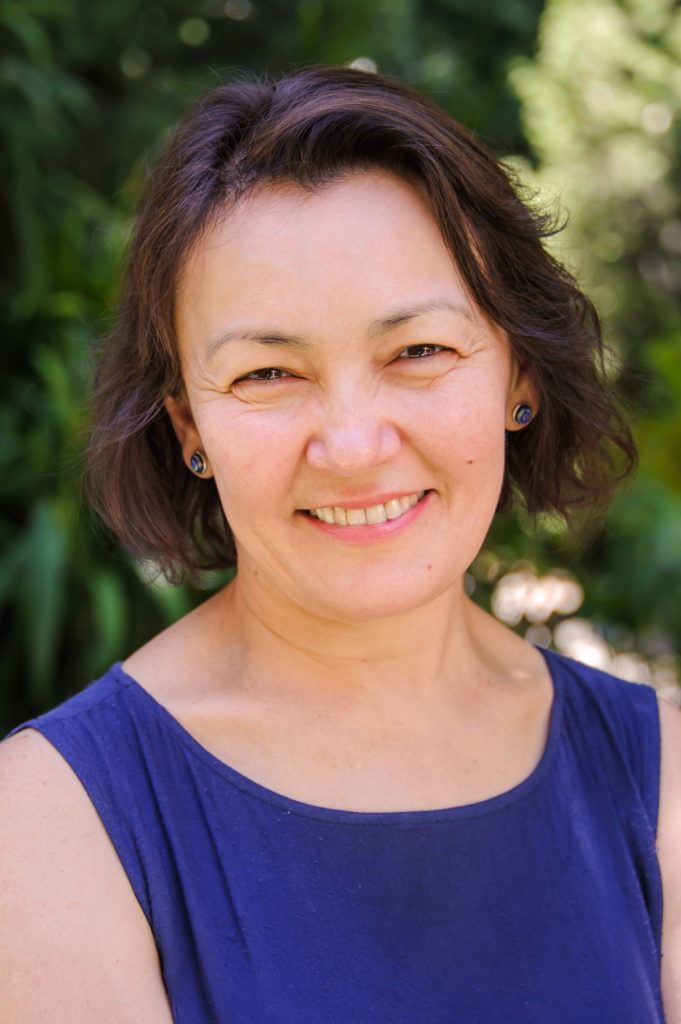
EVERY NEW DAY IS A NEW OPPORTUNITY
INTERVIEW: SURIYA YESSENTAYEVA
OCA Magazine: Tell us, please, about yourself and your creative activity / work
Suriya Yessentayeva: I am 57 years old with 3 daughters and 2 granddaughters who I love very much. I am also an oncologist, a chemotherapist. I have been working in this field for more than 30 years: 25 years in the Kazakh Research Institute of Oncology and Radiology (Almaty), since 2015 I have been the head of the Department of Oncology at the Kazakh-Russian Medical University.
Since 2013 I lead the non-governmental organisation “Scientific-Medical Society”, in which along with educational and scientific I began to develop a creative direction, Art-therapy for children with cancer, hereditary and other severe diseases. For us Art Therapy began quite traditionally: through the desire to help children who are seriously ill. The simplest thing to start with was drawing. Master-classes with the participation of famous Kazakh artists in the departments of children’s oncology and haematology, the organization of exhibitions of children’s work – it was great, beautiful, but not enough. I wanted more involvement of children in creativity, more long stay in it, that the result of therapy would be obvious.
The theatre, participation in the production of a play – this was a real boon in therapy for kids who have gone through a difficult path of treatment for cancer and even for those who were still going through this path. Since 2017, we have staged 4 productions in which all the roles were performed by children with different cancer and haematological diseases, some of them have overcome these diseases, some of them are on supportive therapy. All of the children’s works were exhibited in the theatre lobby during the performances.
During the pandemic, 5 videos were created with the participation of children. Since 2021 our studio in cooperation with Artishok Theatre has been working on the creation of a new play.
OCA: How did you choose your path and who is your role model in the creative space or life?
SY: After graduating from high school with a mathematical bias, I planned to go to university to study applied mathematics. My dad convinced me that being a doctor was cooler: “A doctor in Africa and on a submarine is a doctor. If you marry a border guard, what will you do with your maths?” After graduating from medical school I didn’t even think about oncology, within a year I worked as a therapist in one of the districts of Almaty region, it took me about 3 hours to get to work and back. By chance I got to know that there was a vacancy at the institute of oncology (which can be reached within 15-20 minutes) and I agreed without thinking. I do not regret it. I think my teacher in oncology was professor Nino Apollonovna Chichua, MD. She was amazing, beautiful, demanding and kind. She taught me not only to be a chemotherapist, she taught me to write articles, to plan, organise and participate in scientific projects and many other things related to medical activity. Nino Apollonovna is a Georgian who grew up in Georgia and stayed in Almaty after graduating from medical school..
OCA: What is your main achievement in 2021-2022?
SY: For me the biggest achievement of 2021-2022 is that the pupils of our Art Therapy studio, these are kids who have managed not only to overcome cancer once, but most of them continue to face serious illnesses every day, took part in the international children’s and youth theatre festival-contest TTT “Theatre-Creativity-Talent”, which was held April 4-7, 2022 in Nur-Sultan, and won the second place in the “Performance” category.
Another important stage for me in 2022 was the start of a new project “Creativity is contagious. Pass it on to someone else”, a kind of report on the activities of the Art Therapy Studio for five years.
OCA: Tell us, please, about the events of the Eurasian Creative Guild (London) and projects that you have already taken part in and how does ECG influence your creativity and success in your work?
SY: For our organisation, the Scientific Medical Society, joining the Eurasian Creative Guild (London) was a very important milestone. It opened up opportunities to present our achievements and works at the international level. Videos with the children of the Art Therapy Studio, which were created by us during the pandemic, when no theatre was working, were presented at the Eurasian Film Festival in 2021. The video “Lighthouse” was shortlisted as a finalist in the music video category at the 3rd ECG Film Festival. In addition, a story by Amangeldin Amani, a participant in the Let’s Paint a Fairy Tale writing contest that we have been holding since 2017, “Your Future Depends on You,” was included in the short story collection “The Thread.” And we also took part in the Tashkent Guild Festival.
OCA: What is your motivation and the main aim of your creativity?
SY: I met cancer patients every day for 32 years, I realised that every day is a gift that must be appreciated. For me it is important that the patient and his family believe that they are not left alone with the disease, that there is always an opportunity, if not to relieve the patient from pain, then to help him and his loved ones to cope with despair, to believe that LIFE IS CONTINUING.
OCA: What would you wish for the members of the Guild and other creative people, just starting their career?
SY: Don’t stop, every new day is a new opportunity, a new step in your creativity. Creating beautiful things is a gift that is not given to everyone. Believe in yourself and trust in those who believe in you.
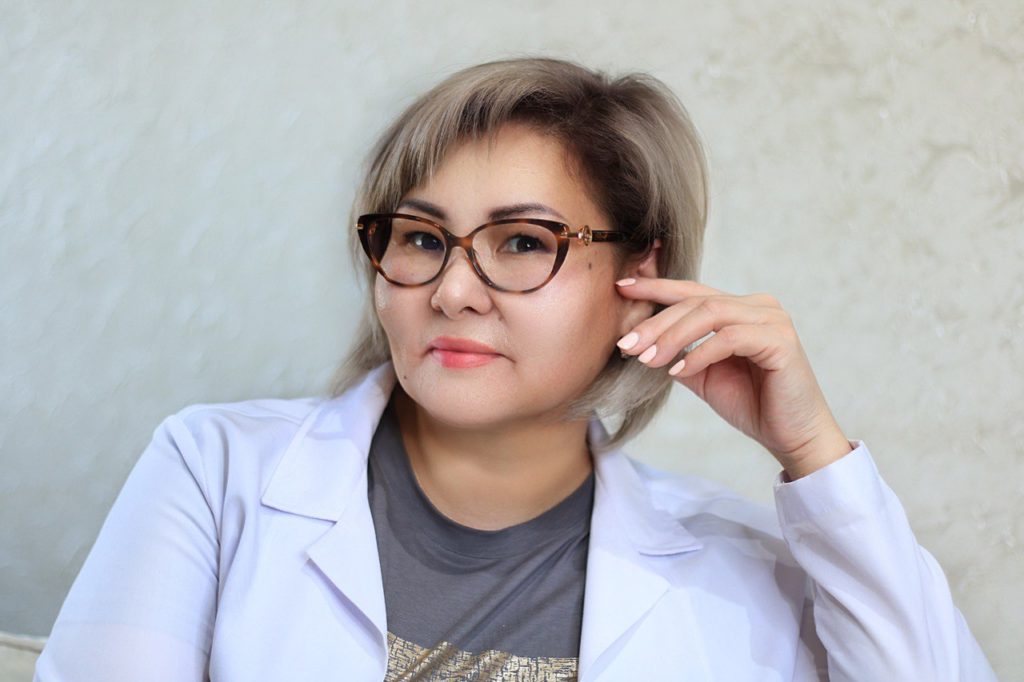
LIVE AND LEARN
INTERVIEW: BARSHAGUL TLEPINA
OCA Magazine: Tell us, please, about yourself and your creative activity / work
Barshagul Tlepina: My name is Barshagul Tlepina, I am 46 years old, I was born in the Aktobe region, live and work in Almaty. My first education is medical. I successfully realised myself in medicine, currently working as a cosmetologist. The second is technical, where, thanks to my technical experience, I received the title of expert auditor in the field of technical regulation and Metrology. My life motto is: “Live and learn”
Since childhood, I was fond of reading, writing poetry, and publishing it in newspapers. Love for creativity inspires me to perceive creation. For me, creativity is a manifestation of myself, my inner world, worldview, character, an integral part of the soul. I would say that creativity is the realisation of one’s talents. Each person is endowed with certain talents, and when he shows his talents, he creates.
Therefore, creativity is the result of human activity.
OCA: How did you choose your path and who is your role model in the creative space or life?
BT: On the way to creativity, I was lucky to work with the famous popular singer of the “neoclassical” genre (synthesis of opera and variety) “Golden Voice of Eurasia” Yerzhan Nurgaliyev, who currently lives and works in Moscow. Our joint project was implemented for special children “Revival of Love” “From Heart to Heart” also songs in a new format with interesting arrangements. One of my works is an author’s song dedicated to the memory of the great figure skater Denis Ten, the words were written by me, the music was written by the talented composer Shyryn Bazarkulova.
I express my deep gratitude to the creative mentor, who encouraged me to continue my literary activity and is a source of inspiration for all my work.
….Poetry is the voice of the soul, described by the intellect of the heart.
OCA: What is your main achievement in 2021-2022?
BT: The main achievement of 2021-2022 is the publication of my work “Age of Love” in the “Voices of Friends” Poetry Almanack dedicated to the 250th anniversary of Walter Scott, together with wonderful poets from all over the world, many thanks to the publishing house “HERTFORDSHIRE PRESS”
The brightest and most impressive for me and my son Amankeldiev Akimzhan was participation in the “Voices of Friends” festival. The emotions received during the festival gave me a new charge to create
OCA: What is the main feature that makes you and your art/work unique?
BT: Every person is unique. Creativity plays a huge role in human life, the possibility of a great desire to live, to be happy.
Creativity occupies a special place in the life of every person, since its manifestation is multifaceted. Creativity is unique because it is not repeatable, not copied, it is individual. This state is the highest gift for every creative person. Currently, I have written more than 200 pages in the “Poetry” genre and I thank the Universe for the opportunity to realise my dream
OCA: Tell us, please, about the events of the Eurasian Creative Guild (London) and projects that you have already taken part in and how does ECG influence your creativity and success in your work?
BT: I’m very grateful to the founder of the Eurasian Creative Guild, Akhmedjanov Marat Ismailovich, for the fact that my son and I were lucky to be members of the Guild. In December 2019, on the birthday of Akimzhan, together with the famous singer Yerzhan Nurgaliyev, we gave a charity concert “From Heart to Heart” for special children, at the Kazakhconcert Central Concert Hall with the support of the Ministry of Culture of the Republic of Kazakhstan. After the concert, I really wanted to realise my creative abilities at the international level, so I was lucky to meet the Guild!
In 2021, we became the participants of the grandiose event of the Eurasian Creative Guild in Borovoye at the Rixos Hotel – Opening of the creative workshop in the picturesque place of Shchuchinsk. The atmosphere and natural landscapes filled us with the most unforgettable emotions, and gave us magnificent bright moments.
OCA: What is your motivation and the main aim of your creativity?
BT: Creativity brings pleasure and joy. Being creative means thinking differently, acting differently, listening to yourself. Creativity helps me to get involved in the world around me, appreciate its beauty, and also appreciate other people. It also helps me discover more and more interesting and amazing things around us.
OCA: What would you wish for the members of the Guild and other creative people, just starting their career?
BT: A creative person is a whole world of brilliant ideas, a world of something beautiful and amazing. I wish the members of the Eurasian Creative Guild a creative flight, inspiration, joy, and music. Beautiful and sincere creative success, let each member of the Guild become a ray of inspiration for the creator of masterpieces or even simple but amazing trifles of art.
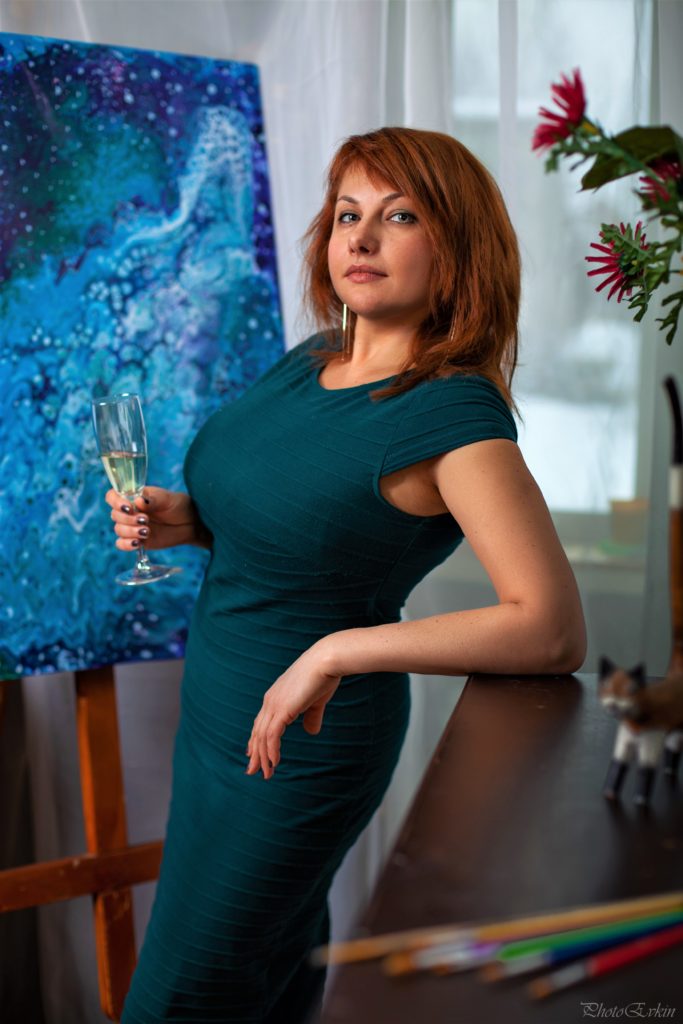
OCA Magazine: Tell us, please, about yourself and your creative activity / work
Elena Titenko: My name is Elena Titenko, I was born in the South of Russia in a family of Kuban Cossacks. I spent all my childhood and youth in a small village on the Black Sea coast. There you can look at the moonlit path and the starry sky endlessly, filled with peace and happiness.
My creative activity began at the Textile Academy. I learned how to turn a two-dimensional drawing into clothes in three-dimensional space. I participated in the competition of young designers “Russian Silhouette” with the “Mermaid” collection. Flowing fabric, and on top is a fishing net made of silver threads with shells woven into it, made by me by hand.
I loved to draw clothes and faces, then I became interested in oil painting.
OCA: How did you choose your path and who is your role model in the creative space or life?
ET: My path was chosen by my heart and a great desire to master oil painting. I took lessons from a talented artist and teacher Igor Sakharov. I like the paintings and technique of Claude Monet. I love to travel and study the architecture of different cities. The Gothic quarter of Barcelona and the masterpieces of the famous Catalan architect Antonio Gaudi, the ancient castles of Spain and Montreux in Switzerland, Monaco, Venice, Thailand with Buddhist temples. All this inspires and leadeth me to creativity.
OCA: What is your main achievement in 2021-2022?
ET: In May 2021, I took part in the exhibition for the holiday of ancient Slavic writing in Bulgaria, the city of Varna, Historical Park. I’ve learned the Slavic initial letter and amulets.
And there was also an exhibition in St. Petersburg dedicated to cosmos, where I showed a collection of paintings “Constellations of the Starry Sky”.
OCA: What is the main feature that makes you and your art/work unique?
ET: In my paintings, I combine the reality of this world and my fantasy. I mix different techniques and create new ones. At the beginning of the journey, I never know what the result will be, because I follow my feelings. Sometimes I conceive an image, take liquid acrylic and pour it onto a canvas, and when I see the result, I am convinced that we create everything around with our thoughts, ideas and desires. My paintings have depth, change depending on the lighting, they cannot be repeated, and this is the main uniqueness and value.
OCA: Tell us, please, about the events of the Eurasian Creative Guild (London) and projects that you have already taken part in and how does ECG influence your creativity and success in your work?
ET: I participated in the “Illustration” category in the “Open Eurasia” contest and I want to visit one of the festivals of the Eurasian Creative Guild (London). In July 2021, for the first time, I came to a meeting of the Guild, met unique talented people full of bright creative energy, who radiated joy and inspiration. There I found many new friends who are united by creativity. Many thanks to Marat for his activities and the opportunities that he creates for all of us.
OCA: What is your motivation and the main aim of your creativity?
ET: The search for true love is the strongest motivation. My goal is to do what gives me pleasure, fills me with energy and brings aesthetic joy to people. My dream is to paint as many snow-white canvases as possible and plant an olive orchard.
OCA: What would you wish for the members of the Guild and other creative people, just starting their career?
ET: I wish the members of the guild and all creative people to keep the fire in their souls, keep dreaming, fantasise and create new masterpieces for this World.
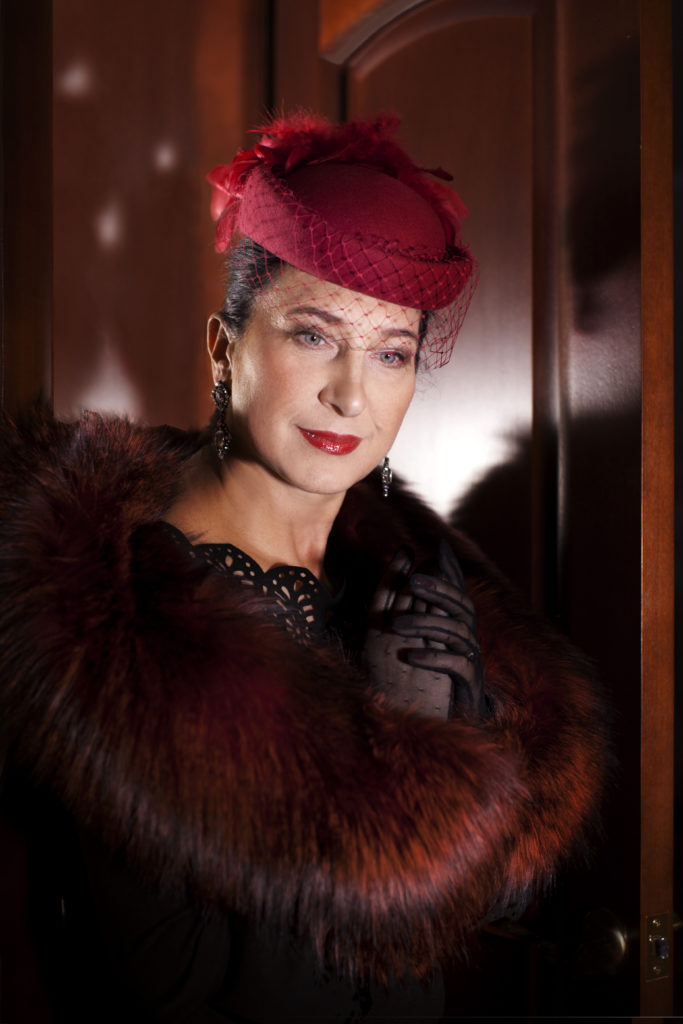
“POETRY IS MY UNIVERSAL LANGUAGE”
INTERVIEW: MARINA SHKROBOVA-VERNALIS
OCA Magazine: Tell us, please, about yourself and your creative activity / work
Marina Shkrobova-Vernalis: My name is Marina Shkrobova-Vernalis. I`m a poet, artist, actress, by first education-teacher, candidate of pedagogical sciences, holder of the gold badge “Knight of Humane Pedagogy”, by second education – diplomat, graduate of the Diplomatic Academy of the Ministry of Foreign Affairs of the Russian Federation. Author of the international creative project “Marina Vernalis`s Poetry Salon” and the mistress of the Poetry Salon. Member of the Russian Writers’ Union, author of five poetry books and three audiobooks. From 2022 an Ambassador of the Eurasian Creative Guild (London).
Marina VERNALIS is my stage name that combines the power of four female names: Faith, Hope, Love and Sophia (Wisdom) conveys the depth of those values that I bring to my audience. “MARINA VERNALIS`S POETRY SALON” is the author’s musical and poetic compositions, that allow a Man to realize his spiritual height, to seek the grace of the soul through the perception of the Beautiful!
8 years ago painting became the second wing of my Creativity!
OCA: How did you choose your path and who is your role model in the creative space or life?
MV: Pedagogy and my students led me to my creative path. When I started work as a school teacher, I was looking for a universal language of communication that was understandable to everyone and went from the heart – to the heart! The language of poetry became that for me! I began to speak to children in verse, and their ears grew accustomed to the vibrations of high Poetry, even though it was often poetry not for their age – for growing up! M. Tsvetaeva said: “Children won’t understand? Children understand too much!” I was convinced of this more than once.
My guides to the world of Poetry were the Silver Age poets I “discovered” myself: Anna Akhmatova, Marina Tsvetaeva, Boris Pasternak, Nikolai Gumilev, Igor Severyanin, Alexander Blok. In their works to this day I find high examples of the pattern of joining sounds, rhythms and meanings.
For me Poetry and Pedagogy exist together as forms of Art that bear people’s values and a high order of the Soul! I consider Shalva Amonashvili, the world famous Pedagogue, Academic, the author of Humane Pedagogy, as my Teacher in Life. His philosophy of Love and care for the child and each other feeds my philosophical Poetry and allows me to express in verse what my soul and the souls of many people in the world seek.
The example of creative firmness, dedication and tireless work for me is the Russian ballerina Anna Pavlova. In difficult moments I turn to the strength of her soul and re-watch my favorite film by Emil Lautyanu “Anna Pavlova”.
OCA: What is your main achievement in 2021-2022?
MV: My main achievements in the recent period are related to poetry and painting:
-I became a member of the International Academy of Russian Philology and received from the Academy the Diploma “Honoured Art Worker of Russia”;
-I received I.A. Bunin Medal from the Union of Writers of Russia;
– Silver Medal of the International Academy of Contemporary Arts for the creative project “Marina Vernalis’s Poetry Salon”;
-Received a 2nd degree diploma laureate of the X International Festival “Open Eurasia” in the category “Illustration”;
– Became an Ambassador of the Eurasian Creative Guild (London).
OCA: What is the main feature that makes you and your art/work unique?
MV: Sincerity, filled with the energy of Love and Harmony, my style combines: rhythm and lace of words in poems, colours and strokes in painting. Creative wisdom and Light, giving the mood for high vibrations and Beauty!
Also, my Voice! I’ve been “raising” it all my life, even though I know that God “put” this gift in my cradle at birth. My voice can bring the deepest meanings straight to the heart of my audience!
OCA: Tell us, please, about the events of the Eurasian Creative Guild (London) and projects that you have already taken part in and how does ECG influence your creativity and success in your work?
MV: In December 2021 I took part in the Jubilee X International Festival “Open Eurasia” and received a laureate diploma (2nd place) in the category “Illustration”. This is the first international award for my art and it gives me an incredible support and desire to create new masterpieces, to reveal my uniqueness! Now I dream to perform my poetry concerts with my new friends: in Kirgizia, Kazakhstan, Italy, England and many other countries!
OCA: What is your motivation and the main aim of your creativity?
MV: Motivation for me is the desire to feel myself as a “soul” (more than a body), to “cut the precious stone of my soul”, turning it into a diamond, to refine my sense of the Beautiful, to inspire people by my creativity!
I consider the goal of my life is to discover my uniqueness, my divine essence and to find my own human face. I want the voice of my Poetry to be heard by as many people in the world as possible.
OCA: What would you wish for the members of the Guild and other creative people, just starting their career?
MV: Don’t wait for all conditions and circumstances to be favourable, take small steps that reveal your unique talent!
Appreciate each of your successes and in this state of Joy, dare to dream and imagine your new Height to take a new step!
Photo: Tatyana Molotova
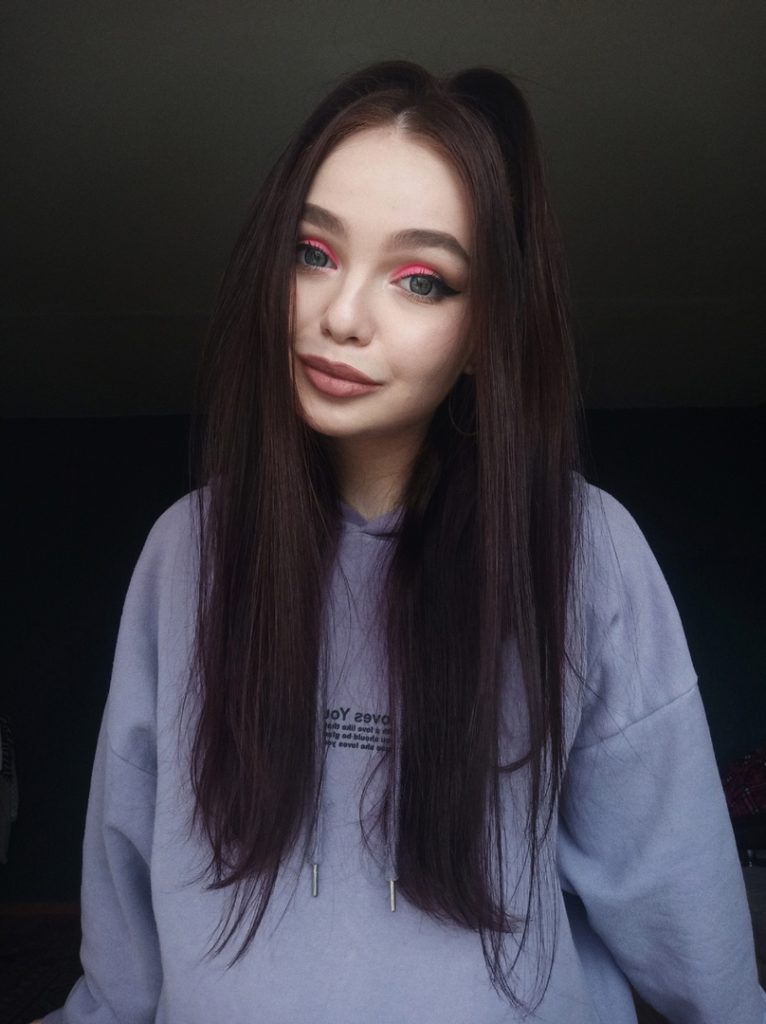
MY WHOLE FAMILY ARE CREATIVE PEOPLE
INTERVIEW: ANASTASIA SHEVCHENKO
OCA Magazine: Tell us, please, about yourself and your creative activity / work
Anastasia Shevchenko: I was born and grew up in a small closed city of Novouralsk. My whole family are creative people, so at an early age I realized that my life would be connected with art. At the age of two, looking at my dad, an artist, I began to draw. I studied at a school with an artistic and aesthetic bias, so I realized my creative potential there. The first years I focused on drawing, but I did it because at that time I still did not understand how to express my inner feelings differently. At the age of 11, I realized that I liked writing prose the most, although at that time I still did not take it seriously and did not think about it as my future. Now I know that being a writer is not just a hobby, but a lifestyle, a dream and a goal that I really want to go to, guided by the principle of “not a day without a line.”
OCA: How did you choose your path and who is your role model in the creative space or life?
AS: After graduation, I entered the Chelyabinsk State Institute of Culture, by a lucky chance, I got to the Faculty of Documentary Communications and Tourism at the Department of Library and Information Activities. It was there that I realized that I wanted to become a writer, because then writing ceased to be a tool of sublimation for me. I showed my creative side only in the fourth year, when we, as the most “uncreative” faculty, organized our own creative competition. My prose passages took the first place there. This became a kind of “kick” that fate gave me from the bottom of my heart, showing me where I need to go. Life is generally the best teacher. No outstanding person will explain to you so easily what you need to do. Besides, life is not only a wonderful teacher, it is also an inexhaustible source of inspiration; it will give you new food for thought every day.
OCA: What is your main achievement in 2021-2022?
AS: I think my biggest achievement this year is that I have become bolder in the manifestation of my creativity, I have stopped being afraid of criticism and regard “experience” as a “failure”, I have become more honest, first of all, with myself. Teenage romanticization and sentiment are, of course, fine, but it’s more useful to be in constant self–improvement. I am very happy that my creativity is growing and developing with me. I also realized that writing “to the table” no longer makes sense, and it’s time to move on, publish and communicate with my target audience in order to identify my strengths and weaknesses.
OCA: What is the main feature that makes you and your art/work unique?
AS: It seems to me that the main task of any good writer is not to give the reader ready-made answers to all his questions, but to ask those questions that the reader must answer for himself. This, I think, is the basis of my work.
OCA: Tell us, please, about the events of the Eurasian Creative Guild (London) and projects that you have already taken part in and how does ECG influence your creativity and success in your work?
AS: I haven’t had time to participate in Guild projects yet, but I will definitely do it in the future. However, I attended creative meetings. When a large number of people gather in one place who are sincerely in love with art, as well as united by a sense of belonging to a common cause, it’s just amazing. Emotions are indescribable!
OCA: What is your motivation and the main aim of your creativity?
AS: My main motivation is the realization that I can do more, better, understanding that I have potential that needs to be realized. Saving energy is wonderful, the main thing is to remember that the accumulated knowledge, experience, and potential must be released into the world in time. And my life goal is very simple – to realize myself as a professional in my field, because I have everything else, I am generally a happy person.
OCA: What would you wish for the members of the Guild and other creative people, just starting their career?
AS: First of all, consider your creativity not as a tool for making money (although this is the case), but as an opportunity to show what you feel and think to other people. This is a chance to establish communication even with those who do not understand you. All creative people can communicate without words: movements, images, even intonation. This is what makes each of us unique. Don’t be afraid to show yourself to the world. Every art has its own lover. Even if nine people don’t like your work, there will always be one who will be delighted.

“I WAS NOT INTERESTED IN ANYTHING BUT MOVIES..”
INTERVIEW: MAXUD SARSEMBAYEV
OCA Magazine: Tell us, please, about yourself and your creative activity / work
Maxud Sarsembayev: My name is Maxud Sarsembayev. I am a director, screenwriter, video editor and photographer.
I’ve been writing scripts with my co-writer and co-director Mansur Sarsembayev, for six years. The average score of our scripts on the American film platform of the best unreleased scripts “The Black List” is 7 out of 10.
We translate all our scripts into English and send them to American and European film competitions.
OCA: How did you choose your path and who is your role model in the creative space or life?
MS: It was easy to choose my path, because I was not interested in anything but movies, I would even say more: I am not interested to this day.
I started writing feature scripts with my co-writer in 2016. And, making short films in 2019.
OCA: What is your main achievement in 2021-2022?
MS: The major victories in 2021 are:
– Eurasian Creative Guild Film Festival 2021 – Best Screenplay (“Hacked Future”)
– Votkinsk International Film Festival 2021 (Russia) – Best Screenplay (“The Family Dialect”)
– Best Script Awards 2021 (London) – Best Asian Screenplay (“The Family Dialect”)
– Finalist Diploma “Pitch Lab 2022” from CTC TV (Russia): “Puncher” series and “Hacked Future” feature animated film. (*Here two of our projects made it to the finals, where we defended them at a pitching session in front of the leaders of the Russian film industry. A total of 1186 applications were submitted from 160 cities in 23 countries.
I participated in the Carl Schoenfeld film workshop organized by the Goethe Institute and the State Center for National Film Support in Kazakhstan. The selection process took place among thousands of young filmmakers and producers in Kazakhstan.
Also, I participated in workshops by American experts: director Hugo Perez, festival agent Kathleen McInnis, and producer Justin Feltman, organized by the American Film Showcase, the U.S. Consulate General in Kazakhstan and the 48HFR Online Film Academy. The selection was made among filmmakers from the CIS countries.
This year I am on the Jury in the English and Russian screenplay category at the 4th Eurasian Film Festival in London 2022.
OCA: What is the main feature that makes you and your art/work unique?
MS: What makes our work unique? Personally, from my point of view, it’s the originality of the ideas, as well as the meticulous approach to working on projects. For example, after we write a feature screenplay, we translate it into English by ourselves, but we don’t send it immediately to competitions. First, we send it to be evaluated for reviews on such popular American film platform as “The Black List” (where have been found such scripts as “Imitation game” and “King’s speech”). And once we get enough reviews with reasoned criticism, we make changes to the script, and already confident in the quality of the project, we send the script to competitions around the world.
OCA: Tell us, please, about the events of the Eurasian Creative Guild (London) and projects that you have already taken part in and how does ECG influence your creativity and success in your work?
MS: Since 2020, I have been a member of the “Film Industry Expert Council ECG” in the Eurasian Creative Guild.
In addition, I am a member of the jury in the upcoming contests from the “Expert Council”: “Best Video Content” (*video blog/travel video/podcast). 2nd contest “Best video clip or commercial”.
OCA: What is your motivation and the main aim of your creativity?
MS: Our goal is to break into Hollywood and “become part of the crowd”, but at the same time to represent Kazakhstan’s cinema on the world stage in the category “Foreign Language Film”.
OCA: What would you wish for the members of the Guild and other creative people, just starting their career?
MS: I wish to all people in the creative industries, “Create, create, create again! Do not retreat from difficulties and do not fear criticism or condemnation of the work”.
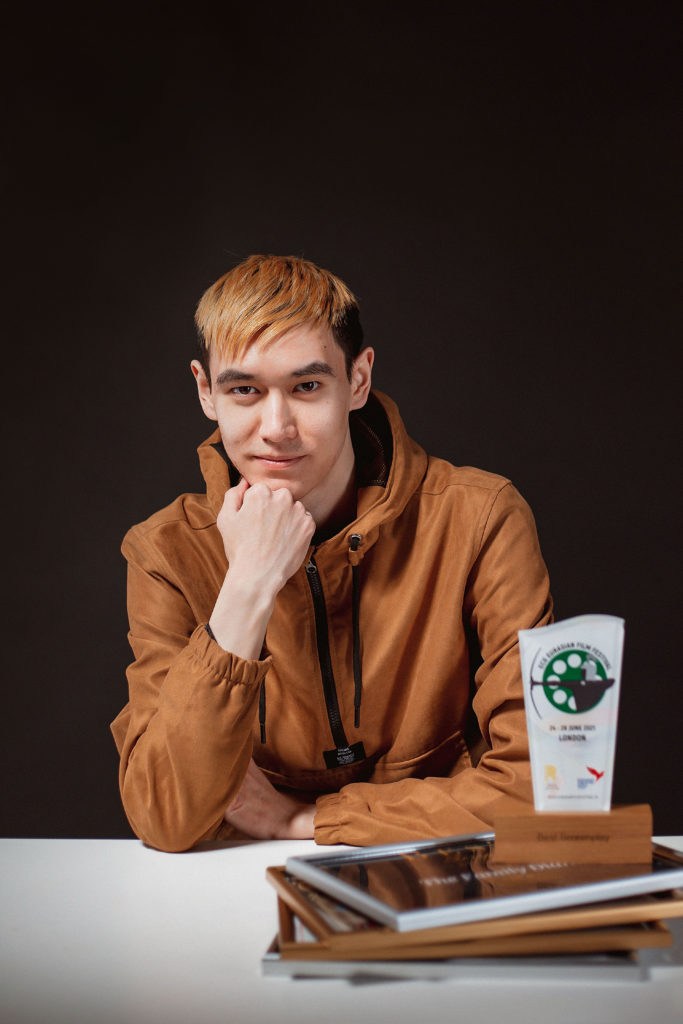
THE GOAL IS SELF-REALIZATION
INTERVIEW: MANSUR SARSEMBAYEV
OCA Magazine: Tell us, please, about yourself and your creative activity / work
MS: I am Mansur Sarsembayev, a big fan of cinematography and everything related to it. I started my screenwriting career together with my co-writer Maxud Sarsembayev back in 2016. Since then, we’ve written over 20 full-length screenplays, in genres ranging from action movies to comedies. We have honed our skills, it was evident in the Black List platform where our scores have improved with each script, we end up getting a 7 out of 10 from foreign critics.
In 2018 we sat at the director’s helm and made our debut short animated film, it has collected many awards and accolades from festivals such as: Peninsula Film Festival (Australia) – Best International Short Film; Calcutta International Cult Film Festival (India) – finalist; ARUFF Alemlere Rahmet (Turkey) – finalist.
In 2019, we made our first short feature film, “Поздний сеанс” (eng: Late Session), and although it didn’t collect a ton of awards, we gained a tremendous amount of experience that will help us avoid making the same mistakes in the future. Still, we were finalists in one festival: 2019, Indie Short Fest (Los Angeles) – Certificate of Achievement Finalist
Screenwriting has also paid off over the years; 2020 was a good year for me and my co-writer. For our script of the action movie “Ночной призрак” (eng: Night Ghost) we took an award: Toronto International Nollywood Film Festival – Best Screenplay under 120 pages (USA). And also for the script of the drama “В шаге от самого себя” (eng: One Step from Myself: Golden Pen) (Kazakhstan) – Best Screenplay and Drama of the Year.
OCA: How did you choose your path and who is your role model in the creative space or life?
MS: I wouldn’t lie if I said that our father is the one who instilled in us the right taste for movies. When I was a kid, my father had several boxes of cassettes, and we used to take them all and watch them over and over again. Especially “The Matrix” and “The Last Samurai”. When I was in high school, my co-writer and I used to take all the new releases from the video store off the shelves. And after watching it together with my father we used to discuss the pluses and minuses of the picture from the point of view of the visual range and script structure. And so our passion was formed. It is not difficult to guess that my father was like Moses for us, who pushed the boundaries of our imagination with movies. These circumstances will lead us to screenwriting in the future.
OCA: What is your main achievement in 2021-2022?
MS: In 2021, the author and I also have no small distinction, most of it scriptural achievement:
– Best Script Award (London) – Best Asian Screenplay “The Family Dialect”
– Votkinsk International Film Festival (Russia) – Best Screenplay “The Family Dialect”
– Eurasian Creative Guild Film Festival (London) – Best Screenplay “Hacked Future”
– Finalist Diploma “Pitch Lab 2022” from CTC TV (Russia): “Puncher” series and “Hacked Future” feature animated film.
OCA: What is the main feature that makes you and your art/work unique?
MS: My uniqueness rests on two pillars of faith. The first is the background of the films I’ve seen, and the scriptwriting experience of more than 6 years, which is a huge advantage for young filmmakers, especially those like us who are aiming for auteur cinema. As Akira Kurosawa said, “If you want to be a great director, be a great screenwriter”. Secondly, having a co-author makes up for the fact that I’m not an expert in certain aspects with more than one like-minded person.
OCA: Tell us, please, about the events of the Eurasian Creative Guild (London) and projects that you have already taken part in and how does ECG influence your creativity and success in your work?
MS: I have been a member of ECG since 2019. It’s always exciting to compete at a festival for an award, it’s like being in the ring, but instead of working your muscles, you’re working your guts out. Especially at the ECG Film Festival where the competition is always tough.
This year I was a member of the jury at ECG Film Festival IV, and it was our responsibility to read a lot of work from different authors. It was very enlightening and somewhat of an innovation to judge with an open mind. To abstract one’s preferences and favorite genres for the sake of fairness. This experiment makes it clear that judging is not that easy. There are so many factors to consider, whether it’s the author’s delivery, the dialogue, the characters, or the structure of the script. A huge plus is that you’re remembering all the basics of storytelling, and reinforcing your old knowledge.
OCA: What is your motivation and the main aim of your creativity?
MS: Every day we see more and more young directors conquering prestigious festivals like Sundance or Cannes, and you realize that a director in his 30s is no longer considered a prodigy. You don’t need more motivation than that. The goal is self-realization. If you want to go deeper, you have to make a feature film as an author, with the support of financing or with your own money.
OCA: What would you wish for the members of the Guild and other creative people, just starting their career?
MS: I wish Eurasia Guild members and all creative people to achieve the heights. Our dreams and interests define us as individuals, so it makes no sense to give them up.
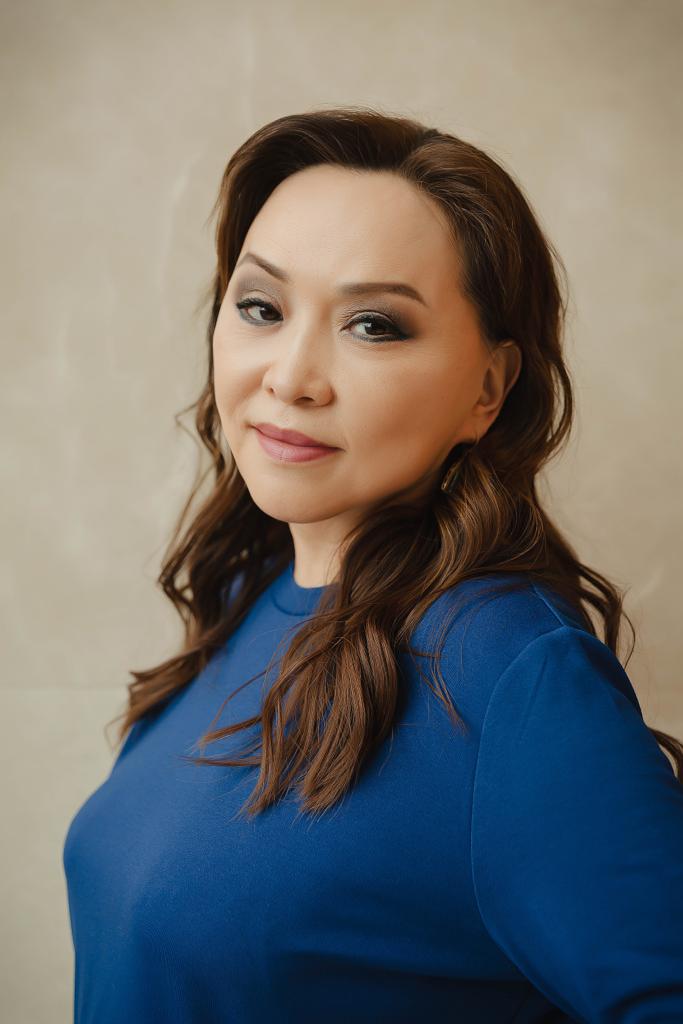
MY GOAL IN LIFE IS TO BE NEEDED BY PEOPLE
INTERVIEW: NAZYM SAPAROVA
OCA Magazine: Tell us, please, about yourself and your creative activity / work
Nazym Saparova: I was fond of reading from early childhood. I especially loved fairy tales of the peoples of the world. I wrote my first fairy tale at the age of 10. As I got older, I started writing stories. These were novelettes describing my inner and surrounding world. My father was a writer and journalist, so he always approved of the activity, which gradually turned into a hobby. After graduating from the university with a degree in journalism, I worked in the media for many years, going from an ordinary paper’s staffer to the chief editor. Later, I went to work for a company, where I retrained as a PR specialist, devoting another 15 years of my life to this occupation. But I never gave up my pen, I gave preference to short stories and novelettes. Many of them, unfortunately, did not survive, the rest I collected in a book that was published in 2017 in London, with the assistance of the Eurasian Creative Guild. The book is interesting because the heroes of my stories were real people, not fictional. That is why it is called “True Stories”. The book includes 3 chapters. One of them is stories about famous people in Kazakhstan, talented and special by the fact that they have received recognition during their lifetime. The other is stories about my family members, or people I knew personally. And the final one is philosophical reflections on a variety of topics that become sharp and significant in the life of any person, that they received recognition during their lifetime.
OCA: How did you choose your path and who is your role model in the creative space or life? How did you choose your path and who is your example/teacher?
NS: I became a writer on my father’s advice, who was for me not only the most dear and beloved person. He was also my teacher and mentor. Noticing my contemplation and love for fantasy, he asked me to make up stories on pictures from books when I was only 4 years old. He was devoting a lot of his time to me, and encouraging a children’s imagination in every possible way, he practically grew a writer out of me. My father, Samar Baizhanov, was an excellent journalist, his favourite genre was an essay – a genre that contains elements of a story. For many years he headed the most important newspaper in Kazakhstan. My father wrote not only articles in newspapers, he is the author of 23 books in prose. I am proud of my father, he was an honest and hardworking man. A street and a school bear his name in Almaty.
OCA: What is your main achievement in 2021-2022?
NS: My third book came into existence in 2021. This is a biographical story about the famous theatre and film director of Kazakhstan, Azerbaijan Mambetov, who was known for his theatrical performances not only in Kazakhstan, but also abroad. He staged performances in Moscow, Prague, Shiraz, took performances on tour to Paris and other cities of the world. These performances deservedly entered the treasury of Kazakhstani culture, and were awarded numerous awards. His life story is the story of a man, who thanks to his talent and work, achieved recognition and fame.
OCA: What is the main feature that makes you and your art/work unique?
NS: My main feature is love for literature, history, psychology. The human world is huge and diverse, and this is a goldmine of information that needs to be explored and passed through. All this leads to creativity, the desire to write comes by itself.
OCA: Tell us, please, about the events of the Eurasian Creative Guild (London) and projects that you have already taken part in and how does ECG influence your creativity and success in your work?
NS: During one of the events of the Eurasian Creative Guild in Almaty, I learned that it is possible to publish a book in London. And I felt it was right. The Guild’s offer to publish a book and distribute it to the whole world through the Guild is a good solution for aspiring writers. The presentation of my book took place in Stockholm, and it was a great time for me, as I not only saw a new country, but also met many creative people from different countries: artists, poets and writers.
OCA: What is your motivation and the main aim of your creativity?
NS: In my opinion, a big motivation is to increase the number of readers of my books, as well as to unite creative people (in the Guild) as like-minded people in a completely new and extraordinary form. We did not notice how we became friends. My goal in life is to be needed by people, and to bring good, maybe even in such a peculiar manner as writing.
OCA: What would you wish for the members of the Guild and other creative people, just starting their careers?
NS: I wish the Guild prosperity, because this union unites creative people in their ranks, whose thoughts are full of beauty, love, peace. I would like to wish creative people, starting their careers, good luck in new projects, work for people, and world peace, not be afraid of difficulties, and always go towards your goal and your dream.
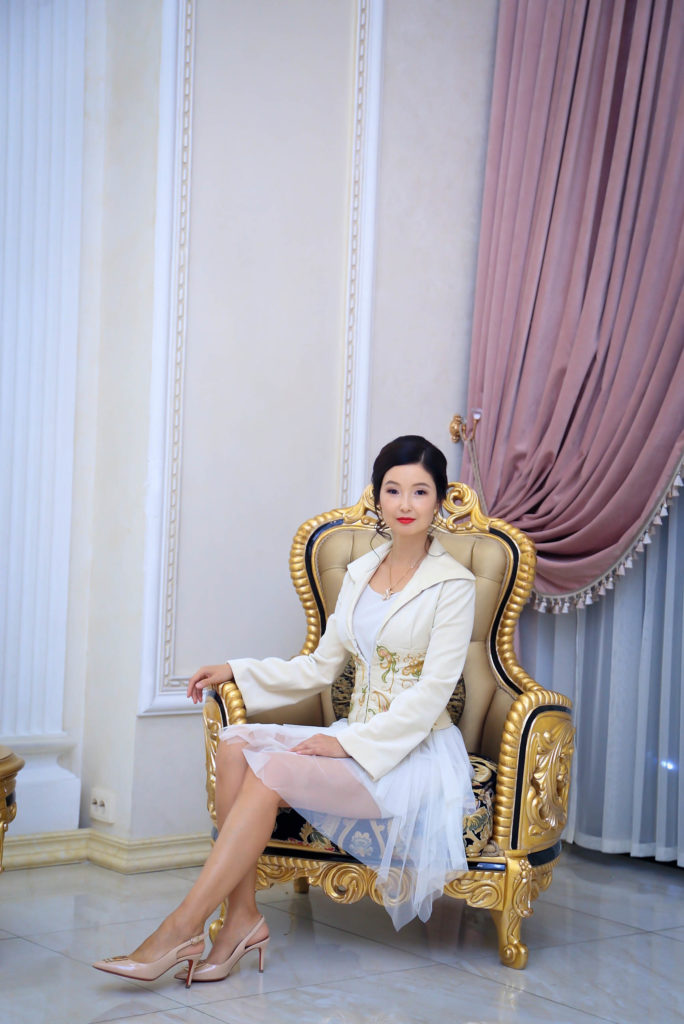
LISTEN ONLY TO YOUR INNER WORLD
INTERVIEW: AIGUL RYSKULBEKOVA
OCA Magazine: Tell us, please, about yourself and your creative activity / work
Aigul Ryskulbekova: Once, when I was studying at school, my friend asked me to make a birthday card for him, and from that moment I started to write my poetry, songs, fairy tales and stories. Your hidden talents can be easily discovered all of a sudden, by chance, and it’s very important to keep on trying and never give up.
I became a children’s author quite by accident, when I was watching my little sons playing, I came up with an idea that I need to leave something behind for them to remember me. The idea did not end there, of course, because I wanted to reach out and get to know my future grandchildren and great-grandchildren through my books, just to leave not only a trace in history, but also to share my creativity with you. I wanted to bring something good into this world and bring positive thoughts and most importantly – the endless, absolute love for everything.
OCA: How did you choose your path and who is your role model in the creative space or life?
AR: My first role model are my ancestors, who passed on all the talents of our Clan. The second one, of course, was my father, Mukan Ryskulbekov, the Honored Artist of the Kyrgyz Republic, the composer, singer and actor. He is no longer with us, nevertheless his songs are alive, he sends his feelings through his music, and I can still feel it through his creative work. To this day, he is called a People’s Artist, he was a man with deep feelings. Third one – my mother who taught me to feel love and to show it, which I highly appreciate. Nor should we fail to note, the children that chose me, my friends and my close ones, who makes me feel various types of emotions.
OCA: What is your main achievement in 2021-2022?
AR: As far as I am concerned, it is impossible to put my achievements into the time frame of one year, in the view of the fact that my achievements at this moment are the consequence of my past contribution to the future career. The main achievement of a person, I believe, is developing his or her own soul. We come into this world for a very important purpose, and for this purpose we must work on ourselves, improve and develop our merits, become better every day, raise the power of our Clan and increase the number of the clan’s talents and pass on their traditions, as well as, continuously helping people in developing their souls.
OCA: What is the main feature that makes you and your art/work unique?
AR: I don’t think I can be described as unique, that’s what people who judge your work do. I suppose, everyone is unique in their own perspective and is capable of identifying talents, further developing them. Believe me, the most important thing is to get started! I share my inner world as I see it at the moment, when I derived my inspiration, writing poetry, as a result. My creativity is inside of me, thus every book is a part of me, as well. The special feature of me is that I do it with great love.
OCA: Tell us, please, about the events of the Eurasian Creative Guild (London) and projects that you have already taken part in and how does ECG influence your creativity and success in your work?
AR: I participate in the Guild’s life in various projects to this day. For instance, my presentation of a series of four children’s books written in Kyrgyz and Russian, which took place in Stockholm. The Guild unites people with different artistic backgrounds. In my specific occasion, it’s about expanding borders, which means new creative acquaintances and new creative projects, inclusively.
OCA: What is your motivation and the main aim of your creativity?
AR: My main motivation is to bring more positivity to the readers, to make them be able to see the positive side in the daily rush and hustle and of course to evolve every day, also, being capable of building up the curiosity and always ask the question ‘why?’. Culture needs to be preserved by every single person, this is one of the few things that makes us different from one another. Last but not least, is to tackle your fears. My goal for today is that I have been writing, and I will keep on writing my poetry in the future.
OCA: What would you wish for the members of the Guild and other creative people, just starting their career?
AR: I think, when a person develops his soul every day, his creativity grows along with it, as well as his vision and perspective of life, his worldview. The only two things that stops us from the further development are just our laziness and fear, and in order to somehow deal with them, you just have to get up and make it happen. I would advise the beginners to set and achieve their goals no matter what, and the main thing is to listen only to your inner world, and only after that your creativity and your path will be unique!
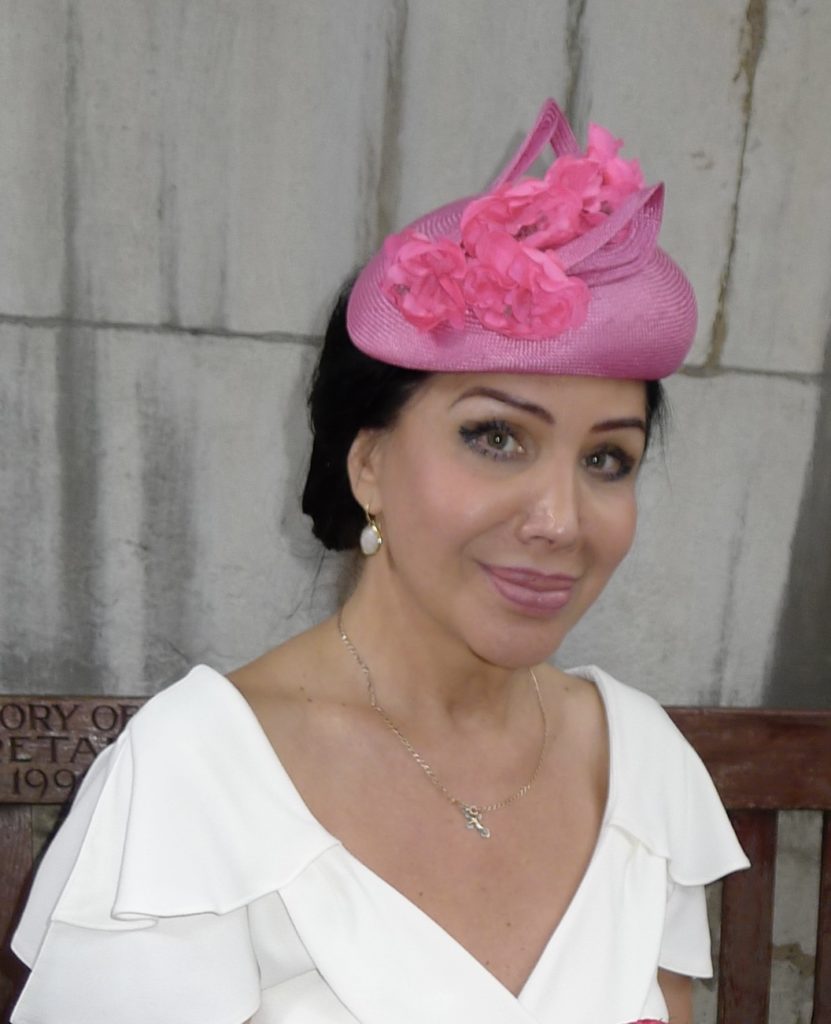
LOVE WILL ALWAYS PAVE THE WAY TO A SUCCESSFUL FUTURE!
INTERVIEW: NATALYA ROVENSKAYA
OCA Magazine: Tell us, please, about yourself and your creative activity / work
Natalya Rovenskaya: I moved to Bulgaria from my birthplace in Tashkent, Uzbekistan, five years ago and live in Balchik with my Bulgarian partner Yan. I graduated from Tashkent Conservatory as a violinist, and have a second Degree from Tashkent Culture University. I briefly performed in the orchestra and fronted a pop music band as a vocalist. I love singing and never shy from bursting into a song.
OCA: How did you choose your path and who is your role model in the creative space or life?
NR: I didn’t study art but always enjoyed painting as an amateur artist. I embraced the free time caused by the recent Covid lockdown and rediscovered the joys of being creative!
I don’t really have a role model, but I am inspired by the love and kindness of people I meet. The purity and beauty of flowers is a constant source of inspiration too. These sinless creatures are my neighbours, in Balchik’s beautiful Royal Botanical Gardens.
OCA: What is your main achievement in 2021-2022?
NR: The Balchik Art Gallery, hosting my exhibition entitled “Heavenly Gardens”, was undoubtedly the highlight of my year. I was delighted and honoured to present several of my works to the Gallery’s permanent collection.
OCA: What is the main feature that makes you and your art/work unique?
NR: Rather than capturing exact landscapes and flowers, I am painting my fantasy, using colour with almost a kaleidoscope effect.
OCA: Tell us, please, about the events of the Eurasian Creative Guild (London) and projects that you have already taken part in and how does ECG influence your creativity and success in your work?
NR: Having only just joined the ECG, I’ve not yet had an opportunity to participate in any events, but am very much looking forward to doing so. Learning about the success achieved by other members gives me confidence to reach out to a wider audience, to promote my work.
OCA: What is your motivation and the main aim of your creativity?
NR: I am enjoying immersing myself in the sites and sounds of Balchik life, getting to know other local artists and contributing to the unique ambiance of my new home town.
OCA: What would you wish for the members of the Guild and other creative people, just starting their career?
NR: I wish them to not be afraid or shy to express themselves in their own unique way. See the world as beautiful, and learn to love it as it is. Love will always pave the way to a successful future!
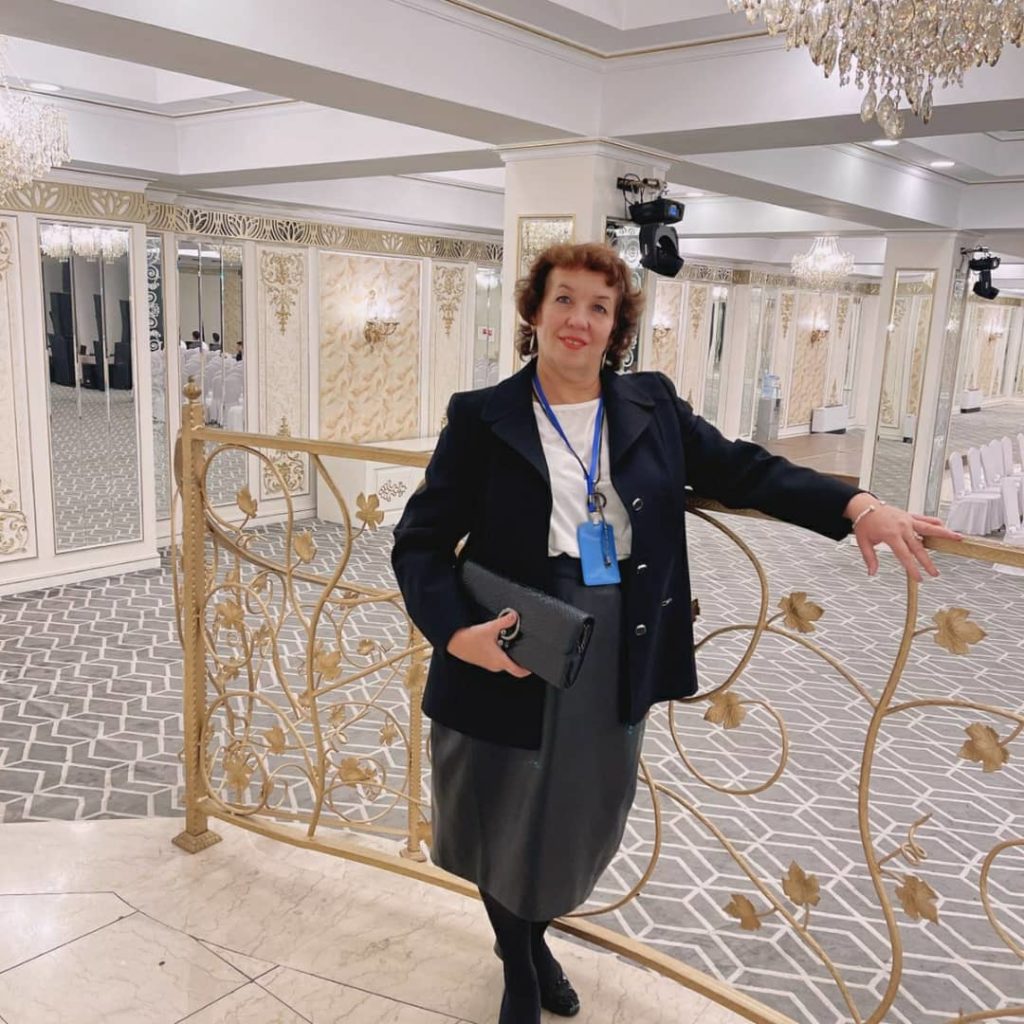
AT ANY AGE, YOU CAN START TO REVEAL YOURSELF
INTERVIEW: GALINA PRIMORSKAYA
OCA Magazine: Tell us, please, about yourself and your creative activity / work
Galina Primorskaya: I am Primorskaya Galina (@galinaprimorskaya)
I was born in Almaty, Republic of Kazakhstan. My parents are simple. but talented people.
Mom, Olga Akimovna, a professional cutter and seamstress, the pride of our city. She has been creating exclusive outfits for famous people of our country for many years. And dad, Pavel Vasilyevich Kolmakov, was the best electrician in the city. The profession was his calling.
My brother, Alexander Kolmakov, is now an excellent coach in ski jumping, and participated in sports olympiads.
I had a happy childhood, was fond of swimming, gymnastics, and magic tricks. I have always been an inquisitive, active girl. I have a good three-dimensional vision of objects, so I graduated from a design institute and designed railways. I liked it. Now I work as an accountant in a large company.
Creative energy woke up in me a few years ago. I combine my professional activity with the creative flight and new emotions. My life is filled with bright colours, I am interested in seeing new opportunities and embodying them in my life.
I have traveled a lot in my life. And now I try to often go out into nature and fill up.
I lived in Germany and gave birth to two children there. Now my children have created their own happy families.
My son, Alexander, has a wonderful wife, Milicent, and a daughter, my granddaughter Evochka. Growing up as a singer and artist.
Daughter, Daria Savvina @ darya_savvina_visual . And her wonderful husband Timur, they are raising their son Alexei. My grandson loves building houses and painting.
My grandchildren are 6 years old.
OCA: How did you choose your path and who is your role model in the creative space or life?
GP:I began to reveal my talents in October 2018. I signed up for drawing courses, where I learned how to paint beautiful pictures. I also completed a course in photography. And at the same time engaged in self-development. Another hobby of mine is playing a real drum set.
Of course the teachers are my parents. Watching them, I noted for myself with what love and pleasure they worked.
OCA: What is your main achievement in 2021-2022?
GP: My first exhibition opening day took place in December 2021.
The exhibition was opened by the guest of honour, founder of the Eurasian Creative Guild of London – Marat Akhmedzhanov. The exhibition was held at the highest level!
It was a double holiday for me in my creative life. I became a member of the Eurasian Creative Guild London – this is the best international networking platform.
On March 22, I had a reporting concert. I was a drummer, the song of the Earthlings ensemble “Grass at Home” was performed.It turned out great.
My first interview took place in the big magazine “ChiefAtyrau”
OCA: What is the main feature that makes you and your art/work unique?
GP: At any age, you can start to reveal yourself, I was lucky enough to start everything at the age of 50. The main thing is to have spiritual and physical freedom. Then there are desires to create beauty for yourself and the world.
OCA: Tell us, please, about the events of the Eurasian Creative Guild (London) and projects that you have already taken part in and how does ECG influence your creativity and success in your work?
GP: I participated in presentations in Almaty. I have been in the Guild for four months.
A big event, the second festival “Voices of friends: poetry and visual arts”, from May 6 to 10 will be held at Rixos Borovoe and ECG Art Residence
There will be a lot of different activities for every taste – painting, poetry, cinema. During the festival, there is a great opportunity to meet new unique people, expand the circle of like-minded people.
OCA: What is your motivation and the main aim of your creativity?
GP: I like to discover amazing abilities in myself. There is a desire to do something new, interesting for yourself. To show an example to people that this is possible, you just need to work and fulfil your desires yourself. No one will do it for you and will not achieve results.
I like to communicate with the younger generation, exchange ideas and energies, and then we begin to understand each other better. Life becomes bright and interesting.
I think this is our main goal – to make people a little happier.
OCA: What would you wish for the members of the Guild and other creative people, just starting their career?
GP: I want to wish you to learn to listen to yourself and fulfil your desires.
Work hard and get respectable results. Always move forward to your victories and achievements.It gives strength and self-confidence.
Enjoy the gifts of the universe. After all, you can get a lot of ideas and opportunities.
Together we are a force! We can make the world happy and beautiful!
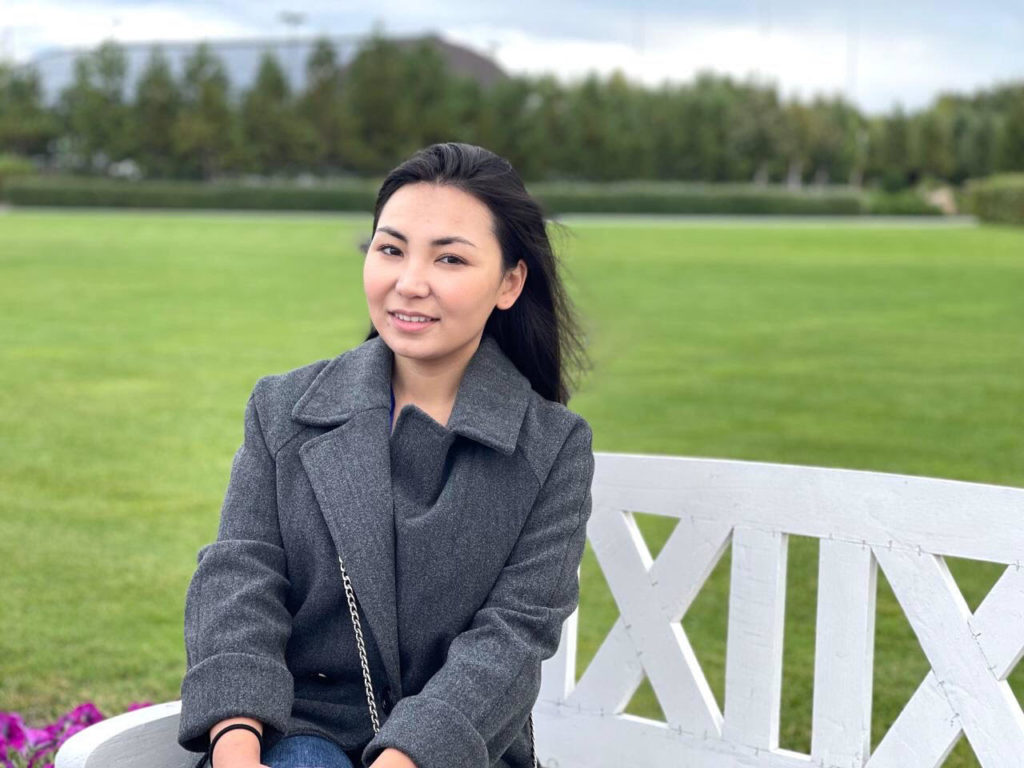
WE ARE ALL UNIQUE
INTERVIEW: AKNUR NURTAZA
OCA Magazine: Tell us, please, about yourself and your creative activity / work
Aknur Nurtaza: I was born and live in Kazakhstan. Kazakh people have many traditions and customs, but since childhood I have been interested in other countries, languages and peoples. Also, as you know, we were part of the USSR and some cultures from the Slavic countries still remain in our country. Therefore, I can say that many Kazakhs, like me, have a contrast. And I always wanted to complement the contrast with traveling, learning languages and meeting different people. And at the age of 25, I found the perfect job for me, a job that combines different cultures, languages, creativity and unique people. A year ago, when I first learned about the Eurasian Creative Guild and Hertfordshire Press, I really wanted to be a part of it all. And now I am manager of the Hertfordshire Press book project, and I am wildly satisfied with my work, glad that I help creative people achieve their dreams.
OCA: How did you choose your path and who is your role model in the creative space or life?
AN: To be honest, there is not a single person who has greatly influenced me, or rather, this is not one person. All the people that I have come across in one way or another have brought me something, I get some knowledge and experience from each person. Well, of course, first of all, these are my parents, who showed me the world, who did not limit me in anything and gave me complete freedom to explore the world myself. Thanks to this freedom, I was able to understand what I really like.
OCA: What is your main achievement in 2021-2022?
AN: Well, the most important achievement is my work. These are ECG, Hertfordshire Press, creative festivals where I helped. Thanks to this work, I realized that if a person really wants something, then he will definitely succeed.
OCA: What is the main feature that makes you and your art/work unique?
AN: Probably diligence … And not a small important thing, I learned not to give up, but to try again and again, this applies not only to work …
OCA: Tell us, please, about the events of the Eurasian Creative Guild (London) and projects that you have already taken part in and how does ECG influence your creativity and success in your work?
AN: During the year I participated in two festivals. My first festival was Voices of Friends, which took place in the fall of 2021 in Kazakhstan, in Borovoe. I remember how we prepared for this event for several months, there were even sleepless nights)) But when the festival days came, I realized that it was all worth it. I had such different, in a good way, impressions that I will remember these days forever, because it was all new to me.
But the second festival in which I participated – this is the 10th OEBF Literary Festival – was held in Tashkent. It was my first trip to work in another country. The first thing I remember was the weather, since it was the month of December, there was snow and snowstorms in Kazakhstan, and when we arrived in Tashkent, the warm weather just hugged us. I remember this festival with its warmth. Tashkent, the inhabitants of this city and the guests of the festival, all became so dear to me during the festival. I am glad that I was part of such events, I will always remember …
OCA: What is your motivation and the main aim of your creativity?
AN: Since I am currently working on book projects and at the Hertfordshire Press, I would really like and even say my goal for the future is to show our books to the whole world. After all, we have such unusual books, such different authors, and I can confidently say that there is no such publishing house as ours in the world. And I wish everyone knew about it…
OCA: What would you wish for the members of the Guild and other creative people, just starting their career?
AN: Don’t be afraid… If you have something to say to the whole world, if you want to share your creativity, then don’t be afraid, we are all unique. There are a lot of different people in the world, if everyone was afraid or doubted themselves, then there would be no such outstanding people, so do not be afraid, who knows, maybe you are the next outstanding person who will remain in history
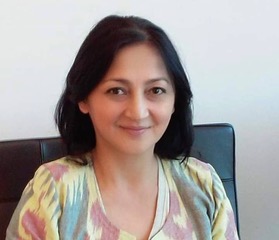
MY MOTIVATION IS MY FAMILY
INTERVIEW: DILOROM NISHANOVA
OCA Magazine: Tell us, please, about yourself and your creative activity / work
Dilorom Nishanova: My name is Dilorom, I live and work in Washington DC. I write about real life of people and drama. The genre of my books composes of true and fictional characters through the stories that play out.
OCA: How did you choose your path and who is your role model in the creative space or life?
DN: I believe my path chose me, with the events that happened to me personally and the events that I have seen unfold in front of me. My inspiration for my creative work is my family especially my grandfather who always taught me to stand firm in what I believe and always be with an open heart and mind. Welcome new people and ideas into my life that will later take me on a whirlwind journey. Along with my parents and my children who both inspire me continually. They fuel my creative enthusiasm and make me reach for more when I write with their stories and ideas.
OCA: What is your main achievement in 2021-2022?
DN: I had the pleasure of attending an event “BOOK FORUM FESTIVAL “in Brussels in November 2019. I would say mainly EGC influences my creativity through the need of sharing with people my story. I believe people are always interested in a good read especially if it pertains actual life events it brings you closer to the audience and the writer at hand. Real life events and challenges connect me with my audience on a personal level making it an intimate read between the reader and writer.
OCA: What is your motivation and the main aim of your creativity?
DN: My motivation is my family. Family is important regarding teaching and showing aspects of your life that you did not know existed or were there. By Unfolding the layers to their life and having a closer and meaningful look at mine. Makes it a unique situation of how far I can take my reader and my thoughts. My mission for my writing is for my voice to be heard and for the reader to relate his or her own life and or story. I believe people have similar patterns and go through life facing the same challenges and to reflect on circumstances and being able to write them out is magic on its own.
OCA: What would you wish for the members of the Guild and other creative people, just starting their career?
DN:My advice for someone who is starting to write is to write from the heart and connect to your audience by tapping into the readers emotions and feelings then you will surely succeed. “People will forget what you said but people will never forget how you made them feel.”
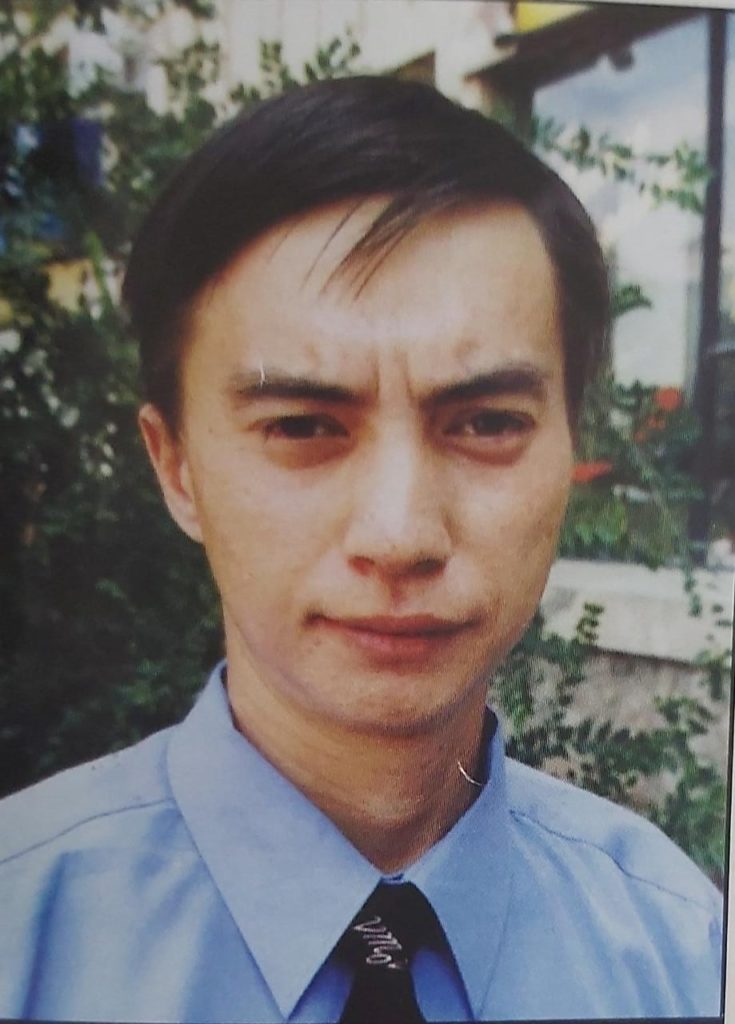
TRY TO MAKE OUR LIFE A LITTLE BETTER
INTERVIEW: NURLAN MUNBAEV
OCA Magazine: Tell us, please, about yourself and your creative activity / work
Nurlan Munbaev: I was born in the city of Guryev in 1971, on June 17. I graduated from school with a silver medal from the 67th school in Almaty in 1989 and in the same year won the republican Olympiad in political economy. In 1990 I received recognition at George Washington University and was admitted to this university without exams, but was not released from the USSR, as I belonged to dissidence. In 2013 I became the winner of the G-Global section among 10,000 mathematicians of the world for the work of the gravitational model in economics. In 2011 I received a $ 200,000 prize from the Founder of Facebook-Mark Zuckerberg-for the discovery of econometrics. In 1995 I was sent to Harvard University for an internship to build a bridge of scientific cooperation between the Academician of Sciences of Kazakhstan and the Leadership of Harvard University. In 1997 I received a recommendation from the Ufa Institute of Mathematics of the Russian Academy of Sciences for doctoral studies at the University of Cambridge, was recommended by Professor Natalia Kutluzhanovich Bakirov, a leading cryptography specialist of the Russian Academy of Sciences.
Currently I am an expert of the Astana Economic Forum on the World Economy and the Astana Club Nobel laureates», I work in the structure of the Ministry of Education of the Republic of Kazakhstan and the BRAND AMBASSADOR of the Open World Foundation. Since 2016 I have been elected as a member of the New York Academy of Sciences-Professor of Econometrics.
OCA: How did you choose your path and who is your role model in the creative space or life?
NM: The goal of any scientist to make discoveries is to bring innovations to our world that improve the life of every inhabitant of the planet, national technological progress is the engine of evolutionary development.
OCA: What is your main achievement in 2021-2022?
NM: To be an expert of the Astana Economic Forum – and become a brand ambassador of the Open World Foundation, which is engaged in research and solutions to the world economy and politics, another achievement for myself to become a brand ambassador of the international school of autism “Otishium” in the city of Nur-Sultan
OCA: Please tell us about your work experience in the International School of
Autism “Otisium”.
NM: It is a great honour for me to become a brand ambassador of the international school of autism “Otishium”. Centre Otisium Qazaqstan this two complementary destinations for children with features in development, located in Nur-Sultan city: Otisium sports program and Qadam academic program. Otisium is unique,patented.Turkish Sports and Life Education Program for people with autism spectrum disorder.In Kazakhstan, it was presented for the first time in the city of Nur-Sultan of the year under the guidance and personal supervision of the Erdal program developer Atesha.Erdal Ates- Head of Autism Council of Turkey- Representative of the third region of the World.ANCA World Autism Festival Ambassador. Teacher physical education and sports, professional football player.Founder of the OTISIUM program (training life and sport).Founder of the sports club Otisium autism life. Qadam is an academic program for children from 6 years, aimed at preparing them for inclusive education, working out and generalisation of school material under Abuova Ayman Kanatovny- psychologist, master of psychology and pedagogy inclusive education, which has a unique practical experience of working with children with ASD.
OCA: You have often mentioned and admired the achievements of the genius boy from the Othisium School. Could you please tell more about him?
NM: The boy of the genius of the 2th Dimash Kudaibergen School is called Kalauov Mukhanbetali Molbaevich. He is from Aktobe, a city on a white hill in western Kazakhstan. His interest in art manifested itself from childhood. When his mother brought him the Kazakh national instrument, the Dombra as a child, since then Mukhanbetali developed an interest in the Dombra, and from the second grade the boy genius went to the Dombra classes. At school he sang, read poetry, danced , and during the years of transition from the sixth to the seventh grade, the voice of Mukhanbetali became similar to the voice of the world famous genius – Dimash Kudaibergenov. In the same year, he became famous opera singer. On many Instagram channels where his videos were broadcast, he was delighted with the recognition of the people and graduated from the Dombra class in the same year. Until this year he was engaged in singing. Participated in competitions and won prizes. Our little genius is from a poor family, he has no father, for this reason, as the 9th guardian of the Eurasian Creative Guild, he considered it important to hold the young genius. So, Mukhanbetali became a member of the Eurasian Guild. Mukhanbetali, became a member of this guild at the age of 15. I believe that this one of the great achievements for a genius from Aktobe ‘-Kazakhstan-and I wish Mukhanbetali great victories, as he said “The great Lev Tolstoy – Talents must be helped, but mediocrity will break through”
OCA: What is your motivation and the main aim of your work?
NM: I consider the main motivation to make discoveries and implement them in life, so that know-how makes our life a little better. My goal is for scientific discoveries in econometrics, mathematical economics, political economy to receive worldwide recognition – this is important like any scientist.
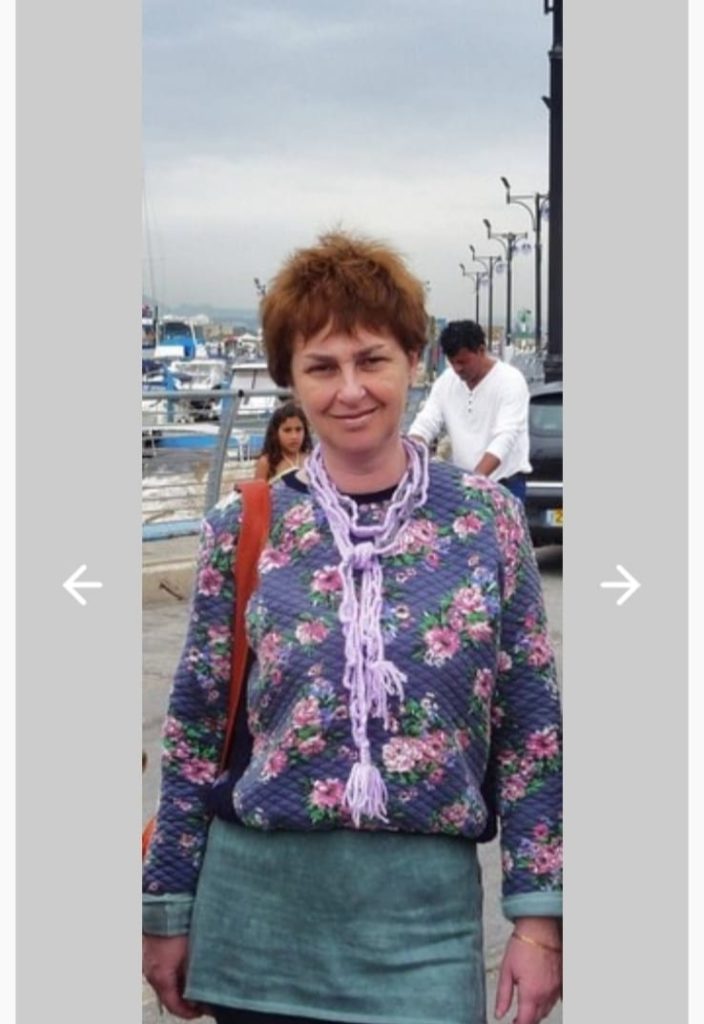
I LOVE ALL OF YOU
INTERVIEW: KARINA MULIAR
OCA Magazine: Tell us, please, about yourself and your creative activity / work
Karina Muliar: I was born and raised in Chisinau. Graduated from a music school, then from the Academy of Arts. In 1991 my family moved to live in Israel. Here I graduated from the Batzalel Art Academy, I teach fine arts at a secondary school and started writing in 2010.
The death of my father had influenced the fact that I began to study literature seriously, oddly enough. He was an example for me in everything.
I write and publish short stories.
OCA: How did you choose your path and who is your role model in the creative space or life?
KM: I started writing by chance. I consider my father to be my teacher in everything. Story ideas come naturally.
Almost nothing is connected either with me or with my life. Only apparently a rich imagination and a desire to tell something, to save from something, to feel sad or think about different things.
OCA: What is the main feature that makes you and your art/work unique?
KM: Since I am a professional musician and artist, I try to write in such a way that readers hear the music of the word, feel the form of the work and its colours. I’m also a member of the Writers Guild.
OCA: Tell us, please, about the events of the Eurasian Creative Guild (London) and projects that you have already taken part in and how does ECG influence your creativity and success in your work?
KM: Unfortunately, I haven’t participated yet in any event personally due to the pandemic. I hope that the world will return to normal existence and this will become possible.
I have attended only a few online conferences.
I hope to personally visit various events and competitions in the future.
OCA: What is your motivation and the main aim of your creativity?
KM: Motivation for me is my ideas that appear in my head in the form of sentences, phrases or some kind of pictures. The purpose of my creativity is that as many people as possible stop and think about such eternal things as friendship, love, relationships between people.
OCA: What would you wish for the members of the Guild and other creative people, just starting their career?
KM: I want to wish all members of the Guild health, peace and more creative achievements. I would like to wish people who are starting their career to read more classics.To think about what they write about and how.
Do not chase the one-day fashion for any reading matter, but bring your own individual to the masses.
But the most important thing today is health and peace. I want to tell everyone, perhaps a banal phrase: People! I love all of you.
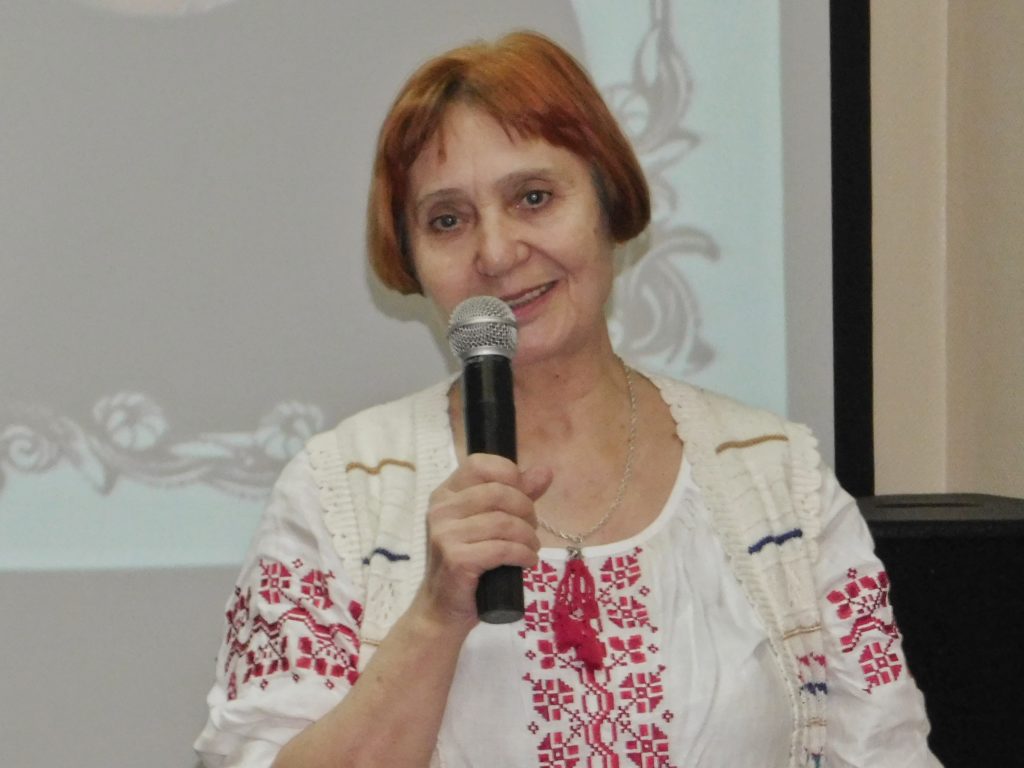
WHAT IS YOUR ROLE ON EARTH?
INTERVIEW: MARIA MUCHINSKAYA
OCA Magazine: Tell us, please, about yourself and your creative activity / work
Maria Muchinskaya: I live in Minsk, Belarus. I was born in 1953 in the Dubina village, Belarus. Have two higher educations: mathematics-programmer and economics.
Currently a pensioner, I study at the school-studio of icon painting “Zavet”. I love loneliness and silence. Many years of living in a hostel taught me not to hear external noise during my philosophizing about the world, people, and the future.
I started writing poetry in September 2019. Member of the literary and artistic association “Run”, International Union of Russian-speaking writers, International Union of Writers of North America, Member of the Eurasian Creative Guild. Poems were published in the “Anthology of Russian Poetry 2020” and “Anthology of Russian Poetry 2021”, collections of the MSRP, in the collections of the publishing house “Four”, St. Petersburg.
Three collections of poems and essays “Vytoki”, “Captured by Life” and “towards fate” were published, co-author and compiler of the book about the small homeland “There is such a Dubina”. Together with our like-minded fellow countrymen, we try to preserve the original culture of our ancestors, to pass on their traditions. We are collecting materials of each clan inhabiting our native village and by the anniversary of the village we plan to publish a handmade book about all the inhabitants of my small homeland, to restore the bell tower, which was located in the local cemetery.
OCA: How did you choose your path and who is your role model in the creative space or life?
MM: If I believed in chance, I would say that I came into creativity by chance.
Having finished the eight-year school, I left my native places, visited them only on holidays and weekends. And during one of my visits life brought me to a wonderful person, Tamara Vladimirovna, with whom we eventually became friends.
The warmth of her feelings for the village, its inhabitants, among whom she spent her youth, she decided to capture in the book. It was a great pleasure for me to support her. Of course, at that moment I didn’t even have thoughts that I would write a poem in verse about the masters of the early 20th century.
I consider Yanka Kupala and Maxim Bogdanovich as an example in creativity, close in spirit to my heart.
OCA: What is your main achievement in 2021-2022?
MM: The most important thing is that the Eurasian Creative Guild highly appreciated our book about fellow countrymen.
During the X OEBF Festival in Samarkand in the nomination “Poems” I was awarded the first prize. I am proud of this book, because it gave happiness to so many people, moreover, it describes some facts from the life of heroes that relatives did not even know about.
I am also grateful to be a co-author and one of the compilers of this book, which opened a new milestone in my life. At the fifth international literary contest “Constellation of Spirituality” – 2021, I was awarded with a diploma named after Tatyana Ainova for the best poetic lyrics in the nomination “Books of the Future” 3D, the e-book “Lesu nasustrach” was noted as the best 3D book among authors from the Near Abroad.
OCA: What is the main feature that makes you and your art/work unique?
MM: I think that my sincere attitude to what is happening and the reflection of my feelings in poems and essays. With my works, I do not try to impose my point of view, but I strive to cause a desire to think, to ask myself the question: who are you? What is your role on earth? Feel responsible for what is happening, overcome indifference in yourself.
OCA: Tell us, please, about the events of the Eurasian Creative Guild (London) and projects that you have already taken part in and how does ECG influence your creativity and success in your work?
MM: I have only been a member of the Guild since the middle of 2021. I took part in the “Voices of Friends-2021″ and “Voices of Friends-2022”. Participated in X OEBF Festival in Uzbekistan. My visit to the X Open Eurasia Festival, as well as meetings with representatives of the Guild, their creative potential gave me confidence, inspired, spiritually supported. There is confidence that my works are not in vain, they are read and interested in them.
OCA: What is your motivation and the main aim of your creativity?
MM: With my work, I dream of making the world at least a little kinder, brighter, more honest. If at least one person, after reading my poems, thinks, overestimates their values, becomes at least a little kinder, this will be the best gift for me. It is a great joy when my friends say that they need to think after reading my poem. I understand that dark shades in life cannot be completely replaced with light ones, but I do not lose hope that it is possible to make them lighter and smaller in volume.
OCA: What would you wish for the members of the Guild and other creative people, just starting their career?
MM: Most importantly, be honest in your work to yourself and your conscience. Remember that the word heals and hurts. Creativity should heal, sow light, help to distinguish bad from good. And never be shy to learn, to accept criticism with gratitude. Criticism is a very important teacher of any creative person. Never stop and believe that the best is yet to come.
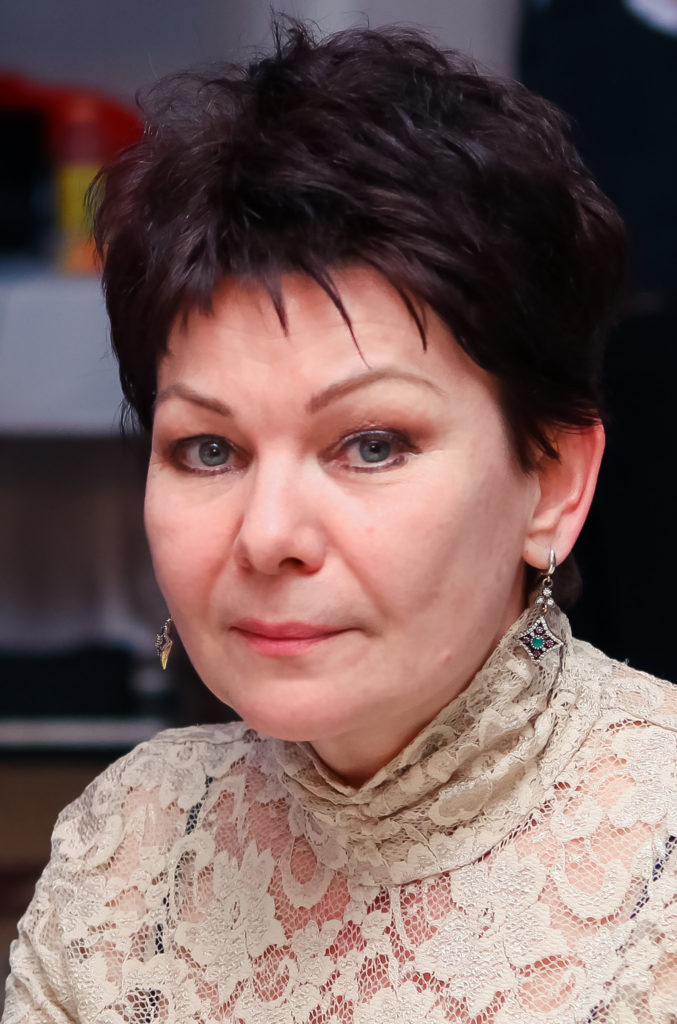
“I HAVE ALWAYS PAINTED”
INTERVIEW: TATYANA MENDYBAYEVA
OCA Magazine: Tell us, please, about yourself and your creative activity / work
Tatyana Mendybayeva: Born in the USSR in the last century. Most of my life I lived in the ex-union republic of the ex-USSR, which since 1991 has been an independent state – the Republic of Kazakhstan.
My main activity is work in the country’s healthcare system, because many years ago I chose medicine as my profession.
OCA: How did you choose your path and who is your role model in the creative space or life?
TM: I have always painted. I started writing poetry about 20 years ago. At the beginning, these were epigrams and poetic congratulations on various occasions. After that, the rhymes began to become more complicated … What surprises me is that, in order to formulate even a simple thought in poetic form, you need to search not only for rhyme, but also for the maximum conciseness of this thought, and at the same time, amazing discoveries are obtained.
OCA: What is your main achievement in 2021-2022?
TM: I wrote two fairy tales: “The Tale of the Sevenfold Widower Vasya Sinebrodov” – a variation on the theme of the fairy tale about Bluebeard, “The Tale of the Transmigration of Souls or Reincarnation in Slavonic”, a cycle of poems about animals for the youngest children. I have lyrical, civil poems. I paint oil paintings and illustrations for my texts.
There comes a time when, quite consciously, you seek to define the bar of your abilities. And in this case, the Eurasian Creativity Guild is not only a community of like-minded people, but also a measure that sets the bar for your creativity here and now, the upper limit, which, fortunately, is not limited to.
OCA: Tell us, please, about the events of the Eurasian Creative Guild (London) and projects that you have already taken part in and how does ECG influence your creativity and success in your work?
TM: It’s great when a creative person has teachers, but if you belong to the community of artists and poets, then it is the rivalry in creativity that is both a stick and a carrot that spurs you on to self-improvement.
In 2021, I participated in the annual competition held by the Guild in the category “Poetry” and became a finalist in the competition, which was attended by more than 200 poets from 12 countries of the world … What is this if not an incentive?
This year I took part in the “Voices of Friends” competition already in 3 nominations: “Poetry” with a fairy tale about Bluebeard, “Illustration” – illustrations for a book about animals (for the youngest children) and the nomination “Painting” – with a young man portrait in the technique of oil painting.
OCA: What would you wish for the members of the Guild and other creative people, just starting their career?
TM: What can I wish for people of the Homo faber type (lat. A person who creates), who write poetry and prose, paintings, articles and music for themselves, or rather “on the table”? Let professionals evaluate your work and you will have a chance to express yourself to the world. Dare!

BELIEVE IN YOUR OWN SPECIALNESS
INTERVIEW: NATALIA LOSKUTOVA
OCA Magazine: Tell us, please, about yourself and your creative activity / work
Natalia Loskutova: I started to write poems 4 years ago. It was a real necessity for expression my feelings on paper. My literary works found a broad response among readers. My compositions are published in the Russian Collections of the modern literature in 2020-2022.
My first book named “Christening” was written in Jordan in 2003.
I am an author of the Russian-English poems “Fate has a tough hand” and “Sieze the day” (2020).
I received recognition and became a member of the Russian Union of Writers. I am nominated as the Poet of the Year Award (2021). Besides, I was awarded by a Yesenin’s medal, Bunin’s medal, Dostoevsky’s medal and Medal of St. George.
It is a great pleasure and honour for me to be a part of the world of letters.
OCA: How did you choose your path and who is your role model in the creative
space or life?
NL: I don’t choose my path, but it chooses me. It is like a fortune. I can’t change it and it happens naturally. Sometimes I feel that poems are given me from on high and I just write down it.
My role in the creative space is to speak about love, friendship and the beauty of world to brighten up the life.
OCA: What is your main achievement in 2021-2022?
NL: The main achievement is the publication of my work in “The big book of prize winners” of the writing competition of the Union of Writers of Russia in 2021.
OCA: What is the main feature that makes you and your art/work unique?
NL: My poems are filled with real feelings, experiences and reflections on life. I create my works through the prism of a psychologist and an ordinary person. Everyone will find something of value in my pieces of writing. I believe that it deserves reader’s attention.
OCA: Tell us, please, about the events of the Eurasian Creative Guild (London) and projects that you have already taken part in and how does ECG influence your creativity and success in your work?
NL: First of all, I’d like to say that the projects of the Eurasian Creative Guild are brilliant and unique as it combines all people and nations around the world. Its atmosphere is very kind and friendly. It goes without saying that ECG influenced my success as a writer. The Guild gave birth to a great number of new projects and ideas. I’d like to take an advantage of the opportunity and express profound gratitude to Marat Akhmedjanov, Vice-Chairman of the Eurasian Creative Guild for his support in all projects of the ECG.
I have been a member of the Eurasian Creative Guild since 2019. My creativity works were published in the 2021 Almanac “Voices of Friends” (British Library) and in the Eurasian literary collection “Нить 3” in 2019. I am an active participant of all new events of the Guild.
OCA: What is your motivation and the main aim of your creativity?
NL: I’d like to present my literary works widely around the world. I use social networking on the web (especially – youtube.com) to share my creativity with readers. I download video in which I read my poems with the classical music or picturesque views. I enjoy this process. However, the main aim of my creativity is to become a professional writer.
OCA: What would you wish for the members of the Guild and other creative people, just starting their career?
NL: I wish for the members of the Guild to be honest and sincere with readers and they feel it for sure. The main thing is to develop yourself, to make progress, to realise new interesting projects and last but not least – to believe in their own specialness. Fortune favours brave and hard-working people.
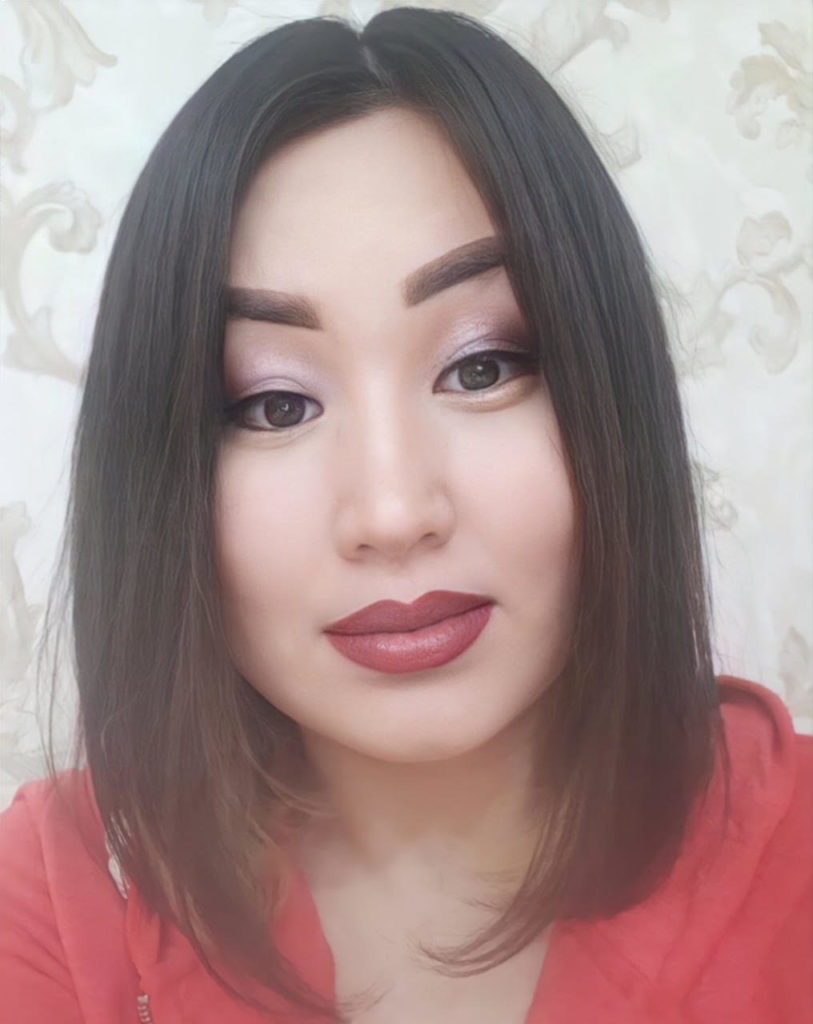
EVERYONE HAS A CHANCE TO “COME ON BOARD”
INTERVIEW: DINARA KUSHBAEVA
OCA Magazine: Tell us, please, about yourself and your creative activity / work
Dinara Kushbaeva: Like many others, I had an ordinary, but full of bright colours life with its ups and downs. In the routine of affairs, I did not betray much importance to the inner creative spirit. I thought to myself and wrote for myself: meaningfully, quietly, laconicly. Up to a certain point..
OCA: How did you choose your path and who is your role model in the creative space or life?
DK: Quite by accident I read about the dream of a special boy to create a comic book “Elish” and could not pass by: all that remained was to breathe life into this creation that the WORLD would see. I made my small contribution to the implementation of the plan and supported the project. The feedback was great! Initially, the panic of writing something out loud developed into a request to Armani’s friend: “Hide me from them, please!” But it was only initially)) Therefore, special thanks to Akhmedjanov Marat Ismailovich for his personal compassion and patience! His support is like delicious food with “Why not” sauce. This is how my path of step-by-step exit from the shadows into the light was gradually illuminated…
ECG (London) is unique in its importance and scale. They were an example, a reliable support, a compass and a link of evidence that creative people should dream not only to themselves, but also out loud! It is important and necessary to share the goodness and beauty of the inner world.
OCA: What is your main achievement in 2021-2022?
DK: Inspiration. This is the main achievement that has borne fruit and inspires to this day: step by step, hastily and slowly, sometimes boldly, sometimes furtively, original, light, but internally – with a confident step!
OCA: Tell us, please, about the events of the Eurasian Creative Guild (London) and projects that you have already taken part in and how does ECG influence your creativity and success in your work?
DK: In recent years, at a time of territorial difficulties and events in the world, it was not so easy for me personally to cover the entire cycle of ongoing events of the ECG (London). Despite all the global events, the opportunity was sought to hold a series of meetings among friends, like-minded people, participants, members of the Guild, in different cities and countries. The plans include Kazakhstan, Great Britain and so on in the list.
ECG (London) opens up horizons and sometimes influences the fate of people, their versatility, forcing them to leave the zone of imaginary comfort. How powerful it is when a team works together as a whole, builds and connects bridges, interacts as one organism.
OCA: What is your motivation and the main aim of your creativity?
DK: For me, motivation is to see the horizon in everything, wherever you go. The path to the horizon is amazing, and this is motivation in action. My main aim is to see the end, not to see obstacles, to walk and not stumble! Then more than one goal is visible.
OCA: What would you wish for the members of the Guild and other creative people, just starting their career?
DK: On my own behalf, I wish you good luck and suggest not to stand aside, looking at how ECG (London) launches new international projects, but to use the opportunities provided. No need to shuffle your soles on your way just by rearranging your legs.
P.S. Everyone has a chance to “come on board” so as not to wave a wet handkerchief after the departing ship. Catch your tailwind immediately or you might not get a chance later.))
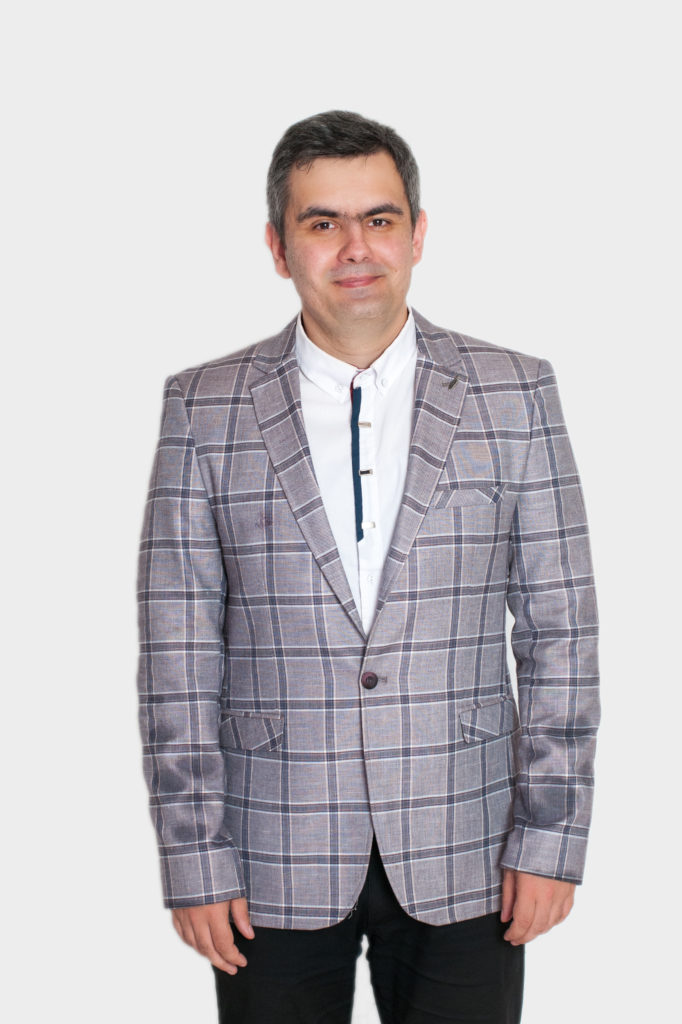
EVERY PERSON IS IMPORTANT AND NEEDED
INTERVIEW: MIKHAIL KUNITSKY
OCA Magazine: Tell us, please, about yourself and your creative activity / work
Mikhail Kunitsky: I am a children’s writer, living and creating in Belarus. I am the finalist of the competition “Poet of the Year 2016, 2017, 2019, 2020” in the nomination “Children’s Literature” in Moscow. I am the Winner of the contest “Poet of the Year 2019”, The Winner in 2017 of the international youth literary competition named after the Schnittke brothers. These were my first steps to success in literature.
I also work as a programmer and my friends and I have our own business. I have a technical education and do this for a living. Speaking about my creative nature and another achievements I cooperate with the publishing house “Azbukvarik” in Belarus and write lyrics for songs, creating books, toys and also have the title of “The Silver Pen of Russia”, which I received taking part in the competition “ The Golden Pen of Russia” in the children’s nomination, in 2017.
After having this great experience I kept improving myself and took second place in the Open Eurasia 2019 contest and the next one was the Win in the Open Eurasia 2021 contest.
I am a member of the TO DAR union and the Eurasian Creative Guild. Now I published three books: two in Moscow “Where do dreams come from”, “The world is so unique” and one in London “Journey on four feet”.
OCA: How did you choose your path and who is your role model in the creative space or life?
MK: Since my childhood, I have been keen on classic literature. I could read books all day long. At school, I had a very strict literature teacher. But I liked her because she always did the right thing. She cultivated a love for literature in me. Then I wrote my first story. It was a creative task for the class where everyone had to write a fairy tale. I handled it perfectly and that was the beginning of my ascent.
In spite of the great success in this matter, I had to abandon it for a long time. And I returned to creativity only at the University. From time to time I wrote poems on various topics. Having acquired some experience in versification, I discovered the world of children’s literature. I realized that children’s literature is the world of a small caterpillar, which should soon turn into a beautiful butterfly. This microscopic world has its own laws, where one has to be open and sincere. Children’s literature is inseparable from adult literature. Now I can combine creativity and work.
Also my father is an example for me. He has the ability to always achieve his goal. You know, he went in for sports in his youth and always professed the principle, no matter how hard it was – always go forward and no matter how fast you go, the main thing is not to retreat.
OCA: What is your main achievement in 2021-2022?
MK: For now I published two books, “The World is So Unique” and “Traveling on Four Feet”. One in Moscow, having won the Poet of the Year competition, the other in the publishing house of the Eurasian Creative Guild.
OCA: What is the main feature that makes you and your art/work unique?
MK: Ability to experiment.
OCA: Tell us, please, about the events of the Eurasian Creative Guild (London) and projects that you have already taken part in and how does ECG influence your creativity and success in your work?
MK: I have participated in many activities. In 2018, I took part in the Open Eurasia contest, which was held in Brussels. Over there I took second place and got a grant to publish my book. In 2021, I participated in the “Voices of Friends” contest, which is held annually in Kazakhstan in the resort of Borovoye. In the same year, I tried my luck at the tenth anniversary contest “Open Eurasia”, which was held in Uzbekistan. In general, I like to be involved in such projects. Firstly, it is an opportunity to meet amazing creative people and exchange experiences. Secondly, this is a good way to express yourself to the whole world. It makes me more open-minded and bolder.
OCA: What is your motivation and the main aim of your creativity?
MK: My motivation is that the world around me is full of possibilities and surprises. Having won one competition and published a book, I understood that you could rise even higher and become even more experienced, besides, children’s literature is a mystery. Every time I discover something new. I enjoy the process.
OCA: What would you wish for the members of the Guild and other creative people, just starting their career?
MK: Never stop. Every person is important and needed. Why did we come to this world? If we live, it means that we still can do something for the Universe. It is very important to do everything with love in your heart, and the universe will surely say “thank you!”.
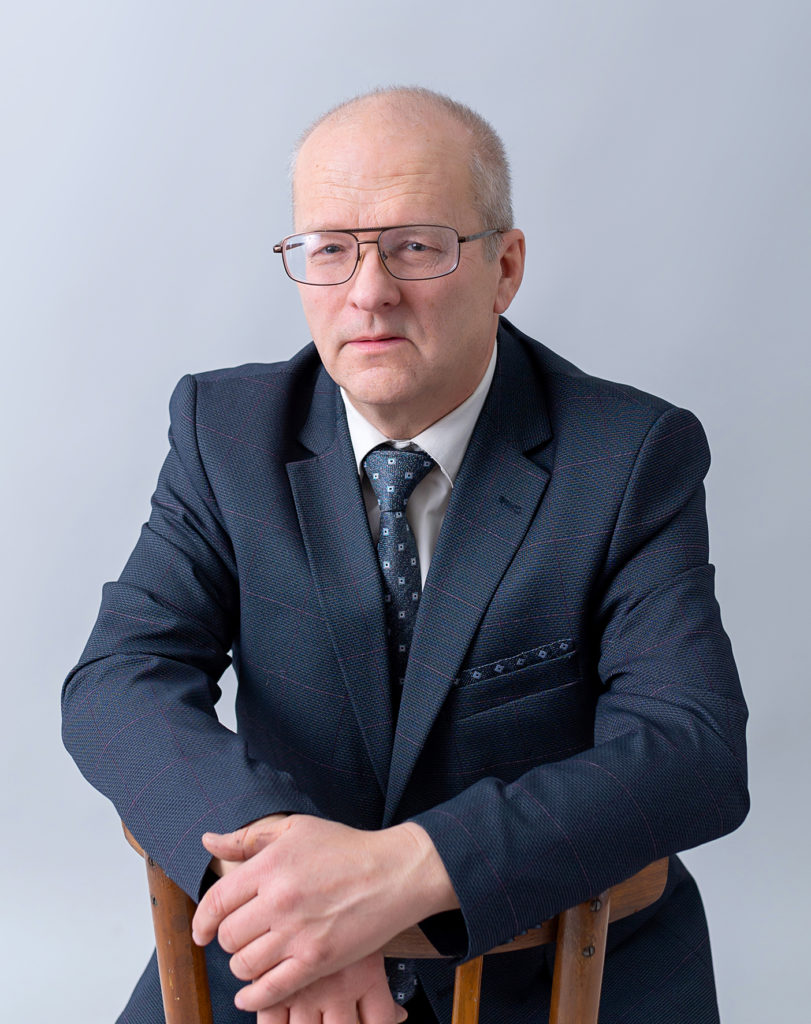
ANXIETY FOR KNOWLEDGE
INTERVIEW: PAVEL KOSSOVICH
OCA Magazine: Tell us, please, about yourself and your creative activity / work.
Pavel Kossovich: Over the years, I used to work as a scientist. I am a biologist-geneticist. Nowadays I am engaged in research work at the nexus of history, geography and cultural studies of Central Asia and Kazakhstan.
OCA: How did you choose your path and who is your role model in the creative space or life?
PK: When I came to Kazakhstan twenty-five years ago, I was eager to discover the language, traditions and the history of the country. Within fifteen years, I covered nearly 1 million kilometers by car and collected a vast amount of material on various scientific fields. Soon afterwards, this was reflected in my popular science editions. Primarily, the scientists who gave their talent, their life to advance in knowledge have been serving as role models for me.
OCA: What is your main achievement in 2021-2022?
PK: My book “The Desert Olympus” came out in 2021. It tells about the scientists of the Academy of Sciences of the USSR who evacuated to Kazakhstan during Great Patriotic War. They were at health resort “Borovoye” from 1941 to 1944.
I had been working on this book for fifteen years and I have every reason to be satisfied with the result.
The book “The Art of Burabay” was published in 2022. This book is about the artists who lived in our region and created their works beginning with the 1920s.
OCA: What is the main feature that makes you and your art/work unique?
PK: I have travelled a lot, and been to different places and talked to all kinds of people in my day. Therefore, my considerable life experience linked with higher-level academic qualification have developed in me a special analytical approach to problem solving and an ability to succeed.
ОOCA: Tell us, please, about the events of the Eurasian Creative Guild (London) and projects that you have already taken part in and how does ECG influence your creativity and success in your work?
PK: Last year I was present at the Festival “Voices of Friends” in Burabay. I also regularly take part in the meetings with the members of the Guild in creative residence in Burabay. It is thanks to working with the Guild I have got acquainted with many creative personalities (artists, poets, writers) with whom I talk time and again.
OCA: What is your motivation and the main aim of your creativity?
PK: My motivation is anxiety for knowledge and my aim is to share the knowledge obtained with other people book ways, in journals and films.
OCA: What would you wish for the members of the Guild and other creative people, just starting their career?
PK:I wish the members of the Guild and beginning creative people not to lock within the bounds of their professional interests, but expand them looking into other genres of Art. After all – the most interesting and extraordinary things occur at the nexus of various fields, whether it be science, technology or art.
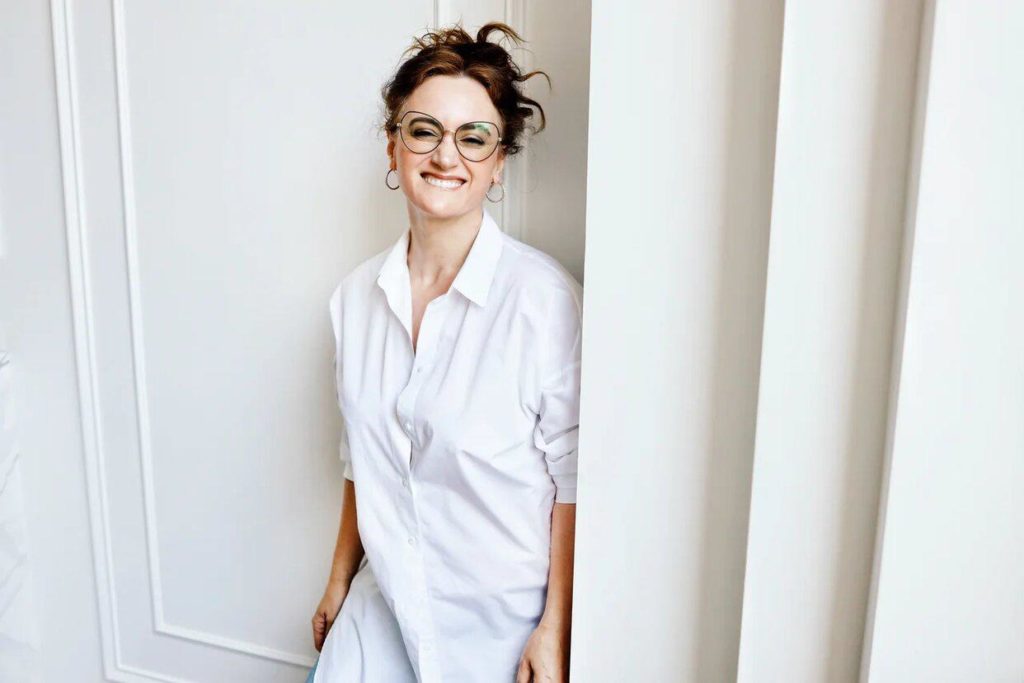
ALL PEOPLE ARE CREATORS
INTERVIEW: ALISSA KLIMA
OCA Magazine: Tell us, please, about yourself and your creative activity / work
Alissa Klima: I believe that all people are Creators. We try to be creative in the way we communicate and work, build relationships and families, raise children or perform social duties. I was born in a Soviet society with different limitations. From childhood I found it immensely interesting to build up reality that was lacking around. We played role-games with my friends where we imagined adventures and places that were not accessible to us in reality. I think back then I first felt that the arts are a place for people like me.
OCA: How did you choose your path and who is your role model in the creative space or life?
AK: I have always been in love with reading. If the food we eat determines what we are in material terms, what we read establishes our mental and spiritual foundations. My beautiful mother was teaching Russian literature for 40 years. She loved bringing her colleagues to our house and I was introduced early to complex concepts and debates around them. I think she was the first who invested in me the appreciation of a deep dialogue. Further, while working at the British Council in Uzbekistan I met a prominent person that I consider a great teacher Mr Anthony Read. He loved reading and introduced me to a fantastic world of English non-fiction. He used to say ‘choosing between talking with a dull person and reading a good book, I always choose a good book’.
OCA: What is your main achievement in 2021-2022?
AK: The last few years were stuffed with challenges that the world has been facing. Dramatic disaster caused by COVID 19 affected almost every family in each country directly or subtly. My mother died in July 2021 in the intensive therapy ward in the hospital which I successfully left a week before both were diagnosed with pneumonia. It was a great loss in our family. That was the point when I realised that people must live their lives despite any mischief. I introduced yoga in my daily living and finished the book ‘Children of the Red Horde: The Late Sketch’ that I was working on for many years.
OCA: What is the main feature that makes you and your art/work unique?
AK: Every piece of art is unique. When my third boy makes Minecraft objects out of paper boxes that are lately flooding our flats as a result of growing delivery business pushed by COVID-19 and numerous lock downs I always praise him for creating something fabulous. That’s how our mind is set up. I think that my writing has finally been established by a combination of the rational part and my artful part. All of my works are always based on real history and real events but the story is a fiction. my language is quite recognisable. It seems logic dressed in a great deal of emotions.
OCA: Tell us, please, about the events of the Eurasian Creative Guild (London) and projects that you have already taken part in and how does ECG influence your creativity and success in your work?
AK: I have been taking part in a few meetings that took place in Moscow where I lived and worked after moving from my home country of Uzbekistan. But in recent years we all were isolated and I tried to minimise offline contacts until the situation with the pandemic is settled. Hopefully in 2022 I can reestablish participation in such meetings. It is an amazing chance for interested people to come together!
OCA: What is your motivation and the main aim of your creativity?
AK:Many great writers believed that creation is most prosperous at turbulent times. In this case it seems that we are heading to the peak of creativity bearing in mind that the world and our countries in particular are heading towards yet another historical twist it seems. It is unthinkable for me to write for the sake of writing. Any writer has a passionate desire to express his or her experience, view or idea. That’s the main driver for creativity. This is called the idea in our terms. But if an author doesn’t bear a Super Idea a story is lacking the core. Our experience or thoughts alone cannot motivate either ourselves or readers. What truly motivates people is both a belief and hope that tomorrow will be better than today. It doesn’t mean that we should lie or write about goodies. It means that in all things we are discussing we should invest love in what we talk about: be it concepts, nature or people. Without love anything is void.
OCA: What would you wish for the members of the Guild and other creative people, just starting their career?
AK: With respect to what has been said before, I wish that people involved in creative writing or any other form of arts keep coming to the thought of how I can make this world a better place. Does my story evolve a question in another person of how to create as oppose to destroy? We are facing yet another turn of quite dramatic time in the history of human beings. It would be great to stay on the grounds, that we definitely keep the status of humanity in what we say or do. We should always remember that without love anything becomes redundant.
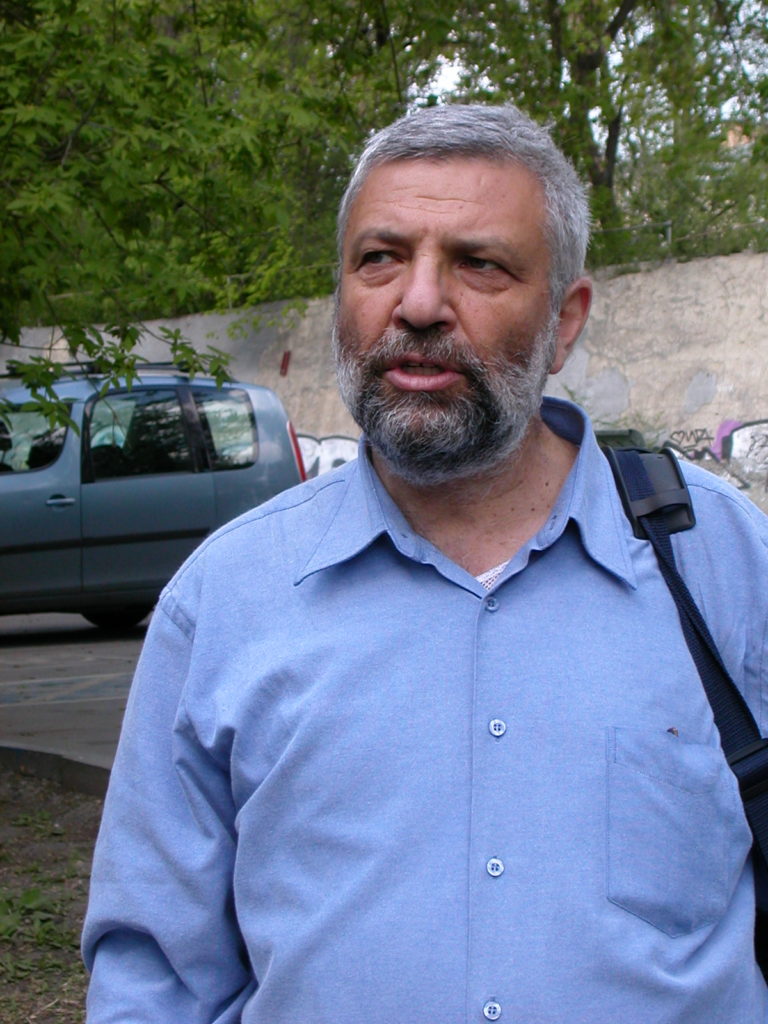
INTERVIEW: ALEXANDER KAZARNOVSKY
OCA Magazine: Tell us, please, about yourself and your creative activity / work
Alexander Kazarnovsky: I was born in Moscow in 1951. Graduated from the Moscow Teachers’ College in 1973. In 1993 immigrated to Israel. Since my childhood I have been writing verses. Living in Russia I translated British, American, and German poetry. I translated poems by James Joyce, Henry Longfellow, Robert Frost, Thomas Blackburn and Modern British poets. I also translated the verses by German Romantic poets. Having arrived in Israel I started writing essay, and later long and short stories and novels. That is what I keep on doing now.
OCA: How did you choose your path and who is your role model in the creative space or life?
AK: Аs for my path, the greatest event in my life which influenced me and defined my future was my returning to God in 1987. I have never had any role model either in the creative space or in life. There are some people whose altitude is unattainable. To some extent one of the persons who are closest to my soul is Vladimir Zhabotinski. As far as poetry is concerned my favorite authors are Pasternak and Mandelstam, in prose Alexander Solzhenitsyn and Michail Bulgakov but I do not know whether I can call any of them my mentor or my role model.
OCA: What is your main achievement in 2021-2022?
AK: I suppose my main achievements in 2021 were finishing and publishing my long stories ” I Have Posted Watchmen Upon Thy Walls” and “WAR WILL TELL THE FURTHER PLAN”. And of course joining the Eurasian Creative Guild.
OCA: What is the main feature that makes you and your art/work unique?
AK: A combination of Russian cultural background with Jewish and Israeli themes.
OCA: Tell us, please, about the events of the Eurasian Creative Guild (London) and projects that you have already taken part in and how does ECG influence your creativity and success in your work?
AK: X Open Eurasian Literary Festival and Book Forum. It was great. I felt as if the whole world had been opened for me!
OCA: What is your motivation and the main aim of your creativity?
AK: The dream for Geula – Redemption of the world and a hope for my contribution to its sooner coming.
OCA: What would you wish for the members of the Guild and other creative people, just starting their career?
AK: Always remain yourselves! Each human being is a world. Open it to other worlds.
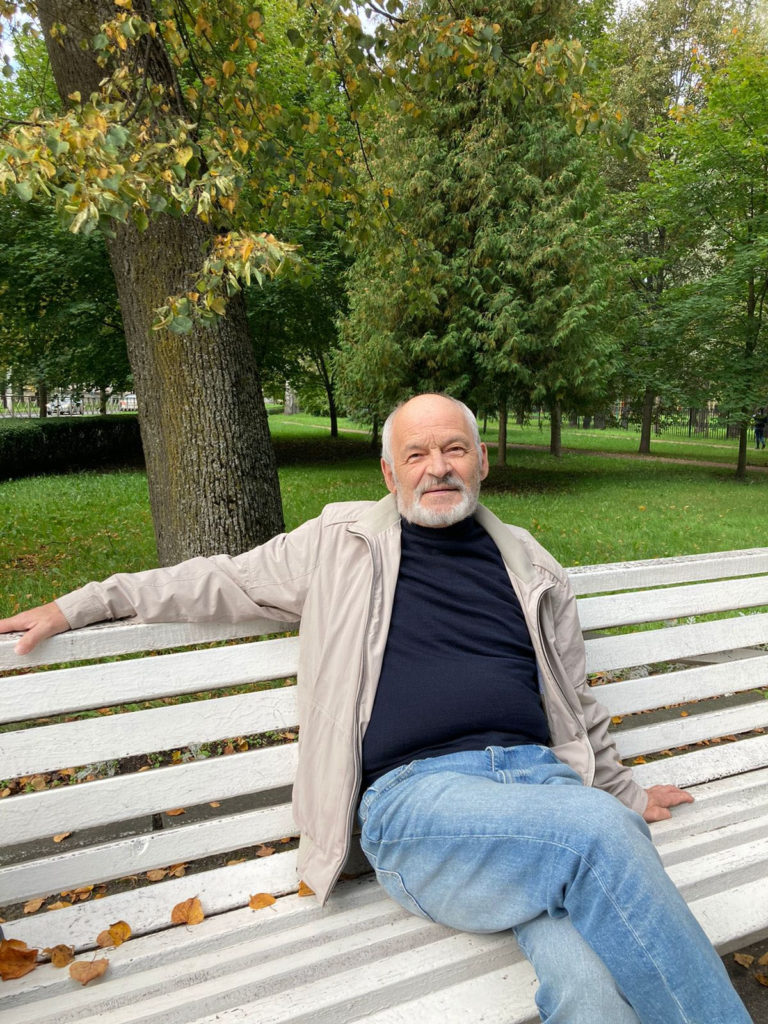
HAPPINESS IS A GREAT RESPONSIBILITY
INTERVIEW: GUMER KARIMOV
OCA Magazine: What is “Eurasianism” for you?
Gumer Karimov: This is everything for me: the philosophy of life, its meaning, my whole worldview. I am from Ufa, the capital of Bashkortostan. My nationality is Tatar.
Fifty years ago, at twenty-two years I left my homeland to continue my education at the Faculty of Philosophy at Leningrad University. I thought at the end of my studies I would return back home, but somehow I stayed for half a century in St. Petersburg, the country’s most European city, the “Cultural Capital”.
All my development as a person took place under the direct influence of two great world cultures of the East and West. Our planet Earth is one for all and for God we all are only temporary guests here.
OCA: Tell us about yourself and your creative activity
GK: I am 72 years old, after graduating from graduate school I went to live in the Leningrad region and work in the house of culture. At first, I worked at a poultry farm then at a fur farm, and then at a state farm. And everywhere it was interesting, I got an amazing experience, which later came in very handy for me in writing. During the perestroika, I was into the farming business. Then at the fur farm I worked as the director of the House of Culture, I was elected director of the farm. I also was engaged in politics, I started to write at the end of the last century. My 6 books of poetry were published, and I wrote several prose books in various genres – from novel to science fiction.
In 2000, I organised a non-profit partnership “Union of Writers of the Leningrad Region and St. Petersburg.” In 2006, I headed the literary association in St. Petersburg founded by Tatyana Gnedich. In our association, we publish the magazine “Tsarskoye Selo” and the literary supplement “Northern Herald”. I must say that my wife Antonina Karimova, a poetess, writer and essayist, helps me a lot.
OCA: What are your favorite artists?
GK: Ernest Hemingway, Ilya Shemler, Valery Popova, Vyacheslav Leikin.
OCA: Have you taken part in the events of the Eurasian Creative Guild (London)? What projects have you participated in and what are you planning to take part in?
GK: My wife and I took part in the Brussels Festival and then at the end of the year we became members of the community. By the way, thanks to the guild, we made many friends. Even living in the Soviet Union, I never had so many friends among Kazakhs, Kyrgyz, Tajiks, Uzbeks and representatives of other nations …
At the request of the vice president of the Guild, Marat Akhmetzhanov, we are creating the St. Petersburg group ECG. We are trying to attract as many new members as possible.
Speaking about participation, I will try to take part in all creative categories, I hope that our experience and creative opportunities will help the guild especially working in the Expert Council. We have a lot of ideas, for example, a wonderful thing – internships that the guild conducts. The creation of a youth section is a great idea. I communicate with some of the young members of the guild, read their works.
OCA: What does the Eurasian Creative Guild mean to you, and how has it influenced your creativity?
GK: When I was introduced to the Guild, I had a feeling that I have known everyone here for many years! Later, when Marat Akhmedjanov and Angelina Krasnogir visited us in St. Petersburg I realised: this is my place to be! Every day I talk with my friends from the Guild, text and call them. Since I joined the guild the lifestyle has changed, new horizons opened up in front of me. Even the rhythm of life has changed. Who would have thought in my 72 years! I am very happy! But happiness is hard work and great responsibility.
OCA: What would you advise the members of the Guild who just started their career?
GK: I am convinced that if a person ceases to be surprised, then someone loses interest in him/her. I worked in culture for many years, therefore, I have been dealing with youth all my life. Who knows, maybe that’s why I don’t feel my age.
I only rejoice for young writers and really want them to have a happy literary fate! I wish them good books, new ideas, fresh thoughts. And, of course, good luck. Nothing will work without her. Good luck, dear friends!
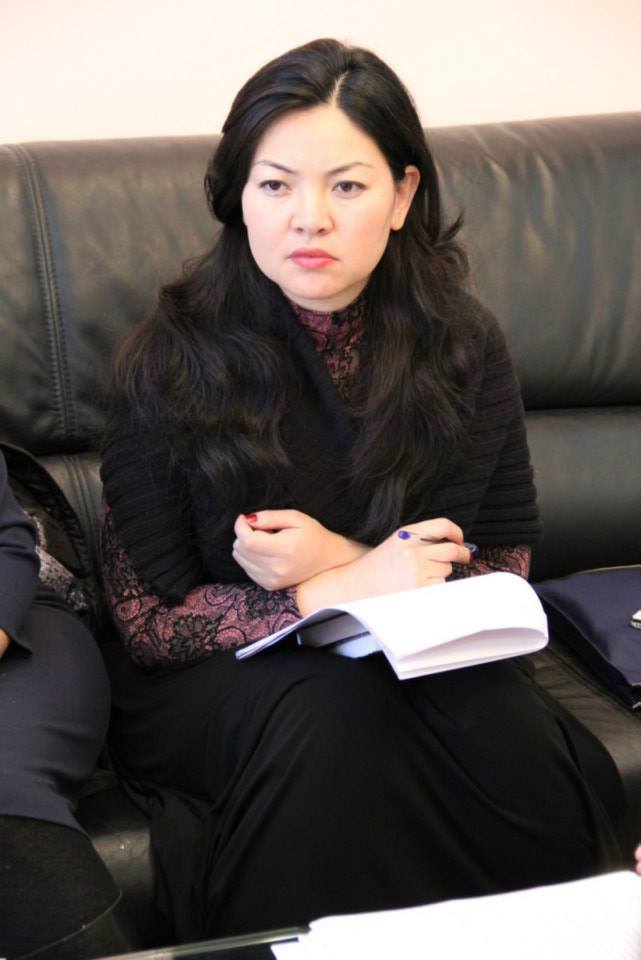
“ALL OF YOUR VICTORIES ARE AHEAD”
INTERVIEW: NARGISA KARASARTOVA
OCA Magazine: Tell us, please, about yourself and your creative activity / work.
Nargisa Karasartova: My full name is Karasartova Nargisa Omurbekovna. I was born in Bishkek, Kyrgyzstan on August 29, in 1978.
My literary debut took place in 2007, when my poems were published in the newspaper “At the end of the week”, in the same year I was lucky to get to the masterclass on the poetry of the International Foundation of Ch. Aitmatov, which was called “Debut-2007”.
In 2009, I became a member of the National Union of Writers of the Kyrgyz Republic. I have two degrees, the first is economics and the second is additional pedagogical education, an English teacher. I am an English teacher in one of the gymnasiums in Bishkek. I also worked for some time as a TV journalist on the ELTR channel.
At present I translate poetry and prose of Kyrgyz authors into Russian and English. This requires some effort and perseverance, so there is practically no time left to write my poems. Fortunately, I am a member of the USAID “Okuu Keremet” project, where, as an author, I create books for children of primary school age.
OCA: How did you choose your path and who is your role model in the creative space or life?
NK: I was born in a family where books were of great importance, there was an extensive library in the house. I must say that my father is a linguist, polyglot and book lover. All relatives and friends called him a “walking encyclopaedia” and my older sisters Leyla Karasartova and Lilia Karasartova, now poetesses, constantly walked around the house and recited poems. I think this “home atmosphere” influenced me.
I consider Chingiz Aitmatov my example in literature and life. In 2008, shortly before his death, I interviewed him on the ELTR channel and saw with my own eyes how great this person is. An incredible aura of intelligence, enlightenment, culture, and goodwill emanated from him.
I can also name Sergei Filatov, the president of the Foundation for socio-economic and intellectual programs and my teacher. Thanks to his Foundation, I twice visited the CIS Writers’ Forum and the International Book Fair in Moscow. He is the spiritual guide of many modern writers.
And in my pedagogical activity, I think that Anatoly Prokushkin, deputy director of the school-gymnasium N 33 is my teacher because he shows by his example how teachers should work.
OCA: What is your main achievement in 2021-2022?
NK: I consider the biggest achievement in 2021 is the contest ‘Open Eurasia-2020’. I became one of the ‘Golden Ten’ in the nomination ‘Children’s Literature’, took 2nd place in the category ‘Literary Criticism’ and 1st place in the category ‘Publicistics’.
I also became a laureate of international competitions of the Writers’ Union of North America, became an academician of MARL (International Academy for the Development of Literature and Art) and was awarded the medal of the International Mentor Foundation. Democratic Party of Women of Kyrgyzstan “Person of the Year 2021”, and also became the owner of the diploma “Poet and Writer of the Year 2021”.
I am glad that I was the first translator of Timur Akhmedjanov’s comic book “Elish and the Wicker Tale”, published in the UK and Russia. I am also looking forward to the publication of the book “Leah and Aya the Sewing Doll” in English by “Hertfordshire Press” in London.
OCA: What is the main feature that makes you and your art/work unique?
NK: I do not write “under the stick” or duress, I do not run for “fashion trends” in literature, I do not try to write a “super-novel” just to get a fee. I write only what interests me and excites me and want to tell “my story”, write “my vision” of this or that event, and describe my feelings.
OCA: Tell us, please, about the events of the Eurasian Creative Guild (London) and projects that you have already taken part in and how does ECG influence your creativity and success in your work?
NK: In 2019, I was shortlisted for the Open Eurasia-2019 contest in the “Small Prose” category and became a participant in the Literary Festival, which was held in Brussels. The event was intense and fruitful. It was very pleasant that the Ambassador Extraordinary and Plenipotentiary of the Kyrgyz Republic to the Kingdom of Belgium Mukhtar Dzhumaliev arranged a Gala-dinner for writers who arrived at this ECG Festival from around the world. Thus, he showed Kyrgyz hospitality and it should be noted that it was interesting for authors of different nationalities to visit the house where Chingiz Aitmatov lived and worked while on a diplomatic mission.
OCA: What is your motivation and the main aim of your creativity?
NK: My motivation is my inner feelings and emotions, my worldview. I want to be heard and understood. A powerful motivator is also my family, my children, they give me joy and inspiration. And how not to mention my Kyrgyzstan, my homeland, which can be tough and affectionate at the same time, here you must be strong and adamant.
As for the goal in literary creativity, it is to write new interesting stories and fairy tales, new poems and acquire a large readership around the world.
OCA: What would you wish for the members of the Guild and other creative people, just starting their career?
NK: First of all, believe in yourself! As the song says: “Need to learn how to wait, need to be calm and stubborn…”. I submitted my works to the international contest “Open Eurasia” probably six or seven times, and only on the seventh or eighth attempts, I was expected to win. For the new members of the ECG, I want to say – all of your victories are ahead.
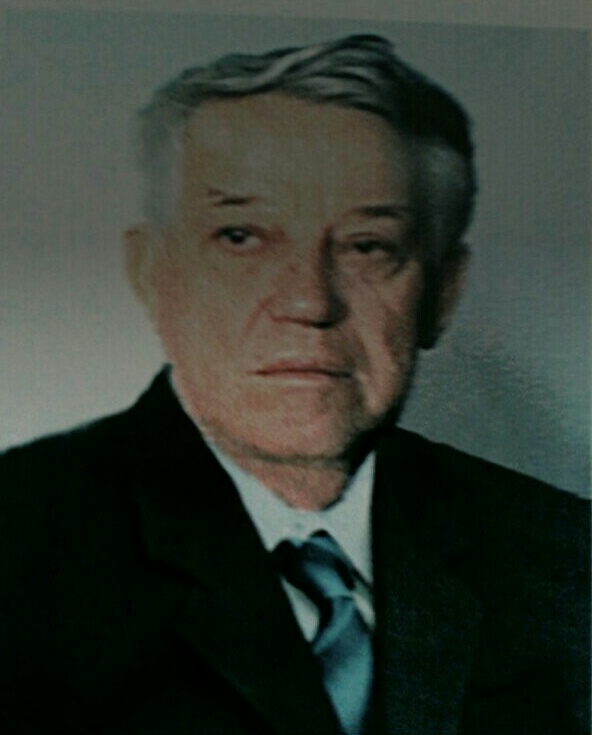
“IN ORDER TO LIVE WELL, YOU NEED TO WORK HARD”
INTERVIEW: NIKOLAJ IVLEEV
OCA Magazine: Tell us, please, about yourself and your creative activity / work.
Nikolaj Ivleev: I was ashamed of our miserable existence in the USSR, the richest country in the world, unable to feed itself, which had 2/3 of the planet’s black soil and two streams of fish of several million tons, spawning in our seas and rivers. I am struck by the stupidity and cruelty of the Communist Party, which Gorky called a “company of adventurers”, unable to establish a normal life in the country. About how we, for this party, destroying our fellow citizens, won power and built socialism, having learned how in the 19th century to write in long complex sentences, including the Onegin stanza, I began to describe in my works. I was able to start publishing only in 2008 on the STIHI.RU website. Then I took a break and in 2018 the poem “From Our Biography” was published in the Union of Writers magazine. Since then, having joined the ISP and ECG(London), I have been published in many magazines and published three books of poetry.
OCA: How did you choose your path and who is your role model in the creative space or life?
NI: Our people in their lives are accustomed to focusing on the “life” of Ivan the Fool, who moved on a self-propelled stove, ate from the tablecloth of self-assembly and worked “at the command of a pike, in my opinion”. And Lenin corrected this oversight by promising us golden toilet bowls. The people got off the stove, followed him, and despite the fact that Lenin said: “Let 90% of Russians die, if only 10% live to see the world revolution,” together with Lenin, having ruined his own country, won power for him. Few of us died in the Civil War, but Lenin tried to correct this oversight and in 1922 starved to death 5-7 million people, trying to make us meek and loving him like a god.
Stalin followed the same path: in 1933, during collectivization, he also starved to death 6 million people and destroyed the peasantry, dooming the country to a starvation existence. In 1937, Stalin destroyed the leadership of the army, and in 1941 put the army under the blow of the German army, which cost the USSR 27 million human lives. We also included Stalin in the pantheon of great leaders.
When Gorbachev became General Secretary, he knew that agriculture had not been working in our country since 1917 and that it needed to be reformed, which he did. But the leadership of the party, not wanting to change anything, ruined the country. Gorbachev was blamed for the collapse of the Union and we still curse, despite the fact that Russia began to feed not only itself, but also sell agricultural products abroad.
OCA: What is your main achievement in 2021-2022?
NI: The main achievement in 2021 – 2022 was the youth of the main character written in detail in Onegin stanzas for the poem “Youth of Sergei” and the review requested for it. After receiving a negative response, I compared this passage with the beginning of “Eugene Onegin”, where I showed that, in comparison with Pushkin, I did not turn out so badly. In Russia they are accustomed to bad poetry and cannot distinguish between the classics and “Polozkovism” and encourage the kind of poetry for which more positive reviews have been received from cooperating mediocrities.
OCA: What is the main feature that makes you and your art/work unique?
NI: When comparing my poem “Youth of Sergei” with the beginning of the novel “Eugene Onegin”, I calculated that the average number of verbal rhymes in a stanza in Pushkin is 2.5, I have 3, the average number of stanzas in a work written in one sentence is 1.5 times more than Pushkin. None of the Russian-speaking poets after Pushkin wrote like that. I specially wrote the poem “From Our Biography” with the same stanza as Pushkin’s “My Genealogy”, so that I could alternate my and Pushkin’s stanzas for comparison.
OCA: Tell us, please, about the events of the Eurasian Creative Guild (London) and projects that you have already taken part in and how does ECG influence your creativity and success in your work?
NI: Due to my age and poor health, I cannot travel and participate in Guild events, but I take part in contests, (so far unsuccessfully), published in the Voices of Friends magazine, trying to show that I can write a Onegin stanza in one sentence, besides being a sonnet.
OCA: What is your motivation and the main aim of your creativity?
NI: To follow the wrong path is the road to the abyss, and I would like the truth to triumph on the planet. I have a glimmer of hope that someday our people will understand that in order to live well, you need to work hard and work well, and, anticipating the happy future of our people, I would like to begin the rehabilitation of people who called us not into the abyss of ruin and poverty, but to the future.
OCA: What would you wish for the members of the Guild and other creative people, just starting their career?
NI: I would wish the members of the Guild and other creative people to be honest people, improve their skills and not stray into packs for the collective defence of imaginary achievements.

DON’T BE IN A HURRY TO SUCCEED
INTERVIEW: LAURA HAMILTON
OCA Magazine: Tell us about yourself and your creative activity
Laura Hamilton: As director of the prestigious Collins Gallery at the University of Strathclyde, Glasgow, from 1988 until its closure in 2013, I originated exhibitions and events related to contemporary Fine and Applied Art by artists from throughout the world. Now freelance and employing skills gained in the writing and publication of numerous catalogues and monographs, my focus has turned to editing English translations of Central Asian literature, in tandem with memoirs by UK authors.
OCA: What is “Eurasianism” for you?
LH: I would define ‘Eurasianism’ as a term which unifies a vast and divergent collective of peoples, their heritage and culture, both past and present. As a westerner, from whom that world has long been hidden, it is a new and exciting concept imbued with intrigue and romance.
OCA: Who are your favorite artists?
LH: I found the deeply- rooted and significant role of cultural heritage in Central Asian life, hauntingly and beautifully encapsulated in ‘Farewell Gul’sary’ by Chinghiz Aitmatov and ‘Howl’ by Kazat Akmatov; and have enormous admiration for acclaimed Uzbek author Hamid Ismailov, to whose books I return again and again. However, straddling the two spheres of visual and literary creativity, it is impossible for me to name the many, many other artists and writers whose work has left an indelible mark. There are also, too many authors to mention, whose work I have edited and who deserve global recognition.
OCA: Have you taken part in the events of the Eurasian Creative Guild (London)?
LH: Following Marat Akhmedjanov’s generous review of my exhibition ‘From Quilts to Couture in Kyrgyzstan’ in 2011, for the OCA magazine, I began editing for Hertfordshire Press, and in due course, joined the Eurasian Creative Guild. I have attended Open Eurasian Literary Festivals in London, Almaty and Stockholm, as well as events in London, Glasgow, Edinburgh and Bishkek. I participated in judging the annual Open Asia Competition and after serving as Chair of ECG from 2017-19, now sit on the Guardian Council.
The Guild is a unique and ever-evolving organization that provides a warm welcome, support and stimulating opportunities to creative people working in all genres and at different stages of their careers. It is a uniting force, an extended family of sorts, which nurtures the development of close collaboration and firm friendships.
OCA: Do you have any personal project that you would like to talk about?
LH: I have edited some fifty works in translation, the most recent of which is ‘Er Toshtuk’; one of an ongoing series of classical Kyrgyz epics. Much as I enjoy these historically rich and wonderful legends, I look forward to revisiting contemporary literature. It appears that Guild members have many new exciting projects in store, which will hopefully, be translated into English!
OCA: What would you advise for people who’re just starting their journey of creativity?
LH: Based on experience, my advice to anyone embarking on a creative career is twofold: Don’t be in a hurry to succeed; take time out to think, and invest time to revise and if necessary, rework what you’ve done until you’re truly satisfied.
Astonishingly, there are artists who don’t visit galleries, writers who don’t read, and translators who don’t access texts written by native speakers! There’s an unlimited wealth of information waiting to be discovered, guide and inspire you; so, use it to your advantage…
I wish you all the best of luck!
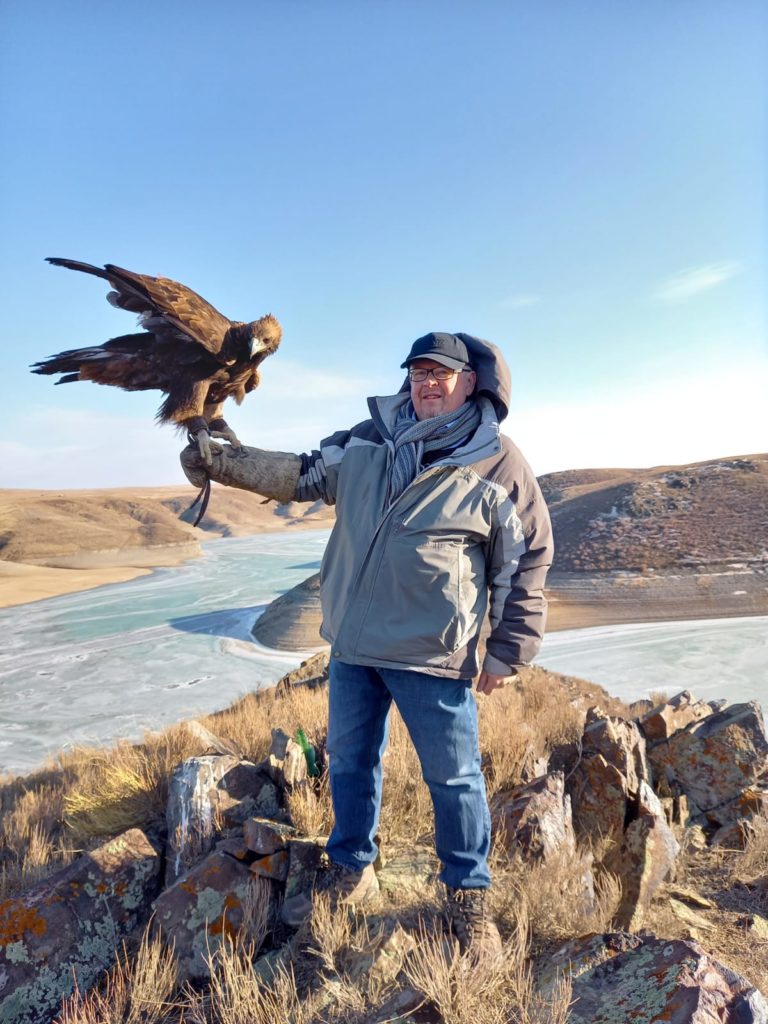
“KNOW THE CULTURE OF THE SOCIETY THAT YOU LIVING AND WORKING WITH”
INTERVIEW: BRUCE GASTON
OCA Magazine: Tell us, please, about yourself and your creative activity / work
Bruce Gaston: I am primarily a businessman and not as involved in the arts as I used to be. However, I still write articles for publication every year and enjoy going to art shows and cultural events. I particularly like finding local Eurasian and Central Asia historical stories of interest and culture that have never made it into the main published histories.
I remember meeting an old archaeologist who ran a two big yurt and one small yurt museum near Issyk. He said he had been sponsored by an Italian Prince to pursue local archaeology and set up his yurt museum to the history of the Issyk area. We spent the best part of the day visiting various sites, including the site of an ancient equestrian palace, several large stone circles, and a huge circle based on the features of the landscape, such as are found in Rennes la Chateau in France or near Glastonbury in England. I still have plans to visit the stone henge in the Tien Shan steppe hills above Issyk that the old archaeologist described.
OCA: How did you choose your path and who is your role model in the creative space or life?
BG: My path was chosen partly by fate and partly by choice. I ended up being introduced to Eurasia and Kazakhstan by my German brother-in-law, who’s wife is a sister to my own wife, Lidia. I fell in love with the people, culture, and history of the region. One of my favourite hobbies is ancient history. It is often said that Central Asia has little history, but the truth is quite the opposite if you look carefully. I bought a number of turn of the century history books on Central Asia from the collection of the representative to the Dalai Lama of the Budhist region of Buratia in Russia. These books are fascinating.
Artistically, my role mother has always been my mother, who is an artist. She has always been working on artistic pieces, whether sketches, oil paintings, multi-material pieces, sculptures (mostly metal), installations, and more recently stained glass. After she kept asking me to set up a show, the gallery Tengri Umi in Almaty took an interest and combined a show of my mother’s work and the annual master class festival. I believe this was the first show of a British artist in Kazakhstan sponsored by the British Arts Council.
I have spent over 20 years now in Eurasia, particularly Kazakhstan, and very much enjoy cultural events. My favourite time of year is Nauryz, when everyone emerges from Winter to enjoy spring. Historically, I was an active sportsman and since spending time in Central Asia I have started following some of the local cultural sports and Nomad games.
I have most recently been involved in a number of eagle hunting events and it has become a hobby. Though eagle hunting is a sport, it is also very much a Kazakh cultural activity. It is great to get out into the steppe, hiking for kilometres, while working with eagles.
OCA: What is your main achievement in 2021-2022?
BG: Artistically, my main achievement so far in 2021/22 is to write an article, published by OCA magazine, on Japanese chocolate and the start of St. Valentines day, based on the history of the Morozoff family. I am working on another article and I am beginning to put work into publishing a book.
OCA: What is the main feature that makes you and your art/work unique?
BG: I guess my work is unique partly because my experience in life is unique. I have had the pleasure of living in the UK as a child and banker in London, Canada as a teenager, Japan and Hong Kong as a banker, and Russia, Ukraine, and Kazakhstan as a corporate finance and business development advisor. I wasn’t just ‘working’ while working in these various locations, but also enjoying each culture and the many connections between them. The article that I wrote regarding Japanese culture was inspired by a meeting between my wife and the original inspiration for St Valentines day and chocolates in Japan, Valentine Morozoff. This meeting resulted in my researching the Morozoff family history and their contribution to what is now a key aspect of Japanese culture.
OCA: Tell us, please, about the events of the Eurasian Creative Guild (London) and projects that you have already taken part in and how does ECG influence your creativity and success in your work?
BG: I find that the Eurasian Creative Guild has inspired me to develop my artistic interests in a way that might otherwise not have happened. It is very easy for me to get buried in my work and I need all the help I can get to pursue more artistic and cultural interests.
OCA: What is your motivation and the main aim of your creativity?
BG: I have never worked just for money. I think I get this from my parents. For me, it is extremely important to get to know the culture and arts of the society that I am living and working with. I have always been creative, whether that is through my work or as a member of society.
OCA: What would you wish for the members of the Guild and other creative people, just starting their career?
BG: Luck, good fortune, and an enthusiasm for life!
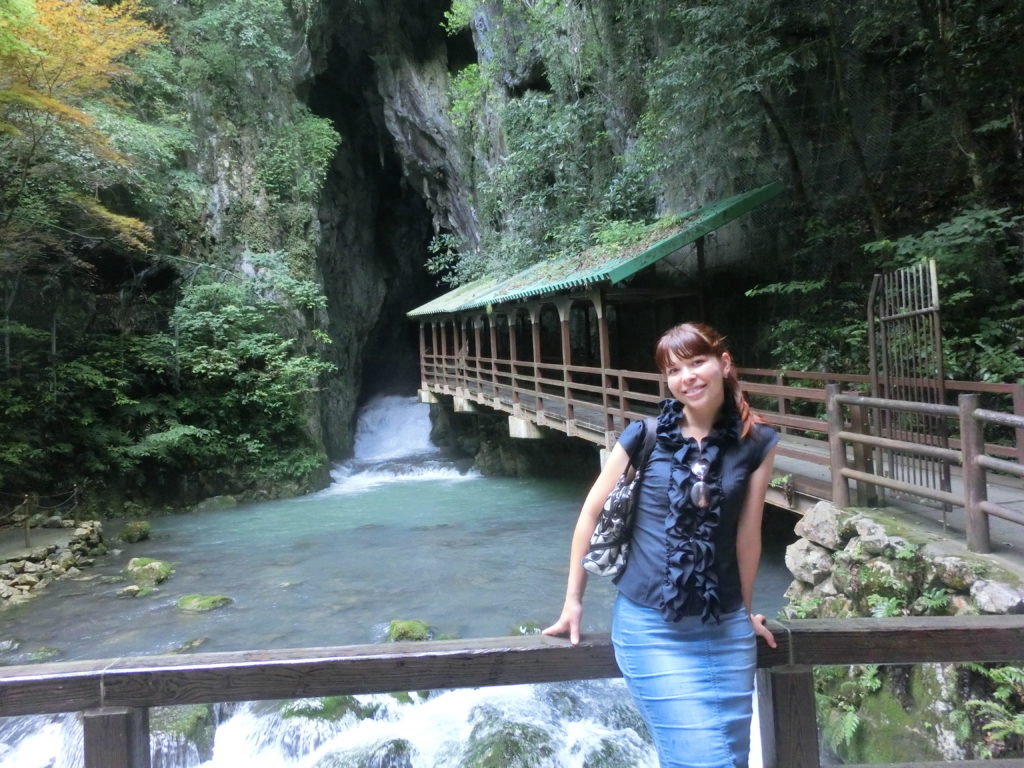
CREATE IN THE NAME OF ART
INTERVIEW: YULIA GANETSKAYA
OCA Magazine: Tell us, please, about yourself and your creative activity / work
Yulia Ganetskaya: My name is Yulia Ganetskaya, I was born in Uzbekistan, and now living in Japan. My husband and I own a small cultured pearl farm. I have been writing since childhood. At first these were small stories for myself and my friends. There were publications in magazines and newspapers, school magazines. My first full novel was conceived four years ago. In my opinion, it took an unforgivably long time to write.The result exceeds all my expectations and the novel “The War United Us” received deserved recognition among readers.
OCA: How did you choose your path and who is your role model in the creative space or life?
YG: I adore Dostoevsky with his ability to subtly emphasise the nuances of the human soul in his works and read Pikul’s novels. It was the works of Valentin Pikul that prompted me to write my novel. Of course, I am far from the great writers of Russia but they became the example for me and they are my teachers.
OCA: What is your main achievement in 2021-2022?
YG: In the summer of 2021, my novel was published by the Ridero publishing house. After the publication I remembered the Open Eurasia contest in which I decided to take part. I am very glad that my work was appreciated and I got second place in the Prose category and third place in the category “Best Female Author“.
OCA: What is the main feature that makes you and your art/work unique?
YG: The plot of the novel “The War United Us” was based on the story of my family. My great-grandmother became a victim of the revolution. Hiding from Soviet power, she had to leave her home, witnessing the death of her parents and brothers .I think this is what distinguishes my novel from other works.
OCA: Tell us, please, about the events of the Eurasian Creative Guild (London) and projects that you have already taken part in and how does ECG influence your creativity and success in your work?
YG: Winning in the Open Eurasia contest convinced me that I was on the right track. It was a happiness for me to know that my work is appreciated and this inspires me for new works.
OCA: What is your motivation and the main aim of your creativity?
YG: The motivation for me is the victory in the contest and warm feedback from readers. I’m full of ideas and inspiration and I really hope that in the next contest I will get first place.
OCA: What would you wish for the members of the Guild and other creative people, just starting their career?
YG: I am very grateful to the members of the guild for the opportunity to express themselves and declare their creative to the whole world. I wish the members of the guild health, success in their work and inspiration.
First of all, I advise aspiring authors and poets not to be afraid to express themselves. Do not give up after failure and create in the name of art.
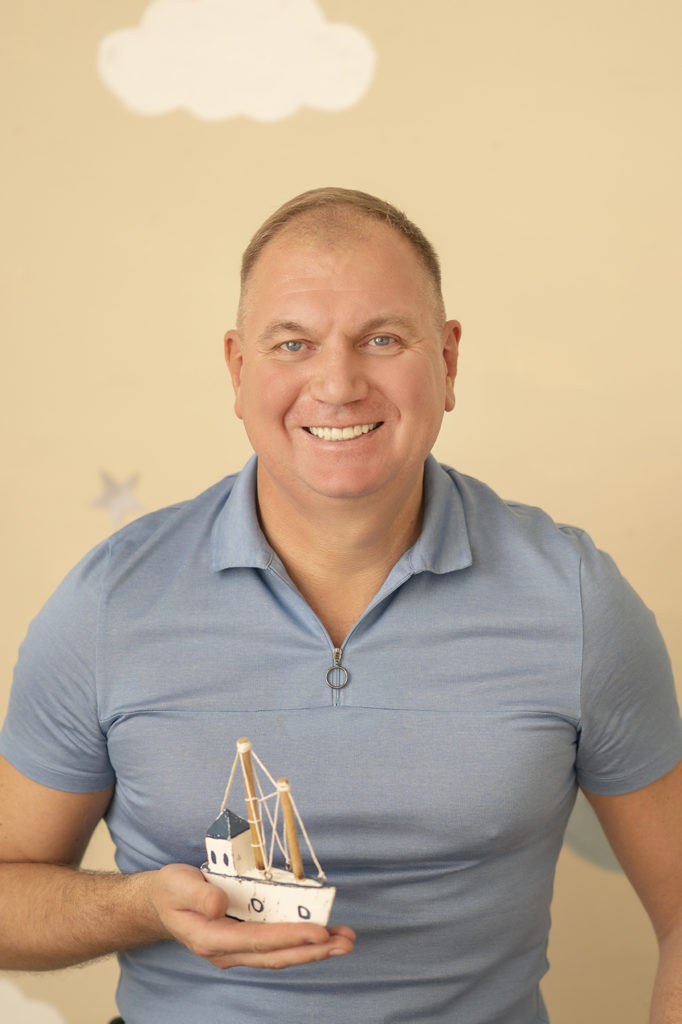
“MY BOOKS HELP CHILDREN SEE THE BEAUTY OF THE WORLD WE LIVE IN”
INTERVIEW: GRIGORE GACIKEVICI
OCA Magazine: Tell us, please, about yourself and your creative activity / work
Grigore Gacikevici: I am 49 years old, I write poetry for children in Russian, English and Romanian. I began my public literary activity a year ago, in March 2021. A few months after that became a member of the Eurasian Creative Guild (London).
Born in Moldova. In my youth I was professionally involved in athletics, a master of sports of the USSR in high jump, multiple winner and prize-winner of the junior championships of the Soviet Union.
In 1994 I graduated from the Moldovan Academy of Economics. I have been working in the financial sector for over 25 years. For my work I was awarded state awards of the Republic of Moldova: the Order of Glory to Labor and the Medal of Civil Merit.
At the moment I am the author of eight poetry books for children in Russian, including: “Merry Alphabet!”, “What colour is a zebra?”, “I swim in the blue sky!”, “For pancakes!”, “Simple joy” and others, as well as four poetry colouring books.
Also completed the illustration for three more books: a collection of children’s poems in Russian about the sea and marine life called “The surf is calling us!”, The Romanian version of my book “Merry Alphabet!”, and also its English version – “The Funny Alphabet! I hope that all three books will be published in the first half of this year.
My works are regularly published by such Russian publications as the literary almanac “Hyperborea”, the Moscow magazines “Light of the Capital”, “New stained-glass windows”, etc. My poems for children can also be found in numerous international poetry collections.
Also, I am currently studying by correspondence at the Higher Literary Courses (specialty “Poetry”) at the Literary Institute. A.M. Gorky (Moscow).
OCA: How did you choose your path and who is your role model in the creative space or life?
GG: Since the birth of our daughter Polina, my wife Olga and I’ve tried to spoil her love for good fairy tales and poems. My daughter is already sixteen, but we still have a large library of wonderful and well-illustrated children’s books at home. Therefore, I began writing my first poems for children about ten years ago for my daughter. And in March last year, I discovered that there were enough such works in paper form to start publishing them on various social networks.
That’s how I came to children’s poetry, which I do not regret at all and write with pleasure every day. I want to emphasize that among the many worthy and respected authors for children, for me since childhood, the unique Soviet poet Korney Ivanovich Chukovsky has been and remains number one. And my main source of inspiration, as before, is the love for my wife and daughter.
OCA: What is your main achievement in 2021-2022?
GG: My main achievement is the publication of eight of my books. I am also very happy with my victories last year at 12 international literary competitions.
OCA: What is the main feature that makes you and your art/work unique?
GG: My books can help children become kinder and more responsible, help them see the beauty of the world we live in. At the same time, I try to ensure that children, when reading my poems, always have the opportunity to choose: between god and evil, between bad and good, between honesty and lies. Nobody likes edification, so many of my poems have a question mark at the end. But at the same time, with the help of the storyline and poetic images, I try to make the child himself inclined towards those kind and bright values on which our world is based. I try to convey in my works the belief that the world around us is beautiful, and there is a lot in it that is worthy of our love. In addition, I try to have humour and a good mood in all my poems, because a smile, as you know, is the best cure for all illnesses and hardships.
OCA: Tell us, please, about the events of the Eurasian Creative Guild (London) and projects that you have already taken part in and how does ECG influence your creativity and success in your work?
GG: Last year, I became one of the winners of the Open Eurasia-2021 Contest in the “The best children’s work” category. This year I submitted my application for participation in the “Voices of Friends” contest, in which I really want to win. Undoubtedly, membership in the ECG has made my creative life more intense and interesting. I am very glad that the Guild holds a large number of competitions, and I try to take part in them as often as possible.
I also hope to publish my book “The Funny Alphabet!” with the help of the Guild. and hope for help in promoting this book in the UK.
OCA: What is your motivation and the main aim of your creativity?
GG: Motivation and my goal is the constant development of my versification. I really like to study online at the Moscow Literary Institute. We are taught by wonderful teachers in the theory of literature, stylistics of the language, etc. But the most useful classes for me are seminars on poetic mastery. I really hope that as a result of my studies, my poems will become more perfect.
OCA: What would you wish for the members of the Guild and other creative people, just starting their career? GG: Believe in yourself and understand that you need to engage in creativity regularly and constantly strive to improve your skill level.
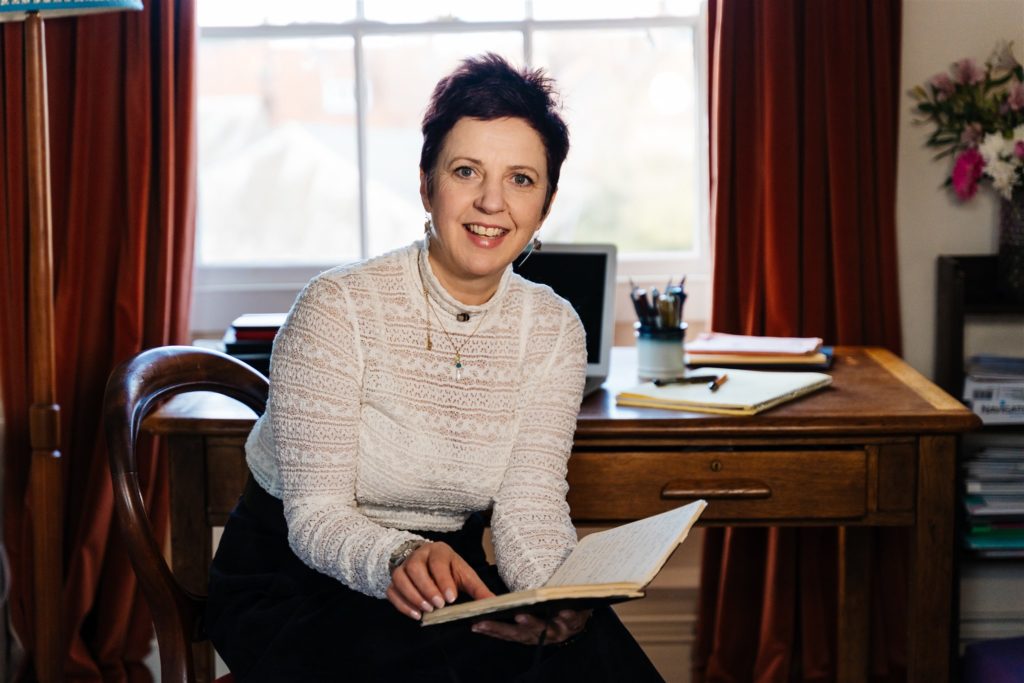
CULTURAL EXPLORATIONS BEYOND EUROPE
INTERVIEW: JOANNA DOBSON
OCA Magazine: Tell us, please, about yourself and your creative activity / work
Joanna Dobson: I am a writer and translator based on the North Norfolk coast, UK. I started working with translated texts many years ago as a proof reader for the Journal of Archaeology and Anthropology of Eurasia (Russian Academy of Sciences) while living in Akademgorodok, Siberia. This work gave me a window onto Scythian Art, which 20 years later is still a topic that nourishes my own creative work. Now I translate fiction, and non-fiction often in the genre of popular philosophy e.g. the Transurfing Reality series by Vadim Zeland. After receiving an MA from Cambridge in Modern & Medieval Languages (Russian & German literature and language) I moved to live in the Altai Republic. I carried out interpreting work for Altai Nature Parks and the United Nations in the field of bio-cultural diversity conservation as well as for the sacred land film project Altai Republic, Standing on Sacred Ground. I translated written texts for Altai cultural figures, too, and remember very fondly my first book translation project, Altai Bilik: Spiritual Wisdom of the Altai Mountains.
As for my own creativity, I am currently writing a book about my memories of living in Altai, the people, places, cultural and ancestral monuments that make this corner of the world so extraordinary and am using as illustrations my field diary watercolour sketches.
OCA: How did you choose your path and who is your role model in the creative space or life?
JD: In my late twenties, I began to experience a deep sense of calling which led me to Altai. It was there that the contours of my creative work crystallized into their present form. My deepest inspiration comes from those artists, whose work goes unsigned – the craftsmen of the Iron Age, who left their traces in ritual monuments throughout the Eurasian steppe. Whenever I feel blocked I return to this heritage and am resuscitated. Among recent works, I have the greatest respect for lesser known poet Aiaru Tokhtonova, who has just published her first anthology Bistin Ulus (2022). I have huge admiration for other writers who capture the spiritual force of homeland by venturing into the darkness. E.g. Recent works by Hamid Ismailov Manaschi, and Nastassja Martin’s In the Eye of the Wild.
OCA: What is your main achievement in 2021-2022?
JD: My participation as translator for the catalogue produced for the Gold of the Great Steppe exhibition held by the Fitzwilliam Museum in Cambridge. This project inspired me to paint. In 2021 I produced a set of hand painted gift cards – interpretations of original Saka artefacts in watercolour and gold leaf, some with quotations by great poet ‘Abai’ woven into the design. These cards were included among the official merchandise of the Fitzwilliam Museum shop. For a long time I had been looking for a way of combining my illustrations with written narratives, exploring digital approaches. Each gift card has a QR code on the reverse which links to an audio file on my website (altaipilgrim.com) in which I share my thoughts about each image. Since then I have created an Etsy shop (altaipilgrim.etsy.com) to share my work more widely.
OCA: What is the main feature that makes you and your art/work unique?
JD: I have not met many others among my compatriots, who find their inspiration first and foremost in Altai, and in the ancient cultures of Eurasia and the cultures of the Turkic peoples. Perhaps my work seems unusual to many, not by virtue of any great talent, but simply because in the UK we seem to know relatively little about these rich cultures.
OCA: Tell us, please, about the events of the Eurasian Creative Guild (London) and projects that you have already taken part in and how does ECG influence your creativity and success in your work?
JD: I am a new member to the Eurasian Creative Guild. So far I have attended just two events, both remotely: a Novruz celebration, as well as the 2021 film festival, which opened my eyes to the wealth of Kazakh cinematography. I look forward very much to discovering more about the creativity of other members of the guild.
OCA: What is your motivation and the main aim of your creativity?
JD: My aim is simple: I feel compelled to share with others the most precious moments of my cultural explorations beyond Europe: the first time I heard blessings sung by a throat singer beside an evening fire; stumbling across a petroglyphic composition in a remote river valley that was as delicate and fine as a Persian miniature… In moments like these, the heart takes an ecstatic leap and time is suspended. I want to call out to others: ‘Look! Just look at the brilliance of these people from lands beyond our own!”
OCA: What would you wish for the members of the Guild and other creative people, just starting their career?
JD: To stubbornly trust your heart to navigate a creative life and develop the ‘long will’ required to turn inspiration into tangible results. Where possible, never compromise on quality. Find a mentor. Engaging a writing coach is most helpful thing I have ever done. And I wish the advice that my mother wished for me when I was a child: “before you begin any creative project, always ask yourself, ‘how can I approach this in a way that is true and unique, unlike anyone else.”
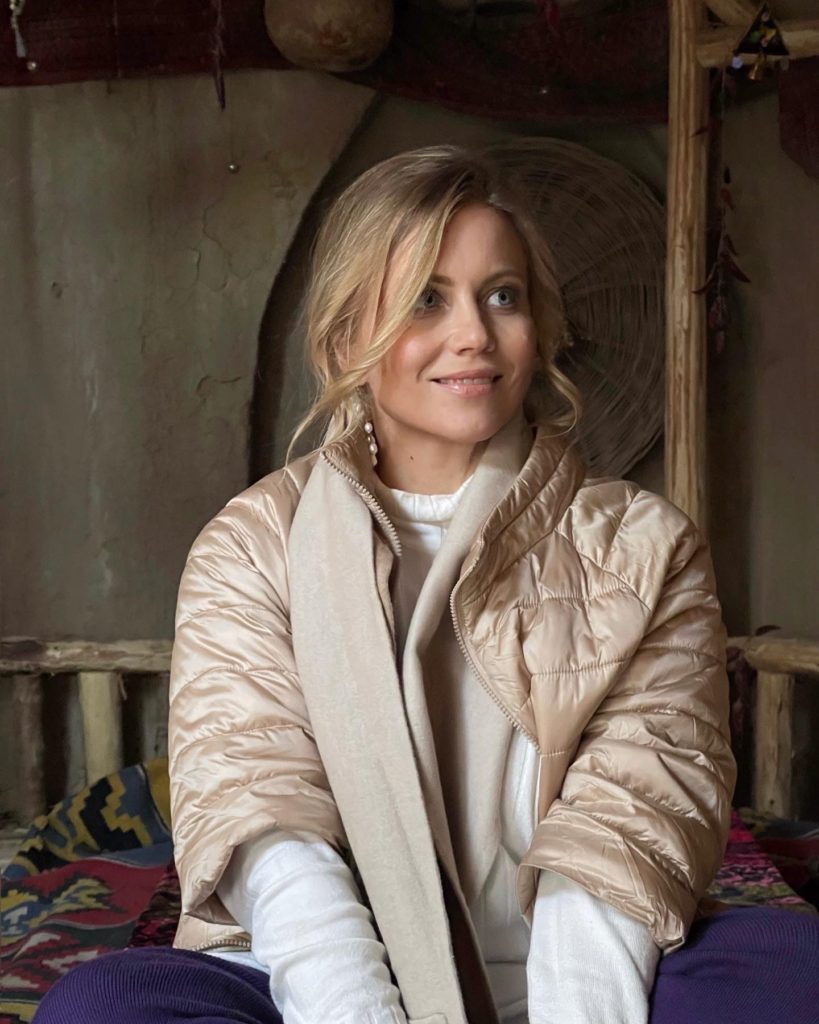
NEW BEGINNINGS
INTERVIEW: INNA CHAYKA
OCA Magazine: Tell us, please, about yourself and your creative activity / work
Inna Chayka: All my creativity was awakened when I turned 50, moved to Florence, sent my son off to university and was left by my partner for another woman. I guess these things gave me a sense of freedom and new beginnings.
I started singing, theatre-acting, studying fashion design, teaching kundalini yoga and dancing the tango – things I never did, or even imagined doing.
And I started writing. I would like to think that I’ve experienced a lot in my life: 23 years ago, I left Ukraine and moved to London, where my son was born, where I built my accounting business and where I learned many tough life lessons. In the midst of everything, I worked in post-war Iraq, travelled, fell in love, met many interesting people and realised that people like to hear my stories, both the tragic and the comedic.
OCA: How did you choose your path and who is your role model in the creative space or life?
IC: I am a writer by accident, in that I did not choose this path deliberately. My favourite writers – the ones who inspired me the most – would be Françoise Sagan and Victoria Tokareva. Every story of theirs resembles the experiences I had, emotions I felt, and conclusions I made.
OCA: What is your main achievement in 2021-2022?
IC: My main achievement of the last year was of course winning first prize in the literary competition. It was something I neither expected, nor even dreamt about.
In addition, I recorded a song and realised that I had been missing something in my life – music. I am currently taking singing lessons and it has enriched my life tremendously.
I am mastering the art of Argentine tango, another new and unexpected passion of mine.
This year, I also got my sailing and free-diving licences. For someone who was scared of going underwater, I felt a huge sense of achievement.
The last 12 months of my life have been a radical transformation for me, and I truly am a new person.
OCA: What is the main feature that makes you and your art/work unique?
IC: I am not very imaginative, so I can only write, sing, and dance what I feel. I write about love and what has happened in my life: stories that other women in particular can relate to. I changed my life completely at 50, and lots of my friends, and friends of friends, found it very inspiring. I hope that my example can help other women fulfil their dreams.
OCA: Tell us, please, about the events of the Eurasian Creative Guild (London) and projects that you have already taken part in and how does ECG influence your creativity and success in your work?
IC: I joined ECD in 2021 and have not had the opportunity to experience many events. The ECD literary festival in Uzbekistan was the beginning of a completely new and unknown path for me. The people I met, the ideas we shared, and the stories I heard, were a real inspiration to me.
OCA: What is your motivation and the main aim of your creativity?
IC: I hid my creativity for such a long time, that when everything started coming out, I just could not stop. I did not have a specific goal in mind when I wrote my first story; rather, it helped me live through the pain of a broken heart. If my stories help other women, then I can say that my mission is complete.
OCA: What would you wish for the members of the Guild and other creative people, just starting their career?
IC: My main advice is to be brave, open your heart to opportunities that present themselves, believe in yourself, and follow your dreams.

MY PASSION IS TO MAKE A DIFFERENCE IN SOCIETY WITH MY CREATIVITY
INTERVIEW: NATALIE BAYS
OCA Magazine: Tell us, please, about yourself and your creative activity / work
Natalie Bays: I am a cultural project manager and i run an organisation called The NO Collective. I organise creative festivals, events and programmes to help people be more involved in the arts and to be more creative. I also co-host a weekly radio show on Phoenix 98 FM where i discuss art and culture with a range of artists, musicians and theatre makers from across the UK. As a visual artist I create artworks from a collection of archive photography which explore time, culture and my connection to people and place.
OCA: How did you choose your path and who is your role model in the creative space or life?
NB: As a child I was always drawing, making and performing. I loved to sing and make art. My mum was my biggest creative influence growing up and I was inspired by the work that she made in college. She has always taught me to love what i do and I love being creative in everything I do. Artists I love include UK artists Bob & Roberta Smith for his humour, Jeremy Deller for his humanism and Azerbaijani artist Faig Ahmed for his playfulness.
OCA: What is your main achievement in 2021-2022?
NB: In 2021 I created a co-designed public light festival in Romford, the town where I work and grew up; called ‘Illusionarium’. It was the first of its kind and was on a much larger scale than anything Ihad created before. There were 15 artworks designed and built by local people and artists. They were displayed all over the town for a month alongside an arts education trail. The artworks included a greenwall artwork opposite the station entrance and a giant neon sheep in a shopping centre, which have both been kept up.
OCA: What is the main feature that makes you and your art/work unique?
NB: I make work and cultural projects that link places and people that are hyper-local [very close to me] with art work and experiences that are worlds away. I feel that I have a responsibility to share the unique experiences that I have been lucky enough to have over my years and I translate this through my art work and programming.
OCA: Tell us, please, about the events of the Eurasian Creative Guild (London) and projects that you have already taken part in and how does ECG influence your creativity and success in your work?
NB: I am involved with the ECG Eurasian Film Festival, helping it to be a success alongside the Romford Film festival in London every year. I have been to many art exhibitions and fashion shows as part of the guild too. I have been an advocate for the guild since I joined almost 5 years ago. I have been on the advisory board now for 2 years also which allows me to explore different art practises, and network with lots of different creatives from across the world. This helps me to expand my knowledge in what creativity can be and learn about cultures that I knew little about before.
OCA: What is your motivation and the main aim of your creativity?
NB: My passion is to make a difference in society with my creativity. Whether that be through creating a project where people can get involved and get to be creative, or supporting other artists inspire with their work. I am motivated by the encouragement of the people around me, wanting to be part of a creative collective making change together. I am inspired by the results of democratic art practise and artwork that is make as a collaboration.
OCA: What would you wish for the members of the Guild and other creative people, just starting their career?
NB: I would like other members of the guild to continue to love being creative. Even if you have times where your art practise is not working the way you would like it to, you should just be unapologetically creative in everything else you do until you get your spark back! I think it is also important to never stop educating yourself in different things. Culture, heritage, geography, everything and anything.
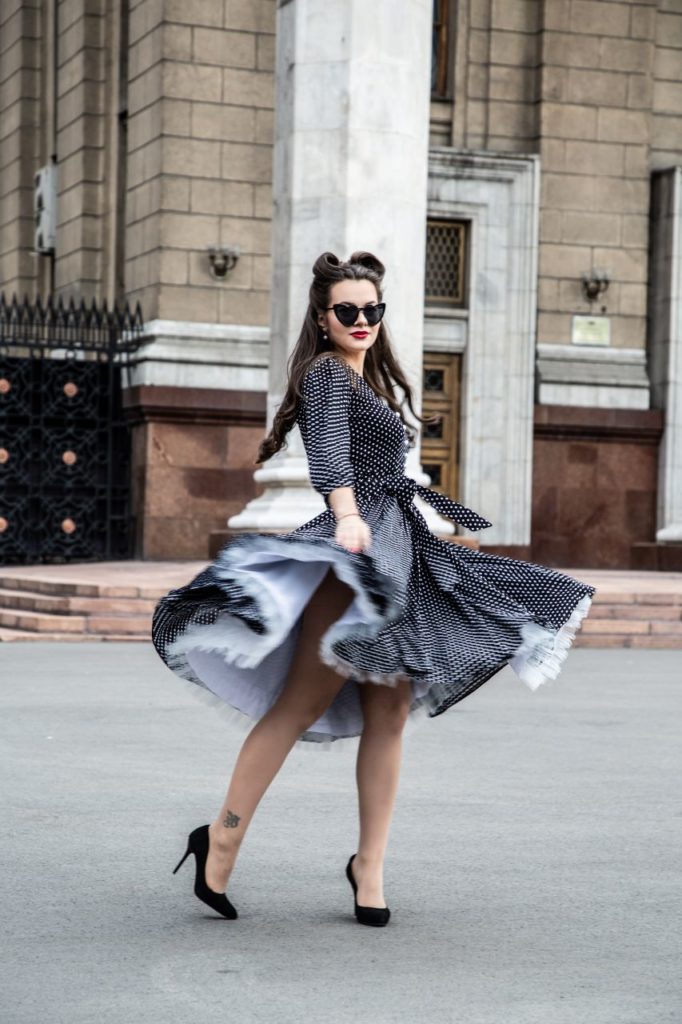
“I CAN DO IT”
INTERVIEW: VLADISLAVA BAIMAGANBETOVA
OCA Magazine: Tell us, please, about yourself and your creative activity / work
Vladislava Baimaganbetova: I am a married feminist, have a daughter, and waiting for a second child. At the moment, my main job is business coaching in the HoReCa industry. I love the restaurant business, the Kazakh history of hospitality and actively promote it. At the same time, I am studying social psychology at the St. Petersburg Humanitarian University of Trade Unions.
I consider Robert Heinlein’s phrase as motto in life: “Any person should be able to change diapers, plan invasions, butcher pigs, design buildings, manage ships, write sonnets, keep accounts, build walls, set bones, ease death, follow orders, give orders, cooperate, act independently, solve equations, analyse new problems, fertilise, program computers, cook deliciously, fight well, die with dignity.”
I consider the ability to be both here and everywhere to be unique at the same time: in various projects, in various trainings, working as a business coach, developing the restaurant business in Kazakhstan, raising children, sewing and embroidering, decorating children’s holidays, taking an active social part in the life of our beloved city of Almaty and much more.
OCA: How did you choose your path and who is your role model in the creative space or life?
VB: My creativity originates from a young age. In whatever city I was, I always actively participated in the design of wall newspapers, thematic events, attended plein airs with ShIITD them. A. Kasteeva. The annual trips around the country happened thanks to my military parents. My mum is a mother of four children who always wanted to keep us busy. For example, my middle sister Dana played the piano, and my brother Alnur choreographed and played the saxophone. Now, however, Dana is studying on a grant with a specialisation in automation and control, but this does not prevent her from expressing herself in such an art form as digital painting. Genetics play an important role, I guess. My grandfather Anatoly Zhigalov – Honoured Artist of Kazakhstan, awarded the medal “For Valiant Labor ”, artist, Laureate of the 1st degree competition for veteran teachers in Moscow. Together with his wife Galina Kononenko, he worked at the Palace of Creativity for Children and Youth (Russia) as a teacher and accompanist of additional education in a music and choir centre.
Of course, life is not complete without teachers, and today I had the opportunity to boast of those who in every possible way develop and accompany my work to this day.
Elena Vlasova is a dressmaker with tremendous experience. Acquaintance with her was not limited to my individual orders. Today Aunt Lena, as I call her, is my sewing teacher and I am very lucky to know her. We are neighbours and this facilitates our learning processes, given my busy schedule. Her most valuable advice and professionalism allowed me to prove myself in the international design competition.
Natalya Vanina is no less a professional dressmaker, and also my favourite mother-in-law. The only negative is the remoteness of her place of residence, but even this is not a problem for us. We call each other via video, discuss new items in the world of textiles, patterns, critical moments with customers, and so on.
OCA: What is your main achievement in 2021-2022?
VB: I find achievements in my various endeavours. I started working on the design of the author’s methodological manual for the restaurant business; developing a monopoly game for waiters; began to embroider a panel dedicated to the 30th anniversary of the Independence of the Republic of Kazakhstan; sewed a lot of sweatshirts with various prints; the session is progressing well in parallel; my feminist content is gaining popularity on Instagram and even already has followers, and the opportunity to participate in OCA People.
OCA: Tell us, please, about the events of the Eurasian Creative Guild (London) and projects that you have already taken part in and how does ECG influence your creativity and success in your work?
VB: I became acquainted with the Guild in 2014 as part of the Third International Literary Festival “Open Central Asia Book Forum & Literature Festival”. Then my young dream came true and I met my favourite writer Janusz Leon Wisniewski, and also received an autograph. Oh, how I was “treated” by his novels in adolescence. Years later, I myself joined the ranks of the Guild Members and took part in my first contest “The Heartbeat of Eurasia”.
OCA: What is your motivation and the main aim of your creativity?
VB: First of all, I work for the sake of interest in the case. After all, any creativity is therapy, a way to understand yourself, to conduct an internal dialogue.
Moreover, it is pleasant to realise – “I can do it”, and if it is also significant for others, it resonates in the heart, then in general it has an optimistic effect on the structure of the world around.
Now I have planned the purchase of industrial equipment, the expansion of the workshop and the training of some sewing techniques. My sister also draws sketches for a future collection of shoppers and sweatshirts. There is even a queue for them.
OCA: What would you wish for the members of the Guild and other creative people, just starting their career?
VB: The first is to believe in your abilities. Everyone has them, but not everyone, unfortunately, is able to identify and develop them. I wish each of us to look closely at others and try to be as open as possible.
Our task is to promote the Republic of Kazakhstan on various international platforms, involve local candidates and develop competitiveness.
With love and gratitude to my husbands Russian, family and teachers who support me in all endeavours.
Instagram: Vladiglazka
Photo: Elvira Kogay, Oxana Tarasova
Make-up artist: MUAH – Mitskevich Yevgeniya
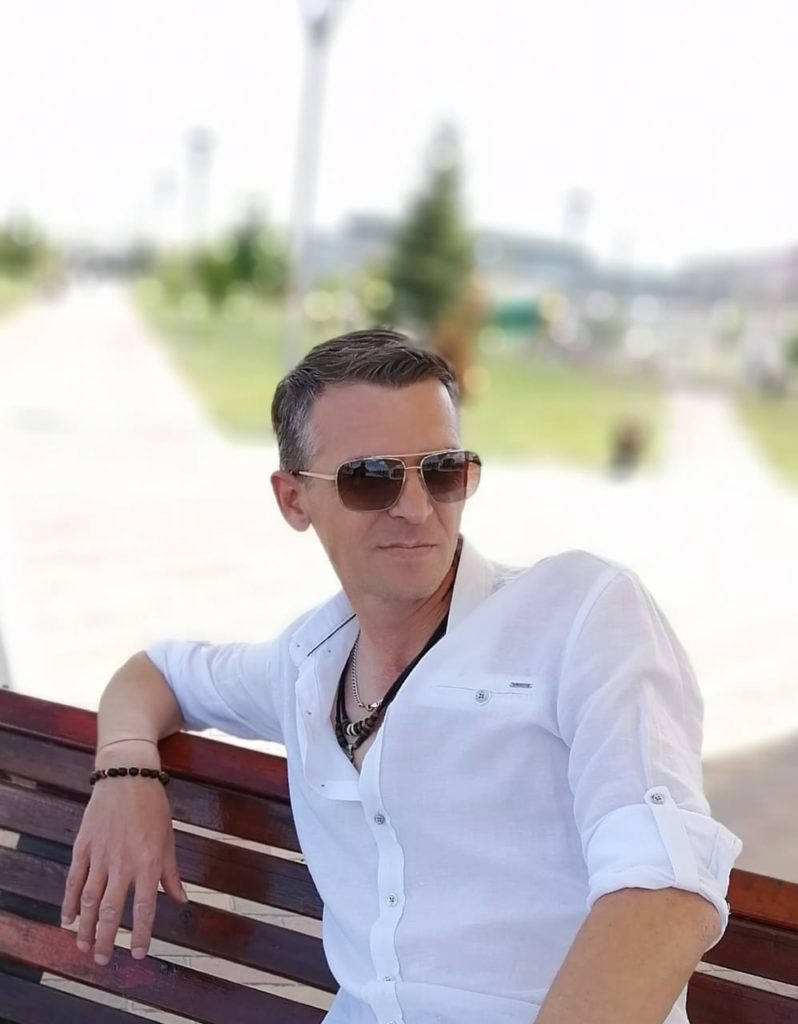
“I FINALLY FOUND AND DEFINED MY OWN STYLE..”
INTERVIEW: SERGEY BABYAKOV
OCA Magazine: Tell us, please, about yourself and your creative activity / work
Sergey Babyakov: I am Sergey Babyakov, an inclusive artist. Was born in 1978 in Taldykorga city. I have been painting for over 20 years. I began to comprehend the basics of art at the age of 11 by enrolling in a children’s art school. Due to illness, the educational process had to be interrupted for two years. But I felt a real craving for art already as an adult, at the age of 20, and continued to independently comprehend the art of painting. I bought various art magazines studying and focusing on such famous artists as Rembrandt, Vangogh, Caravaggio, Leonardo Da Vinci. I tried myself in different directions in search of my style. Painted graphics, watercolor, pastel, also painted in oils in the directions of cubism, realism, impasta. There were also works on biblical themes, but later inspired by the works of Shishkin, I realized that I like to paint landscapes much more.
And in 2020 there was a new round in my work. I switched to a new direction for me – “Abstractionism” and drip painting, almost completely devoting myself to a new direction. Also, in parallel with this, I tried techniques that were interesting to me, such as watercolor, sauce and pastel.
OCA: What is your main achievement in 2021-2022?
SB: Perhaps the main achievement in the period from 2021 to 2022 is joining the Guild and the fact that I finally found and defined my own style for myself.
OCA: What is the main feature that makes you and your art/work unique?
SB: This question is not easy to answer, because I believe that each artist is unique in his own way, and the paintings are valuable in themselves as a layer or segment of a certain time in history during which they were painted. Likewise, my paintings bear a certain imprint of this time. Perhaps there is some similarity with the works of other authors, but at the same time they are not similar and individual in themselves, since abstractionism for me is a double freedom.There are no boundaries in this direction, there are no rules, and I can express on canvas my emotions, feelings, everything that was hidden deep in my soul and now tear it free. I write my works not with a brush, but with my heart, with my inner eye with its own special philosophical meaning.
OCA: Tell us, please, about the events of the Eurasian Creative Guild (London) and projects that you have already taken part in and how does ECG influence your creativity and success in your work?
SB: In December 2020, on the instructions of Marlan Nysanbayev, I joined the Eurasian Creative Guild(London) as the “Ambassador”. There I met other artists and very interesting creative people. And already on February 20, 2021, in the new gallery “ZvagWard” I took part in the exhibition “The World of Colours of Eurasia”.
On March 5, 2021, I exhibited my works at the Central State Museum of Kazakhstan, Almaty at the exhibition “Call of Eternity”.
In August 2021, I became one of the top ten finalists of the “Voices of Friends: poetry & Art” contest, held in Shuchinsk, Borovoe.
In September 2021, was published in the glossy magazine “Bohemia” as one of the best artists of Kazakhstan.
In the fall of 2021, the painting “Fruit of Angels” was included in the first issue of the cultural and tourist guide to the Burabay National Park, published in London “Burabay 4Seasons”. And it all happened thanks to the Guild. Before that, for more than 20 years, I seemed to have sat in a dark hole. And now I participate in exhibitions and competitions.
OCA: What is your motivation and the main aim of your creativity?
SB: For the past two years, my main motivation (and part-time muse) has been my wife, who supports me in every possible way, does not let me give up. She gives me faith in myself and that everything I do is not in vain. I would also like to see a gallery of contemporary art finally appear in my hometown, where creative people could gather, create and exhibit their works. Thus, to help young artists advance and raise the level of culture of the people of the city who will come to the exhibitions.
OCA: What would you wish for the members of the Guild and other creative people, just starting their career?
SB: I would like to wish the members of the Guild and creative people who are just starting their journey not to be afraid to try, not to give up and not to stop halfway. After all, what success is in creativity is when you fall over and over again, but even after falling for the tenth time, you still get up and move on. Believe in yourself and then all must succeed!
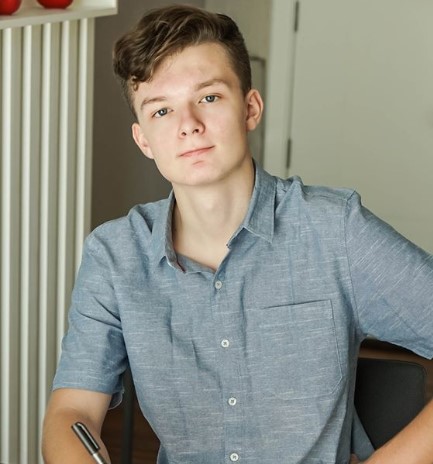
I’VE ALWAYS BEEN INSPIRED TO MAKE MY OWN COMIC BOOK
INTERVIEW: TIMUR AKHMEDJANOV
OCA Magazine: Since we met, it means you are a member of the guild. Why did you decide to join the Guild?
Timur Akhmedjanov: To share and express my creativity and to work with other creative people in both Eurasia and the world as a whole .
OCA: I know that you are from Uzbekistan, what are you doing in London?
TA: Currently I am studying at the ‘London Film Academy’ to pursue a career in creative media and film writing in particular.
OCA: Where did you learn to draw in Uzbekistan, who were your drawing teachers?
TA: During my time in Uzbekistan I drew primarily out of fun and to express the ideas in my head in a visual manner, my family is made up of a number of creative people who have helped me improve my art and motivation to create that art.
OCA: How did you get the idea to write a book for children?
TA: Since discovering various comic book authors I’ve always been inspired to make my own comic book and after translating Kamran Salayev’s ‘Elish and Wicker Tales’ in 2018, I was captivated by the wondrous story and colourful characters and it became a world that I thought would work really well in comic book form.
OCA: To whom did you address your book? What is the focus age of a children group?
TA: Whilst I wasn’t aware of it at the time of me starting to make the comic, ‘Elish and Wicker Tales’ was a book made to help and support children that are having difficulty living with autism. This made my drive to create the comic even greater because I knew that what I was doing was going to help a lot of struggling children around the world as well as generally being an enjoyable read for all kinds of children.
OCA: What is your book about? I know that it’s comics, why did you choose such a manner of telling the story?
TA: The book is about a shy boy going outside of his comfort zone to save the world despite him having nothing to do with the situation, this is the kind of powerful storytelling that I thought was important to tell to the children of today. I personally really enjoy reading comics as well as graphic novel adaptations of various books because it allows the story to be conveyed through a different creative lens and for people to enjoy it in a more expressive and powerful way.
OCA: Who helped you to publish your book and in what languages will it be released?
TA: The project began on a crowdfunding website called ‘Indiegogo’ and with the support of over 200 kind-hearted people we were able to make the project into a reality. Hertfordshire Press, the publishing house, has done a tremendous job of promoting the event online as well as helping me work on the comic from behind the scenes. At launch, the book will be published in English, but very soon we are also planning to release the books in: Russian, Kyrgyz, as well many other languages.
OCA: Will it be released in the state language of Uzbekistan?
TA: Right now we are looking for translators to help us spread the story as much as we can and if the opportunity arises to translate the book into Uzbek, we will certainly take it!
OCA: Will you continue to write books for children with special needs – autistics?
TA: The ‘Elish and the Wicker Tale’ comic book is one part of a long, probably 10 part/issue series, depending on how things go with this book as well as the time I must dedicate to write the book, I’m hoping I can carry on writing the series until it’s eventual conclusion.
OCA: Tell us please about your future plans
TA: My field of aspiration is film but I am interested in lots of aspects of creative media which is very flexible and unpredictable. Right now I’m studying and generally just trying to figure things out until I’m comfortable enough to find a specific passion which I hope to follow in my adult life.
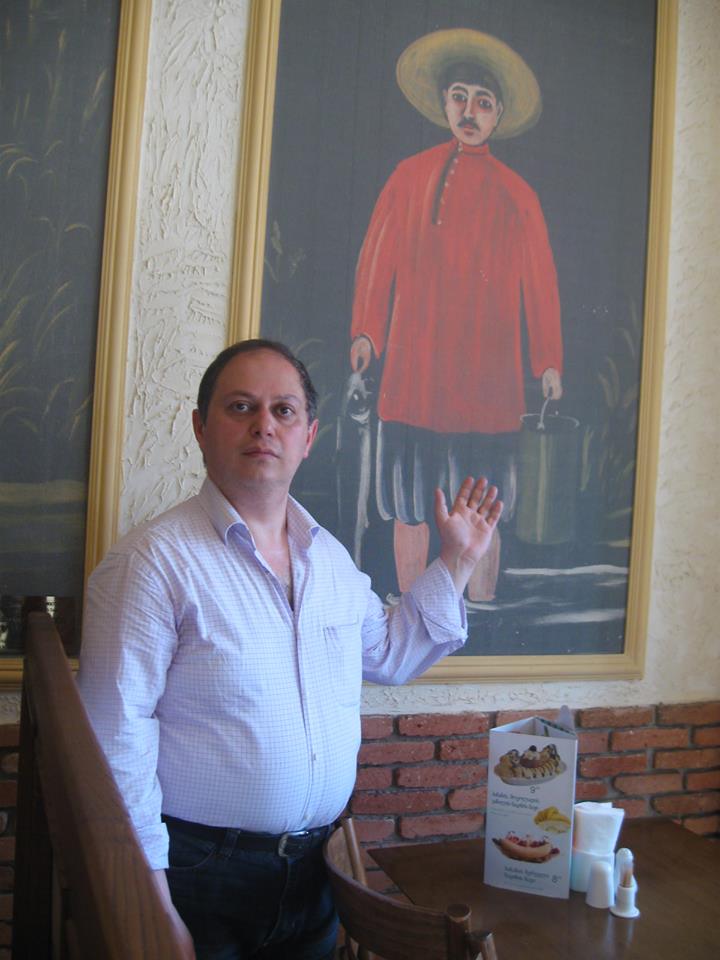
LISTEN TO YOUR INNER VOICE
INTERVIEW: MIKHAIL ANANOV
OCA Magazine: Tell us about yourself and your creative work.
Mikhail Ananov: I’m a poet, a poetry translator, prose writer, playwright, literary critic, journalist, publicist, theorist, sonetologist and I am also engaged in mathematical modeling in the field of poetic art.
I’m a member of several creative unions, including international ones: Union of Writers of Georgia, Pushkin Society of Russian-Language Writers “Arion”, the Vernatun Union of Armenian Writers of Georgia, international club of science fiction of Crimea “Fandango”. I’m also a member of the Advisory Board of the Eurasian Creative Guild. I’m one of the founders and a manager of a literary theatre “Arion”.
I’m a author of poetry collections “Above the Abyss of the Worlds”, “The Ghosts of Eldorado”, “Selenastra” and two scientific works in the field of literature theory: “The Cryptography of the Poetic Form” and “The Atomic Model of the Sound Order”. I am also a translator of collections of Armenian poets Mikael Akhtyan, Stanislav Melkonyan, Anaida Bostanjan and Okro Okroyan.
My poems were translated into Armenian and English.
I am Diploma-recipient of the V International Forum “Golden Knight”, in 2014, a winner of the VIII International Festival in Brussels held by the Eurasian Creative Guild in Brussels in 2019.
I won the Order of St. Elijah Chavchavadze in 2017, the Grand Prix of the Lermontov competition in honor of his 200th anniversary in 2013, the poetry competition of science fiction writers in Feodosia in 2016.
OCA: What does “Eurasianism” mean to you?
MA: In my own understanding, it is a convergence of the two cultures of Europe and Asia which blurs the border between us, as representatives of two different peoples in our views and in spirit. In the past this border was obvious, but things are changing over time and our relationships are becoming much better and making it worth presenting ourselves in the new world. And I should say that the Guild plays an important role in it.
OCA: Name your favourite artists
MA: Among classic writers it is of course Alexander Pushkin who I treat as my ‘teacher’. He’s a great personality and I’m striving to reach him like striving to reach the sun. Another my ‘teacher’ – Edgar Poe, a master of the psychology genre. I recommend all artists to read his book called ‘Philosophy of Art’ in which he step by step and in detail describes the process of creating a masterpiece.
Indeed, I also admire artists from other spheres: painting, music, theatre, film. My favourite artists are also Rubens, Mozart, Shakespeare, Coppola
OCA: Have you ever taken part in the events organised by the Eurasian Creative Guild (London)?
MA: Yes. I took a part-time participation in the VIII International Festival of Eurasian Creative Guild held in Brussels where I presented my speech to the participants. I also participated in a contest of small prose and even became a diploma winner in the nomination “Generals of the world for peace” for the story “A very interesting guy”, dedicated to Vladimir Vysotsky.
I write tales and plays for children of different ages. In the 30th anniversary issue of our “On the Hills of Georgia” almanac my play was published in “The New Little Humpbacked Horse” poems. There is a story behind it: the director of the theatre named after Griboedov – Nikolai Sventitski, whose dream was to bring together all the characters of Russian tales, asked me in person to write it.
OCA: What does Eurasian Creative Guild mean to you?
MA: It means a lot to me. Over the past few years, not only the number of members in the Guild has risen, but also the number of countries that represent it, the number of projects, events and so on. In addition, it allows an absentee participation in festivals which is some kind of bridge between us that strengthens our relationship and facilitates creative approaches to solve problems. We live in worrying times and I have no doubts that our meetings help to bring more kindness and warmth to our world.
OCA: Is there any personal project that you would like to tell us about?
MA: I have quite a big project: I want to found a rock band which would not only perform its own songs but also translations of famous English songs. First steps are already made. Besides, I’m translating rock poetry including songs of Deep Purple and Animals. I told Marat Akhmejanov about my plans and he promised to introduce me to the producers of Deep Purple. I also talked about this with John Farndon who got really interested in it.
OCA: Tell us about creative societies in Tbilisi.
MA: The first society represents Russian-speaking writers led by Nika Dzhindzharadze who gathers creative people in the House of the Caucasus and organizes musical poetic evening events. The guests are people from many countries.
I want to talk about ‘Arion’ briefly. Apart from theatrical productions, there are also various literary contests, quizzes, events and celebrations. At one of such events, I met Marat Akhmejanov and this motivated me to join the Guild.
The second society is Tbilisi Armenians which has quite a wide audience. Their cultural centres are Hayartun and the House of Hovhannes Tumanyan where they organise all kinds of events.
The third society is Georgian writers and cultural workers. They have many cultural centres, including the Writers Union, and I often join their events as a poet and a translator of Georgian poetry. My daughter Anna joins me in the events, performances, theatrical productions, melodeclamations, musical, poetic and creative evenings.
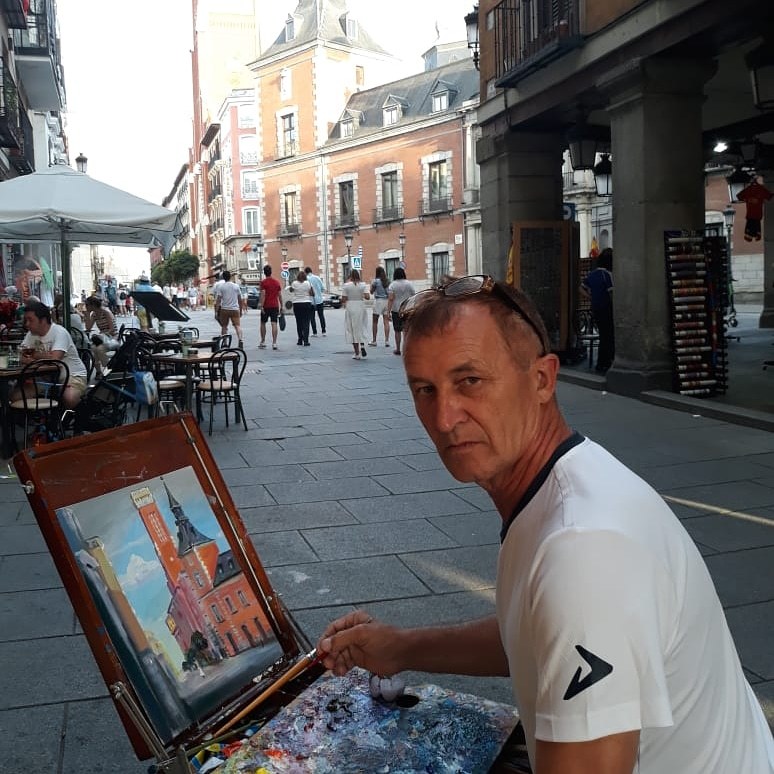
THE ART OF PAINTING IS THE LANGUAGE OF FEELINGS
INTERVIEW: RAVIL ABDULOV
OCA Magazine: Tell us, please, about yourself and your creative activity / work
Ravil Abdulov: My path of constant search for myself is a deep study of the world experience of art, which I pass through the prism of my consciousness, analyze, modify, transform my vision. In 1991 I was elected to the Union of Artists of the USSR, which was a big success for that time. In 2011, at the republican art project “The Art of Independence”, I took first place in the southern region.
Recently, a unique platform has opened on Binance NFT. My paintings are sold on the Binance NFT World_Art platform.
OCA: How did you choose your path and who is your role model in the creative space or life?
RA: Actually there are loads of examples of the artists of the era of the titans of the Renaissance and Paul Cezanne, and Picasso. I was brought up by the classics, but this changes over time and the philosophical approach to painting begins to prevail.
OCA: What is your main achievement in 2021-2022?
RA: My exhibition in the center of Europe. An exhibition was curated by the Eurasian Creative Guild (London) in Belgium in Brussels.
OCA: What is the main feature that makes you and your art/work unique?
RA: This is the philosophy hidden in my paintings, it is both in the search for composition and in connection with unity with nature.
OCA: Tell us, please, about the events of the Eurasian Creative Guild (London) and projects that you have already taken part in and how does ECG influence your creativity and success in your work?
RA: Thanks to the Eurasian Creative Guild (London), I feel a deep connection with world culture, where the value of the artist’s personality is a priority in life. I feel an inextricable connection with world culture.
OCA: What is your motivation and the main aim of your creativity?
RA: The Art of painting does not need words, it is the language of feelings, it is transmitted through color, composition, line, spot, you have to be open to the Universe and it will answer the same.
OCA: What would you wish for the members of the Guild and other creative people, just starting their career?
RA: Creativity should not be closed in itself. My desire is to actively participate in the activities of the Guild, and it will answer you in the same way, creativity will enrich you all.

From May 6 to10, 2022, the Second International “Voices of Friends: Poetry & Art” Festival was held in the resort area of the Burabay National Park (Kazakhstan).
The festival is organized by the British non-profit organization Eurasian Creative Guild (London) with the support of the Rixos Borovoe Hotel, Akim of the Akmola region, Akim of the Burabay district, Akim of the village of Burabay and the Higher Pedagogical College in the city of Schuchinsk.
The long-awaited event brought together more than 300 poets, prose writers, artists, musicians and filmmakers from 18 countries this year: Kyrgyzstan, Great Britain, Ireland, Lithuania, Israel, Kazakhstan, Russia, Canada, Finland, Uzbekistan, USA, Georgia, Bulgaria, Azerbaijan, Armenia , Qatar, Ukraine and Belarus.
An informal start to the festival was already given on May 4 in Nur-Sultan. For everyone, a meeting was held with Guild Chairman Gareth Stamp and Vice Chairman Mark (Marat) Akhmedjanov. A warm meeting of like-minded people took place in the hospitable space of the ARNAU Art and Education Center. It became a bright starting point for wonderful events, where not only the participants of the festival, but also members of the Guild from Nur-Sultan got the opportunity to personally introduce themselves to Gareth, tell about themselves and get to know him better.
The Festival continued on May 5 in the city of Shchuchinsk, where the creative residence “ECG HORIZONS BURABAY” is located. There was an Plein air, which was attended by a delegation of students from the creative studio “Granat” from Kokshetau, as well as its creator and leader Anar Sattybayeva. Students, together with Gareth Stump and the Guild volunteers, went to sketch the SHCHIPT microdistrict, covering not only the beautiful landscape, but also the amazing landmark Horse Yard. The opportunity to draw horses, donkeys and even a camel from life caused great delight among young artists.
The festival itself officially opened on May 6 at the Rixos Borovoe hotel. The program started with Elena Bezrukova and Marina Alyasova, representing the executive committee of the ECG Expert Council (London) on Business Coaching. They held a master class “Formation of the emotional climate outside and inside”. This master class allowed the participants to quickly recharge their batteries and tune in the right way.
The next event that captured the attention of festival participants and guests from different parts of the Akmola region, as well as guests of the five-star Rixos Borovoe hotel, was an exhibition of visual arts, turning the hotel lobby into an international art gallery. Members of the Guild – artists from the USA and Kazakhstan – Yulia Ward, Daria Zalesskaya, Elena Bezrukova, Yusuf Krykbesov, Milana Yusufova, Maria Luzina, Elena Tsygvintseva, Elena Serebryakova and Nelli Filippova presented their works at the exhibition of visual arts. It is gratifying to note that during the festival three works by Akmola artists were purchased for private collections and sent to Bulgaria, Ireland and Wales.
The pearl of the program of the first day was the Opening Ceremony. The festival was opened with welcome words from the British Ambassador to Kazakhstan, Kathy Leach, to the guests
and organizers of the festival. The Ambassador emphasized the importance of this event for building international cultural relations. With a welcoming speech performed Akim of the region Marzhikpayev Ermek Boronbayevich, Deputy Head of the State Institution “Department of Entrepreneurship and Tourism of the Akmola Region” Andrey Ivanovich Podgursky and the regional Akimat was represented by the Deputy Akim of the Burabay District, Kuzembaeva Anara Tleuzhanovna. Also, Torgyn Abdykaimova, Member of the Council of Guardians of the ECG (London), addressed the participants of the festival. During the ceremony, each of the festival participants shared their wishes, filling the atmosphere with a festive mood. The solemn part of the evening continued with the screening of the films as part of the pre-launch of the Burabay International Short Film Festival. The audience saw the films “Ander” (dir. – Alina Mustafina, Kazakhstan/Qatar) and “The last one” (dir. – Fariz Akhmadov, Azerbaijan) for the first time.
Later the festival participants from the Rixos Borovoe hotel moved to the creative residence of ECG HORIZONS BURABAY, where the ceremony of raising the flags of the countries and cities of the festival participants took place. The flags of the states participating in the festival were solemnly presented at the ceremony. The main idea of the ceremony was to show that creativity has no geographical and political boundaries, and the Guild unites cultural figures from all over the world. A worthy end to the first day was the opening of the Wall of Memory in the residence – a memorial in which the first two commemorative plaques took their place. The first one was installed by Yulia Ward in honor of Andrew Wesley Ward (USA), a collector, traveler and entrepreneur, who greatly influenced Yulia’s development as a creative person. The second plaque was installed in memory of Maria Shevel (Ukraine), whose name was given to the award in the framework of the Open Eurasia contest for the best work for children. The memorial is designed to preserve the memory of the Guild members who have gone to a better world, as well as people significant to them and the Guild.
During the celebration, Nargiza Karasartova and Bubuira Bektenova awarded the vice-chairman of the guild, Marat Akhmedjanov, with a medal from the Democratic Committee of Women of Kyrgyzstan public association. The participants noted his invaluable contribution to supporting the creativity of the beautiful half of humanity.
The second day of the festival began with bright colors and precise lines of an artistic master class from Yusuf Krykbesov, Ambassador of ECG (London) in Shchuchinsk. Together with his students, Yusuf Zhagiparovich helped the festival participants, even those who were far from fine art, to reveal their creative nature with the help of an intuitive gesture. The result was a collective work, which the craftsmen donated to the ECG Horizons Burabay residence. Both the creators themselves and all the participants of the festival left their autographs on the canvas.
At the invitation of the Akimat of the Akmola region, the festival participants went to the city of Kokshetau, where a series of events took place at the site of the Museum of Local Tradition and History, each of which deserves special attention.
The program was opened by the welcoming speech of the department of culture of the Akmola region Sabitova Aigul Baubekovna. It reinforced the hope for the development of such cultural and event projects as festivals. Also, the deputy director of the museum Dyusenbaeva Anar Amantaevna greeted the guests.
The presentation of the phenomena associated with their work has become a sensory platform not only for telling about themselves, but also for discovering the intercultural ties of the Eurasian space from China to Ireland. For example, Aliya Akhetova, the first participant in the history of the festival from Kokshetau, a member of the Union of Journalists of the Republic of Kazakhstan, presented a book dedicated to creative people born in Akmola land, highlighting Bulat Mekebaev, an artist well known to the Guild, originally from Kokshetau, the events took place in many European countries. Yulia Ward and Andrey Grodzinsky (winner of the Open Eurasia – 2021 contest in the “Prose” category) presented a view of their master class on the work of an illustrator with an order for the cover of the author’s book – some difficulties had to be faced, what questions needed it was necessary to set it to another friend so that the cover turned out to be bright and emotional, etc. Dilara Lindsay, Marina Vernalis, Dana Zhateeva, Daria Zalesskaya, Bubuira Bektenova, Nargiza Karasartova, Maria Muchinskaya (winner of the Open Eurasia – 2021 contest in the Poetry category), Elena Bezrukova, Marina Alyasova and Galina Primorskaya shared their creativity and ideas about modern culture . Of particular interest was the presentation by Bruce Gaston, a member of the Guild from Ireland. Bruce spoke about his suspicion of the development of the Celtic culture. The highlight of the presentation part was the joint musical performance of Bruce and Gareth.
The film screening also caused a storm of emotions and discussion. The films “Honorable Lviv Lady” (dir. – Natalia Pasenitska, Ukraine) and “On the Silk Road” (dir. – Sherzod Nazarov, Uzbekistan) were presented to the audience. These films, dedicated to the issues of happiness, family values and love, have become a great topic for discussion.
The third festival day – May 8 – was opened by a series of video messages from remote participants of the festival. Remarkable poets, writers and artists Polina Lakhtina, Alexander Binshtein, Raisa Melnikova, Darien Roitman, Victoria Levin, Marlan Nysanbaev, Alexander Kazarnovsky, Marlan Nysanbaev and Mikhail Ananov, Elena Bosler-Guseva, as well as chairmen of the Guild of different years David Parry and John Farndon shared with their creativity, good mood and wishes for a wonderful festival. Online performances and live presentations, as always, have become an integral part of the evaluation of the participants in the “Voices of Friends – 2022” poetry and art contest. It was thanks to the performances that the rating table of the contest acquired its final form.
On the same day, the Blue Diamonds of Eurasia Assembly was held: who creates the future classics today?” with online and offline members of the OCA People 2020-2022 special editions. At the Assembly, a presentation of the numbers of the new issue of 2022 was held, the main character of which was the Irish poet and publicist Bruce Gaston and 39 other prominent members of the guild from different countries.
Also on this day, a discussion film screening took place. The audience enjoyed such films as “Catherine II. The Fall of the Great” (dir. – Andrey Archkov, Russia), “Coincidence” (dir. – Egor Lymarev, Kazakhstan), “Tomorrow” (dir. – Nikita Makarenko, Uzbekistan), “Steps” (dir. – Zhanaiym Ashimova, Kyrgyzstan ) and the animated film “Lullaby” (dir. – Dilshat Rakhmatullin, Kazakhstan).
The culmination of the evening was a musical Gala Concert in the recreation center “Okzhetpes” which was a real treat. Akim of Burabay village – Dzhalmukanov Sabyr Alimzhanovich expressed his warm wishes to the guests, and Karsybayeva Dina Sadvakasovna, Head of the State Institution “Department of Culture and Development of Languages of Burabay District” presented the Guild with a memorable gift. Also, the head of the Palace of Culture Nurumova Zhumabike Daulenovna addressed the guests with words of gratitude. The teams of the LEVEL UP Center for Creativity, the Chechen-Ingush Ensemble Vainakh, the Folk Ensemble Rauan and the reader Maria Tkachenko, took the stage, and the Okzhetpes Palace of Culture presented the Dombrist Ensemble Ozhetpes Sazy, Omirzak Kurbanov, an instrumental quintet of folklore ensemble ” Kokshe auenderi”, an exemplary dance group “Viva dance”, Evelina Krasyuk and the dance group “Fidgets”. The official participants of the festival – Helen Coro, Marina Vernalis, Tatyana Mendybayeva, Gareth Stamp, Bruce Gaston, Maria Muchinskaya, Andrey Grodzinsky – also presented wonderful poetic and musical performances.
On May 9, writers and poets enjoyed the beauties of the Burabay region, starting with participation in the open air and continuing with excursions to the iconic places of the region.
But the real fireworks of emotions and colors was the Awarding Ceremony of the “Voices of Friends: Poetry & Art” contest and the closing of the festival.
The golden ten in the Poetry category included:
Apollonia Delos (Russia)
Alexander Binstein (Israel)
Alexander Kazarnovsky (Israel)
Victoria Levin (Israel)
Dilara Lindsay (Great Britain)
Marina Alyassova (Kazakhstan)
Marina Vernalis (Russia)
Maria Muchinskaya (Belarus)
Mikhail Ananov (Georgia)
Poetry category winners:
1st place – Marina Vernalis (Russia)
2nd place – Apollonia Delom (Russia) and Marina Alyassova (Kazakhstan)
3rd place – Alexander Kazarnovsky (Israel)
Painting category winners:
1st place – Marina Vernalis (Russia)
2nd place – Marilu Lis (Kazakhstan)
3rd place – Sergey Babyakov (Kazakhstan)
Illustration category winners:
1st place – Daria Zalesskaya – RATSEL ART (Kazakhstan)
2nd place – Tatyana Mendybayeva (Kazakhstan)
3rd place – Elena Shilova (Crimea)
Winners in the photography category:
1st place – Maria Priznyakova (Russia)
2nd place – Helen Coro (Russia)
3rd place – Irina Smirnova (Kazakhstan)
Also, Bakhyt Rustemov, the famous writer and head of the International Union of People’s Diplomacy, awarded Gareth Stamp, chairman of the Guild, with an honorary medal.
For all the participants of the festival was a presentation of the new issue of the magazine “Bogema” by a member of the Guild in Shchuchinsk, Pavel Kosovich – he was able to prepare an issue dedicated to the festival for the closing ceremony! This issue has become an excellent souvenir for all those present.
The final day of the festival, May 10, was held at the Higher Pedagogical College (Shchuchinsk). The main event of this day was the acquaintance of two wonderful creative communities – representatives of culture and art of the Burabay region and international participants of the festival. Thus, two associations – “Art-Burabay” and “Lira” – were represented by the “owners” of the region, and the guests shared their creativity. Yuliya Vard also made a presentation on professional development opportunities in the creative industries, and Taina Kaunis, Executive Director of the Guild, shared the history of the creation of the ECG Horizons Burabay residence and plans for its development.
A special place in the program of the final day was the screening of the film “Nunik” (dir. – Elena Arshakyan, Armenia). He deeply touched the hearts of those present. It is worth noting that all films within the framework of the festival were shown as a pre-premiere of the Eurasian Film Festival ECG Film Festival, which has been held annually in London since 2019.
At the end, there was a sincere farewell party of the guild members at the ECG Horizons Burabay residence, where along with the venerable participants of the festival, volunteers of the festival shared their creativity: Alena Vnuchkova, Kirill Komaristy, Nina Fedorova, Louise Nagoeva, Alina Shaymuratova, Sanjar Dyusenov, Adil Kabidenov, Daria Chalenko.
An extensive online program was organized for festival participants who could not attend the festival in person.
With the support of the ECG Expert Council on Poetry, a Zoom-conference was held on the topic “Nature. Painting. Poetry”. Under the moderation of Council Chairman Mikhail Ananov, the participants discussed such an important issue as a source of inspiration hidden in nature and helping artists and writers to create their immortal masterpieces for thousands of years. “The World of Children’s Literature” – Zoom-conference organized by the Expert Council for Translations represented by Chairperson Elena Bosler-Guseva (Kyrgyzstan) and Vice-Chairman Alina Moseykina (Cyprus) – raised a whole range of complex tasks associated with the creation of a quality children’s book, especially if this is a translated edition. After all, it is children’s literature that is by far the most complex and most demanded product today.The traditional poetic marathon “Voices of Eurasia” was also held in an online format, designed to become a platform for the performances of those members of the Guild who, for various reasons, were no able to visit the festival in person! The main online event was a conference dedicated to the special issue of OCA magazine – OCA PEOPLE, on the theme “Blue Diamonds of Eurasia. Who creates modern classics today?”, combined with the in-person part of the program.
Contacts:
ru.thevoicesoffriends.com/vof
www.rus.eurasiancreativeguild.uk
Reference:
Eurasian Creative Guild (London) — The Eurasian Creative Guild unites hundreds of cultural figures from all over the world: writers, musicians, dancers, illustrators, graphic designers, sculptors, poets, as well as anyone who considers himself a creative person.
OCA Magazine —quarterly and independent magazine published in London since 2009 by Silk Road Media Group with the support of the Eurasian Creative Guild (London). It is aimed at the English-speaking audience and those who are interested in or live in the countries of the former USSR and the Eurasian region. The magazine covers the events and prominent personalities of the Eurasian region (past and present), as well as successful projects of international cooperation in Eurasia.
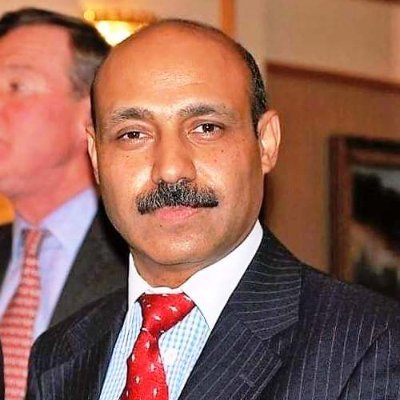
Dr Shahid Qureshi
4 October 1965 – 10 February 2022
Open Central Asia Magazine was deeply saddened to hear of the sudden demise of one of our friends and close supporters, Dr Shahid Qureshi, on 10th February 2022 at the age of 56.
Dr Shahid Qureshi was a senior analyst with BBC and chief editor of The London Post. He wrote on security, terrorism and foreign policy. During his journalism career, he appeared as an analyst on Al-Jazeera, Press TV, MBC, Kazak TV (Kazakhstan), LBC Radio London. He was also international election observer for Azerbaijan 2020, April 2018, Kazakhstan 2015, 2016, 2019 and Pakistan 2002.
He wrote a famous book “War on Terror and Siege of Pakistan” published in 2009. At Government College Lahore he wrote his MA thesis on ‘Political Thought of Imam Khomeini’ and visited Tehran University. He was PhD in ‘Political Psychology’ and studied Law at a British University. He also spoke at Cambridge University and was a visiting Professor at Hebe University in China. He devoted his life not only to international journalism, but also to justice and human rights.
Our most sincere sympathies and condolences go to his family and friends who have lost a remarkable and tremendous personality.
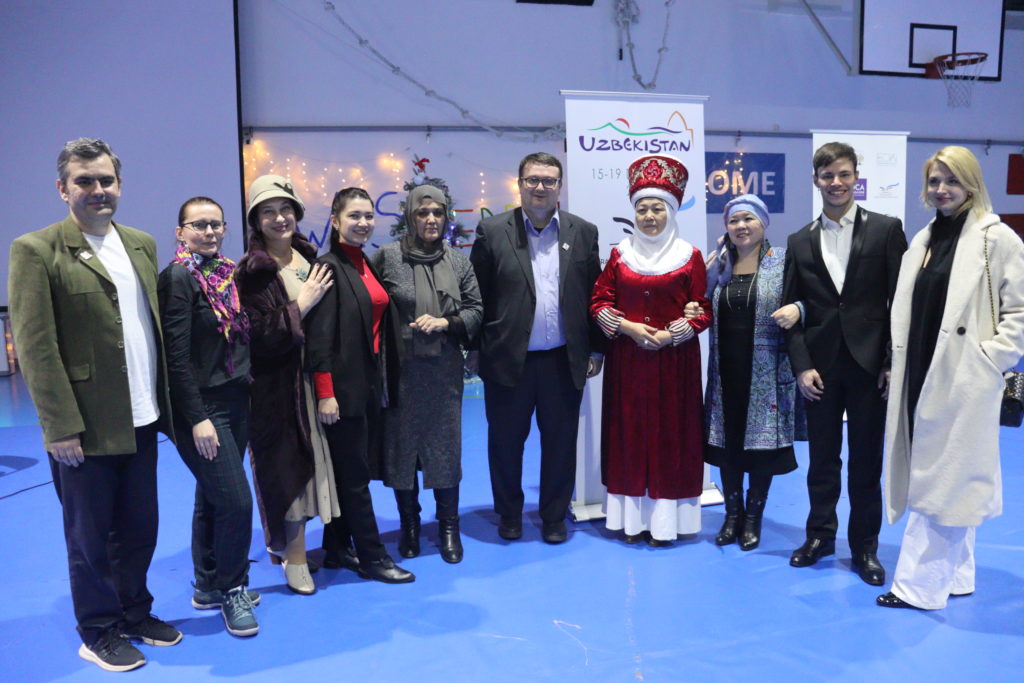
Success at the Tenth Open Eurasia Literary Festival & Book Forum
From 15 – 19 December 2021, the international Open Eurasian Literary Festival & Book Forum (OEBF) was held in Uzbekistan for the first time, bringing together participants from 15 countries at venues of Tashkent and Samarkand.
The Open Eurasian Literature Festival & Book Forum (OEBF), organised by the Eurasian Creative Guild (London) in cooperation with the British publishing house, Hertfordshire Press, has become a meeting place for writers, poets, artists and other representatives of various fields of art for the tenth time. This year marks 10 years since the founding of the Open Eurasian Literary Festival & Book Forum, and for the same period it serves as a platform for building an intercultural dialogue between East and West, where creative people, cultural, educational and charitable organisations can exchange experiences. The festival has already been held in Kyrgyzstan, Kazakhstan, Thailand, Sweden, Belgium and the UK, and for the first time in its history, this year it was held in Uzbekistan. More than 130 participants (online and face-to-face) from 15 countries of the world held 25 events together in sunny Tashkent and Samarkand over 5 days.
This annual event has become a symbol of the victory of art and the desire to create over the fear and confusion of the pandemic. The festival began with a special closed meeting of festival participants. Guests from countries including Kazakhstan, Belarus, Kyrgyzstan, Great Britain and Poland met in the picturesque gallery Human House – the official partner of the festival in Tashkent – to get acquainted with the festival program in more detail.
The highlight of the evening was the Christmas market, which participants visited at the Tashkent International School (TIS), a partner of the festival. The concert prepared by the schoolchildren, the fair and the Christmas atmosphere were an excellent preface for an informal get together among friends, old and new. There were warm and sincere conversations with hot tea and traditional Uzbek food. Each guest was given the opportunity to explain a little bit about themselves and present their work.
The working program of the second day, December 16, was held at the site of the festival partner Lotte City Hotel Tashkent Palace. An important event on the second day of the festival, and an excellent start to the program, was the traditional annual presentation of new books published by Hertfordshire Press in 2021 and works by the winners of the “Open Eurasia” contest from 2020. During the presentation, participants and guests were greeted by the Ambassador Extraordinary and Plenipotentiary of the Kyrgyz Republic to Uzbekistan, Ibragim Yunusov. The Ambassador attended this event to support the OEBF-2014 laureate Bubaysha Arstanbekova (Kyrgyzstan) and to emphasise the importance of publishing her book “Queen Kurmanjan of the mountains” about the legendary woman leader of the Kokand Khanate, Kurmanjan-datka. OEBF-2019 laureate Mikhail Kunitsky (Belarus) also presented his new book, published in London. His children’s book “Traveling on Four Feet” received very warm reviews from the participants and guests of the festival.
A young director and a student of the London Film Academy (LFA), Timur Akhmedjanov (Great Britain), presented the Russian-language edition of his comic book “Elish and the Wicker Tale“, based on the book by Azerbaijani writer Kamran Salayev, winner of the 2018 OEBF Maria Shevel Prize. This charity project, created to help children with autism, continues to be in demand and is spreading in other languages of the world.
Hertfordshire Press manager Aknur Nurtaza also presented a range of literary novelties.
A highlight of the second day was the creative performance of a special guest – a famous writer and “mascot” of the festival from the very first year – Janusz Leon Wisniewski (Poland). The author of a dozen bestsellers with a total circulation of more than 2,000,000 copies (and this is only in Russia) shared his invaluable experience and personal story of how a mature university professor got on the pages of Playboy and became one of the most widely read authors in Eastern Europe.
An incredible master class titled, “How to allow yourself to create and help people see the results of their creativity?” was given Elena Bezrukova, the Ambassador of ECG (London) in Kazakhstan, and Chairperson of the ECG Expert Council (London) for Business Coaching. All participants were placed in unusual conditions, from where everyone had to find a way out. The participants of the master class noted the incredible benefits and great pleasure derived from this process.
At the end of the working program of the 2nd day of the festival, a discussion was held on the topic “How to make the world a better place?” Executive Director of ECG (London) Tayna Kaunis and British publisher Marat (Mark) Akhmedjanov shared their successful experience in conducting crowdfunding campaigns related to creative and social projects. A separate topic was the presentation of development programs for the creative residence ECG HORIZONS Burabay, which began its work on the shore of Lake Shortankul (Shchuchye) of the Burabay (Borovoe) National Park in Northern Kazakhstan.
Despite such a rich program, all the guests were looking forward to the official Opening Ceremony of the festival, which took place on the evening of the same day, December 16, at the Tashkent International School. The floor for the opening ceremony was given to the Vice-Chairman of ECG (London) Marat Akhmedjanov, who recounted the history of the creation and development of the festival, and also emphasised the importance of such events for building cultural bridges between countries. Denise Woddingham, Director of the British Council for Culture in Uzbekistan, also welcomed participants. Then the guests were greeted by TIS Director Bill Kralovets and the festival’s guest of honour Janusz Leon Wisniewski. Of note was the support of the ceremony by the partners of the festival – the Sharaf Rashidov Foundation represented by chairman of the board Yakubov Iskander Sandzharovich and the chief consultant Muminov Kamal Musaevich. Within the framework of the opening ceremony, all official participants also spoke with a welcoming speech, presenting themselves and their projects. The other guests of honour were representatives of the Embassies of Great Britain, Poland and Kyrgyzstan, Webster University, Sulzhina Irina Vladimirovna, co-ordinator of educational programs of the Rossotrudnichestvo office in the Republic of Uzbekistan, head of the Polish cultural centre “Swietlica Polska” Oleg Skuridin, and others.
A festive concert was also held, which was opened by a young student of TIS, and laureate of international competitions, Sophie Singh Gill. Other wonderful performers and creative groups of Tashkent also took part in the concert: the State Conservatory of Uzbekistan (Rakhmonov Asatilla, Toshpulatov Sanobar, Makhmudjonova Maftuna, Kamolova Khulkaroi, Khabibullaeva Sevara), the Institute of Uzbek National Musical Art named after Yunus Rajabiibo Sabirova Iroda, Sodirboeva Nilufar, Azamova Dilnavoz, Turgunova Gulsanam), Polish Cultural Center “Swietlica Polska” (Denis Sotnikov).
Festival partner, the Courtyard by Marriott hotel (Tashkent), became the key venue for the third festival day on December 17. The working program was opened by the presentation of film projects by the Scientific Medical Society (NMO Kazakhstan), during which colleagues spoke about their unique experience of art therapy and creative projects designed to help children with oncology and their loved ones. It was also explained why the research medical organisation find it so important to be a corporate member of ECG (London) and what opportunities this opens up for children and employees.
The highlight of the Tashkent program was a discussion and the press-conference on the topic “Cultural bridges”, where the main speakers were Marat Akhmedjanov, Elena Bosler-Guseva, Elena Bezrukova, Janush Wisniewski and Taina Kaunis. Important issues such as the reform of the Uzbek language and a decrease in the level of reading in different countries among readers under 35 years old were raised.
The Tashkent Film School for Youth, “Focus School”, invited Timur Akhmedjanov, originally a native of the city of Chirchik (Uzbekistan), from Great Britain, to share his experience of entering and studying at the prestigious London Film Academy.
At the end of the working program of the third day a creative lecture on the fine arts and a presentation of paintings by Yulia Ward and Elena Bezrukova was held. This creative event took place in the Human House gallery and gave the participants and guests of the festival an immersion in the creative process of the artist.
Majestic Samarkand received festival delegates between 18-19 December with an almost summer warmth and incredible architecture. The luxurious Bek Samarkand hotel, a partner of the festival, became the place where the most sacred part of the festival took place. The “Voices of Eurasia” marathon, traditionally held within the OEBF every year, brought together festival participants and allowed them to read their works and explain a little about themselves.
The annual reporting meeting of the executive committee of the Eurasian Creative Guild (London) was the traditional summing up of the year, as well as the announcement of the results of elections to the main bodies of the Guild for 2022.
According to the results of electronic voting, Gareth Stamp, UK, was elected as the Chairman of ECG (London) for 2022.
Based on the results of electronic voting and the decision of the ECG (London) Executive Committee, the following composition of the Advisory Board was elected:
Elena Aslanyan, Armenia
Aldona Grupas, UK
Anatoly Lobov, Georgia
Victoria Levin, Israel
Warren Wills, Australia
Elena Bezrukova, Kazakhstan
Azim Akmatov, Kyrgyzstan
Suria Esentaeva, Kazakhstan
Bakhtygul Makhanbetova, Kazakhstan
Anastasia Kuzmicheva, Belarus
Alina Moseikina, Cyprus
Marina Podlesnaya, Moldova
Jonathan Campion, UK
Oksana Zhukova, Crimea
Natalie Bays, UK
Election of the Executive Committees of the Expert Councils for 2022:
Poetry Expert Council
Chairman – Mikhail Ananov
Executive Committee – Victoria Levin, Sagyn Berkinalieva
Expert Council on Fiction
Chairman – Elena Aslanyan
Executive Committee – Aldona Groupas, Zhanna Shvydkaya
Visual Arts Expert Council
Chairman – Ekaterina Zgurskaya
Executive Committee – Yusuf Krykbesov, Larisa Pak
Expert Council on Translation
Chairman – Elena Bosler-Guseva
Executive Committee – Alina Moseikina, Jonathan Campion
Expert Council for Business Coaching
Chairman – Elena Bezrukova
Executive Committee – Marina Alyassova, Marat Akhmedjanov
Film Industry Expert Council
Chairman – Michael Sagatis
Executive Committee – Marat Fayzullin, Maksud Sarsembaev
Expert Council on Journalism
Chairman – Oksana Zhukova
Executive Committee – Murat Uali, Pavel Kosovchich
Independent Expert Council
Chairman – John Farndon
Executive Committee – Carolyn Walton, Nick Rowan
The evening ended with an enchanting Awards Ceremony of the winners of the Open Eurasia international literary contest. In 2021, more than 1000 applications were submitted for the contest by participants from 53 countries of the world. As is tradition, the ceremony was chaired by Vice-Chairman of ECG (London), Marat Akhmedjanov.
The winners of the Open Eurasia 2021 contest in the “Prose” category:
1st place: Andrey Grodzinsky (Uzbekistan) – $ 7000 grant from Hertfordshire Press
2nd place: Alla Krechmer (Israel) and Yulia Ganetskaya (Japan)
3rd place: Elena Korolyeva (Russia) and Tatiana Zhukova (Ukraine)
The diploma for the first place was awarded to Andrei Grodzinsky by Janusz Wisniewski. He wished the author many future creative successes.
The winners of the Open Eurasia-2021 competition in the “Minor Prose” category:
The Kazat Akmatov Prize
1st place: Inna Chaika (Italy) – Kazat Akmatov Prize ($ 3.000)
2nd place: Zulkhumar Kendjayeva (Uzbekistan)
3rd place: Michael Krechmer (Israel) and Nadezhda Voronova (Russia)
The Kazat Akmatov Prize was solemnly presented by his son Azim Akmatov. He shared the history of the establishment of the award, as well as the important role that Kazat Akmatov played in the life of the Guild. The diploma for the second place was presented by Elena Bezrukova.
Winners of the Open Eurasia-2021 contest in the ”Poetry” category:
1st place: Maria Muchinskaya (Belarus) – I. Artem Dudnikov Prize ($ 1,000)
2nd place: Leon Nadine (Great Britain)
3rd place: Jose Luque Montero (Spain) and Alexander Kazarnovsky (Israel)
The award was established by the Guild Executive Committee in honor of the young and talented poet Artyom Dudnikov, Guild Ambassador in Moscow, a native of Uzbekistan, who died from COVID-19 in the spring of 2021. The prize was presented by Marat Akhmedjanov.
The winners of the Open Eurasia-2021 competition in the “Translation” category:
1st place: Shakhrizat (Kazakhstan) – “BelRos” Prize from Oleg Nesterkov ($ 1,000)
2nd place: Elena Bosler – Guseva (Kyrgyzstan)
3rd place: Perisat Abdalieva (Kyrgyzstan)
The prize was presented by the translator and longtime member of the Guild Dana Jeteyeva.
The winners of the Open Eurasia-2021 competition in the “Illustration” category:
1st place: Katerina Zgurskaya (Russia) – Prize “Vector. Poetry of strokes” from the association “BelBrand “($ 1,000)
2nd place: Marina Vernalis (Russia)
3rd place: Emilia Gojayeva (Azerbaijan)
The prize was presented by Timur Akhmedzhanov.
Open Eurasia 2020 winners in the “Non-fiction” category:
1st place: Victoria Levin (Israel) – Prize from OCA magazine ($ 1,000)
2nd place: Vera Sytnik (Russia)
3rd place: Teimur Atayev (Azerbaijan) and Anna Finchem (Slovakia)
Winners of the Open Eurasia-2020 competition in the “Children’s Literature” category:
1st place: Mikhail Kunitsky (Belarus) – I. Maria Shevel Prize ($ 5.000)
2nd place: Grigory Gachkevich (Moldova) and Elina Zakharchenko (Ukraine)
3rd place: Dmitry Karabutov (Kazakhstan) + Alex Garlev (USA)
The third place was awarded by Vitalina Golovach, for the second place by Yulia Vard, for the first place – by Marat Akhmedjanov.
The winners of the Open Eurasia-2020 contest in the category “Best Female Work”:
1st place: Elena Bosler – Guseva (Kyrgyzstan) – prize named after Marziya Zakiryanova
2nd place: Victoria Nenya (Ukraine)
3rd place: Linda Small (Germany) and Julia Ganetskaya (Japan)
The award was presented by the executive director of the Guild Tayna Kaunis.
Laureate, a new prize: Khoja Nasreddin for the best work in the field of satire ($ 500) was the representative of Tajikistan – Gulsifat Shakhidi.
The Generals Prize from the International Association “Generals of Peace for Peace“, the highest award of the Association – the “Dove of Peace” medal for the best work dedicated to the theme of strengthening, peace, friendship and mutual understanding between peoples was received by the Bashkir satirist Masel Salimov (Russia).
The following laureates were awarded with certificates from the International Association “Generals of Peace for Peace”:
Vadim Kurashin (Kazakhstan)
Begizhan Akhmedov (Kyrgyzstan)
Lusine Aleksanyan (Armenia)
Natalia (Lina) Lee (Kazakhstan)
Muminova Dinara (South Korea)
Julia Olshevskaya-Hatzenboller (Germany)
Mayra Suleimenova (Kazakhstan)
Sergey Bely (Great Britain)
On December 19, an informal meeting with a special guest of the festival, Polish writer Janusz Leon Wiśniewski, took place in Tashkent at the Polish Cultural Centre of Uzbekistan. Representatives of the Polish community were able to ask all their questions regarding creativity, migration, socialisation and the creative path of the author.
In the evening, an unusual bar-library opened at the Courtyard by Marriott hotel. Marat Akhmedzhanov, Yanush Leon Vishnevsky, Aliaskar Fatkhullin, Tayna Kaunis and Timur Akhmedzhanov expressed their warm wishes to the hotel and its general manager Alexander Bakanov on behalf of the literary festival.
In the online format, the festival program included the following events:
On 16 December, the winner of the Open Eurasian Literary Festival & Book Forum 2020 in the category “Children’s literature” Nelly Kopeikina held a presentation of her book “Contemporary Russian Fairy Tales”
On 17 December, an online marathon “Voices of Eurasia” was held for all participants who could not join the festival in person.
On 18 December, a meeting of the Eurasian Creative Guild’s Expert Council on Translations “Peculiarities of Translation of Children’s Literature” took place.
On December 19, the winner of the Open Eurasian Literary Festival & Book Forum 2020 in the category “Best Female Work” Adolina Gordon held a presentation of the book “The Saga of a Strange Woman”.
ECG (London) expresses special gratitude to the partners of the festival: Human House Gallery, Sharaf Rashidov Foundation, Courtyard by Marriott, Lotte City Hotel, Orient Star and Bek Samarkand, Tashkent International School, Swietlica Polska Polish Cultural Centre, State Conservatory, Institute of Uzbek National Musical Art named after Yunus Rajabi and Shams Turon Trans Auto.
OEBF is the only literary festival in the world that, since 2012, has been promoting the literature of the Eurasian region at an international level. The festival provides an opportunity for authors to promote their work, exchange experiences and find like-minded people from around the world to implement joint projects.
At the moment, submission period is open for the 11th literary competition “Open Eurasia-2022“.
Contacts: konkurs2022@ocamagazine.com / +44 7490 576010 (Anna Lari)
Reference:
Eurasian Creative Guild (London) is a public organisation that promotes filmmakers, artists, poets, writers and designers. The main mission of the Eurasian Creative Guild (London) is to instil a love of creativity, to give people the opportunity to touch the beauty, and reveal new facets of their creative nature.
List of authors / speakers / guests:
Shavkat Abdulaev (Uzbekistan)
Dilrabo Abdurashidova (Uzbekistan)
Dilnavoz Azamova (Uzbekistan)
Khilola Aziz-Karieva (Uzbekistan)
Azim Akmatov (Kyrgyzstan)
Alexander Kazarnovsky (Israel)
Nargiza Alikulova (Uzbekistan)
Bubaysha Arstanbekova (Kyrgyzstan)
Timur Akhmedzhanov (Great Britain)
Adelya Akhmedzhanova (Uzbekistan)
Venera Akhmedzhanova (Uzbekistan)
Svetlana Balakina (Uzbekistan)
Nurgul Bektenbaeva (Uzbekistan)
Asal Berezkina (Uzbekistan)
Rohatov Boltaeva (Uzbekistan)
Boris Babaev (Uzbekistan)
Elena Bosler-Guseva (Kyrgyzstan)
André Bouzid (Italy)
Julia Ward (Kazakhstan)
Alexander Vasiliev (Uzbekistan)
Maria Vdovyak (Uzbekistan)
Janusz Leon Vishnevsky (Poland)
Nadezhda Voronova (Uzbekistan)
Vitalina Golovach (Belarus)
Andrey Grodzinsky (Uzbekistan)
Alexander Gusev (Kyrgyzstan)
Andrey Gusev (Kyrgyzstan)
Dr. John Granger (USA)
Danata Davronova (Uzbekistan)
Narpulat Jumaev (Uzbekistan)
Nurlan Dzhumaliev (Uzbekistan)
Alijon Juraev (Uzbekistan)
Assura Dikanbaeva (Uzbekistan)
Erkinjon Dushanov (Uzbekistan)
Umriniso Dushanova (Uzbekistan)
Elbek Nazarov (Uzbekistan)
Nurkon Elmirzaeva (Uzbekistan)
Dana Jeteyeva (Kazakhstan)
Elina Zakharchenko (Ukraine)
Malikahon Ziyaeva (Uzbekistan)
Boris Zovulov (Uzbekistan)
Khulkaroi Kamolova (Uzbekistan)
Dmitry Karabutov (Kazakhstan)
Ilkhom Kenjaev (Uzbekistan)
Zulkhumar Kenjaeva (Uzbekistan)
Zhibek Koblanova (Uzbekistan)
Khilola Kozubaeva (Uzbekistan)
Mikhail Kunitsky (Belarus)
Dilara Lindsay (Kazakhstan)
Galina Lisanskaya (Uzbekistan)
Maxim Lisenko (Uzbekistan)
Svetlana Lonchar (Uzbekistan)
Andrey Lopatin (Uzbekistan)
Marat Akhmedzhanov (Uzbekistan)
Massimiliano Marcy (UK)
Emma Marcy (UK)
Zarnigor Makharova (Uzbekistan)
Maftuna Makhmudjonova (Uzbekistan)
Farangiz Makhmudova (Uzbekistan)
Kamal Muminov (Uzbekistan)
Maria Musakova (Uzbekistan)
Elena Bezrukova (Kazakhstan)
Evgeniya Mustafina (Uzbekistan)
Maria Muchinskaya (Belarus)
Nozliya Normurodova (Uzbekistan)
Shoira Oripova (Uzbekistan)
Olga Pekhteleva (Uzbekistan)
Tolkun Pulatov (Uzbekistan)
Asatilla Rakhmonov (Uzbekistan)
Sevara Rashidova (Uzbekistan)
Rimma Sabirjanova (Uzbekistan)
Nasiba Satyboldieva (Uzbekistan)
Danil Sditanov (Uzbekistan)
Oleg Skuridin (Uzbekistan)
Iroda Sobirova (Uzbekistan)
Nilufar Sodyrboeva (Uzbekistan)
Denis Sotnikov (Uzbekistan)
Mayra Suleimenova (Kazakhstan)
Irina Sulzhina (Uzbekistan)
Aisulu Tastanova (Uzbekistan)
James Thomas (USA)
Sanobar Toshpulatov (Uzbekistan)
Gulsanam Turgunova (Uzbekistan)
Elvira Tukhvatulina (Uzbekistan)
Maria Uglitskikh (Uzbekistan)
Ruben Fatkhullin (Uzbekistan)
Aliaskar Fatkhullin (Uzbekistan)
Sevara Khabibullaeva (Uzbekistan)
Rushana Khalilova (Uzbekistan)
Nilufar Khamdamova (Uzbekistan)
Aziza Khodzhaeva (Uzbekistan)
Keldiyor Khujayorov (Uzbekistan)
Yusufali Khuzhakulov (Uzbekistan)
Marina Tsareva (Uzbekistan)
Inna Chaika (Great Britain, Italy)
Olga Chirkova (Uzbekistan)
Amal Nadim Shah (Uzbekistan)
Taina Kaunis (Finland, Russia)
Malik Sherbutaev (Uzbekistan)
Marina Shkrobova (Vernalis) (Russia)
Helene Koro (Russia)
Karina Yudina (Uzbekistan)
Etibar Yagubov (Uzbekistan)
Anna Larry (UK, Russia)
Victoria Malyushitskaya (Belarus)
Sabina Abdybachaeva (Kyrgyzstan)
Aknur Nurtaza (Kazakhstan)
Nelly Kopeikina (Russia)
Adolina Gordon (Germany)
Alex Garlev (USA)
Gareth Stump (UK)
Alina Moseikina (Cyprus)
Marina Podlesnaya (Moldova)
Olesya Zaitseva (Russia)
Anatoly Lobov (Georgia)
Mikhail Ananov (Georgia)
Khalida Akhmedzhanova (Crimea)
Olga Gerber
Saira Seit (Kyrgyzstan)
Elena Ananyeva (Germany)
Ariadn Miriadov (Russia)
Irina Zmanovskaya (Russia)
Valentina Boovan Kuukan (Russia)
Dhananjaya Shrestha (Nepal)
Tatiana Lebedeva (Russia)
Victoria Nenya (Ukraine)
Linda Small (Germany)
Nick Rowan (UK)
Gulsifat Shahidi (Tajikistan)
Aldona Groupas (UK)
Sergey Bely (Ukraine)
Christopher Jones (Australia)
Farhan Tamendarov (Kazakhstan)
Daniel Ahmed (UK)
Victoria Levin (Israel)
Tatiana Zhukova (Ukraine)
Alla Kretchmer (Israel)
Mikhail Kretschmer (Israel)
Dinara Muminova (Korea)
Julia Ganetskaya (Japan)
Julia Olshevskaya-Hatzenböller (Germany)
Grigory Gachkevich (Moldova)
Linda Small (Germany)
Alex Levin (USA)
Lusine Aleksanyan (Armenia)
Natalie Lee (Kazakhstan)
Perizat Abdalieva (Kyrgyzstan)
Lola Saifi (Uzbekistan)
Bill Kralovek (USA)
Svetlana Skushidkevskaya (Uzbekistan)

Book Review: History of the Caucasus: Volume 1: At the Crossroads of Empires by Christoph Baumer
Christoph Baumer is a distinguished historian and chronicler of events, full stop. The more of Baumer’s extensive and expansive works you read, the more you realise that very few rival him, not just for the breadth of subjects that he covers but the detail and clarity with which he espouses the narrative of these often hidden parts of the world.
In 2012, this publication reviewed the first of Baumer’s four-volume set on the History of Central Asia. This inaugural series was ambitious in itself, however as Baumer is now able to masterfully tackle huge swathes of historical time and geographical boundaries, it is no surprise that he has decided to take on the Caucasus. So, when this magazine got the chance to review his latest book, it was clear that another treat was in store.
The new series, The History of the Caucasus, covers 2 million years of human inhabitation in the Caucasus region, right up to today. Baumer tackles the swathe of empires that have risen and fallen in the Caucasus region. The first volume starts with the emergence of the first populations outside Africa until Seljuk conquests of 1050 AD. Eight beautifully written chapters take us on a quest covering not just the people but also the geology of the region. The origin of the Caucasus mountains and development of the Black and Caspian seas which shape the region today, is particularly interesting and new. Baumer covers pre-historic cultures from the Neolithic to the Iron Ages that simply have had so little air time in popular history and whose stories deserve to be told – both from a northern and southern Caucasus perspective. Baumer covers the usual Silk Road culprits such as the Scythians, the Romans, the Sassanids and the Seljuks but also liberates new folk such as the Kingdom of Kartali (Iberia) and how local Armenian Christianity and Armenian Kingdowms developed. With such eclectic history it is no wonder that it is claimed over 50 languages can be understood within the region’s borders today.
What sets Baumer apart from other history books on the region is the shear magnificence of the publication – just holding it you know this is a serious work that will enlighten you. Once you delve into its 386 pages, the beautiful illustrations and vivid photography captures your imagination even before you have begun to read. Of particular use are the detailed maps showing movements and positions of various empires throughout the course of the region’s history. This remains, however, more of an academic or reference book given its size and complexity. The difficulty with such books is that they don’t lend themselves to being read easily from an armchair or out and about and hence it is a feat in itself to read through cover to cover. That’s not to put the book down in any way, just to make readers aware that this is for the serious adventurer or scholar, much like Baumer himself!
—
Christoph Baumer is a leading explorer and historian of Central Asia. He is President of the Society for the Exploration of EurAsia and is a member of the Explorers’ Club, New York, and of the Royal Asiatic Society, the Royal Geographical Society and the Royal Society for Asian Affairs, London.
by Nick Rowan
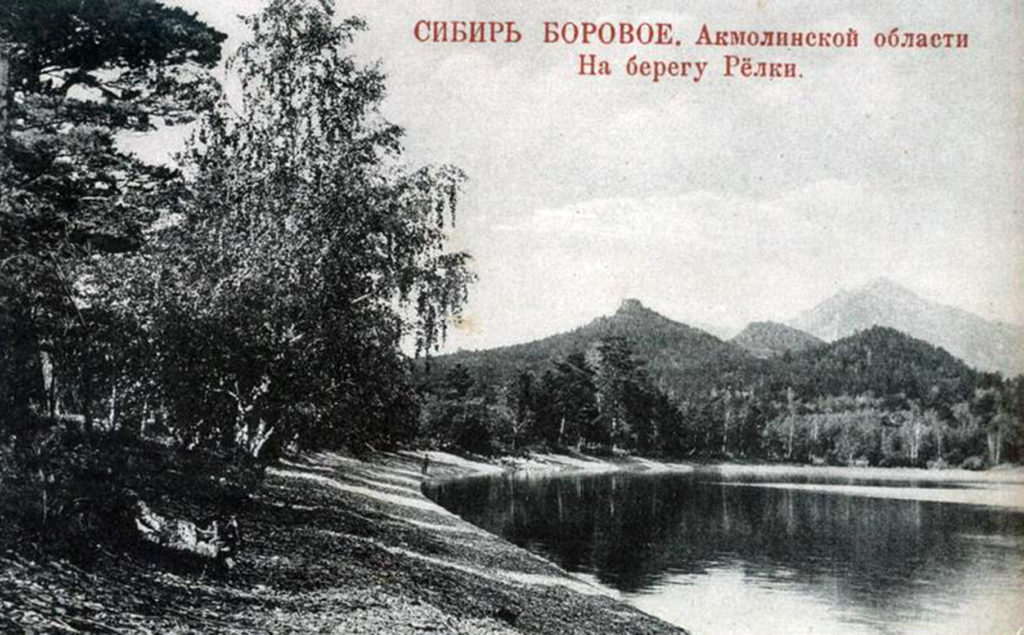
Burabay’s Environmental Problems
At the end of the nineteenth century, the economic development of Burabay and the increase of its population inevitably led to unlimited exploitation of its natural resources. Excessive deforestation led to the formation of wastelands, which were used by pastoralists for grazing. These cattle were then supplied to the local cannery, which was very beneficial for both nomadic suppliers and butchers.
At this time, Borovoe was already well known as a resort area. Both sick and healthy people began to flock here, the presence of which did not have the best effect on the nature around. All this prompted the administration of the region to deal with the issues of limiting the use of the natural resources of the region. In this regard, it became necessary to put the forest areas back in order and improve communication towards visitors. The first step towards this was the formation of the state forestry in Borovoye in 1898. Putting the local forests in order greatly contributed to the establishment of the Forest School. The first forest inventory was carried out by the teachers and students of this school, and the norms and methods of forest management were established.
From that moment, attention to Borovoe increased from the side of the authorities and advocates of nature conservation. With the approval of the scientist V.V. Baryshevtsev a completely new stage in the social and scientific life of the region began. It was V.V. Baryshevtsev who came up with the idea of creating a nature reserve in Borovoe. But it became a reality only in 1935. The reserve “Borovoe” was created in the sanitorium resort area with significant settlements that already existed. This feature was reflected in its organization: the territory of the reserve was divided into a buffer zone, where settlements were concentrated, and into a zone of “reserve”, completely excluded from economic use.
Since the establishment of the reserve, its employees, in addition to protecting natural resources, began to conduct scientific research on the subsoil, soil, water, flora and fauna. The study of this complex, which constitutes the nature of Borovoye, began at the time of the settlement of the steppes of Northern Kazakhstan by Russian settlers. Then the baton was taken over by scientists of the twentieth century, both pre-revolutionary and Soviet.
Throughout the past century, the ecological state of the region depended has on human economic activity. However it had a negative impact on the water regime of the lakes and rivers of the resort area. So, over the past 35 years, the level of lakes in the region has fallen by 1.5-2 metres. Islands appeared on the lakes of Shchuchinskoye and Bolshoye Chebachye. The water receded hundreds of metres from the shore in places. The decrease in the depths of lakes, especially Karasu and Bolshoye Chebache due to their silting, the formation of copropel and irreversible volumes of water, caused changes in the temperature regime and general mineralisation of the water in them. This led to a disturbance in the water balance of the resort area and pollution of ground and surface waters.
In the 1930s, the Borovoe resort became an All-Union resort. People from all over the country came here to be treated and improve their health. Today, Burabay has ceased to be a resort in the broadest sense of the word. Of the remnants of the once developed system of medical institutions, only a few sanatoriums remain (Shchuchinsky, Okzhetpes, Almaz, Zeleny Bor), and some departmental health resorts (the Seifullin sanatorium).
Today the resort area is visited as a large entertainment complex. Companies and families from the cities come here mixed with romantics and students with their unpretentious plans to spend the weekend “in nature”. In addition, in the last decade, Burabay has become a fashionable venue for various kinds of conferences, summits, sports competitions and events (festivals of art song lovers and biker gatherings included).
All these factors have a negative impact on the state of the resort area. The impacts are widespread: 1) A colossal technogenic load on nature. In the vicinity of Burabay there are more than a hundred objects of tourism and recreation (boarding houses, sanatoriums, hotels, cafes, etc.). Each facility is supplied with a water supply, heating, sewage, and lighting systems. These communications are carried out in the soil, not only soil covers and layers are disturbed, but also aquifers feeding of lakes and streams; 2) Anthropogenic impact. The territory of Burabay is visited by about a million people each year (in both summer and winter seasons). Such a large number of vacationers provides good income. But tourism here is not organised well enough. After the visitors have departed, there are piles of garbage, broken trees, broken glass in the lakes, painted stones and rocks, and fires occasionally happen. Not to mention the huge number of vehicles. Employees of the Burabay National Natural Park simply cannot physically control such an influx of people; 3) The state of the lakes. Everyone knows that Burabay lakes are getting shallower. This was reported as early as the beginning of the 20th century. Scientists insist on the need to clean the bottom of the lakes, on which silt is deposited and clogs the sources that feed these lakes. It is not known whether this is the case or the lowering of the lake level is just a natural phenomenon that occurs over a period of several hundred years, as in the case of the Caspian. Or maybe this is the result of human activity (for example, the exorbitant consumption of water in the 1960s for the industrial enterprises of the city of Shchuchinsk), but some kind of decision needs to be made. Otherwise, Borovoy is threatened by the picture that Professor S.S. Golubinsky painted back in 1940: “… the processes of drying up of the lakes will go forward rapidly, the bare mountains will lose their attractiveness with all the negative consequences. At the same time, the meaning of being a resort, sanatoriums and rest houses will be lost, and the existence of the Borovoe Reserve will already be aimless.
Pavel Kossovich
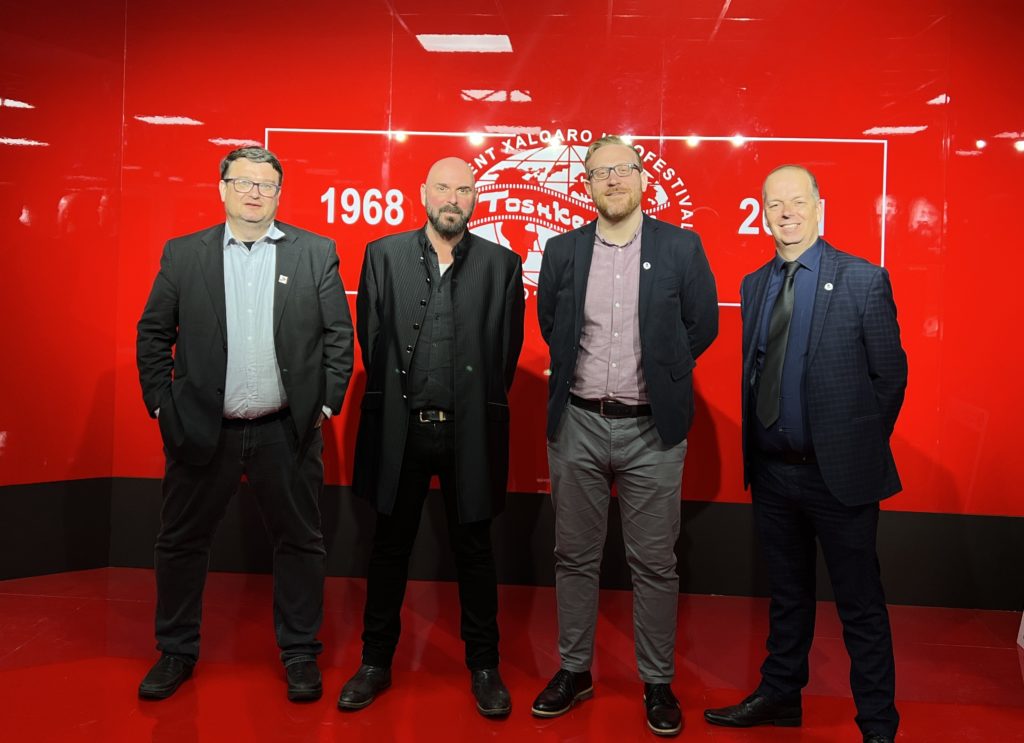
Revival of the Tashkent Film Festival
In September 2021 Marat Akhmedjanov invited myself and two film related companions to represent the UK at the Tashkent Film Festival in Uzbekistan, a festival returning after a 24 year absence. Like a moth to a flame I was drawn to the event, as were my fellow travellers Oliver Guy Watkins and Peter Blunden. I think its fair to say there was a level of “imposter syndrome” with our attendance to the festival, while attendees had been promised, there had been little clarification of whom would be attending, so to very quickly find ourselves in the company of Steven Seagal, Luc Besson, Rob Minkoff, Franco Nero, Gerard Depardieu to name but a few was slightly overwhelming, the repeating question “why am I here?” playing over and over in our heads.
Tashkent Film Festival clearly wanted to make an impression, no sooner had we arrived at Uzbek Film, there was a feeling of extravagance. To the left of the main building was a media hub, where 100 or so frantic looking people dashed around from one area to another, checking over profiles, doing social media posts and feeding data to other parts of the building, in some area’s interviews were being conducted. After we had a number of short interviews, I glanced over to a monitor where my Internet Movie Database file was being examined, one thing was for certain, they wanted to be up to date with everyone’s background.
Having attended the media hub, we moved to a vast hall where Franco Nero, Rob Minkoff, Steven Seagal and many other film industry representatives addressed the regional press launching the festival. This opulent main hall told the story of Uzbek cinema through images of movies that had so much importance to the people of the country. The afternoon events went so swiftly, that we were soon encouraged to return to our hotel to prepare for the evening events, having travelled across the time zones for ten hours over two flights, this was a welcome opportunity for some downtime.
Our first night at the Tashkent Film Festival was like a strange dream, hours of confusion, culture changes and jet lag made us feel as if we had been teleported onto the red carpet with little understanding of how we got to be there. Once there we were interviewed by one, two, three different reporters in close succession, before having our first encounter with the wonderful Ali Hamroyev, who spent much time talking to us about film, England and the wonder of life. Hamroyev a filmmaker of some sixty plus years had the wisdom of age, but the spritely inquisitive nature of a teenager, his contribution to Uzbek and Russian cinema the thing of legend, as important a soul as the likes of Scorsese, Kubrick or Friedkin. Like ourselves he could not grasp why we were there, not because of status, just because people from the United Kingdom in Uzbekistan are without a doubt a rare jewel. Hamroyev, was followed up by another fascinating encounter with the documentary filmmaker Aliaskar Fathullin, the Uzbekistan equivalent of Michael Apted, a man who’s filmmaking truly charts the story of a nation of change.
The night was a bizarre experience for a westerner, an opening ceremony so grand it makes the likes of the Eurovision Song Contest look like a low budget talent show. After the initial opening ceremony, accompanied by the Tashkent Film Festival anthem, succession upon succession of performers appeared on stage, representing culture, dance and song. Intermingled with Uzbek culture was important cultural classics from world cinema, including operatic numbers from the Fifth Element and the empowering ballad of The Umbrellas of Cherbourg. The night led us into even more understanding that we were in a different culture as we settled down for a midnight dinner at the Hyatt Hotel with Minkoff, Nero, Seagal and a few hundred others.
Tashkent Film Festival had a unique viewpoint for a festival. While it acknowledges legends of cinema both at home and away, its focus was on empowering the young and new filmmakers. Having invited film students from around the world, all expenses paid, they were tasked to create a film in 5 days, then show that film to not just an audience, but a judging panel that included some of the greatest film makers on the planet a judging panel chaired by Timur Bekmambetov director of Night Watch, Wanted and Abraham Lincoln: Vampire Hunter.
Having attended some of the largest festivals in the world, Tashkent Film Festival immediately catapulted itself into one of the worlds biggest challenger film festivals, an event so grandiose that your glass will never run dry, your plate never be empty and your heart anything less than amazed. Every venue, every “opening” of a new and exciting building dedicated to the moving image, grander and more co-ordinated than the last, each day leading to a more out of body experience than the last, which ultimately culminated in the crescendo that was our final night.
After 7 exciting days of film, nothing truly prepared us for our final night at the Festival, rather than arriving to a door, our car took us down a red carpet where we exited the vehicle straight into the world’s press. When we arrived, we addressed the nation live on Z’or TV. This truly discombobulating experience, put each of us on the back foot, giving us a a feeling of euphoria and elation that literally kept us alert for the entire night and well into the following day.
Much more than the festival of course is a capital and a country, a country where alien speaking Englishmen were made to feel like kings. It did not matter that we never knew Uzbek or even Russian, everywhere we went we were greeted by open warm hearts of the countries youth, thrilled to be talking in English to real English men, to talk of the country they love, a country that is evolving at such a rapid pace that each and every day gives them a real feeling of passion for their country, a thrill to be alive in this time. Uzbekistan is a country that is open to the world and Tashkent’s Film Festival is a festival that with much care, attention and cultivation has the ability to become one of the world’s leading film festivals, and where better to enjoy the medium of a film, than in a country so incredible it feels like a living movie.
by Spencer Hawken
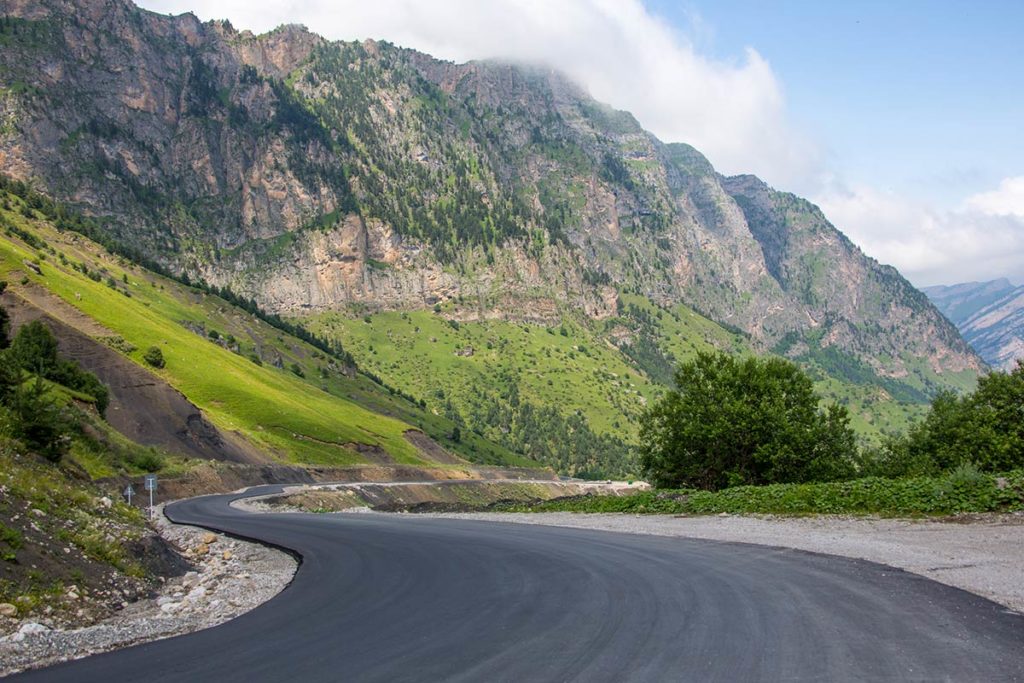
BELOW ME THE SILVER-CAPPED CAUCASUS LIES
Below me the silver-capped Caucasus lies…
A stream at my feet rushes, foaming and roaring.
I watch a lone eagle, o’er the peaks calmly soaring
Drift near as he motionless circles the skies.
Here rivers are born that tear mountain asunder
And landslides begin with a crash as of thunder.
Here float solemn storm-clouds; and through them cascade
Swift torrents of water; they plunge o’er the edges
Of great, naked cliffs and spill down to the ledges
That patches of moss and dry brushwood invade.
Beneath spread green groves, lush with herbs and sweet-scented
Where birds dwell in peace and where deer browse, content.
Lower still in the hills, nestle men; flocks of sheep
The pasturelands roam; to the gay, flowery meadow
Where courses Arafva, her banks clothed in shadow,
A shepherd descends. In a narrow and deep
Ravine a poor horseman lurks, tense and unsleeping,
And wild, laugh-crazed Terek goes tumbling and leaping.
He lashes about like a beast in a cage
With food out of reach, full of hunger and craving,
And licks at the boulders, and, howling and raving,
Strikes out at the shore in a frenzy and rage.
Alas! He is thwarted: the mountains surround him;
Mute, threatening giants, they press darkly round him.
Alexander Pushkin
The Caucasus
These words of Alexander Pushkin still characterise North Ossetia – Alania. Among the constellations of the North Caucasian republics, Ossetia shines unusually brightly and this is the only region where the language, beliefs and customs of the mysterious Alanian tribes are almost completely preserved.
The unity of man and nature in culture
These are nomads of Scythian-Sarmatian origin, the language of modern Ossetians speaks of their belonging to Indo-European peoples, and their beliefs are distinguished by a syncretic nature. These are tribal cults and elements of world religions that have preserved a rich heritage of paganism. The unity of man and nature, the deification of certain places: natural mountains of individual stones, trees, groves, springs, artificially created for sacrifice and prayers, which Ossetians perform to this day, as well as many festive funeral rites. They strictly adhere to many traditions to this day: weddings are celebrated according to ancient customs, rituals at the birth of children, for example, the naming squad is a separate festive ritual, then the ritual of introduction into the family and protection from the influence of “evil forces”.
Quite recently, in the middle of the 20th century, a custom that was adopted by the Scythian-Sarmatian tribes – the dedication of a horse to the deceased and the installation of cirts (gravestones), which migrated from the Scythian culture to the Alanian, and then to the Ossetian, disappeared quite recently. There are such monuments only in North Ossetia and Alania. They are not necessarily buried; they often stand as memorial signs near the roads.
History and architecture
Ossetia is a small Caucasian republic which is endowed with unique traditions and historical monuments. Fortresses, towers, ancient settlements and crypts have been preserved in the gorges. The largest in the Caucasus Dargav crypt necropolis is located on its territory, and the vast Koban burial ground was discovered, which gave its name to the most ancient Koban culture.
In the 19th century, the capital of Ossetia, Vladikavkaz, became the centre of the Terek region, which included Dagestan, Chechnya, Ingushetia, Kabardino-Balkaria and the Stavropol Territory. Therefore, the city had a huge number of educational institutions, developed industry and trade. The first theatre in the North Caucasus, terrains for cycling, the first cinema in Russia, and a railway. These were all built in Vladikavkaz. There was also established a Belgian concession, which not only built factories for the processing of non-ferrous metals in cities and mountains, but also launched a tram in Vladikavkaz. Therefore, the architecture is beautiful, buildings in the Art Nouveau and eclectic style prevail, many old buildings have been perfectly preserved, although more than 20 churches belonging to different denominations were destroyed during the Soviet period.
Breathtaking landscapes
North Ossetia has an unusually beautiful nature and many magnificent locations. But glaciers are something special, bewitching and alluring with their scale, grandeur, beauty and inaccessibility. Most of them can be reached only on foot or by cable car, and each of them is unique and recognisable. The area of glaciation is more than two hundred thousand square meters, but the glaciers have been retreating and decreasing lately.
It is worth coming to Ossetia for the sake of the mountains alone. At any time of the day and time of the year, you can endlessly watch the snowy peaks emerge from behind the clouds. Stunningly beautiful views from the passes, numerous gorges – all this together restores mental balance and enriches the inner world.
Cuisine
And of course, a little about Caucasian cuisine. Famous Ossetian pies this year took second place in the Tastes of Russia competition in the Cultural Heritage nomination. Why? It is customary to put three pies on the festive table in Ossetia, and before eating them, it is customary to pray for prosperity, abundance and other good things. Only two pies are put on a memorial table. Authentic Ossetian pies can be tasted only in this republic, because Ossetian cheese is produced only there, and pies with other cheeses, accordingly, have a completely different taste. Do not believe it if someone told you that it can be replaced with feta cheese, mozzarella, feta or suluguni!
They make pies with various fillings: with cabbage, wild garlic, pumpkin, cherries, potatoes, beans… But pies with cheese, beet tops and minced meat are considered classics. Real Ossetian pies are made from yeast dough and generously greased with butter. If they are heated in a skillet with oil, they only taste better the next day.
Ossetia has very strong traditions of hospitality, they love feasts and observe a lot of different rituals, which makes Ossetia a truly original, unique republic.
You are always welcome!
by Tatiana Lari
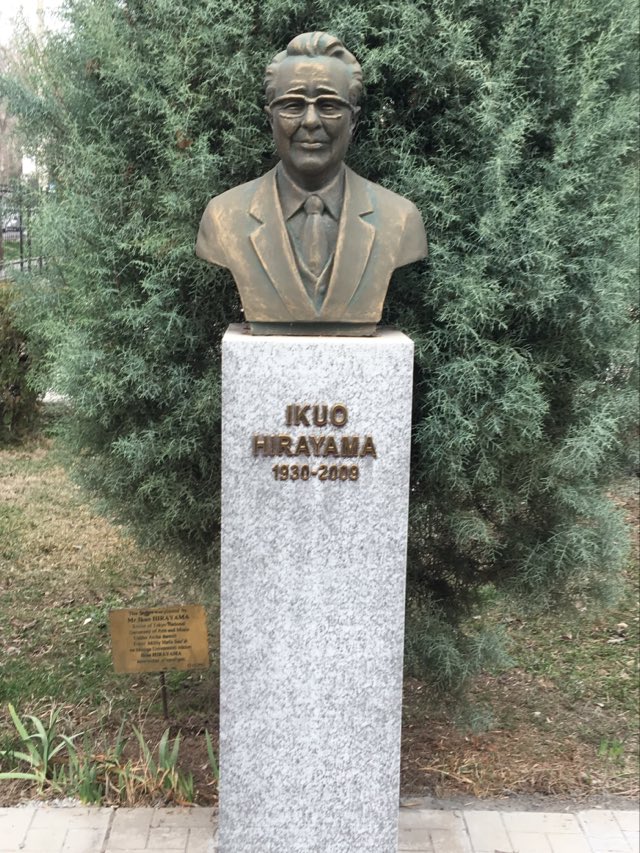
THE ‘SILK ROAD’ BETWEEN JAPAN AND UZBEKISTAN
One of the highlights of Tashkent’s rich array of historical and art museums is the Ikuo Hirayama International Caravanserai of Culture. The exterior alone is remarkable, with its two looming buildings surrounded by a garden of cypress trees. However, going inside the building and learning about the life and artwork of its namesake, Ikuo Hirayama, is what truly leaves a lasting impression.
Mr. Hiroyama led an extraordinary life capturing the mystique of Uzbekistan and the Silk Road in his traditional Japanese-style paintings. Today, his legacy continues with the work of the Ikuo Hirayama International Caravanserai of Culture and its aim of bridging Japan, Uzbekistan, and the Silk Road through artistic and cultural exchanges.
Ikuo Hirayama: A Biography
Ikuo Hirayama was born in 1930 in Setoda, Hiroshima Prefecture, Japan. His childhood love of drawing would set the course for his future career in art. Another major event in his formative years – surviving the atomic bomb that fell on Hiroshima in 1945 – would shape his commitment towards peace activism.
He went on to study art and graduated from the Tokyo University of the Arts in 1952, where he specialised in nihonga, or Japanese-style painting. Initially, Mr. Hiroyama focused on Japanese and Buddhist motifs in his artwork. However, in 1966, he visited Turkey as part of an artists’ delegation that set out to examine ruins in the country. This trip sparked Mr. Hiroyama’s fascination with the cultural heritage of the Silk Road, and he would later visit several countries associated with the historic route.
He was especially fascinated with Uzbekistan and the other then-Central Asian Soviet republics and captured the intrigue of the region in his artwork. Mr. Hirayama was able to depict some of Central Asia’s most iconic images – say, elaborate madrassas or traders traveling on camelback – and paint it in the nihonga style’s distinctive combination of detailedness and delicateness.
Mr. Hirayama collected various artifacts from his Silk Road journeys – many of which are currently on display in the Hirayama Ikuo Silk Road Museum in Yamanashi Prefecture, Japan – and campaigned to preserve and restore numerous historical sites that he had encountered in his travels. In the course of his career, he worked alongside such illustrious organizations as UNESCO, the Tokyo National Museum, and the Japan Art Academy Exhibition to promote artistic and cultural treasures from all over the world. Mr. Hiroyama passed away in 2009, but his influence continues to link Japan to Uzbekistan and the Silk Road through the Ikuo Hirayama International Caravanserai of Culture.
The Ikuo Hirayama International Caravanserai of Culture
Ikuo Hirayama’s fascination with the Silk Road extended beyond the visual beauty of these countries. He was also dedicated to reviving the rich traditions of this legendary route. He placed special emphasis on Uzbekistan, as he viewed it as “the historical and spiritual center of the Silk Road [that] connects the countries of the East and West.”1 Furthermore, Mr. Hiroyama’s experience as a survivor of the Hiroshima atomic bomb instilled a commitment in him towards promoting international peace. He believed that cultural diplomacy was a particularly effective tool in learning about other nations and forging friendships based on a mutual understanding and respect towards one another.
Mr. Hiroyama’s admiration for Uzbekistan, as well as his wish to see a Silk Road renaissance, gained increased salience following the Central Asian states’ declaration of sovereignty in 1991. He viewed this event as a golden opportunity for “integrating Uzbekistan with worldwide cultural and scientific society.”2 Thus, he wanted to do his part to expedite this process by forging closer Uzbek-Japanese relations.
In 1999, Mr. Hiroyama met with Tursunail Kuziev, the Chairman of the Academy of Arts of Uzbekistan in Japan. They discussed the idea of creating a cultural center to display the history of the Silk Road and strengthen Uzbek-Japanese ties. Their objective became a reality when the Uzbek government helped fund and establish the Ikuo Hirayama International Caravanserai of Culture in 2002. Since its opening, the institution has strived to “popularise” the cultural heritage of Uzbekistan, Japan, and other Silk Road countries”3 through its various activities.
The institution serves as “both a museum and a scientific and cultural center.”4 The site features two main buildings: one building contains a library, conference hall, and working areas, while the other one has a laboratory, scientific facilities, a vestibule for cultural events, and exhibition halls. As for its functions, the Ikuo Hirayama International Caravanserai of Culture holds art exhibitions featuring the artwork and artifact collection of Mr. Hiroyama. It also sets up cultural events, including master classes, concerts, symposiums, and educational courses. The institution organises archaeological expeditions and uses its laboratory to examine excavated items from those ventures. The grounds of the Ikuo Hirayama International Caravanserai of Culture also feature a cypress-filled Friendship Garden and a “Hiroshima Peace Stone” made from a piece of pavement in Hiroshima that now serves as a symbol of peace. Despite the relatively young history of the center, it has already formed connections with global museums and research institutions to uncover the history of Uzbekistan and the Silk Road and share that heritage with the rest of the world.
At first glance, Uzbekistan – the centre of history’s greatest continental trade route – and Japan – a historically insular island nation – seem to have no common ground. However, thanks to the initiatives of Ikuo Hirayama, these seemingly two distant countries became connected to one another via art and culture. Just as the caravanserai of yore served as a meeting place for traders to share their customs and ideas with one another, the Ikuo Hirayama International Caravanserai of Culture allows for Uzbek and Japanese cultural exchanges that can subsequently spread the heritage of the Silk Road to the rest of the world.
by Marin Ekstrom
1. Ikuo Hiroyama International Caravanserai of Culture, official website, http://www.caravanserai.uz/
2. Ikuo Hiroyama International Caravanserai of Culture, official website, http://www.caravanserai.uz/
3. Ikuo Hiroyama International Caravanserai of Culture, official website, http://www.caravanserai.uz/
4. “International Caravanserai of Culture,” Uzbekistan, Adventour, https://www.advantour.com/uzbekistan/tashkent/caravanserai-of-culture.htm

The Alphabet Shift in Kazakh Language
Over years of research and work in Kazakhstan, I have seen many Latin representations of the Kazakh alphabet. Some were pockmarked with apostrophes – others riddled with diacritics. Others still imposed Latin letters incorrectly on the Russian language, creating the following image (from the mobile application of www.soyle.kz, a state-sponsored site that offers free Kazakh language lessons):
Over the past century alone, Kazakhstan has switched alphabets three times (Arabic, Latin, and Cyrillic, respectively) – with a fourth on the horizon. Unsurprisingly, the decision to switch alphabets yet again met with a variety of reactions, both domestically and internationally. Kazakhstani newspapers have generally upheld the shift as a move toward modernization, while many Russian ones have reacted negatively. Indeed, the Russian media has relied prominently on Soviet-era tropes of “culture” and “cultured-ness” (kul’tura and kul’turnost’, respectively) in its coverage of the Kazakh alphabet shift, illuminating its reliance on a deeply Soviet worldview – and its belief that Kazakhstan is leaving it behind.
History of Alphabet Shift and Language in Kazakhstan
Kazakhstan is among the most Russified former Soviet republics – and even today, Russian remains the primary language of government, science, and business despite state efforts to promote linguistic “Kazakhization”. This prevalence of the Russian language in Kazakhstan is integrally related to the continued presence of the Kazakh Cyrillic alphabet: in the Soviet era, the Russian language was a symbol of modernization, as was its associated alphabet, Cyrillic. In that vein, former president Nazarbayev has claimed that the switch to Latin is also part of Kazakhstan’s modernization process, which could be perceived as part of being “cultured.”
The Soviet idea of “culture” has deep roots. Scholar Svetlana Boym writes that “in the nineteenth century culture is often synonymous with literature, and Russians are defined less by blood and by class than by being a unique community of readers of Russian literature.” In the Soviet context, however, “culture” extended beyond this 19th-century conception of literature to include the qualities of the individual who had read these books: in the 1920s, discussions of “cultural revolution” “became the advocacy of kul’turnost’, which “include[d] not only the new Soviet artistic canon but also manners, ways of behavior, and discerning taste in consumer goods. Culturalization is a way of translating ideology into the everyday.” Such ideology, naturally, had to be adapted to the individual republics. In the case of Kazakhstan – previously a largely oral culture – creating “national culture” (“artistic canon,” in Boym’s words) meant, among other things, creating a canon of Kazakh national literature that reflected history and tradition while simultaneously espousing Soviet ideology.
Iurii Bogdanov’s article in Izvestiia, largely concerns itself, rather, with the logistical issues of Kazakhstan’s alphabet shift – but he is nevertheless sure to mention “[the shift’s] negative impact on the development of the humanities, as well as the possibility of access to literary and scientific heritage.” This is clearest in a quote from Bulat Sultanov, the director of the Institute for International and Regional Cooperation at the Kazakh-German University: Bogdanov cites him, in a short albeit separate paragraph, as saying that “during the Soviet years, a solid mass of literature was formed in Kazakhstan – and it was all translated and published in Cyrillic. All of this will be lost for future generations.”
Although Sultanov does not explicitly credit the USSR with creating modern Kazakh literary culture, he admits that a period of great literary creativity and formation of literary heritage (also viewed as “national culture”) took place during the Soviet era – when it was largely produced in Cyrillic. He does not, for example, refer to the period when Baitursynuly’s reformed Arabic alphabet was used to print Kazakh texts or the pre-Soviet period during which many Kazakh stories, legends, and songs were orally preserved. Sultanov’s – and thus, Bogdanov’s – emphasis is specifically on the creation of a printed body of national Kazakh literature in Cyrillic which bears the positive Soviet legacy of the Russian language. For Sultanov and Bogdanov, however, the new Latin script destroys the accessibility (and thus relevance) of the Soviet-created literary canon for future generations of Kazakhs, who would now be unable to engage in their “national culture.”
Nikita Mendikovich writes more caustically about the impact of the alphabet shift on Kazakh “national culture” on Lenta.ru. The article opens by claiming that “yet another attack on the Russian language and Cyrillic is unfolding in Kazakhstan,” reinforcing the relationship between the Russian language and Cyrillic alphabet. Mendikovich quotes Askhat Aimagambetov, the Minister of Education, as saying that “education in the state language [Kazakh] should be dominant,” followed by a timeline of the alphabet shift. Mendikovich makes it clear that Kazakhstan’s “national culture” will be corrupted by this alphabet and attendant language shift: “in reality, Minister Aimagamembetov’s motives in speaking out for the Kazakhization of schools… have little to do with concern for the national language or national culture.” Indeed, Mendikovich states that Kazakhstan’s level of “national culture” will drop following Latinization, as he claims that the overwhelming majority of Kazakhstani media – especially books – is in Russian. With that, Mendikovich claims that “the Kazakh language has practically stopped being used in literary or academic texts”: for him, Russian is the superior “language of culture,” given its dominance in the sphere of the printed word – and Cyrillic must reign within it. According to Mendikovich, the “secondary status” of the Kazakh language precludes it from attaining the Russian language’s prestige – meaning that the Cyrillic alphabet, too, will remain culturally superior as long as Russian remains dominant in Kazakhstan’s literary and media sphere. Even after Latinization.
Mendikovich also quotes Kazakhstani philologist Dastan El’desov as saying that “instead of the language of Abay and Auezov, we have the language of newspaper journalism [publitsistika] and social media, in which it is very hard to write texts on philosophical, legal, academic, and other subjects.” In that one sentence, Mendikovich juxtaposes two versions of the Kazakh language: “the language of Abay and Auezov,” both of whom were included in the Soviet Kazakh literary “culture,” and the “language of newspaper journalism and social media,” which were not. The “language of Abay and Auezov” is rendered in Cyrillic, given that their writings were largely canonized in the Soviet period, while the “language of newspaper journalism and social media” is increasingly rendered in Latin – online. The former is considered “cultured,” as it represents the peak of Kazakh literary culture; the latter is not, as it cannot discuss “philosophical, legal, academic, and other subjects,” which was the content of the Soviet-era, Cyrillic, Kazakh literary world. Mendikovich laments the degradation of a language and alphabet that, in his view, represented the peak of Kazakh literature and, consequently, culture.
It may appear strange that Russia – a sovereign nation – concerns itself with the loss of culture in Kazakhstan, another sovereign nation. Yet Kazakhstan has been not only aligned with Russia, but also been under its control (whether in the USSR or the CIS) for the whole century – and is now changing one of its most visible outward symbols of adherence to the Russian space and Soviet legacy. Consequently, the Russian media relies on tropes that extol the “gifts” of the Soviet era to Kazakhstan, i.e., culture: a worldview rooted in conceptions of the Soviet past to which Kazakhstan is expected to conform some thirty years after independence. The Russian media analyzed here posits that Kazakhstan is leaving its Soviet past behind, even if doing so entails a risk to its “culture,” its literature, and its art.
by Leora Eisenberg

Japanese Valentine Chocolate
A Personal Co-incidence
Never as a British child and Canadian teenager, did I imagine that I might be working across Eurasia, let alone living in Central Asia; the heart of Eurasia. I can honestly say, my life has been far richer as a result, though not due to any planning on my part. My arrival here next to the Mountains of Heaven, the Tien Shan, was a surprise. Being sent by Deutsche Morgan Grenfell investment bank from the financial City of London to Tokyo, Japan, set the context for my later fate working in Russia, Ukraine, and ultimately my arrival in Central Asia. Those were fateful days, but I do not regret them.
It is often said by those with no experience of Central Asia that it has no history. This is most definitely not true for anyone who digs a bit deeper. Central Asia is exceptionally rich in history and culture. You can drown in it if you dig deeply enough, like finding a new well by accident. I have discovered so many countless gems of Eurasian history, of individual fascinating human experiences, sparkling for those watching carefully, criss crossing the ancient silk route paths from Europe to Asia and back again.
One key event leaving a deep impact on Eurasian history was the Russian revolution, of course. Often forgotten is that the Russian revolution was also a Central Asian revolution, “Vostok delo tonkoye”. Its terrible impact across Eurasia was profound, wrenching families and people apart from where they grew up and from whom they loved. One of many stories that fascinate me, is the experience of the Czech Foreign Legion and their amazing and ultimately tragic attempt to return home via the Russian Far East after the Russian revolution. Many traumatic stories continued even again during recent times with the collapse of the Soviet Union. Often the pre-Soviet family, and particularly Central Asian clan-based system, was what kept society going, despite the severe economic collapse that followed the Soviet system implosion. Now, the region is making history again, whether through economic renaissance or increasing cultural expression. I am very much an active observer, if not a very occasional minor participant in this new Central Asian expression of character.
My wife’s own family recently discovered a previously unknown Soviet twist to their history. Lidia is Belarussian, a champion of Russian culture, but gets very depressed at any sign of Soviet times. Every time I am away on business, she hides my Soviet souvenirs like pictures of a dead relative. To her family’s total surprise, they recently discovered their descent from a Polish officer, one of the survivors of Poland’s conflict with the Soviet Union. Consequently, my wife is eligible for Polish citizenship, so strong are her Polish roots. Yet with no previous knowledge of her Polish history and with her Belarussian culture so strong, she can’t quite integrate her new history. At least, that’s how it seems to me when I tease her about being Polish. Her Polish grandfather, once captured, totally converted from being Polish to becoming a complete Belarussian Soviet citizen hiding any of his Polish origins. The Soviet Union, and 20th century Communism, did this to many people.
Many curious and largely forgotten histories have popped up at me in Eurasia like summer grasshoppers during my 23 years in Central Asia. Whether it is the ancient history of the region or more recent stories entwined in the agonising birth and death of the Soviet Union. The history of the mysterious Tocharians – the Wu chi – linked to whisky, Teklamakan’s buried cities, and the invention of the wheel. The Sacha and the Scythians, with their grand capital in Issyk (Issaac) and their misty links to the Old Testament and the origins of the Anglo-Saxons; the Angelic sons of the Sacha. Even the angels appear to have originated from Central Asia, with Herodotus based maps placing the Seraphim and Cherabim in control of tributaries of the Caspian in ancient times.
Several stories during the many internecine battles and civil conflicts that characterised the birth of Soviet Central Asia fascinate me. The various alliances made by survivors of the Khanates with the Czech Foreign Legion fighting together, against others, or alone and ultimately leading to the Legion to the Far East of Russian. The Siberian express and later the Amur, the Far East of Russia, was consequently run for several years by survivors of the Czech Legion. Once, visiting the Czech graves on a hill above Vladivostok, I was abandoned by my driver, who wrongly assumed I was gloating over the Soviet dead. I had to walk back to the port; there was no Yandex back then or taxi I could call. Vladivostok’s economy was completely hammered with society hanging on by a thread at the time.
The story of the collapse of Russian aristocracy, the Romanov’s and their aristocratic society in Russia, Central Asia, and the Far East, has so many acutely heroic and inevitably tragic storylines. Whether it is the Romanov family themselves, dying a public death in the House of Special Purposes near the British Consulate in Yekaterinburg, or the White Russian General, Von Ungern Sternberg, a dedicated Russian aristocratic officer leading a fanatical Central Asian Buddhist army. Von Ungern Sternberg and his budhist army often fought against overwhelming odds. Eventually, the odds caught up with him, burying his treasure in a secret location and then dying a tragically lonely death near Mongolia. Rumours of the two youngest Romanov children have largely been forgotten now, only remembered by a dwindling cadre of aristocratic descendants and the Russian Orthodox Church.
One story stands out through the years, though it is really one of my wife’s stories. It is about the discovery of Morozov descendants in Japan while I was working in Tokyo. This particular branch of the famous Morozov family was thrown to the wolves during the Bolshevik justification for their revolution and sweeping seizure of industrial assets. They were lucky to escape Russia with their lives, leaving most of their wealth behind as they fled to America.
For those who may not remember the famous aristocratic industrial family of the Morozov’s, where arguably one of Russia’s biggest victims of the Bolshevik mob. Some senior post Soviet Russians sometimes wonder what happened to the various descendants of the Morozov family.
The Morozovs were one of the most famous, if not THE most famous, industrial families, patrons of the arts, and philanthropists of Russia prior to the October 1917 revolution. Now that Russians are free to appreciate their pre-communist heritage, they are beginning to recognise the huge cultural contribution of the Morozovs. Their founder, Savva Morozov, was a serf who started a Silk-weaving business. Savva’s descendants went on to become the richest people in Russia, largely built on the textile trade and banking. A line of the family even moved into the cotton textile trade in pre-revolutionary USA. Many of Russia’s famous theatres, dance schools, galleries, and bookstores, owe their origins to the Morozovs. After the 1917 October Revolution, the Morozov textile factories, banks, and related businesses were nationalised, and the family ruined – at least in Russia.
After fleeing to America, the ‘Japanese’ Morozovs travelled to Brazil and then Japan where they eventually started a fine chocolate business in the 1920’s, founded by Fyodor Morozoff – the name now changed to look more anglicised. This venture was the foundation of today’s famous Japanese Morozoff Chocolates. Their first store opened in 1931. The Morozoff’s fine chocolate business defined Valentine’s Day in Japan from the very beginning. By tradition, Japanese girls give their boyfriends Morozoff chocolates. Apparently, the more valuable the boyfriend, the more expensive the chocolates. Before this tradition, valentine’s day was completely alien to Japan, as was chocolate. The Morozoffs eventually lost control of the business, starting another business of their own – Kobe and Ginza based Cosmopolitan Confectionary. Morozoff Chocolates Ltd went on to become a Nikkei 225 company – one of the biggest companies in Japan
This fascinating story came to us by chance. My wife moved with me to Tokyo and would often visit two cozy little Russian bookstores. One of the bookstores had a small cafe, where Lidia would often have tea before returning home to the other side of Tokyo in Jiyugaoka, where we lived. On one occasion, when drinking tea, Lidia was approached by an elderly European gentleman who asked where she was from. They started chatting, during which the elderly gentleman remarked on how familiar Lidia looked. As it turned out, someone who had once been very close to him looked exactly like Lidia. It turns out this person, though far older than Lidia, had been born only a few kilometers away from Lidia’s birthplace, Povitya, on the Ukrainian side of the modern border. Lidia and the gentleman became good friends and occasionally met again for tea in the Russian bookstore cafe.
Eventually, we realised this elderly gentleman was Valentin Fedorovich Morozoff, 1911-1999, eldest son of Russian born founder of Morozoff Chocolates, Fedor Dimitrich Morozoff, 1880-1971. Valentin was President of Kobe based Cosmopolitan Confectionary and possibly the original inspiration for Morozoff Chocolates Valentine theme. Both Fedor and his son Valentine are buried in Kobe Municipal Foreigners Cemetery. Lidia met Valentin for chats in 1996 and 1997, but sadly Valentin died shortly after we moved back to Europe in 1998. Though Lidia realised that Valentin and Fedor were descendants of the famous Russian industrialist family, it was only when she told me who she met that I realised Valentin and his family were founders of the Nikkei 225 Morozoff listed company.
I took the time to find out more about Morozoff Chocolates, Cosmopolitan Confectionary, and the Morozoffs. The Morozoff family were close to two Soviet Ambassador’s to Japan and met many Russian characters of note during their visits to Japan, including individuals such as Tolstoy’s daughter. Upon his death, Valentin’s private papers have been archived in a major US historical institute.
Sadly, we only found out that Valentin had died when I originally went to write this article. On a happier note, Japan enjoys possibly the finest chocolate covered confectionaries in the world. “When life is good, everything is covered in Chocolate”.
written by Bruce Gaston
gastonbruce@gmail.com
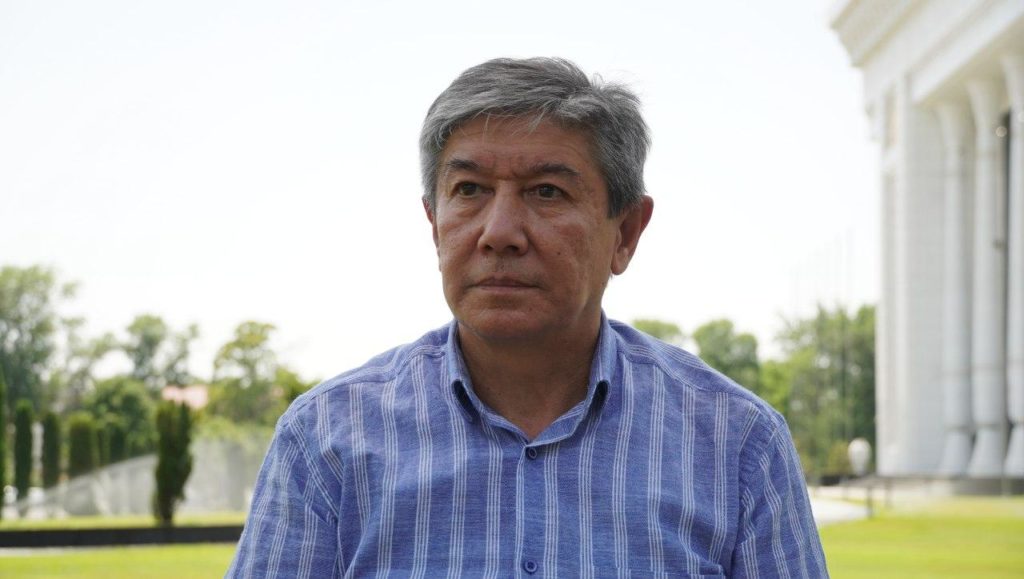
Lessons of the Hot Days of ‘Kazakh Winter’ for Central Asian Integration
Disturbances in first half of January 2022 caused by popular unrest in Kazakhstan can be remembered as the ‘Kazakh winter’ – events which shocked the very foundation of the political system of this state. They revealed a deeply rooted vicious regime of diarchy which the first President of Kazakhstan N. Nazarbaev created – the regime of the power of him, by him and for him (to paraphrase Abraham Lincoln’s dictum: “Democracy is the government of the people, by the people, for the people). This ‘Kazakh winter’ revealed a very controversial, perplex and dangerous development of the state.
It wasn’t controversial, perplex and dangerous only for Kazakhstan but also for the whole Central Asia which will likely face direct or indirect challenges related to the situation in this Central Asian country. What kind of challenges? They are twofold; it should be noted that: 1) each individual Central Asian country side by side with its own specific problems, experiences similar problems to Kazakhstan; 2) all five countries of the region are regionally interconnected, interdependent and are engaged in a regional integration process.
In the wake of the “Kazakh winter”, it becomes obvious that the Kazakh President has two options: to consolidate his own power at the expense of democratic reforms or to speed up reforms with some risk for the autocratic political regime. Similar options do exist in all countries of the region (just like in all authoritarian countries of the world). Therefore, some lessons should be taken by all in the region.
Throughout independence, Kyrgyzstan has been moving from “revolution” to “revolution” and has already seen 6 presidents. Its symbolical image of the “island of democracy” in Central Asia appears to be a myth. Turkmenistan has moved from one dictator to another one. Tajikistan has been developing under one president all this period since the end of the civil war in 1995. Uzbekistan has a second president who came to power after death of his predecessor. Finally, Kazakhstan has experienced a “two-presidents” system until the overthrow of the first head of the state and transit of power ended up with country-wide popular unrest. None of these Central Asian countries have been able to manifest themselves as a democratic/democratising/liberalising polity. So, political systems of all Central Asian states are quite similar to each other, in one way or another way.
Moreover, the tasks of democratization are actually the same everywhere, since they imply a checks-and-balance system of powers, existence of independent opposition parties, independence of the judiciary, independence and high authority of the parliament, active civil society and so on. From this point of view, one can assume that similar social, economic and political problems will likely cause a similar reaction on other parts of the population.
Another important lesson is in relation to what can be called the “test of unity”. Unity and regional integration of Central Asian countries can be challenged in the context of the “Kazakh winter” in two ways: 1) countries concerned can take an isolationist stance with respect to the country-in-unrest in order to prevent any spill over of disturbance across the borders and reduce the probability of challenges to authoritarian regime; 2) as it happens everywhere with countries mired in domestic unrest and revolutions or civil wars, external forces can take geopolitical benefits from such conflicts either by supporting their proxies or even by directly meddling in the conflicts.
The ‘Kazakh winter’ didn’t prompt Central Asian countries to isolate themselves from Kazakhstan or from each other; on the contrary, they expressed moral and diplomatic support to Kazakhstan. However, the tokens of the second challenge – geopolitical – were observable in this case. The Russia-led Collective Security Treaty Organization (CSTO) forces were, for the first time, used in Kazakhstan, but not against an external aggressor but against internal rioters and protesters. Moreover, they were not operationalised for a dynamic military mission, but for the static tasks of guarding governmental buildings and the airport of Almaty. Activation of the sleeping military block coincided, accidentally or not, with exacerbation of tension between US/NATO and Russia and Moscow’s ultimatum delivered to the West on security guarantees. That ultimatum openly asserts that the former Soviet space belongs to the Russian sphere of influence and ignores the independence and sovereignty of Central Asian states.
In this geopolitical context, the main lesson of the hot days of the ‘Kazakh winter’ is that Central Asian countries must strengthen their regional unity and accelerate the integration process which would be the best response to the above-mentioned challenges: democratic reforms and the “test of unity”. Destructive geopolitics will undoubtedly undermine both democracy and integration in this region. Regional integration will be the best option to address these challenges. This scheme works as follows:
A) The recent past period of almost a decade of frozen regional integration, especially related to self-isolationism of Uzbekistan, demonstrated that it cannot but cause mutual mistrust and increase tension between and among the countries concerned. Such disunity can be capitalized by those geopolitical forces which pursue the “divide-and-rule” strategy and intend to impose upon the “conflicting” countries of the region its role of a mediator (CSTO’s January “mission” in Kazakhstan can be the hypothetical case or a prototype of such a scenario).
B) Authoritarian systems are by nature antagonists of integration. They can declare their co-operative stance and even support regional economic and trade cooperation, however, should some political disturbances occur in their country (like in Kazakhstan), they, in order to survive, appeal for help to an extra-regional allied great power, instead of democratically coping with such cases. Regional integration, in turn, can help create the common system of mutual assistance which will be free from geopolitical deviations.
In this regard, it should be mentioned that on 6th December 2021, the presidents of Uzbekistan and Kazakhstan signed a Declaration of Alliance which was due to become a Treaty very soon. This document says, among other things, that their alliance is a key factor in strengthening peace, stability and security in Central Asia. The two sides expressed their determination to closely cooperate in the sphere of foreign policy and advance mutual interests and ideas of regional unification for the sake of securing pace and stability in Central Asia. They also stressed the importance of achieving mutually acceptable solutions of regional issues by Central Asian states themselves.
This Declaration was, in fact, an essential message to the region and to the world concerning the above ‘test of unity’. From this perspective, in particular, the creation of a regional system of mutual assistance and collective security would be of vital importance for addressing different intra-regional and extra-regional threats, including cases similar to the “Kazakh winter”.
Dr. Farkhod Tolipov
Director of the Non-Governmental Research Institution “Knowledge Caravan”
Tashkent, Uzbekistan
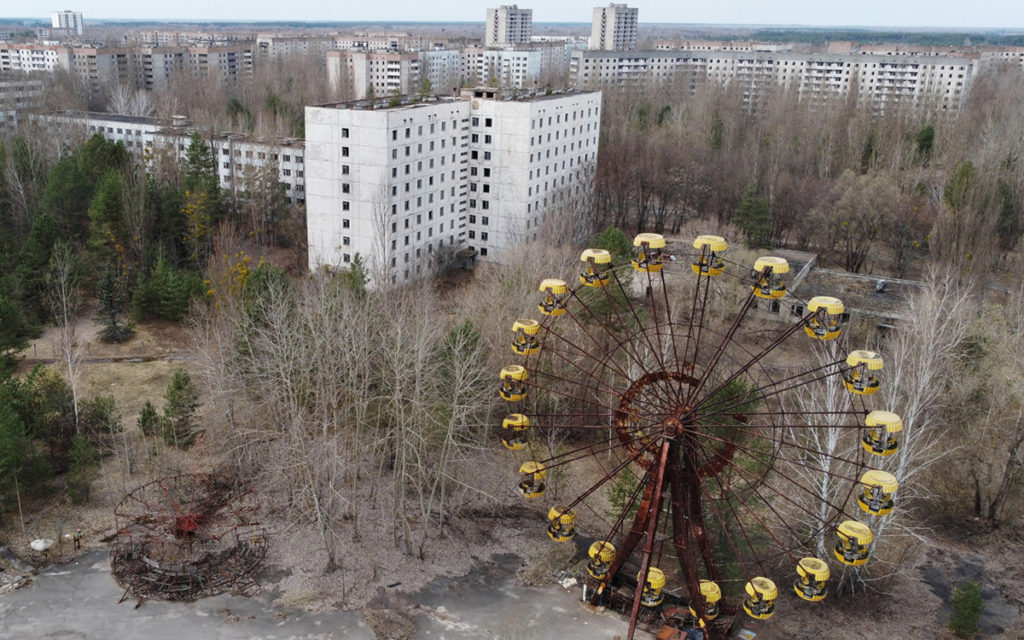
Chernobyl Fallout: Recovering the Lands of Belarus
Following the Chernobyl nuclear power plant accident, most of the radioactive emissions settled in the thirty-kilometre zone around the nuclear power plant itself. The population from this region were resettled, and the Polessky radiation-ecological reserve was created on the territory. About 70% of the radioactive fallout fell on the territory of Belarus, as a result of which the level of contamination of its territory is the highest of all countries affected by this tragedy. 20% of all forests in Belarus are still polluted, and 6,000 km2 of land have been withdrawn from agricultural use in accordance with legislation. 109,000 people were resettled. According to calculations made by the Institute of Economics of the National Academy of Sciences of Belarus, the total damage caused to the republic by the Chernobyl disaster, calculated for a 30-year period in overcoming it, is estimated at 235 billion US dollars, which is 32% of the republic’s budget in 1985. Irreparable damage was done to the Republic of Belarus, which had to experience the enormous socio-economic, political, environmental and medical consequences of the accident. A significant part of the damage is in the Mogilev region.
An area of 11.2 thousand square kilometres, covering 14 districts of the Mogilev region, was exposed to radioactive contamination. In such conditions, it is practically impossible for quick self-recovery of the affected territories, or the direct restoration of the facilities located on them. We can only talk about a long-term rehabilitation process, and only when it is safe for people and businesses to return to the sites of past radioactive contamination.
On the territory of radioactive contamination, depending on the density of soil contamination with radionuclides and (or) the average annual effective dose of irradiation of the population, the following zones of radioactive contamination have been set up:
1. zone of evacuation (exclusion) – the area around the Chernobyl nuclear power plant, from which the population was evacuated in 1986 (30-km zone and the territory from which additional resettlement of the population was carried out);
2. zone of priority resettlement;
3. zone of subsequent resettlement;
4. zone with the right to resettlement;
5. zone of residence with periodic radiation monitoring
Radioactive contamination of soil entails significant problems in agriculture, primarily associated with the acceptable quality of food products produced from them. Soils of natural ecosystems have also suffered significantly. The physicochemical state of radionuclides in the soil and, first of all, the number of their mobile forms are the determining factor in the processes of migration of radioactive substances in the soil profile and along the trophic chains.
Radioactive contamination is the ultimate technogenic load on the human environment, after which it loses its ecological attractiveness and becomes partially or completely unsuitable for the fully-fledged life of people. In such a situation, investment activity also practically ceases, primarily on commercial projects that imply a return on investment in the near future.
At the same time, the authorities are taking measures to restore these lands. So, in 2015, the experimentally south eastern region of the Mogilev region was singled out for as a priority area of economic development. This includes the lands of the Krichevsky, Klimovichsky, Krasnopolsky, Kostyukovichsky, Slavgorodsky, Cherikovsky and Khotimsky districts.
By the adopted regulations, it extends until 2025 the main provisions of the laws providing preferential terms for doing business and investing in these territories. This will create additional conditions for the integrated development of this region, improving the living standards of the population.
The state has determined the procedure for providing organisations with payments from the republican budget to reimburse up to 35% of capital costs that they will incur when implementing investment projects between 2021-2025. The list of these projects is determined by the government on the basis of proposals from the Mogilev Regional Executive Committee.
In the development of the real sector of the economy, the modernisation of cement plants should be noted. They were transferred to local types of fuel – peat briquettes. As a result, the share of local fuels in factories increased to 30 percent. The quality and volume of products remained the same, but the costs decreased.
The cement cluster in the Krichevsky region has been supplemented by a new plant for the production of cement-particle boards, which was opened by Belzarubezhstroy. Food – production of “Domochaya” corn sticks. With the participation of the Development Bank’s funds in the village of Peregon, Slavgorodsky District, the Mogilev Meat Processing Plant has built a pig-breeding complex for 24 thousand heads. To date, this is the largest project in the southeastern region. On the territory of the Slavgorod region, a production site for bottling honey was launched on the territory of the Krasny Pischevik – Slavgorod Unitary Enterprise. It is planned to process up to 300 tons of useful product here annually. And next year, the production of confectionery products will start operating in Slavgorod. Woodworking workshops were built in Klimovichsky, Kostyukovichsky, Krasnopolsky forestry enterprises, drying complexes – in Krasnopolsky and Cherikovsky. Also, the necessary equipment was purchased for the forestry enterprises. In the segment of small and medium-sized businesses, a number of industries were created, new jobs were organised.
These examples show the effectiveness of the chosen method of supporting the Chernobyl territories. The special legal status of the region makes it possible to organise profitable investments for potential investors. In view of the above, despite the negative consequences of the accident at the Chernobyl nuclear power plant, the affected regions have a fairly stable rate of development, which allows them to ensure the life of the population at a decent level.
Natalya Burlakova,
Expert of the Economics Department
of the Klichev District Executive Committee
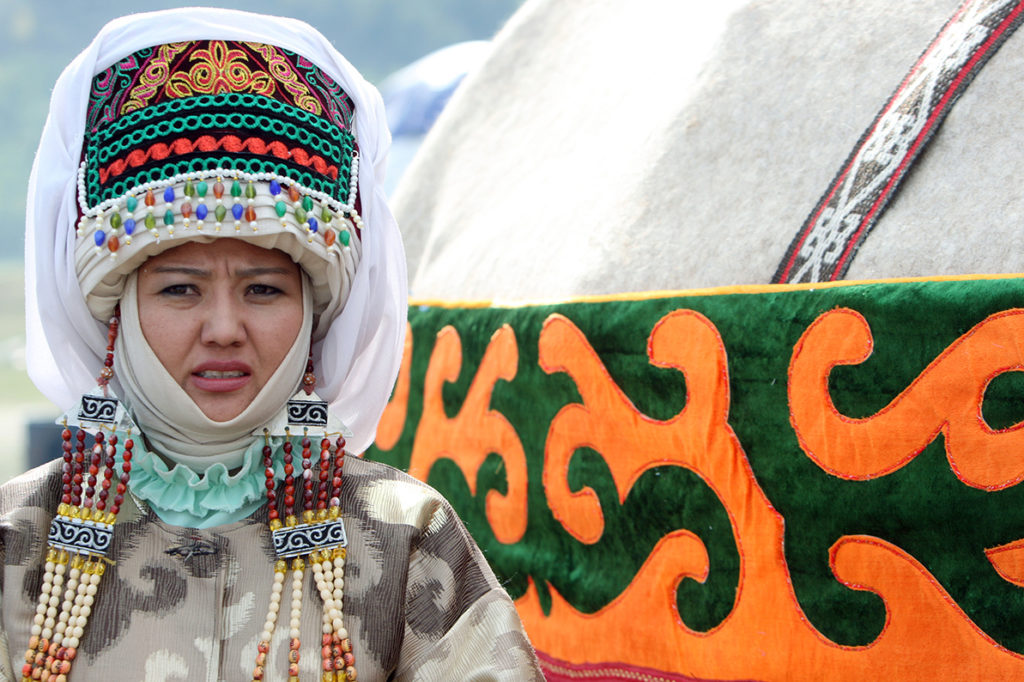
Being born a girl continues to be a considerable risk factor in many geographical regions, and Central Asia is one of the case examples where violence committed against women and girls is high. According to the latest data of OECD, 14 to 59% of women in Central Asia are subjected to beatings, sexually abused or otherwise ill-treated, given the region’s existing traditionalism, socio-cultural factors and religious beliefs.
Historically, women have played a subordinate role to men in Central Asian societies. The daughters-in-law (“kelin”, “gelin”) were openly neglected in their husbands’ families, in addition, bride kidnapping (“kyz alyp қashu”, “ala kachuu”), arranged and early marriages were widely practised and considered revered traditions in parts of Central Asia. Later, the socialist system doubled the burden on the shoulders of women. Even though being endowed with relative freedom and certain rights, along with housekeeping, women from Soviet Central Asia had to carry out social and industrial duties. Yet, given the formal Soviet privileges, the patriarchal structure ingrained in Central Asian societies was challenging to overcome and completely erase from the consciousness of traditional societies.
The 1990s independence of the Central Asian states did not improve the countries’ position in achieving gender equality and eliminating violence against women. All states still have a patriarchal social system with great respect for traditional and spiritual foundations, which in many respects still assigns a secondary role to women and does not allow them to control their own lives. In turn, religious overtones, to some extent, began to reap even more fuel on the fire, promptly shaking the position of women and girls. As a result, one may interpret traditions and customs differently, which can sometimes escalate into gender violence. Central Asian news feeds increasingly report domestic violence, bride kidnapping, “kelinism”, early marriages and other forms of abuse. Although, presumably, this is because people begin to speak more openly, pay more attention, and understand that such cases are not a manifestation of respect for traditions or religion but a violation of women’s rights.
For instance, Kyrgyzstan and Kazakhstan occupy some of the leading places in the practice of kidnapping girls for marriage. One of the most recent cases in Kyrgyzstan that strongly sparked civil society outcry was the bride-kidnapping of Aizada Kanatbekova. In April 2021, in Bishkek, a group of men abducted 26-year-old Kanatbekova. A local shepherd found the abducted woman’s and kidnapper’s bodies two days after in a car. The case caused a public resonance and outrageous protests with calls for layoffs and other official actions.
Likewise, arranged marriages are still not uncommon in Central Asian states. For instance, in Tajikistan, parents of young people can choose a spouse for their son or daughter. Sometimes it happens that families even forcibly marry their children without considering his/her opinion. Such marriages are nothing more than forced marriages, in which a forcedly married young woman may suffer more as a result of violence from her husband or his family.
Early marriage is another problem that violates the rights of underage girls and is closely related to the problems mentioned. Child marriage in Central Asian countries remains an acute problem, and girls from rural areas are the most vulnerable to cases of child marriage. They often get married directly after finalising or during high school, which negatively affects their education. These girls, as a rule, are forced to drop out of school, never having the opportunity to finish their education, and subsequently to have further career development.
All these forms of gender violence are intertwined, mutually causal and may, in some cases, bring on “kelinism” and domestic violence. A phenomenon of “kelinism” (new brides’ forced subservience to their mothers-in-law in their husbands’ households) exists in all Central Asian countries, which at worst is nothing more than slavery and institutionalised family violence. Such manifestation of “kelinism” can have tragic consequences. One of the striking examples took place in Kyrgyzstan in 2017: a young woman decapitated her mother-in-law after experiencing bullying and violence. Another example was the case of Mukhlisa Kadambaeva that has called attention to domestic violence in Uzbekistan. The young woman was found hanged after her parents said brutal abuse by her husband’s family.
Unfortunately, violence against women and girls in Central Asian countries seems to be normalised, often viewed as a private affair of each family, and rarely prosecuted. A survey in Uzbekistan found that only about 10% of male respondents did not object to domestic violence, arguing that husbands were justified using force if provoked by their spouses. While in Tajik society, 97% of men and 72% of women believe that a woman must endure domestic violence in order to preserve the family. Parenthetically, domestic violence in Tajikistan is still not criminalised and is at the drafting stage.
Conclusion
Polarised foundations still exist in Central Asian societies with a patriarchal and traditionalist orientation, prescribing an active role for a man and a passive position for a woman. This aspect is the first and foremost aspect affecting gender policy and the regulation of gender-based violence in these states. The ideas of gender equality and non-discrimination are yet far from being deeply embedded in Central Asia’s public consciousness and culture. As long as women are seen as belonging to men and not as individuals with equal rights, as long as forms of violence against women are justified by traditions and customs, Central Asian societies have a long way to eradicate violence against women and fully respect women’s rights.
Asylai Akisheva
PhD Candidate – Public Intl Law
Law School
Koç University

The night passed and dawn arrived. As usual, I left home at 8 o’clock in the morning to go to the office. I got to my office, and everyone there was astounded by the Taliban’s progress.
It was clear from the faces of my colleagues that something was wrong. Everyone felt that something big was going to happen. It was like the approaching storm before the flood. That morning we held a news-conference as usual. Our head of department told us that in the future we should come to work with traditional clothes (the same clothes that were common under the Taliban`s watch).
There were reports of the fall of Kabul’s neighbouring provinces being heard with little or no conflict. The Taliban were advancing quickly towards Kabul. At around 12 noon on the same day, news showed that the Taliban reached the gates of Kabul. And after 20 years, the Taliban returned to Kabul. Everyone was worried about what was happening before our eyes. Everyone was afraid of a prolonged war with the accompanying destruction. There was a scramble by government officials trying urgently to get back to their homes.
The people of Kabul were in a hurry – everyone was panicking and trying to get to safety. The commotion continued until the end of the day but no one really knew what was happening. The only thing that was clear was that the Taliban really had reached the capital of Afghanistan. Efforts to temper the panic and potential for bloodshed were launched by Afghan allies and some government officials. At 6 pm it was announced through various media and sources that the president had escaped. These were the moments when Afghanistan was suddenly thrust in a power vacuum.
The Taliban reached the centre of the capital overnight. People were still asking themselves one question, however. How can it happen that Afghanistan, with all its facilities and comprehensive global support, is falling to the Taliban? After twenty years of immense presence and support of the United States and with a large well-equipped army, including tanks and aircraft, Afghanistan fell in less than a month. The United States had spent billions of dollars on equipping and training Afghan forces since 2001.
It was believed that the government had the capability to prepare one hundred and eighty thousand soldiers for military operations. Given this, how did the country fall so quickly and without even a whimper? The answer to this question, unfortunately, has various aspects.
1. The government was surprised by and overly hopeful for the Doha peace talks.
The government did not want to disrupt the Doha process by launching large-scale military operations against the Taliban, and relied more on a defensive strategy. However, the Taliban used the opposite approach – a stronger side will get more points in negotiations – so they tried hard to take control of several provinces in order to appear to have more strength in the negotiations.
2. Unprofessional appointments, especially in military positions in the name of rejuvenating government institutions.
The government made appointments and appointed people to military positions who had no experience of war and did not know the geography or politics of Afghanistan. This only served to aid the deterioration of the situation, and caused the security forces to lose their morale easily while the Taliban’s morale grew stronger day by day.
3. Corruption
Corruption was another key factor in the fall of Afghanistan. Over the 20 years of the Comprehensive Global Conference, billions of dollars were donated to Afghanistan. Unfortunately, much of it was not distributed in the right places. The former finance minister has now revealed that most of these forces were imaginary and high-ranking government officials pocketed these imaginary soldiers’ salaries. In twenty years there were of course achievements in terms of the development of the media, women’s rights and education, but these could have been even greater. Corruption has undoubtedly harmed the people of both Afghanistan and the United States.
And now, spontaneously with the withdrawal of the Americans, people are becoming disappointed with all their achievements in the fields of education, human rights and freedom of speech. Worse still, all people are afraid that the Taliban will accuse and seek retribution against people that co-operated with the former government and foreign forces. Life in Afghanistan remains fuelled by and filled with fear.
FAST FACTS: People killed during the Taliban seizure of Afghanistan
American soldiers – 2,448
NATO soldiers – 1,144
Afghan soldiers – 66,000
Afghan civilians – 47,245
People killed by Taliban and other groups – 51,191
Assistants – 444
News Reporters – 72
(Source unknown)
by Rustam Betanai
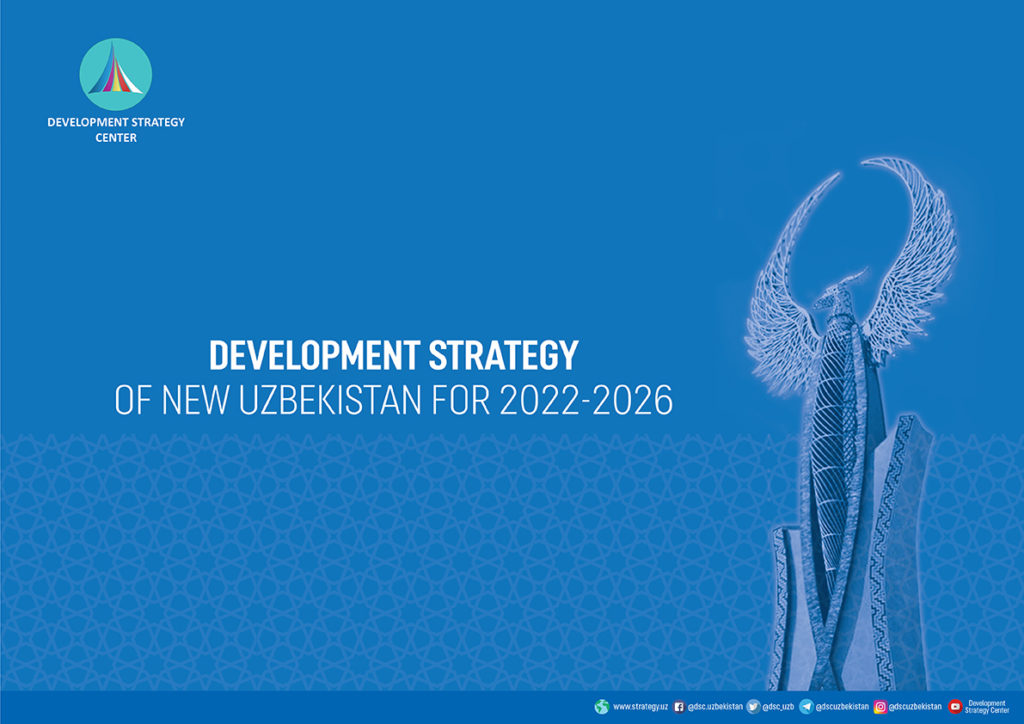
After broad public discussions, Uzbekistan has adopted its five-year Development Strategy for 2022-2026. It consists of seven priority directions and one hundred goals Uzbekistan is willing to achieve within five years. This strategic document will serve Uzbekistan as a baseline for further reforms in all spheres.
The Strategy foresees the implementation of various measures that should create the basis for joining a number of “states with the above-average income”.
The country has identified target goals in concrete numbers and introduced the mechanisms of reaching those goals. Further economic liberalisation, privatisation in most spheres, competition, elimination of monopolisation, the attraction of more foreign investment, price stabilisation, support of the development of “driver spheres of the economy,” and decentralisation that gives more authority to the regions are among many other priorities identified in the Development Strategy for 2022-2026.
For instance, a target goal for the country is a 1.6-times increase in GDP per capita in the next five years and for per capita income to reach $4,000 by 2030 by ensuring stable high growth rates in all sectors of the economy, including energy, industry, machinery, mining, agriculture and others. Another important aim is to ensure macroeconomic stability and gradually reduce the annual inflation rate to 5 per cent by 2023. This year, the state intends to decrease the inflation rate to no more than 9 per cent.
Looking at the proposed industrial policy reforms outlined, one can see that the country will continue ensuring the stability of the national economy and increasing the share of industry in the GDP by increasing the volume of industrial production by 40 per cent. For that, priority areas have been identified, and each consists of its own target numbers. These goals include implementing large investment projects in metallurgy, such as an increase in the production volumes of gold by 26 per cent and silver by 42 per cent, and a 2-fold increase in copper and ferrous metal products. Production in the chemical industry will be worth $2 billion by developing the chemical and gas chemical industries and bringing the level of natural gas processing from 8 to 20 per cent. Additionally, the plan calls for double the production of building materials, growth in the leather and footwear industry by over 3 times its current size, a similar increase in pharmaceutical industry products, and furniture products growing by 2.8 times.
All of these plans require an uninterrupted supply of electricity to the economy. Therefore, in addition to other planned measures, the active introduction of green technologies in all areas, an increase in energy efficiency by 20 per cent, and a reduction in emissions of harmful gases into the atmosphere by 10 per cent are proposed. For example, by 2026, there is a planned increase in electricity production by an additional 40 billion kW/h, bringing the total to 110 billion kW/h. Furthermore, the government intends to save about 3 billion cubic meters of natural gas by bringing the share of renewable energy sources up to 25 per cent of energy production by 2026. In conjunction with this, reducing the emission of harmful gases into the atmosphere to the tune of 8 million tons is also a priority.
Another important goal is the transformation of the digital economy into a core “driver” sphere of the economy. Implementing work aimed at increasing the digital economy’s volume by at least 2.5 times is also a goal to strengthen the country’s potential in this new sphere.
Planned reforms need a constant flow of investments that require an appropriate investment environment and the rule of law. Accordingly, taking measures to attract the necessary $120 billion over the next five years, including foreign investment of $70 billion, is another crucial goal for the government to realise. Moreover, the country is planning to reform its capital markets. Thus, it is planning to increase financial resources in the economy by bringing the capital market volume from $200 million to $7 billion over the next five years.
Completion of the transformation of the banking system, bringing the share of banking assets of private banks from 20 to 60 per cent in 2025, in general, is a goal to reform the banking sector and increase the affordability of decent banking services.
Uzbekistan plans to increase the Republic’s exports by 2026 to $30 billion to maintain sustainable economic development. Hence, bringing the share of the private sector in exports to 60 per cent is a priority. Accordingly, by improving the system of providing organisational and financial assistance to exporting enterprises, the country is willing to increase the current number of exporting enterprises from 6,500 to 15,000. Expanding the geography of exports of goods from 115 to 150 countries is also expected.
To further support entrepreneurship, the government plans to reduce the tax burden on business entities by 2026 from 27.5 per cent to 25 per cent of GDP and decrease VAT from 15 to 12 per cent, as well as reducing profit tax for telecommunications, banking and finance sectors from 20 per cent to 15 per cent.
The government is planning to increase the economic potential of the regions by carrying out decentralisation reforms to support the development of the districts further. Keeping in mind that agriculture reserves a high volume in the state’s GDP, the annual growth rate of agriculture is expected to be at least 5 per cent, which should lead to the increase of farmers’ incomes by at least two times. Furthermore, Uzbekistan plans to implement a more differentiated approach in developing districts and communities. As such, depending on the main specialisations of communities, be it different types of farming, textile or other, government plans further support those driver areas in that community, addressing the peculiarities of each specific community separately.
Acceleration of the processes of Uzbekistan’s accession to the WTO is also among the priorities of the Development Strategy of Uzbekistan. In the meantime, the expansion of exports of finished products to European countries within the framework of the GSP + system will remain a priority.
Uzbekistan has identified several priorities for economic transformation in its Development Strategy 2022-2026. The realisation of all these measures requires high potential and substantial resources. As such, co-operation with its allies and integration into the world community have been prioritised in many of the goals set in the Strategy.
Eldor Tulyakov,
Executive Director at the Development Strategy Centre in Uzbekistan
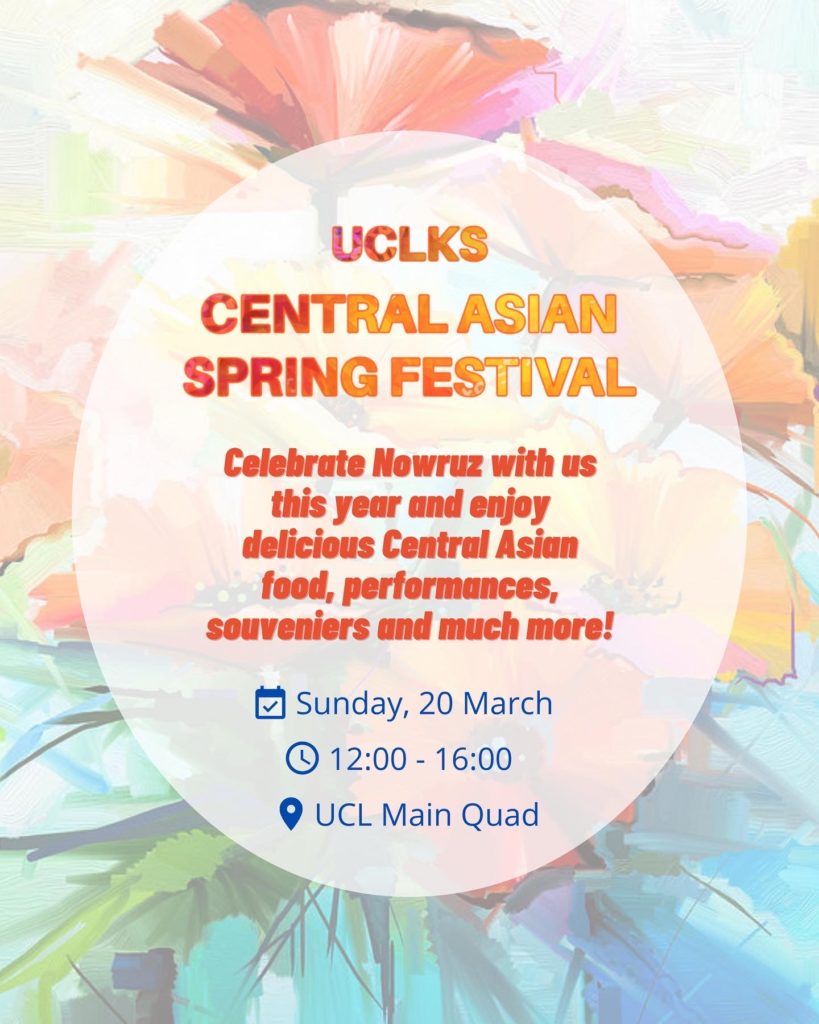
This years Central Asian Spring Festival will take place on Sunday, 20th of March, from 12:00 to 16:00, at UCL Main Campus! Nowruz is a Central Asian spring celebration, marking the beginning of a new year in the Persian calendar.
Many countries, such as,









and many more, celebrate this colourful and vibrant festival! So we invite you all to come and celebrate with us this year, with delicious Central Asian food, performances, souveniers and positivity. We are looking forward to creating unforgettable memories with you! Everyone is welcome, so invite all your friends and family and come to enjoy the festivities!
For all questions and enquiries, please feel free to contact us in DM, or by email, ucl.kazsociety@gmail.com
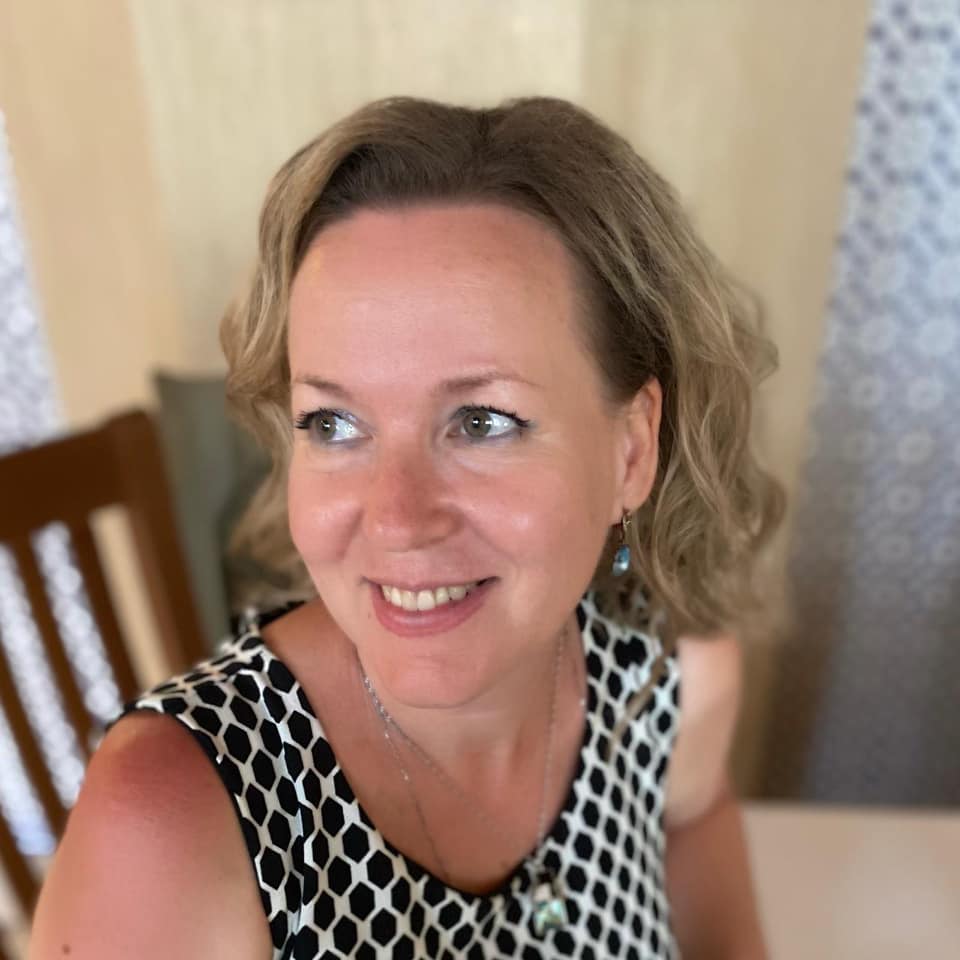
Oksana Zhukova is a multi-talented, multi-award-winning creative person who cannot but fail to impress you when you meet her. She is General Director of the ArtMedia production centre, a leading journalist, prose writer and public figure. She is a member of the ECG Advisory Council, academician of MARLI, winner of the ECG Film Festival in the Documentary nomination, winner of the Open Eurasian Literary Festival and Book Forum in London, and head of the public diplomacy projects “ArtMedia Tour: We are together” and “ArtMedia. We draw with a word”. OCA finds out more….
OCA Magazine: Oksana, tell us about yourself and your creative activity.
Oksana Zhukova: I consider myself a person of the world and an avid traveller. Creativity gives me the opportunity to fly, it inspires me. My favorite topic is people. My favorite planet, the one I name in my poems, is the planet of Love – Sunny Taurida, my homeland, its mountains, sea and pink lakes, and my favorite city is Evpatoria, where our art base “Pink Lake” is located near the Black Sea, where people often come to participate in our public diplomacy projects “ArtMedia Tour: We are together” and “ArtMedia. We draw with a word”.
By education I am a philologist, TV journalist and TV director. I have been a journalist for about thirty years, mostly working in television. I started as a correspondent for the Economic Review, I also was a production editor, a newscaster, a special correspondent for political programs, an author and a host of a program on culture and art. When I studied for two years at the preparatory courses at the Faculty of Journalism at Moscow State University, at the School of Junior correspondents and the Press Center section of the Minor Academy of Sciences, I published my own youth newspaper; since then I have been creating my own projects. Along with my work on television, my online magazine “Gallery of Stars” appeared, and then “ArtMedia. We draw with a word”. I wrote on social issues for newspapers and magazines, I was the head of press services. Now I continue to cooperate with the media and I run the ArtMedia production center, which has a wide range of activities, including the production of documentaries.
OCA: Your works made it to the finals of the competition in London “Open Eurasian Literary Festival and Book Forum” (OEBF) last year and won in one of the nominations. What is the story behind this?
OZ: I got to the final of the OEBF competition in three nominations “Prose”, “Small prose” and “Poetry”, with the novel “At the Height”, the story “The Karadag Monster” and a series of my poems “Poetic Illustrations”. I began to write poems for photographs and paintings when I hosted an author’s program on television, fifteen years ago. I create poetic illustrations for my own paintings and for the paintings of my artist friends from different countries of the world. I wrote one of the first illustrations in verse for Inna Aslanova, a member of the Eurasian Creative Guild (London), and now I am writing a book together with Tommy Barr, a representative of the Royal Society of Arts (Great Britain). All prose works are based on my work on television, in newspapers and magazines.
The story “The Karadag Monster”, which describes a sharp social topic was published in the Literary portal “East-West”, and on the official channel of the ArtMedia production centre you can find a poetic TV report from Pink Lake to the paintings of artists – participants in our public diplomacy projects, authors of our informational, literary and artistic platforms “ArtMedia”.
I have long wanted to write a story about a real man of our time. I have been working in journalism for about thirty years and I interviewed many prominent people from different parts of the world, but I wanted to show the beauty of the soul of the wonderful representatives of my beloved peninsula and demonstrate to the whole world the beauty of my native Taurida. I tried to combine all this in a book about a unique woman who saved others, forgetting about herself. She became an example of fortitude not only for me, but also for many others, being the only woman in the world who conquered all the seven-thousanders of Eurasia three times and she is Elvira Timofeevna Nasonova. Elvira Timofeevna was eighty last year. To commemorate this date, I presented her with the first prize named after my mother Raisa Gorbunova (for many years of saving people) and dedicated to Elvira Timofeevna the story of a real person of our time “At the Height”. We met ten years ago, during the period when I was doing interviews with famous people. It was a period of creative crisis, I could not work, because I experienced a personal tragedy, my mother died that year. The last exclusive interview was then recorded with Robertino Loretti, there was no strength and desire to continue the project. Just at that moment Elvira Timofeevna’s sponsor offered me to do an exclusive interview with her. The story is based on this exclusive, but at the same time there are many lyrical digressions and landscape sketches of my native peninsula.
OCA: Did the documentary film, based on your story win at the London Film Festival?
OZ: Yes, exactly, based on the story “At the Height”, a documentary film in English “The Way to the Heights” was created with the personal savings and resources of the team of our production centre “ArtMedia”. The goal was the same, the creative team of the production center wanted people not only in the East, but also in the West to know more about our Taurida, its magnificent nature and heroic people. “The Way to the Heights” won and was shown in a cinema in central London. Now our production centre “ArtMedia” is working on the Russian version of the film.
During the filming, Elvira Timofeevna proved to be a real hero. Being eighty years of age, neither a sore leg nor violent protests prevented her from conquering the next peak. I am grateful to fate that she gave me a meeting with this unique woman, who became an example of fortitude for me, she reached incredible heights, despite numerous injuries, physical and mental. We plan to publish the story “At the Height” in Russian and English, and with the film we will participate in other international film festivals, so it is not in the public domain yet.
OCA: What personal creative projects are you planning?
OZ: After winning a literary competition and a film festival in London, I was elected to the jury of the film festival, an ambassador and a member of the Advisory Council of the Eurasian Creative Guild (London) and the chairman of the expert council on journalism. This is very honorable. I think this public work will take a lot of time, now the members of the Executive Committee and I have developed a marathon of mini-competitions in the genres of journalism, on a given topic, which is designed to unite us even more, so not only journalists and publicists can take part in it.
In the coming year, my personal creative plans include to complete our project with an artist from the UK, a member of the Royal Society of Arts, Tommy Barr and make a video presentation, to film a short film-announcement of my “Pink Lake Tales” (I write them in verse and prose), separately for adults and children and to develop our joint “fairy tale” project with Aldona Grupas, who wrote a fairy tale about our art trip around England and my visit to London and called it “Princess of the Pink Lake”. In addition, I plan to continue filming TV reports that combine journalism and poetry for my cycle “Poetic Illustrations” for paintings by contemporary artists. But the main project is the collection “I Can Fly”. Since childhood, we have been carrying a load of resentment, pain, disappointment, envy, jealousy behind our backs, which does not allow us to fly high, gain wings, believe in ourselves and share a piece of our soul with people around us, take off and soar freely in harmony with ourselves and the world. This collection will include my lyrical-philosophical, portrait and social essays, stories, novels “The Dream of the TV presenter” and “Lepa”, separate chapters from the “Tales of the Pink Lake” for adults, poems from the “Poetic Illustrations”.
OCA: You devote a lot of time to social activities, tell us about your projects in this direction?
OZ: Friendship between peoples, cooperation through culture and art for the sake of world peace, for some people these might be just big words and hackneyed grandiloquent phrases, but for me it is the embodiment of a bright childhood dream of preserving fragile peace on Earth. My dear grandfather, Fedya, told me about the horrors of the Great Patriotic War. My mother often told me about her childhood, destroyed by the war, full of hardships and troubles. Her father, my grandfather Yakov, died in 1945, just a month before the Great Victory, and my grandmother had to raise seven children alone. My mother often said: “We will be able to overcome everything, if only there was no war, if only people would not kill each other.” In my early childhood, I dreamed of becoming a cosmonaut, and in my teens, I wanted to become a messenger of peace, like Samantha Smith or Katya Lycheva. I became a TV journalist and, thanks to my beloved work, I managed to organise international projects, bringing together creative people from around the world. Our virtual public diplomacy project “ArtMedia. We draw with a word” celebrates its anniversary. Ten years ago we published the first article by a foreign journalist, the same year as the public diplomacy project “ArtMedia Tour: We are together”. The authors of the Internet portal “ArtMedia. We draw with a word” invite to the peninsula the heroes of their publications — well-known figures of art and culture, and we hold creative meetings in different cities of the peninsula, presenting the work of our and foreign journalists, writers, poets, actors, musicians and artists on the same platform, or vice versa, we demonstrate creativity of our authors, going abroad. The tenth anniversary of the public diplomacy project “ArtMedia Tour: “We are together” was celebrated not only on the peninsula, but also far beyond its borders. Anniversary creative meetings started in Yevpatoriya in early spring and ended on the eve of the Old New Year.Despite the pandemic, Tauris was represented in the works of the project participants, including abroad. This year the project was attended by artists, journalists, poets, prose writers, actors, singer-songwriters and musicians from the UK, the Netherlands, Italy and Germany.
The anniversary year for our team also coincided with my personal anniversary and with the anniversary of the main person in my life, my good wizard – Son. With his unique abilities that he showed in early childhood, he inspires me to all victories and achievements. I have been learning from him all my life and striving to become better.
In the year 2022, I want to wish us all health, kindness and light, a flight of inspiration and new tops in creativity, but most of all – peace! Peace in the world and in our souls.
On the 10th of December Crocus City Hall hosted the first All-Russian educational “Reputation” business-forum. 35 speakers, 10 panel discussions, thousands of spectators, dozens of discussion topics and the forum has become one of the largest events of the year in the field of business education.
The Reputation Forum became the basis for the formation of a new business environment and unique networking in Russia. For the first time, an event of this format was organised with the support of the Ministry of Culture of the Russian Federation.
“Hosting the first forum is not easy. First, it has to earn a good reputation. I am sure that the project will become more effective year by year and international speakers might join it. I would like to thank everyone who took part and supported Reputation at the most difficult first stage”, said Emin Agalarov, First Vice-president of Crocus Group, co-founder of the Reputation project, President of Zhara media holding.
“Our goal is to give young entrepreneurs a certain vector, to show in which direction they should develop. We will continue to choose the most interesting opinion leaders to spread their knowledge to the audience and to motivate it for development”, said Andrey Burgart, co-founder of the Reputation project, co-founder of the RRCC business club, head of Crocus Media.
“Reputation will become a large-scale educational platform and a global business alliance. Today we have launched a large project and in a few years it wll become more popular”, promises Anna Russka, co-founder of the Reputation project, founder of ANNARUSSKA Group.
The forum was attended by the outstanding experts from business, science, education and culture spheres. The speakers held a series of panel discussions, where they discussed current topics, shared their experience and presented their forecasts for the future.
Among the audience of the forum were thousands of students who were provided with free tickets.
The event was closed with an authentic dinner at Nobu Crocus City restaurant, where singer Manizha performed in front of the guests.
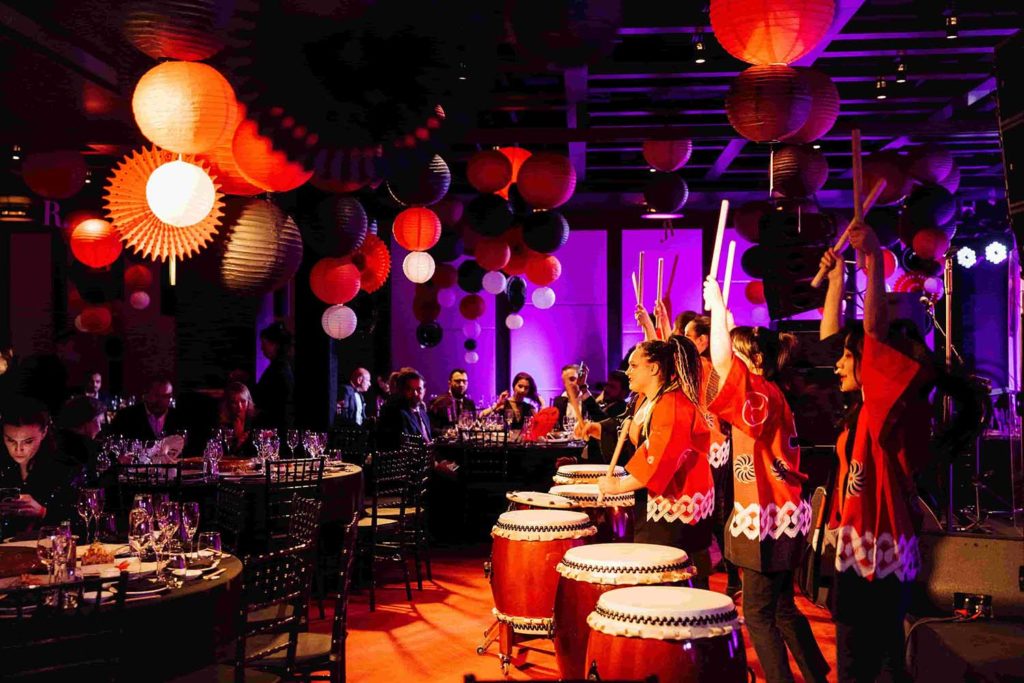
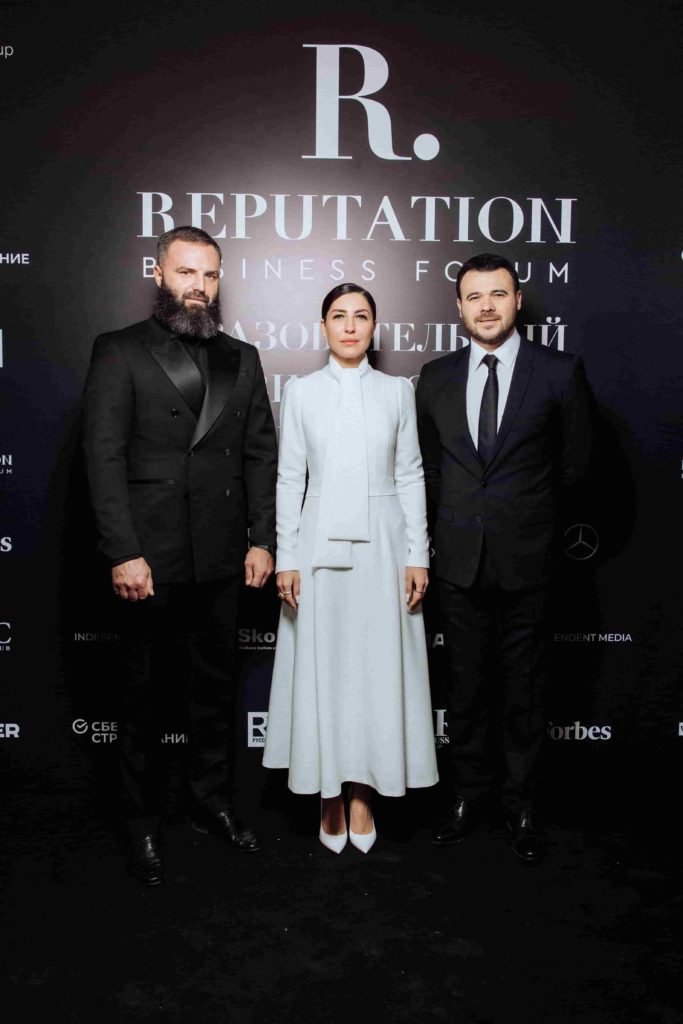
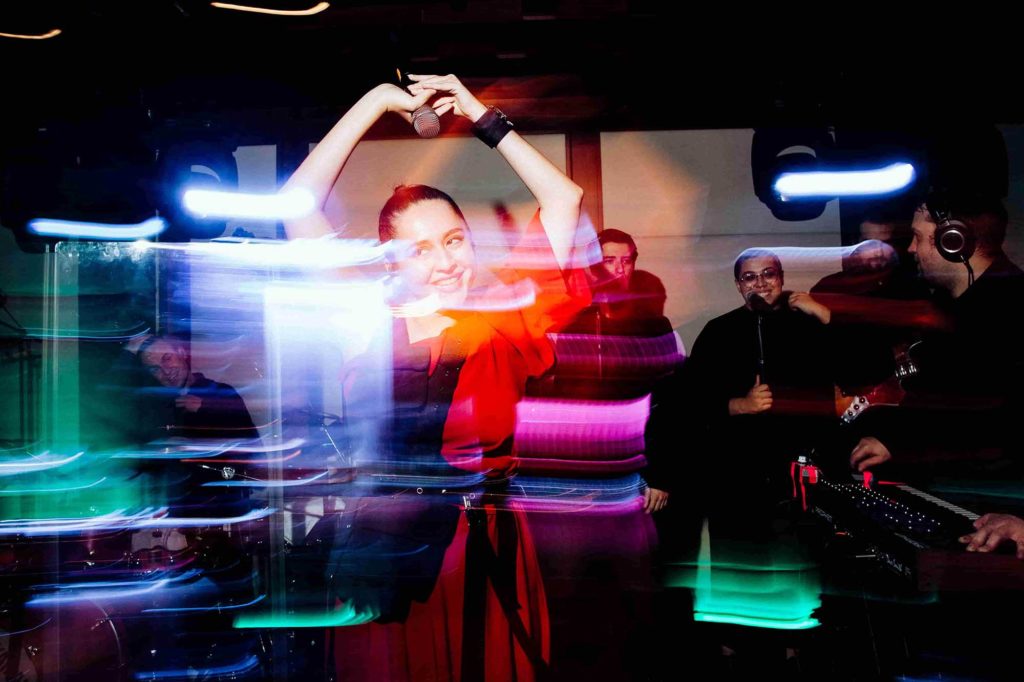
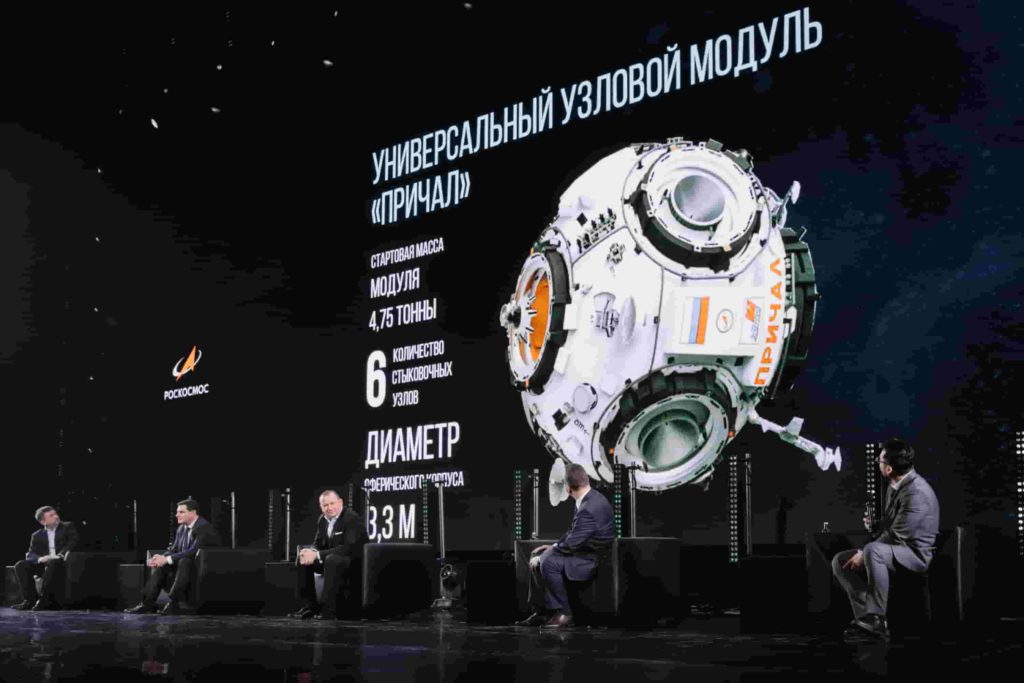
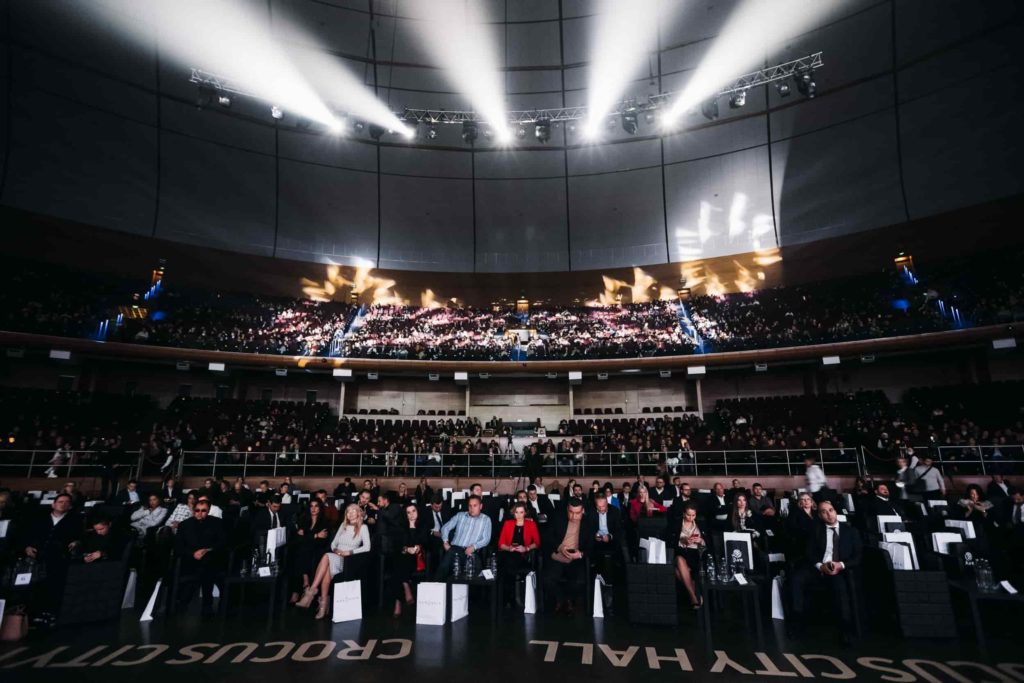
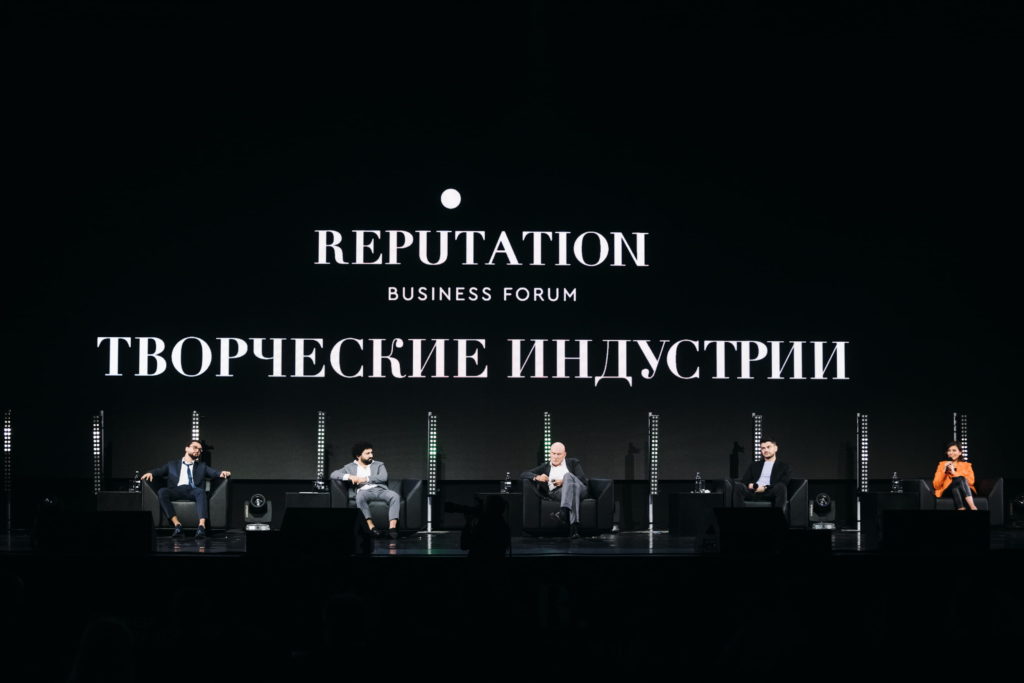
The new educational business platform “Reputation” will start on the 10th of December at Crocus City Hall
Speakers: Araz Agalarov, Emin Agalarov, Arkady Dvorkovich, Dmitry Rogozin, Viktor Vekselberg, Arkady Novikov, Irina Viner-Usmanova, Mikhail Kusnirovich, Pashu, Valery Meladze, Bakhtiyar Aliev (Bahh Tee), Elmar Murtazaev Aiselle Trudenikov, , Marina Zhigalova, Irek Fayzullin, Dmitry Grishin, Alexander Yakhnich, Ernesto Ferlengi, Khaled Jamil, Dmitry Sergeev, Vitaly Ezopov, Evgeny Demin, Ilya Alekseev, Evgenia Markova, Ekaterina Zinovieva, Tony Kouveni, Vladimir Pravdivy, Tatiana Gevorkyan, Natalya Timakova.
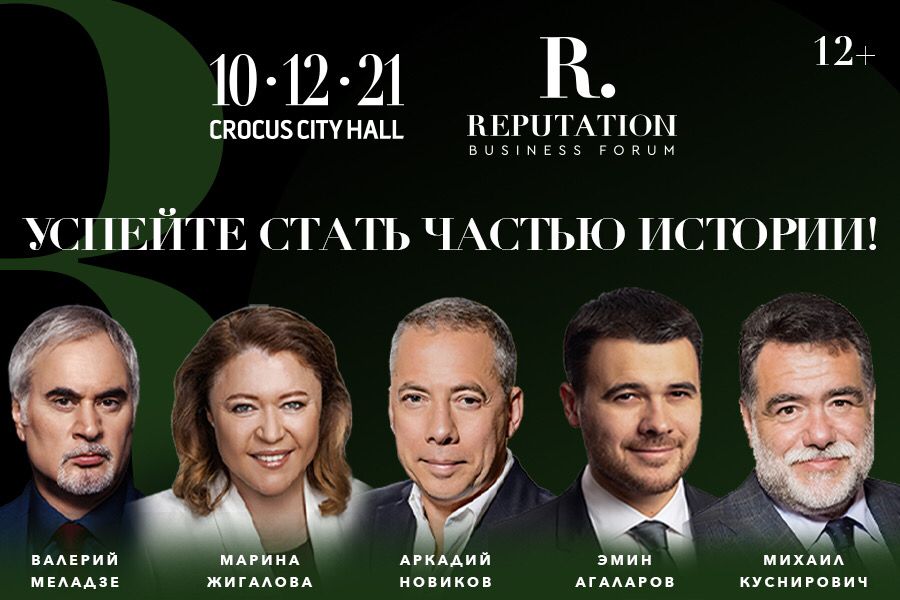
For the first time, the event will be held with the support of the Ministry of Culture of the Russian Federation.
Details on the website:
https://www.reputationbusinessforum.ru/#speakers
It is going to be exactly 30 years since the state entity called the USSR disappeared from the map of the world. What is interesting about that date? Because there were many historic turning points in this arena that could have thrown a vast area of 22.4 million square kilometers into chaos and affected the entire world.
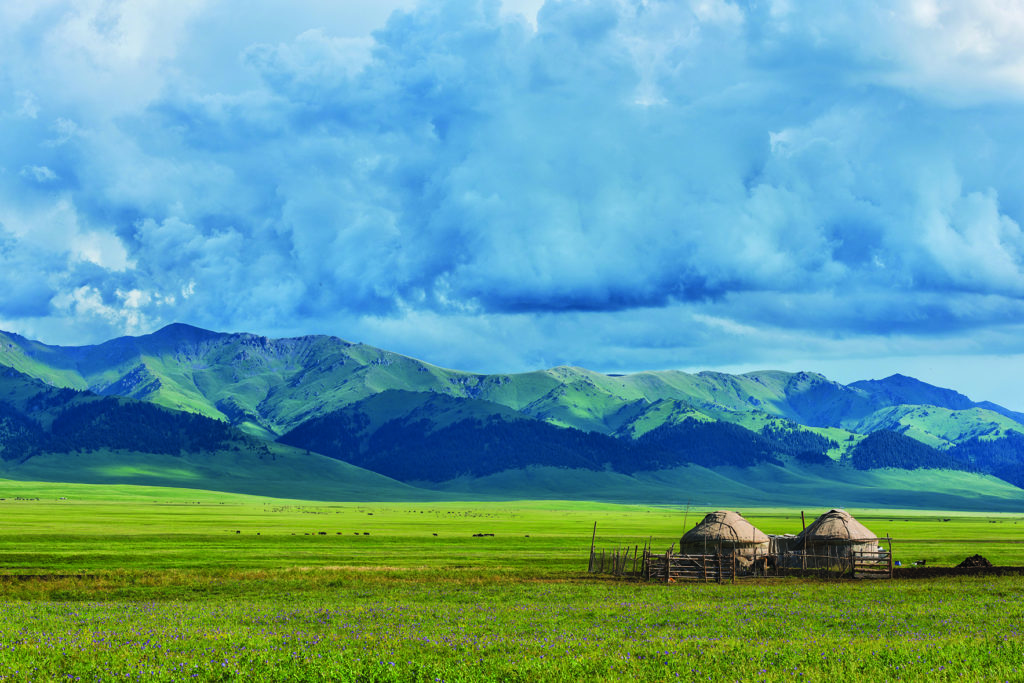
If anyone thinks that the collapse of the USSR was painful only for the former Soviet republics, they are deeply mistaken. In 1991, representatives of the US and many European powers were extremely concerned about the uncontrolled process of destabilization.
Yes, the fall of the iron curtain was welcomed and reassuring. It was an age of romance, a hope for a safer world. On the other hand, the fate of the nuclear weapons of the former superpower was not clear. In particular, besides Russia strategic missile units were based in Ukraine and Kazakhstan. There were more than 100 intercontinental ballistic missiles in the Kazakh steppes alone, as well as more than 1,000 nuclear warheads.
In the chaos of collapse, nuclear materials, which the Soviet Union was rich in, could have fallen into the hands of terrorists. Suffice it to recall how in 1994 at the Ulba plant in Kazakhstan a secret storage site was discovered, “forgotten” by Moscow, where 600 kilograms of highly enriched weapons-grade uranium was stored. International terrorists got wind of the discovery. The dangerous cargo had to be urgently exported as part of a secret «Sapphire» operation involving US and Kazakh special services.
Notably, the then President of Kazakhstan, Nursultan Nazarbayev, was offered billions of dollars to keep nuclear weapons, and the first ever Muslim nuclear power appeared on the world map. One day a flight from Libyan Jamahiriya leader Muammar Gaddafi arrived in Kazakhstan, packed to the brim with cash dollars to maintain the nuclear arsenal.
And what would have happened if the head of the young republic, Nursultan Nazarbayev, had been tempted by easy money to solve the severe socio-economic crisis in which his country found itself?
This was a decisive turning point. In the end, Kazakhstan opted for non-nuclear status. But before that, there were difficult negotiations that began in 1991. Secretary of State James Becker was involved on behalf of the United States. The United States aimed to resolve the issue with minimal financial losses to itself, while Nursultan Nazarbayev demanded legal security guarantees from the nuclear powers and closer economic cooperation.
As a result, Central Asia became a nuclear-weapon-free zone, and Kazakhstan became a leader in attracting foreign investment in Central Asia and one of the leaders of the anti-nuclear movement in the world.
The second crossroads, which could have turned history in a completely incomprehensible direction, relates to another equally important event in August 1991 – the coup d’état in Moscow. Representatives of the self-styled State Committee on the State of Emergency (SCSE), taking over power, locked the President of the USSR Gorbachev at his dacha. If regional elites had supported the putschists, the Soviet Union could have survived at its worst, with a backlash to repression and violent solutions to problems.
What about the elites? In some places, they supported the SCSE. Somewhere they took a wait-and-see position. For example, Ukraine, where Mikhail Gorbachev ended up under house arrest, did not show itself in any way.
Much attention was focused on Kazakhstan those days, as Nazarbayev’s figure was one of the political heavyweights on the political scene of the USSR – he was asked to head the Soviet Union government. Nazarbayev, by the way, turned out to be more courageous. He refused to impose a state of emergency and declared the actions of the SCSE unconstitutional. Moreover, when the putschists were about to attack the White House in Moscow, where Russian President Boris Yeltsin had taken refuge, it was the Kazakh leader who, through many negotiations and consultations, helped overcome the political crisis. In particular, the archives have preserved records of his telephone conversations with the Minister of Defense of the USSR Yazov, in which he reasoned with the combatant general who gave the order to bring tanks into Moscow. Yazov eventually listened and withdrew the troops, subsequently describing everything that happened a big stupidity.
The third crossroads threatened the collapse of the USSR according to the ‘Czechoslovak scenario’. Following the Belovezh agreements of 8 December 1991, a total crisis of governance emerged across a vast territory. The three Soviet republics – Russia, Ukraine and Belarus – effectively declared unilaterally that the Union of Soviet Socialist Republics had ceased to exist as a “subject of international law and geopolitical reality”.
This was at a time when negotiations were continuing to preserve the USSR in the form of a confederation that all Western countries supported for fear of the collapse of the colossus on clay feet that could trigger tectonic shifts around the world.
The West tried gently to put its long-standing opponent to the ground so as not to shake the nuclear arsenal when falling, as mentioned above. However, what happened that happened. This could have provoked and provoked in the future new conflicts already mired in the chaos of the USSR. By that time, Nagorno-Karabakh, as well as the entire Caucasus, Transnistria, tension was growing in Tajikistan, where a little later a civil war broke out.
The Slavic republics seemed to fend off the growing crisis by forming a triple union. The Turkic republics, in turn, spoke of the need to create their own union. New dividing lines were emerging on the map of Eurasia, which could provoke many new conflicts on national and religious grounds, turning a vast territory into a new source of global instability.
What stopped this process and gave the divorce of the former Soviet republics a civilized character? Nursultan Nazarbayev. He assembled the leaders of the former Soviet republics in the capital of Kazakhstan to form the Commonwealth of Independent States, which put a legitimate end to the collapse of the USSR this time.
Taking all the above into consideration, it is easy to conclude that it was the role of Kazakhstan’s leader that made the process of the collapse of the USSR more favorable for everyone both for world politics and for the populations of the former union member states. In addition, his further actions only strengthened the process. Kazakhstan has become an anchor of stability in Central Asia. It is the only country that has managed to resolve the border issue with all of its neighbors including the Caspian Sea which is rich in oil resources. Neither the Russian Empire in the 19th century nor the Soviet Union in the 20th could reach an agreement with China on the division of territory. Nursultan Nazarbayev could. But not through concessions, but through mutual compromises. Here is just one very eloquent figure: the area of Kazakhstan within the USSR was 2 million 717 square kilometers, the area of independent Kazakhstan today is 2 million 725 thousand square kilometers. As we can see, thanks to successful negotiations on the highest level and laborious work of diplomats, Kazakhstan has not only gained territory, but also solved the main destabilizing factor of modern times – the issue of unsettled borders.
From 11 to 13 October, the capital of Kazakhstan hosted an annual forum of photographers, which was attended by almost 50 photographers from the CIS countries.
Photography is one of the most exciting professions in the world. Today, the direction of photography has increased just like photographers themselves, for whom there are very few schools or universities teaching photography. Since 2012, the Kazakhstan Forum of Photographers has been helping budding photographers every year by teaching the correct technique for working with cameras, giving lectures on the selection of studio light, and also holding master classes to promote their work.
This year the Kazakhstan Forum of Photographers has risen to a higher level. Thanks to the organisers, who are themselves experienced photographers – Daniyar Shaimergenov, Andrey Kim, Saule Kemelova, the forum gathered about 50 photographers from different countries. The speakers were Konstantin Eremeev (Russia), Tim Osipov (Russia), Ksenia Zasetskaya (Russia), Ilya Dvoyakovsky (Ukraine), Arina Ratushnova (Kazakhstan), Aioni Haust (Kazakhstan), Andrey Kim (Kazakhstan), Evgeny Zadokhin (Belarus), Ablai Kairzhanov (Kazakhstan).
The general partner of the forum was Canon. Canon Consumer Sales and Marketing Director Igor Shchurov personally came from Russia and for the first time presented the flagship Canon EOS R3 camera in Kazakhstan, and the forum participants had a unique opportunity to test-drive this camera. According to Igor Shchurov, despite the fact that Canon has been on the market for almost 100 years, it is still famous for quality, thanks to the technologies and innovations that they use, and as the director of the department of consumer sales and marketing, he added that the preferences and demand of the audience are also important.
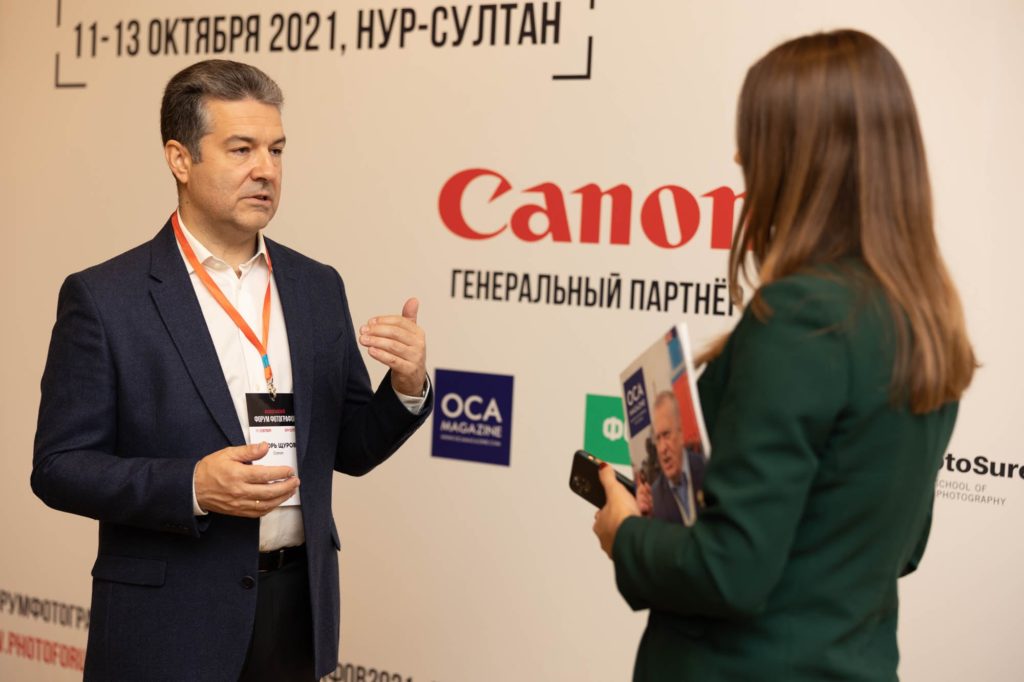
Also this year, the forum included nominations such as “Best Photographer” and “Best Photo”, whereas a prize was an impressive gift from the general partner.
Ospankhan Aubakirov became the “Photographer of the Year”, who received a certificate for the amount of 1,200,000 tenge from Canon as a prize. Diana Nazmutdinova became the winner in the “Photo of the Year” nomination, and also received a certificate from Canon for the amount of 1,200,000 tenge. Photographers who received second places were also awarded certificates worth 180,000 tenge.
The Kazakhstan Annual Forum of Photographers is undoubtedly one of the most important events for photographers. This is a place where both novice photographers and professionals communicate for acquaintance and exchange of experience. Event where you can listen to lectures from leading experts in the photography industry, watch workshops from top photographers, take part in master classes on studio lighting, photo processing and promotion of your own brand, as well as take part in outdoor photography to consolidate the material in practice.
The OCA Magazine team also was pleased to attend such an event.
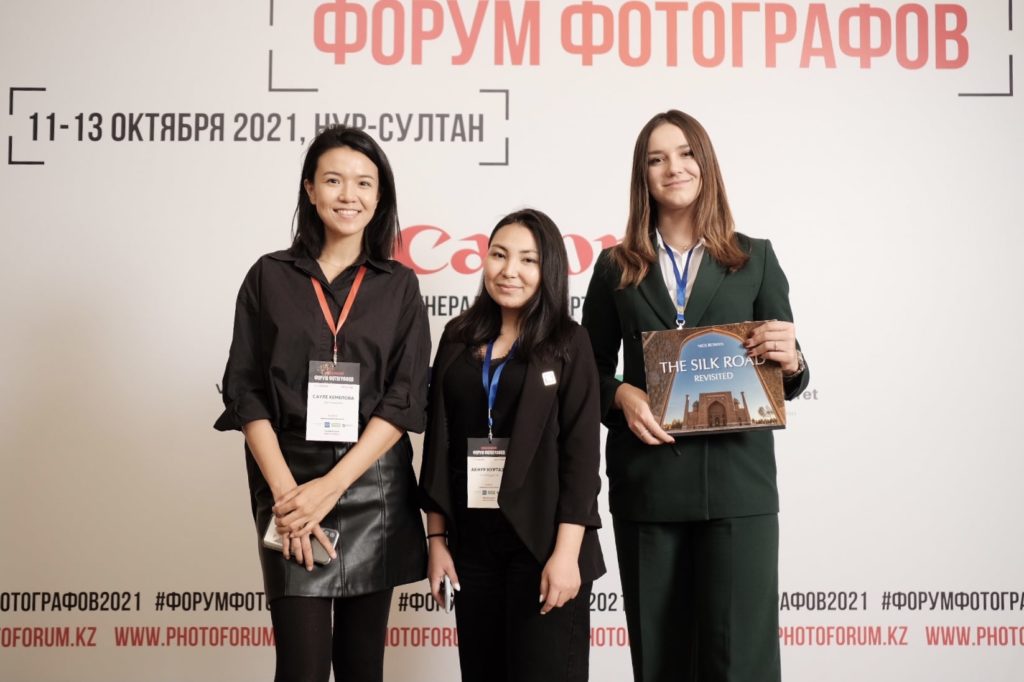
Interview: Yulia Gutkovich
OCA Magazine: Tell us, please, about yourself and your creative activity / work
Yulia Gutkovich: I am a lawyer, was born in Rostov-on-Don, Russia. When I was twenty-four-years old I moved to Israel, lived there for seven years and in 2011 moved to the UK where I live now.
I work as an immigration solicitor at Redfern Legal, a boutique London law firm located at Covent Garden. Writing stories and poetry is my hobby. Recently I started publishing my first book with my best short stories. My texts are fiction based on my experience as a long-lasting migrant, a forty-years old woman, a mother and now, also as a person, who lived in complete silence for ten months. The main character of my stories is a strong, hard-working woman, looking for her place under the sun.
OCA: How did you choose your path and who is your role model in the creative space of your art?
YG: I fell ill three years ago and lost all my hearing within three weeks. I did not know what to do and how to cope with living as a deaf person. I thought my life was over and then my wise mom told me: “If you cannot travel, write about your trips; if you cannot hear, tell people what you have already heard”. Following her advice, I started to publish short memories and jokes on Facebook. I did not expect people to enjoy reading them and ask me for more. Later, one night, I could not sleep. All of a sudden, a short fiction story crossed my mind: within an hour I wrote it down and put it on my Facebook page. It was my first short story “A Province Girl”. As my stories have become well-known not only among my friends, I received an offer to present them at my personal Zoom story-telling evening. That was my first experience: I read my own stories to the audience of sixty people, who purposefully gathered to listen to me. Following the successful concert, I repeated it several times.
The main choices in my life have been knowingly or unconsciously determined by my mother and uncle. It’s common in Russia to start planning your career at the age of fifteen or sixteen. I had two options in mind: to be an English teacher like my mom or a lawyer like my grandfather and uncle. The latter told me: “If you plan to live in Russia, go to Law School”. I was absolutely sure that I would never ever move abroad and chose that profession. Since then I have relocated twice and started a career as a lawyer from scratch three times. I have never planned to become a writer or an artist. On the other hand, I evidenced how my mother and uncle published their own books as a side-line of their main occupation. I believe both are my role models.
OCA: Which achievements of yours would you like to emphasize?
YG: Before my deafness, I sincerely assumed that my main accomplishments are three legal qualifications in Russia, Israel and the UK. After starting to cope with my disability, I have come to a conclusion that the main achievement of mine is the ability to laugh at myself. If you ask about formal certificates in the creative area, there are just several of them: I am a finalist of Pushkin in Britain poetry competition in 2019 and a finalist of ECG short prose competition in 2020 with my story “Showstopper”. Also I took part in several stand-up shows and organised my solo story-telling evenings.
OCA: Do you have any personal projects that you would like to talk about?
YG: I would like to translate my stories into English and publish my first book before my 42nd birthday.
OCA: When and where have you heard about ECG for the first time?
YG: In 2020 my good friend forwarded me a link to the ECD prose competition, and it was for the first time I learned about the guild.
OCA: Are there any new projects of ECG, in which you plan to participate?
YG: This year I would like to take part in the poetry competition. I faced a lot of changes in my life during the last months and this has led to a new wave of poems.
OCA: What would you wish for the members of the Guild and other creative people, just starting their career?
YG: I would wish them not to be afraid of being deaf to others’ opinions, believe in themselves and believe that their text or a piece of art will find their admirer.
The world of space of Armat Bektas is mostly linear, at the subconscious level he structures everything according to the principle of harmonizing reality of the surrounding world which is “nonlinear” that is to say unharmonized by consciousness.
The artist is absorbed by the idea of creating a new philosophy of the Great Steppe in art and creating another plastic language of expression in it. The idea was born on the basis of the study of Kazakh art, the work of P. Picasso, P. Klee and other masters of the avant-garde world.
Relying on all the artistic heritage of mankind and gazing intently at his own classical folk Kazakh art, Armat Bektas builds his “steppe philosophy”, the philosophy of linearity of its structure, which is dictated by a complex of reasons, including the space of the steppe itself. The steppe landscape is primarily flat and majestic, with rounded chains of hills and the shape of yurt along with the legacy of cult architecture blending seamlessly into them are the genetic codes of the environment. The artist interprets these phenomena in search of a new stylistic expression of his thought.
In the works of the master, there is almost meditative flexibility in the smoothness of flowing lines of movement of forms interpenetrating or intersecting from one direction to another but always striving for stability and inner integrity.
As a person who has long been looking for the foundations of spirituality in the modern globalized space, Armat Bektas takes seriously the idea of Jacques Attali (the French economist, banker, writer and politician, who describes the future as a nomadic world) about tolerance in matters of faith and religion. Bektas in his work tries to visualize the theory of Jacques Attali through the pictorial language.
He seeks to create an image of a single divine spirit, because he is convinced: God is one; he seeks to express the idea of a new synthesis of everything divine in the mind of humankind, but he perfectly understands that this is one of the most delicate strings of his soul and can in no way be imposed let alone infringed upon anyone’s interests.
By inventing a new language of expression, a new style in art; A. Bektas is not afraid to combine symbols of different confessional affiliation; since they were “born” from a once single source. Universal symbols and signs are the basis of all religious symbols, and their vertical structure is another return at a new stage and level of development to the once lost unity.
The predominantly vertical development of the elements of the cosmic structure of our universe is taken by the artist from the past cultural experience of mankind: the entire past history of its development sought to build the harmony of this world from the depths of the universe, the information field of which relied on the “divine vertical”.
“I seriously thought about these questions – demand of time, and energy along with potential are given to the artist for realisation of creative programmes originally bestowed by nature, and of course, the author’s personal position in the modern art world is mandatory“. Bektas believes that the time has come for a mind reboot, for a deep understanding of realities of our time and our own contribution to the general world art history.
To create a new style in art, the artist works at the Sal Seri Gallery, which is located in Nur-Sultan city, Kazakhstan.
A creative group of like-minded people was created to promote this idea including Nurai Medeuova, Arystan Smagulov and Armat Bektas. To implement its projects, the Sal Seri Gallery collaborates with the Eurasian Creative Guild, under the leadership of Marat Akhmedjanov, who organizes events dedicated to the development of art among young artists and writers in different countries.
Sal Seri Gallery expresses its deep gratitude to the Eurasian Creative Guild and looks forward to further fruitful cooperation!
Khalima Truspekova,
(an Art History PhD, Docent, Associate Professor at KazLAACE)
Asya Tsurkina,
(an Art-Manager of Sal Seri Art Gallery)